DURHAM ACADEMY

TALKING TECH Families and Educators Discuss Technology’s Impact on Adolescents
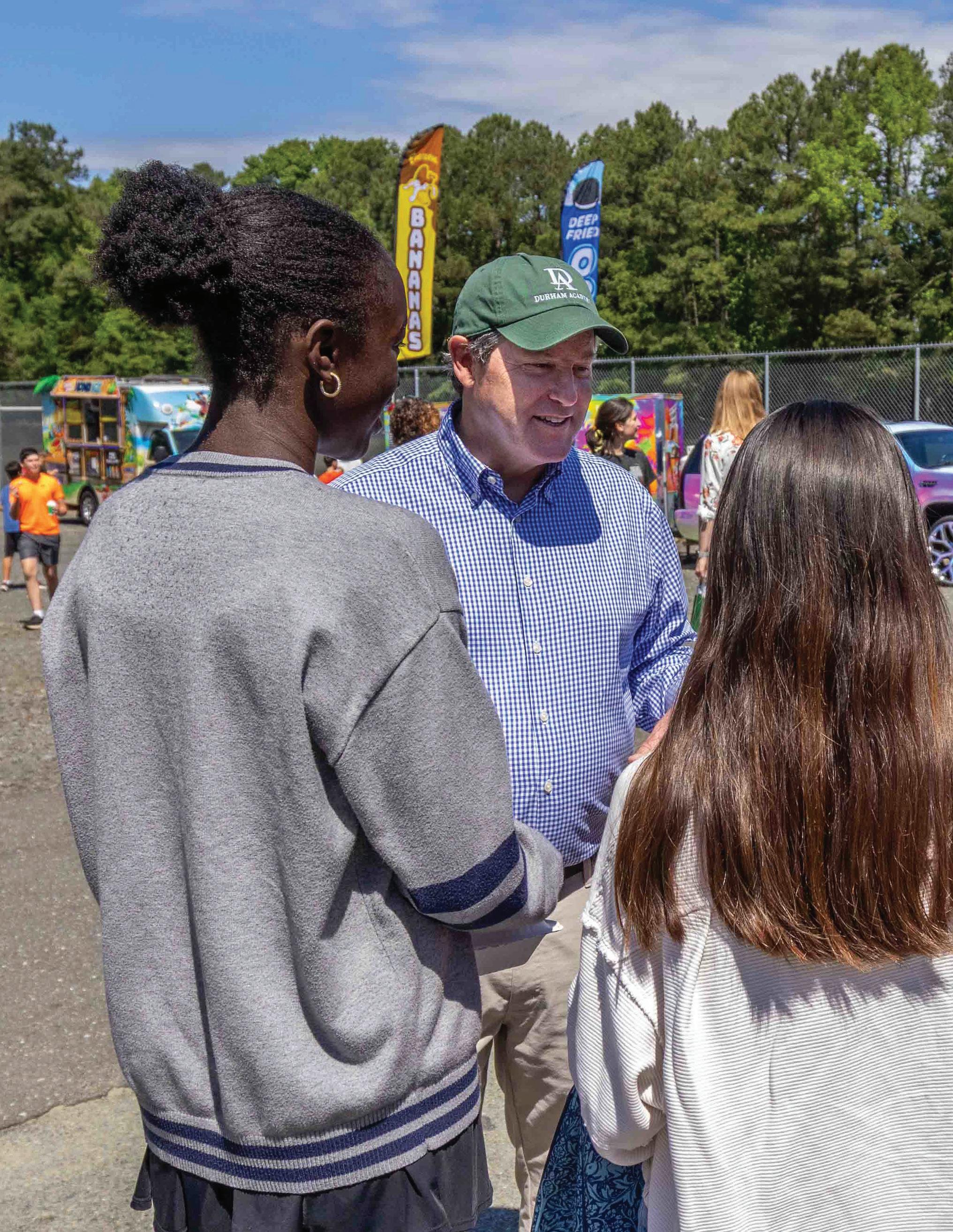


TALKING TECH Families and Educators Discuss Technology’s Impact on Adolescents

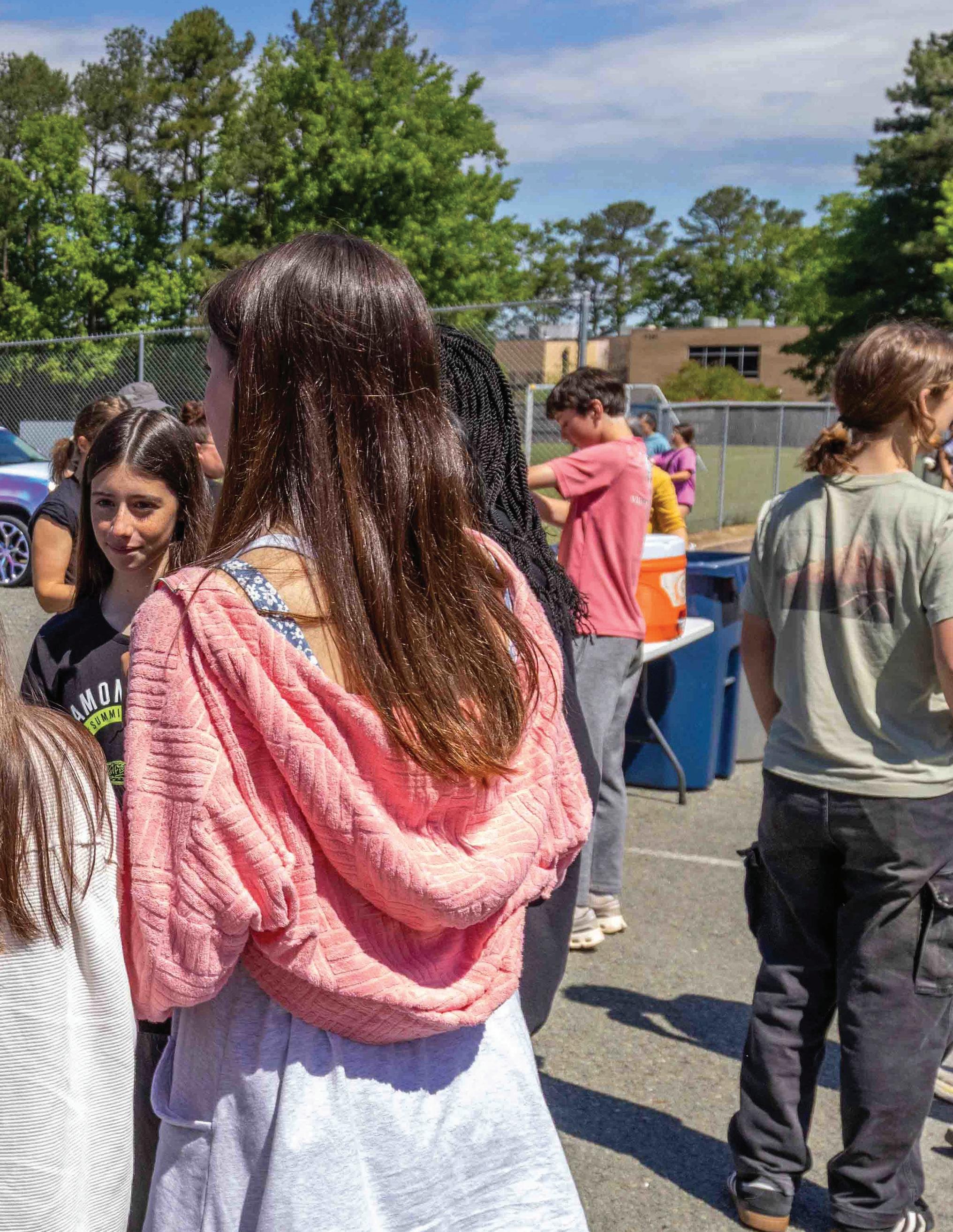
EDITORIAL
Melody Guyton Butts // Editor
Victoria Price // Art Director
MARKETING & COMMUNICATIONS communications@da.org
Leslie Traba // Director of Marketing & Communications
Kate Auger // Digital Content Specialist & Photographer
Melody Guyton Butts // Assistant Director of Marketing & Communications
Dylan Howlett // Writer & Content Strategist
Jesse Paddock // Videographer
Victoria Price // Creative Services Manager
CONTRIBUTING WRITERS
Jordan Adair, Former Upper School English and Art History Teacher; Katherine Lantzy ’21; Ben Michelman, Middle School Community Engagement Coordinator and Language Arts Teacher; Sarah Graham Motsinger ’00, Director of Philanthropy Operations and Stewardship; Rachel Pellom ’24
CONTRIBUTING PHOTOGRAPHERS
David Chandler, Upper School Fabrication Lab Technician and DARC SIDE Robotics Mentor; Tzu Chen; Andrés Galindo, Director of Diversity, Equity and Engagement; Tyrone Gould, Upper School Dean of Students and Teacher; Ryan Hunt; Sarwat Husain, Third Grade Teaching Assistant; Bob Karp; Kristen Klein, Associate Head of School; Libby Lang, Second Grade Teacher; Crawford Leavoy, Director of Speech and Debate; Nat LeDonne; Chip Lupa, Fourth Grade Teacher; Rachel Pellom ’24; Evan Pike Photography; Dr. Rob Policelli, Assistant Upper School Director for Academic Affairs; Kat Posada, Upper School English Teacher; Premier Lacrosse League; Kristen Randall; Karl Schaefer, Middle School STEAM by Design Lead Learner; Kim Walker; Bonnie Wang, Upper School Mandarin Chinese Teacher and Assistant Director of Diversity, Equity and Engagement
CONTRIBUTING ARTISTS
Graysen Black ’29; Addie King ’30; Maya Surakanti ’30; Michaela Warren ’29; Jade Zhang ’29
PRODUCTION
Performance Print Services // Printer
LEADERSHIP
Michael Ulku-Steiner // Head of School
Melissa Pfeil // Chair, Board of Trustees
David Peters ’13 // President, Alumni Board
PHILANTHROPY AND ALUMNI AFFAIRS
philanthropy@da.org
Chris Farr // Director of Philanthropy
Tim McKenna // Director of Alumni Philanthropy & Engagement
PICTURED HERE: In his 14 years at Durham Academy, Middle School Director
Jon Meredith has made an outsized impact — both on the Academy Road campus’ physical footprint and on the teaching and learning at its heart. Meredith (pictured here with students at a food truck rodeo) led a campus transformation resulting in state-of-the-art facilities purpose-built for adolescent learners. With students’ interests always at the center, he has led significant curricular and programmatic initiatives at the Middle School, including the transition to a competency-based curriculum. In Meredith’s next chapter, he will serve as head of school at Charleston Day School. We wish him well, with gratitude for the legacy he leaves at Durham Academy.
School Visual
24 At the Middle School, Every Day is Mundy Faculty Spotlight: Jason Mundy
26 Day by Day, a Greener DA
27 Class of 2025 Looks Back 34 From the Alumni Board
Homecoming 2025
37 Katherine the Great Alumni Spotlight: Katherine Lantzy ‘21
39 Garrett Road Rivalry
40 For Peat’s Sake Athletics Spotlight: Ali Laros ‘25 & Jenna Kim ‘27
42 A Decorated Year for DA Athletics
50 A Teacher’s Legacy Jordan Adair: Lunch and Lifelong Connections 52 Mischief Mike on Giving Day
58 A Gathering of Gratitude Celebrating the Legacy of Faculty Sabbaticals
60 Hitting the Right Notes, and Books Faculty Spotlight: Letizia Haynie
66 ‘When He Sees a Need, He Wants to Fill that Need’ Introducing DEE Director Andrés Galindo
68 Melissa Mack F. Robertson Hershey Distinguished Faculty Award
70 Minding the Gap: A Year of Expanding Horizons
74 Brooke Hartley Moy ’07 and Teresa & Steve Engebretsen are Honored with Alumni Awards
76 Faculty & Staff Farewells
77 Weddings & Babies
78 Alumni Board & New Trustees
Thanks to a new Upper School elective, DA students are learning the keys to leadership — and how to find their way out of deserts both figurative and literal.
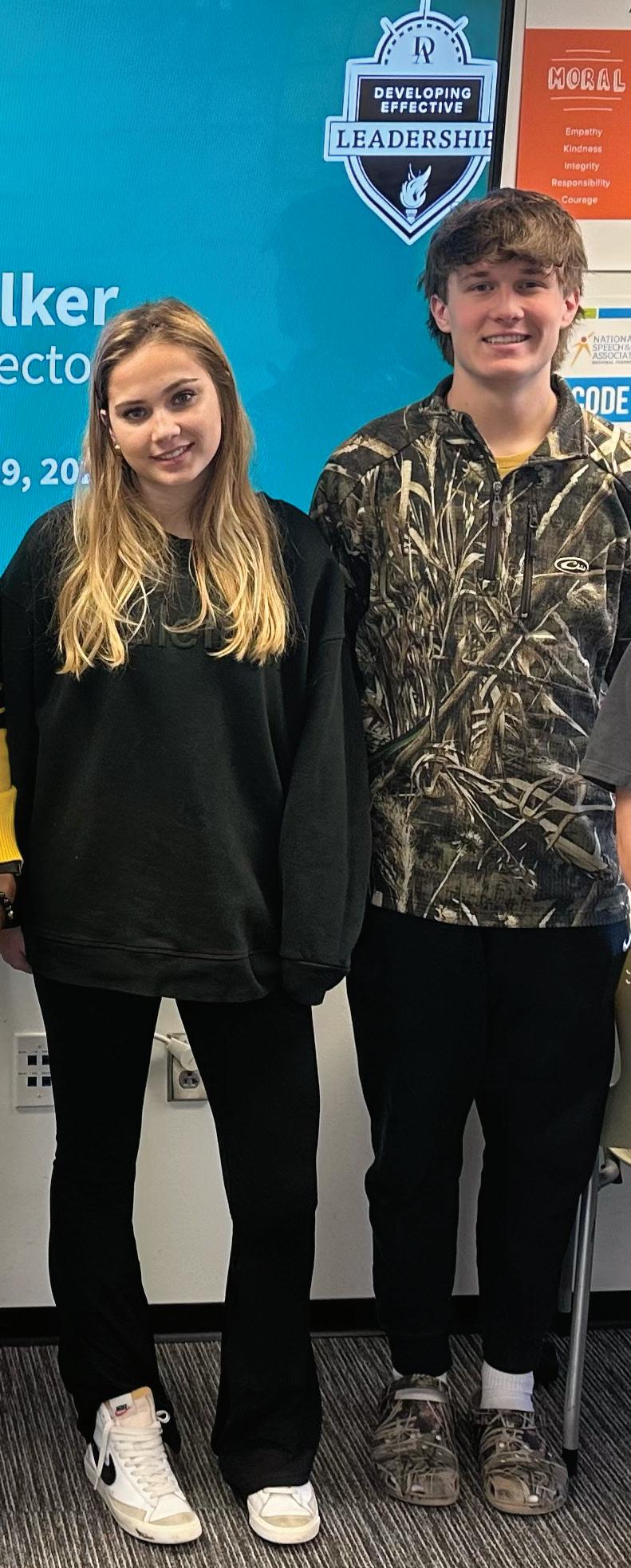
Yash Mehta ’28 was 7 when he saw students with visual impairment methodically punch braille dots. Less than a decade later, he developed a device to make that task easier.

Tyler Carpenter ’18 is an award-winning professional lacrosse player. Those who love him most say it’s because of his innate talent and peerless determination. He says it’s because of them.
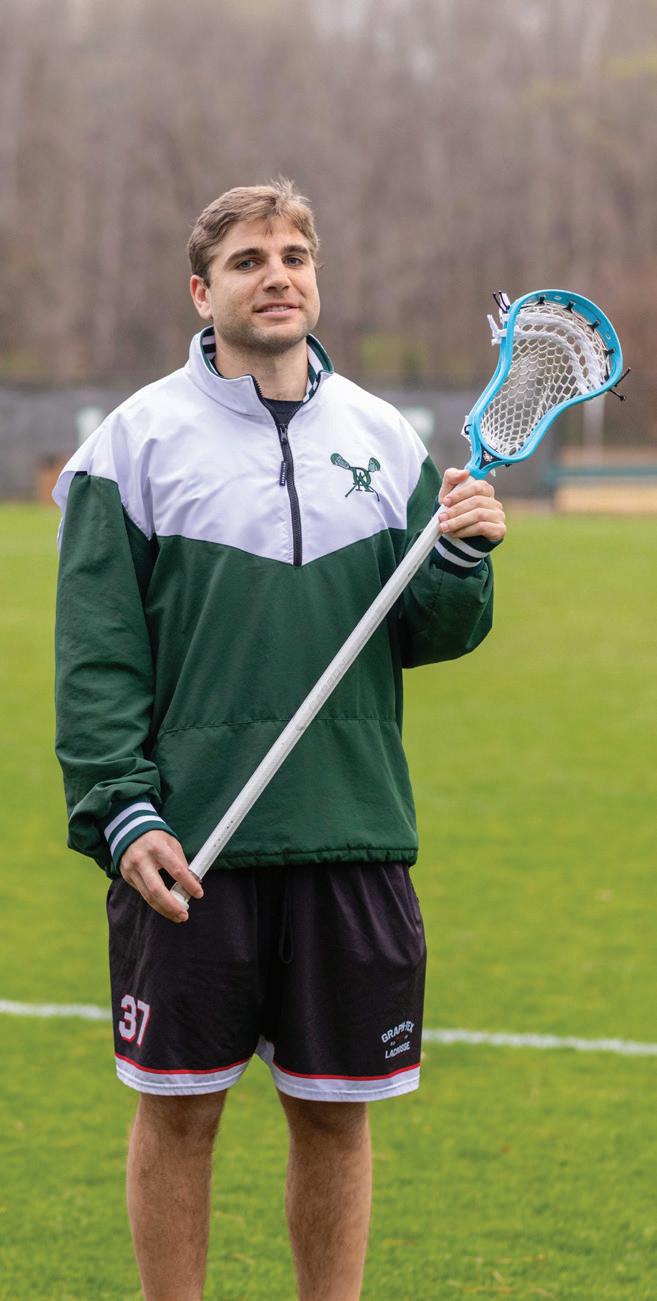
Every division’s a stage at DA. Take a frontrow seat at the Preschool, Lower School, Middle School and Upper School, where performers dazzled audiences throughout the school year.
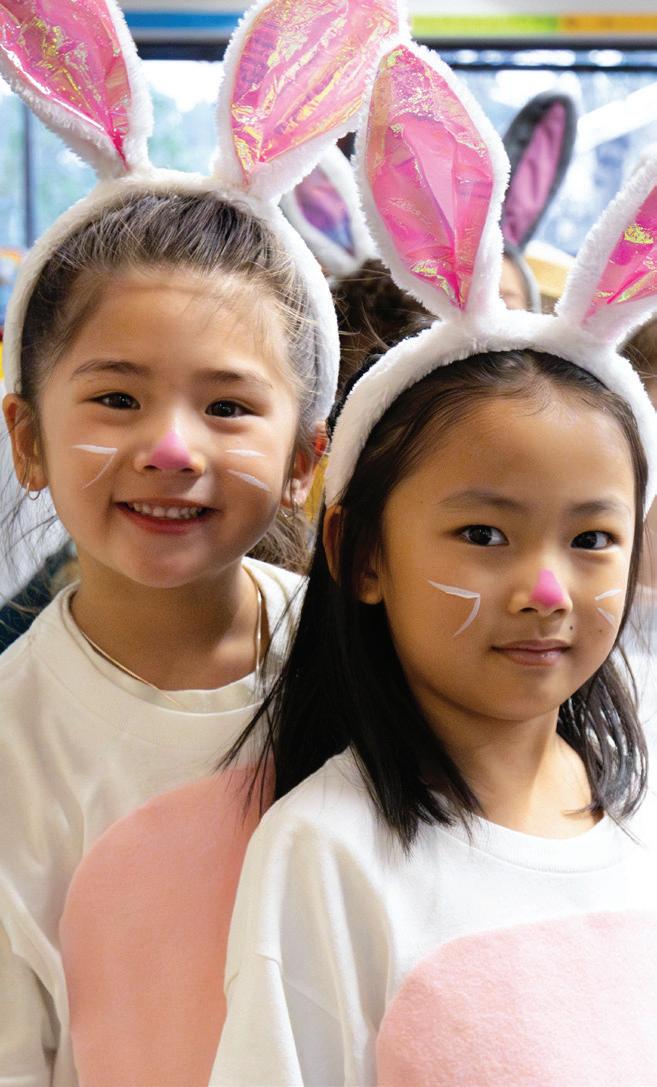
Looking for updates on DA alumni?
The “Alumni” banner highlights stories and tidbits about how Durham Academy alumni are living moral, happy, productive lives.
By day, they’re DA teachers. By afternoon, evening and weekend, they’re gardeners and choreographers; thru-hikers and cookie decorators; woodworkers and beekeepers. Behold the many extracurricular hobbies of DA’s extraordinarily talented teachers.



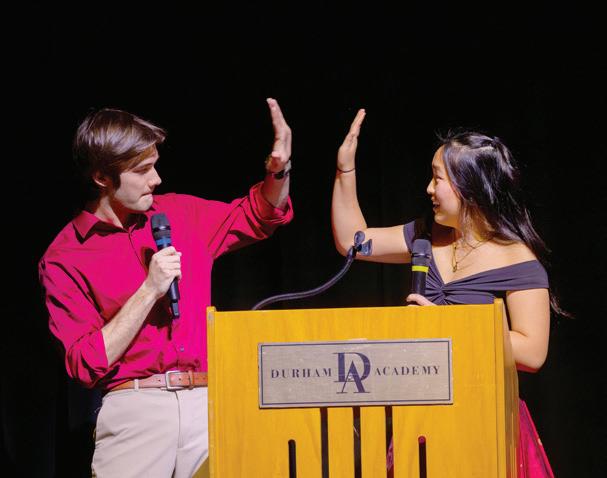
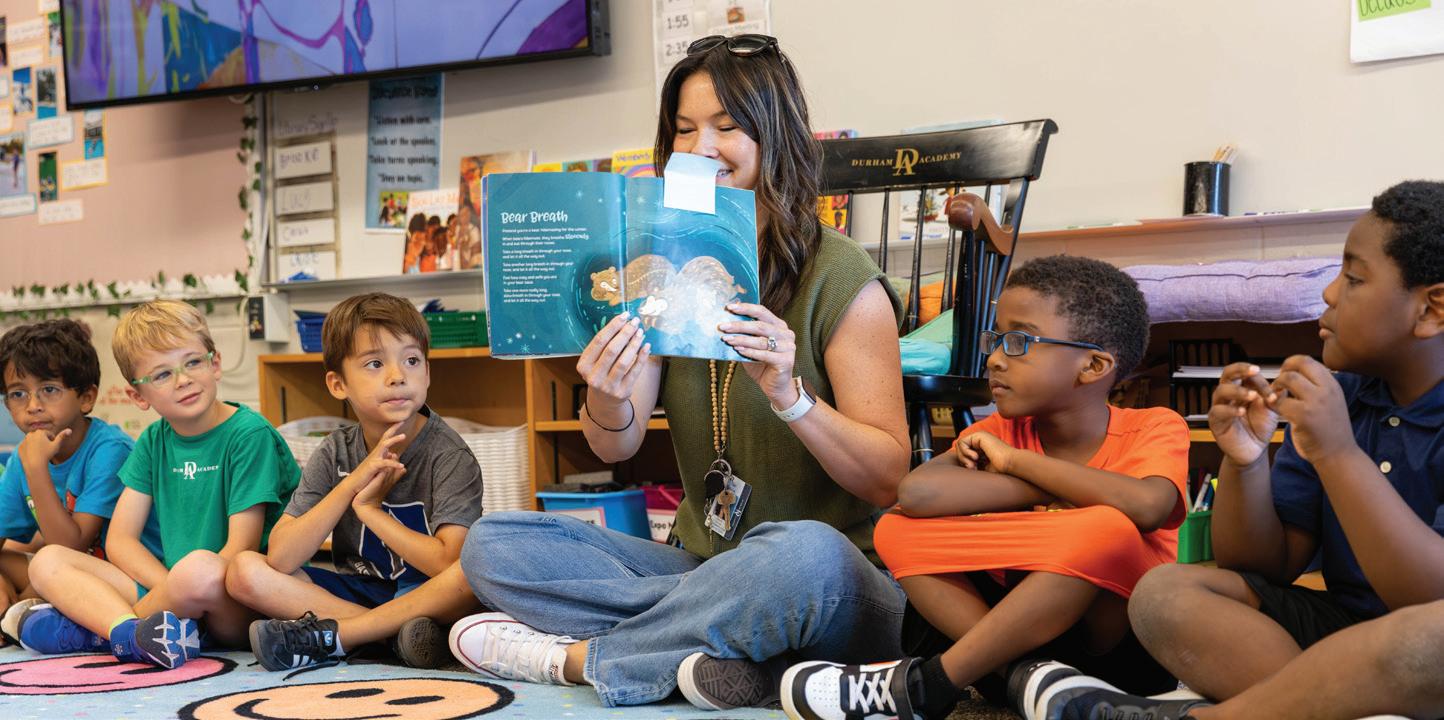
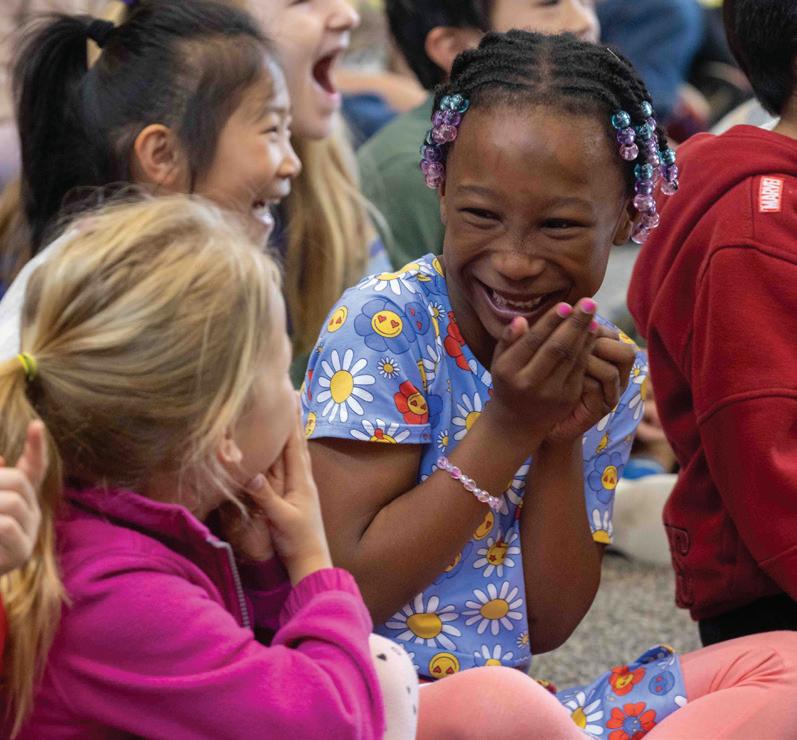
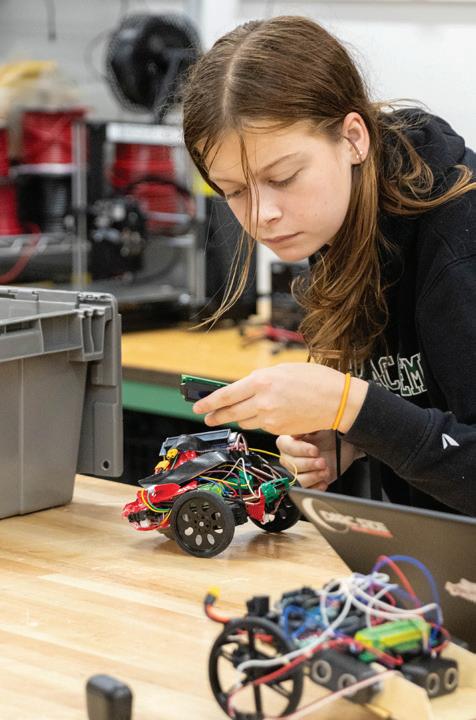
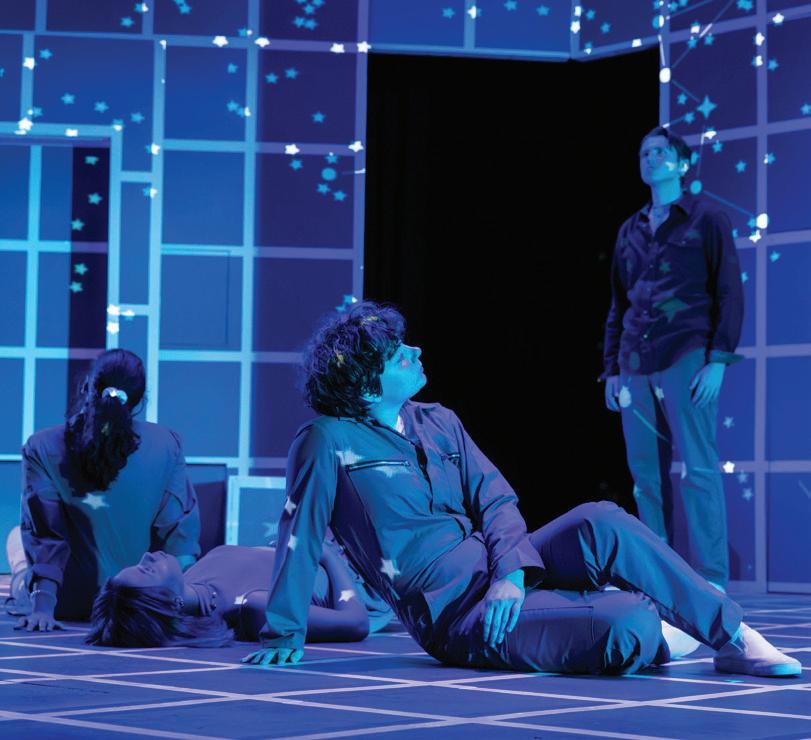
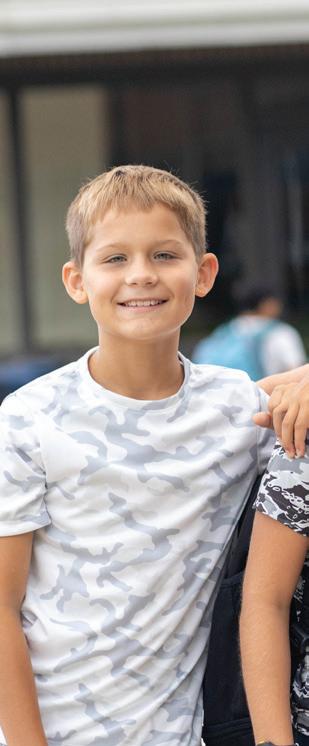
Every spring, we gather to celebrate our Distinguished Alumni and Faculty/Staff Legacy Awards. The paths and powers of this year’s honorees reveal interesting things about the DNA of Durham Academy — and the ways our dynamic students and alumni might lead us into a dizzying, dazzling, unscripted future.
When Teresa Engebretsen was a seventh grader in the Appalachian town of Spruce Pine, North Carolina, she decided she would be a French teacher. “I had no reason to fall in love with France,” she says, “but I did” — with the help of a life-changing teacher. Eight years later, Headmaster Rob Hershey made Teresa’s dream come true, offering her a job at Durham Academy. “There’s just one problem,” she told Rob, “I’m only a junior in college.” Teresa solved this problem by taking full course loads in both summer sessions, graduating early, and joining the DA faculty in August of 1980.
The rest, as they say, is l’histoire: Madame Engebretsen lighting fires of curiosity, creativity and fun with her students; guiding
more than 600 of them on life-changing trips to France; and befriending, inspiring and leading her colleagues across the school. Teresa maintained the enthusiasm of that France-crazed mountain girl through 45 years of teaching, advising, leading, mentoring and caring about everyone around her. She is a living legend with a procession of devoted alumni to prove it.
When Steve Engebretsen spent a quarter century of Friday nights sweeping the floors with a damp towel at halftime of basketball games, he was living the values of our school. When he quietly washed uniforms, lined fields, rescheduled rainouts, talked hundreds of parents and coaches off emotional ledges, and guided our athletics program to punch above its weight in North Carolina, he was embodying the spirit of DA: small but mighty, low on razzle-dazzle and high on substance, fiercely committed to the holistic development of young people. Steve always kept the main thing the main thing. He retired last year after 43 years of service as a teacher, coach, advisor, mentor, athletic director and (in his last chapter) Middle School PE teacher and

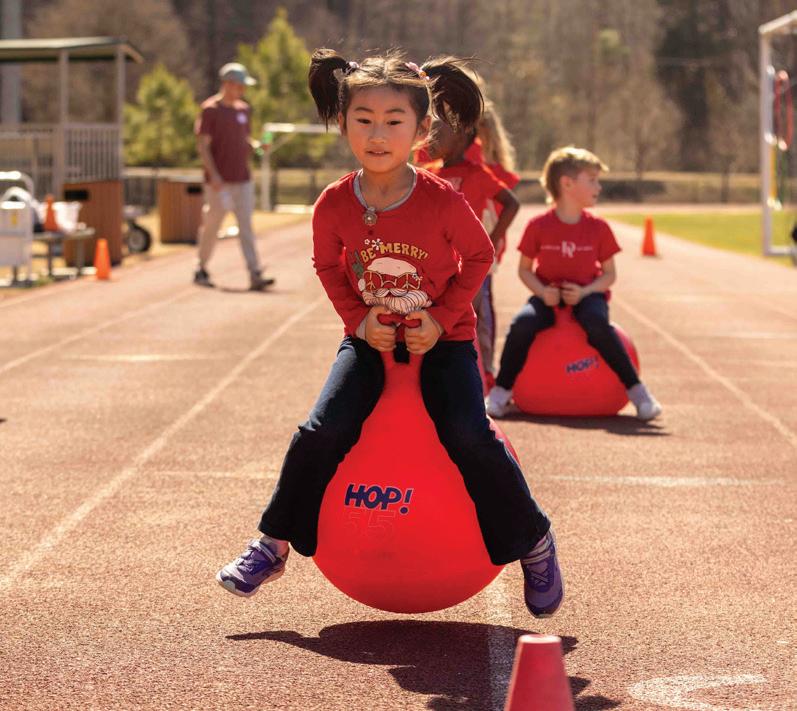

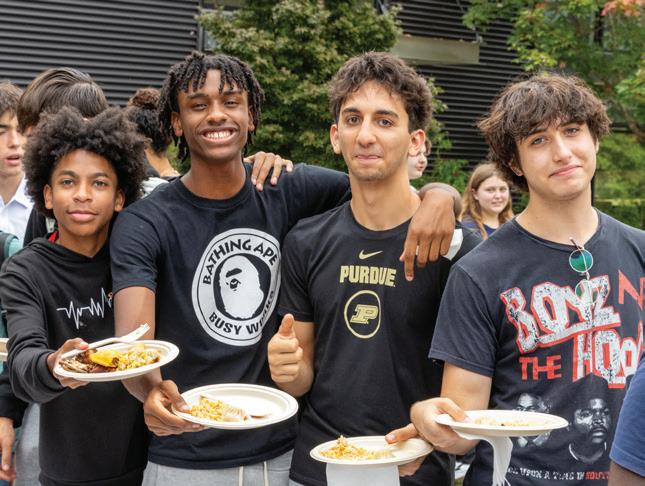
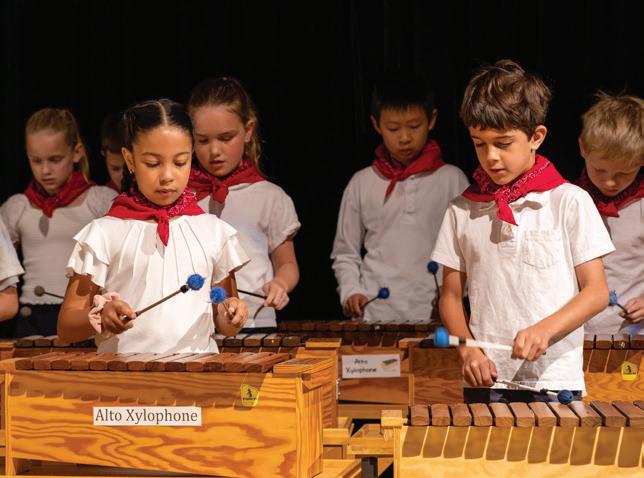
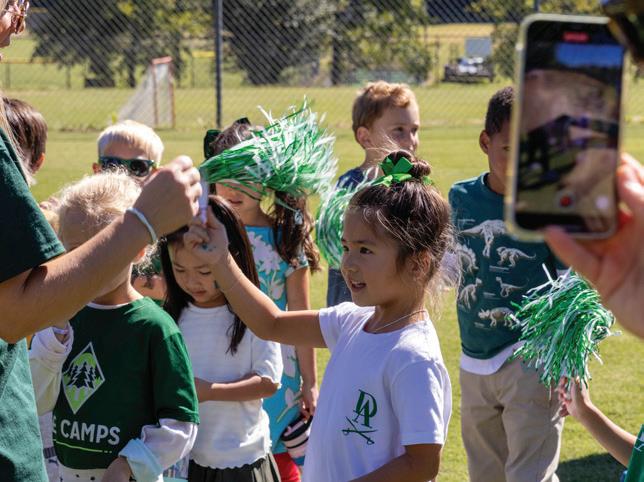
after-school bus driver. A unique combination of humility, hard work and practical wisdom made Mr. E one of the most effective servant-leaders in Durham Academy’s history.
When Brooke Hartley Moy ’07 came to the podium at this year’s reception, we teleported from the Engebretsens’ 20th century memories to Brooke’s unhappy arrival at DA in 2004. After reacting to the news of her family’s move from Maryland with stubborn resistance, Brooke quickly realized that her new school was full of smart, driven, caring kids. She rose to meet the intellectual challenges offered by people like Dave Gould, Jordan Adair, Kathy Cleaver and Jarrod Jenzano. She grew as a writer, stretched herself as a debater, took a leap and succeeded on the stage in Kenan Auditorium. DA helped ignite Brooke’s curiosity, solidify her confidence, catalyze her sense of justice and galvanize her belief that the things most worthy of doing in life are hard things.
Brooke then strode a brave path to Duke University, Fuqua School of Business and a series of roles with increasing responsibility at Salesforce, Google and Slack, and now as cofounder of the AI startup Infactory. She is among the few female CEOs in “deep tech.” Brooke and her team are quite literally building the future of reading, writing and research. Like the faculty and administrators at Durham Academy, Brooke hopes that the burgeoning world of generative AI will still value integrity, inclusion, creativity and high ethical standards. As we at DA chart our own paths through this new world, we’ll be rooting hard for Brooke.

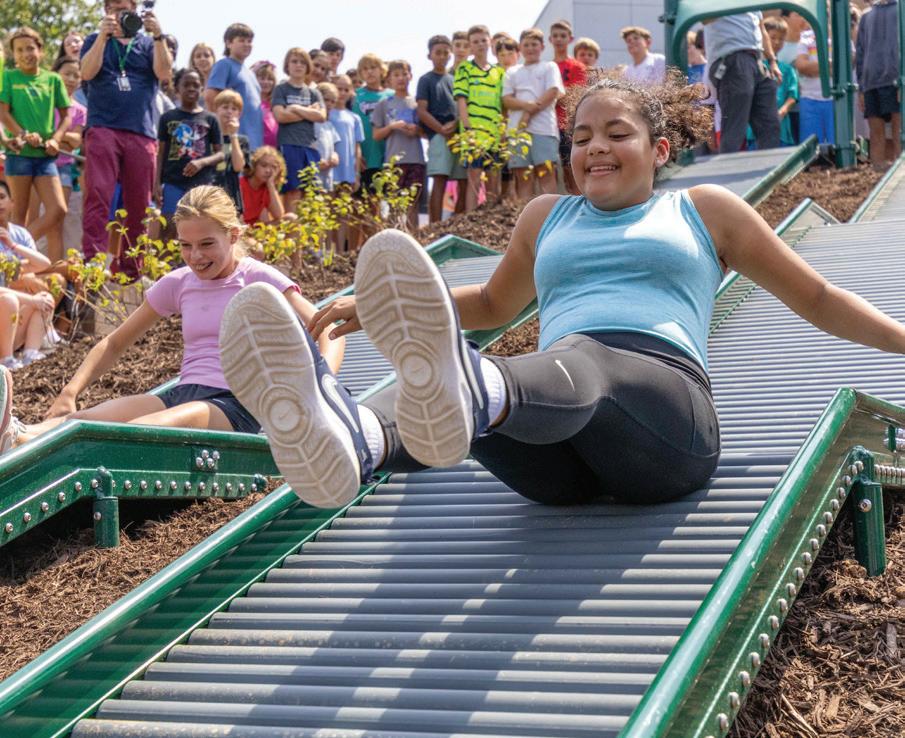
Confucius instructed: “Study the past if you would define the future.” Faulkner went further: “The past is never dead. It’s not even past.”
Every year, the Spring Alumni Reception reminds us who we were, who we are and why the torch of Durham Academy is worth carrying into the future. “Tradition is not the worship of ashes,” wrote Gustav Mahler, “but the preservation of fire.”
What, then, is the fire of Durham Academy?
For more than 30 years, this has been a key part of my own burning question: What kinds of communities and experiences best help young people grow into their most compassionate, capable and courageous selves?
For more than 90 years, educators like Steve and Teresa Engebretsen have been leading students like Brooke Hartley Moy with the torch of our moral, happy, productive mission. (Read more about our three honorees on page 74). This edition of Durham Academy Magazine offers many examples of our mission in action. Thank you for reading, keeping in touch and carrying our fire forward.
Michael Ulku-Steiner Head of School @MrUlkuSteiner
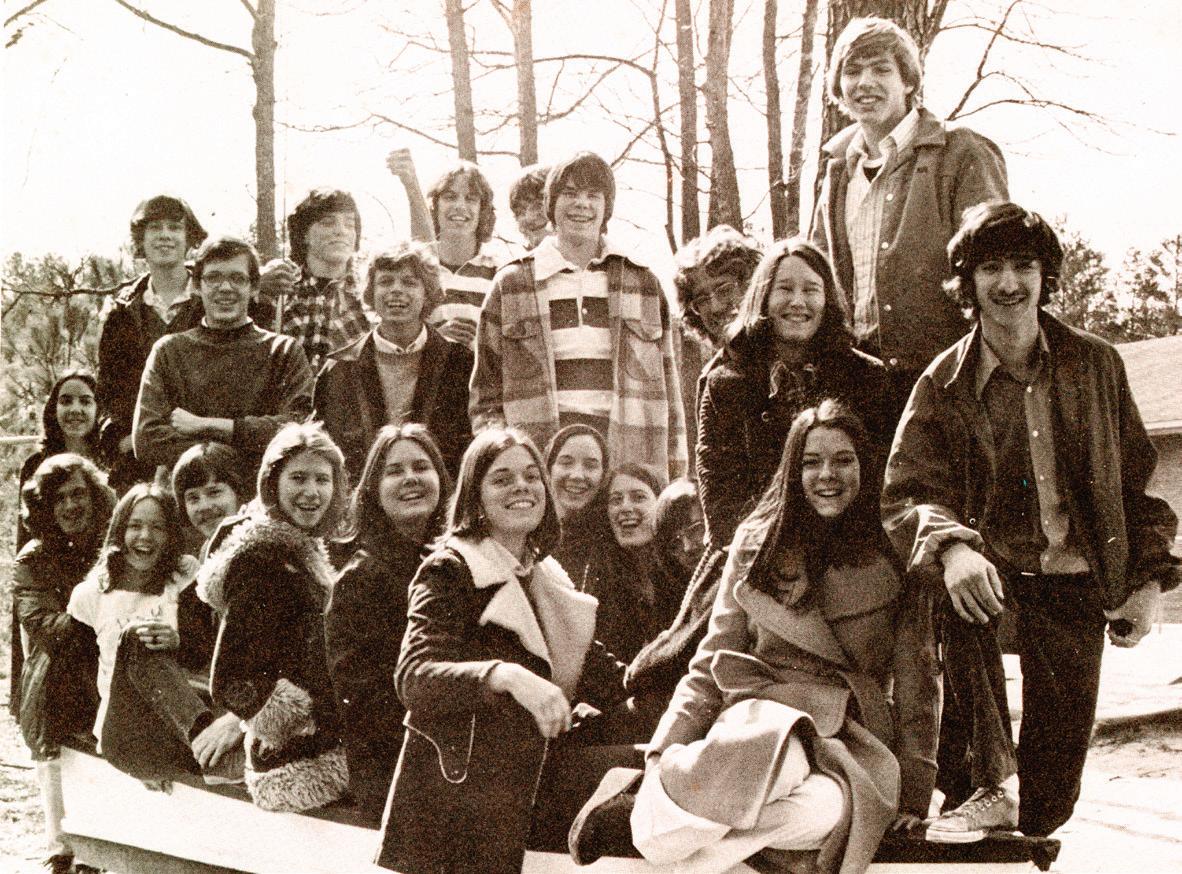


The Class of 1975 — Durham Academy’s firstever group of seniors — graduated 50 years ago. Following the opening of the Upper School campus in 1973, these 26 students joined the ranks of alumni dating back to DA’s origins as Calvert Method School, which was founded in 1933.
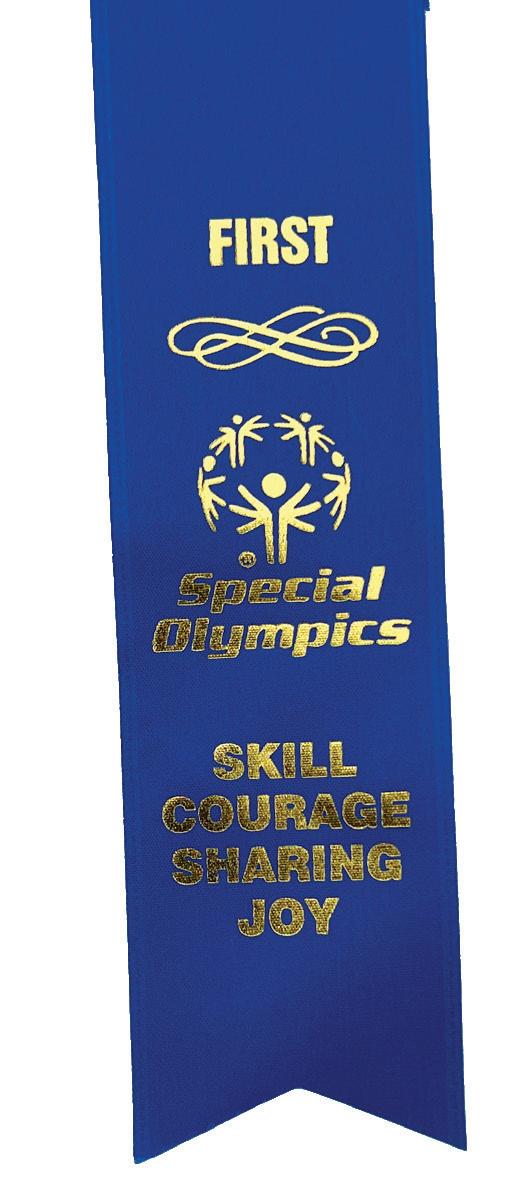
In April, DA hosted the Durham County Special Olympics Spring Games for the 40th time, welcoming 316 athletes from 21 local elementary schools. DA is one of North Carolina’s longest serving Special Olympics hosts, and students help to organize and staff nearly every aspect of the event — from sensitivity training for all Upper Schoolers, to day-of operations.
workshops led by students, teachers and parents — with themes like horchata y pupusas, baby hat knitting and “cool chickens” — WMTM has steadily grown into a signature DA tradition.
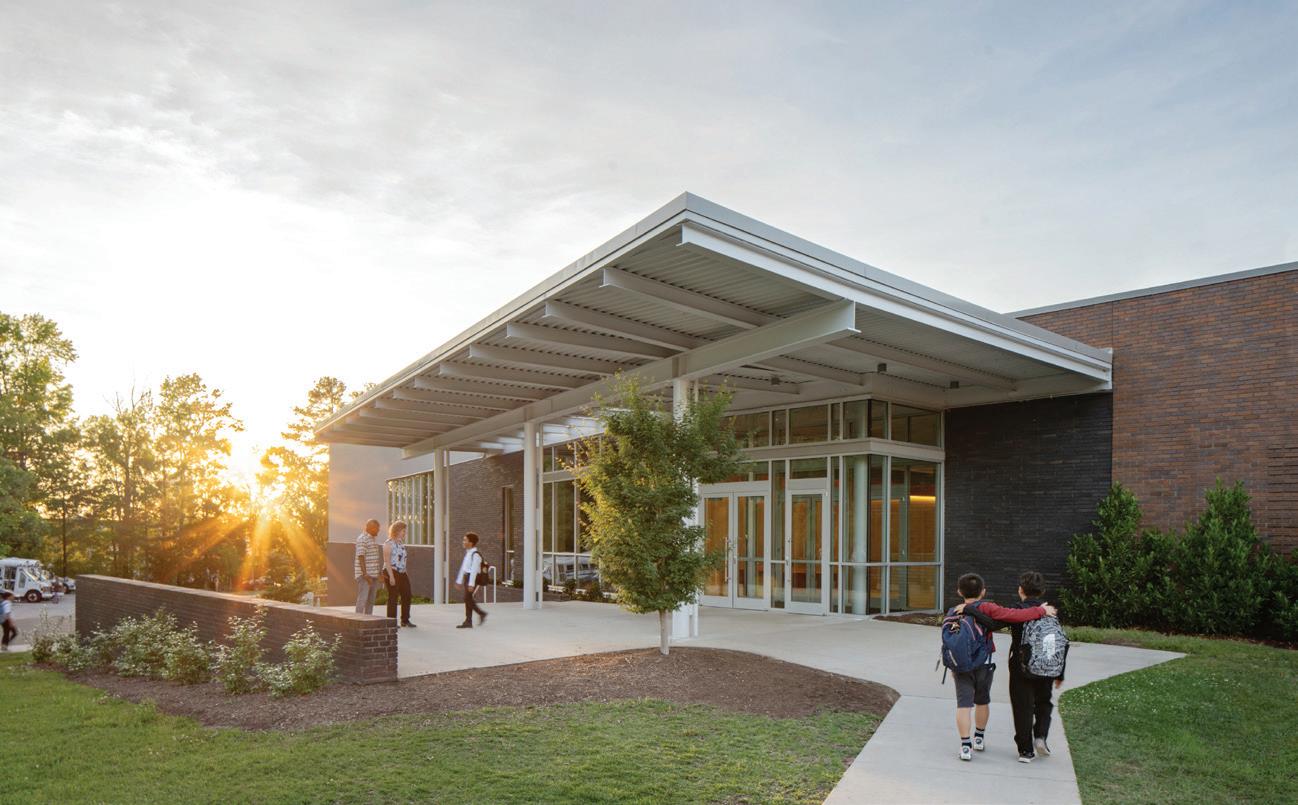
The Middle School Arts & World Languages Center (AWL) has earned rave reviews from students and teachers since its opening in 2021. And now, it has earned the highest accolade from the American Institute of Architects’ Triangle chapter: the Commercial Honor Award. The facility was designed by Cannon Architects and built by C.T. Wilson Construction, of which Charlie Wilson ’89 is president and owner.
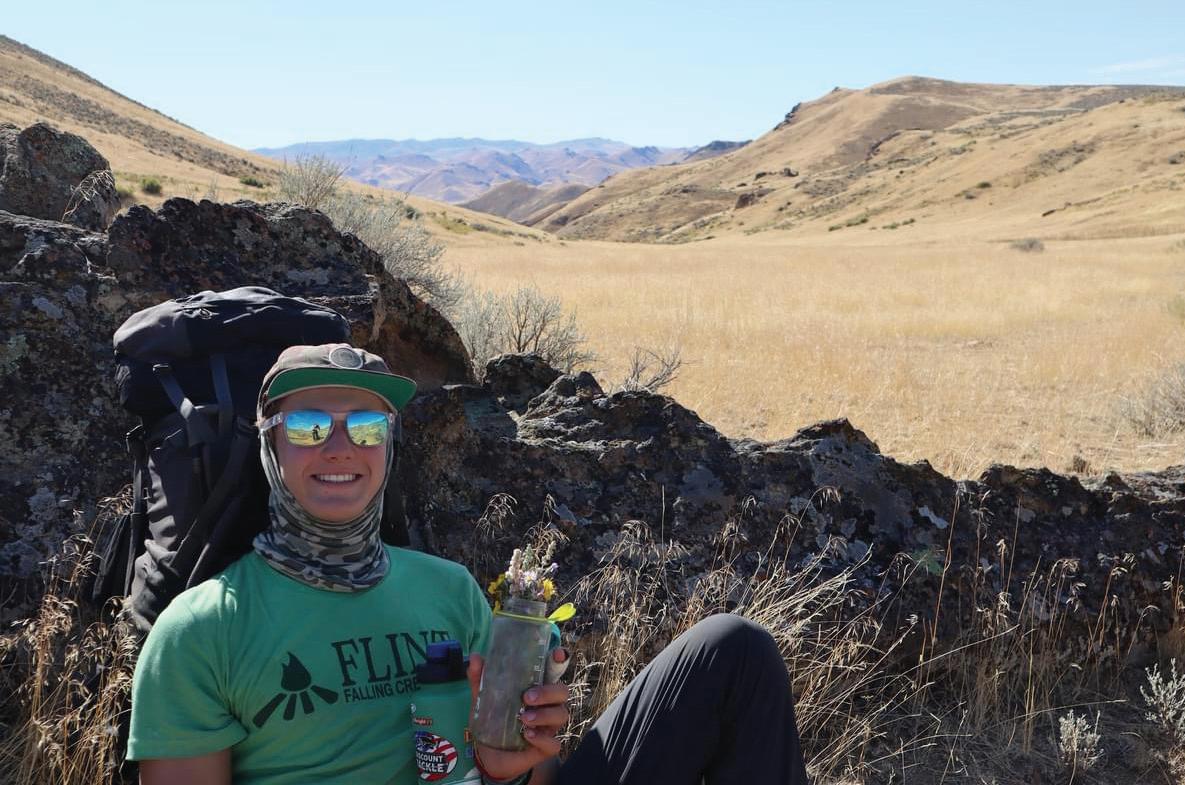
By Dylan Howlett
With a desert sky above, and volcanic rock underfoot, Max Albright ’26 trudges forward. He needs water. The Owyhee Desert, nestled in the crook of southeastern Oregon and spilling over to northern Nevada and western Idaho, is nothing but sprawling canyonland, simmering with 90-degree heat by day and shivering with 40-degree lows by night. Albright finds himself in this cauldron of clay at the start of an eightday backpacking trip with seven other students from high schools around the country. He is in charge. Once the first day passes, there is no turning around. Only a helicopter or a plane can extract Albright and his charges. There is only through. Together.
It’s exactly how the Alzar School prefers it. Albright is here, in the fall of 2024, to spend a
semester away from Durham Academy during his 11th grade year. The experiential program is split between the school’s Idaho campus on the banks of the Cascade River and its campus in Patagonia. Albright will see his parents once, in October, during a parents weekend before his cohort flies to Chile for the remainder of the semester. He and his classmates will learn, on outdoor excursions in the western United States and in the mountains of Chile, about themselves in moments of extreme stress and doubt. Every student will take their turn leading two days of each backpacking trip. They spend three weeks on campus learning all of the skills one would need to endure harsh wilderness. They have a map and compass. Several adult instructors accompany the groups to ensure everyone’s safety. But they’re not in charge. They will, on occasion, offer understated advice. We’re starting to get a little off course. Check your map again.
On this particular trip through the Owyhee, cardinal directions aren’t the issue for Albright. It’s water. There’s no fresh water from a stream to purify and drink: only four blue jugs denoted
by Xs on his topographic map. “It’s a needle in a haystack situation,” he says. And there’s tension between the more experienced backpackers who are moving quickly and the less experienced backpackers who would like to throttle the pace. All the water they have left, as the desert sun beats down upon them, is in their personal bottles. Albright glances around. We need to figure this out.
He thinks of Developing Effective Leadership, the Upper School interdisciplinary course that he took when the class was offered for the first time in the spring of 2024. Albright thinks of Tyrone Gould, the Upper School dean of students and math teacher who started the course for moments like this. It all starts with communication, Mr. Gould would say. Albright thinks, too, of one of the course’s guest speakers in its
inaugural semester: Lt. Col. Nicholas Register, a former military commander and fighter pilot who emphasized the importance of addressing a problem the moment it arises. So Albright does just that. He sits down with his group in a ditch ringed by dead shrubs that offer shade. For 40 minutes, they hash it out: the pacing issues, the frustrations. The rest of the trip is seamless.
“It doesn’t matter where you’re planning on your life going,” Albright says in February as he reflects on his time at Alzar, and in DEL. “You’re gonna have to be a leader at some point. And even if you’re not in a leadership role, you still need those skills to be able to succeed.”
That was, in many ways, what prompted Gould to start the course. As a longtime baseball
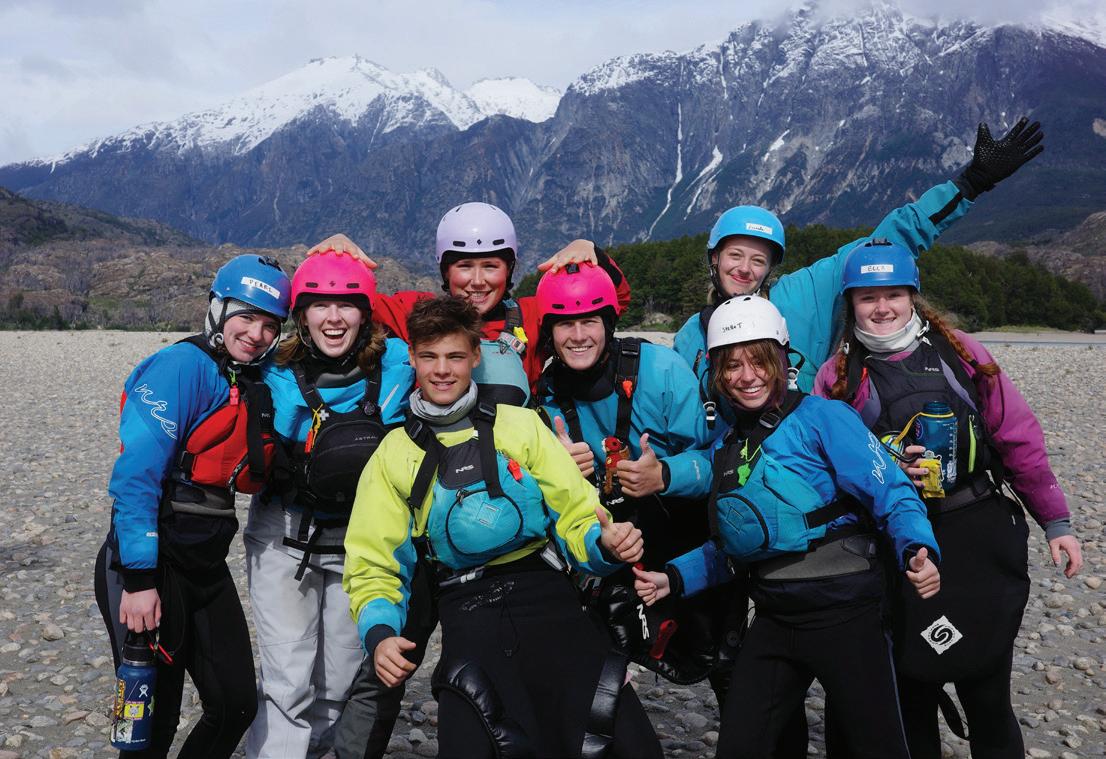
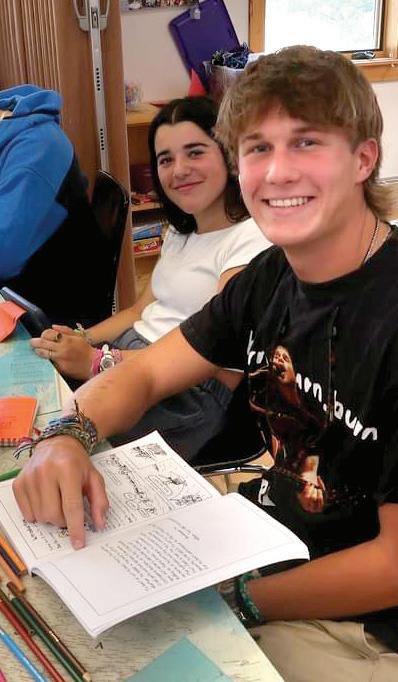
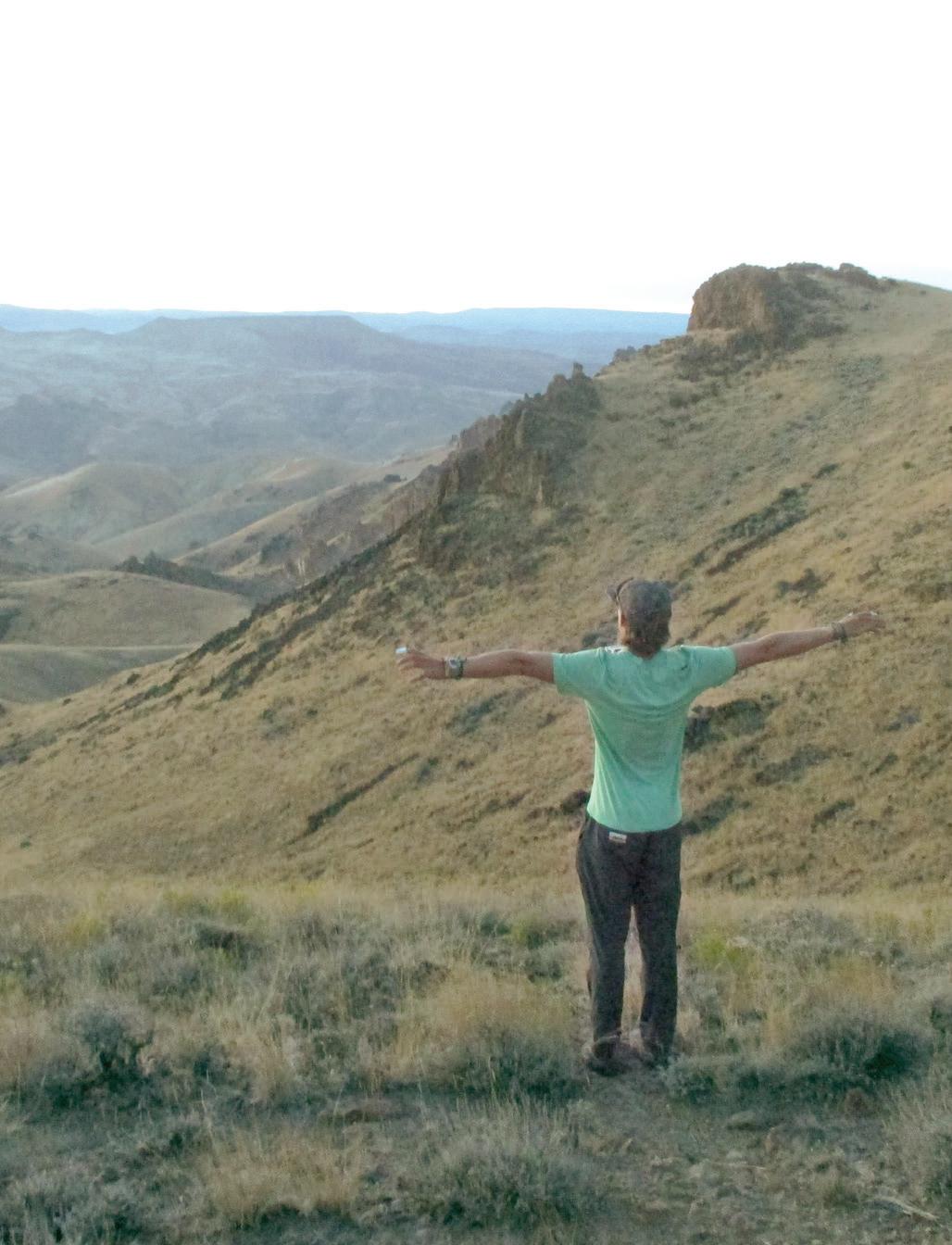
coach at DA, he had grown increasingly concerned about the absence of dedicated leadership training for DA students. There was no shortage of student leadership opportunities, Gould says. But there was a dearth of student leadership development.
And so he started DEL with Albright and six other students. The course spends time on the evolution of leadership over the last century and delves into two paradigms of leadership: vocal leadership and leadership by example. The goal, by course’s end, is for each student to articulate their own model of leadership. A formidable roster of guest speakers — former educators, coaches, DA alumni, doctors, athletic directors, retired Air Force pilots — provides students with real-world language and examples to help them shape their models. The lessons are bountiful.

“It doesn’t matter where you’re planning on your life going. You’re gonna have to be a leader at some point. And even if you’re not in a leadership role, you still need those skills to be able to succeed.”
—
MAX ALBRIGHT ’26
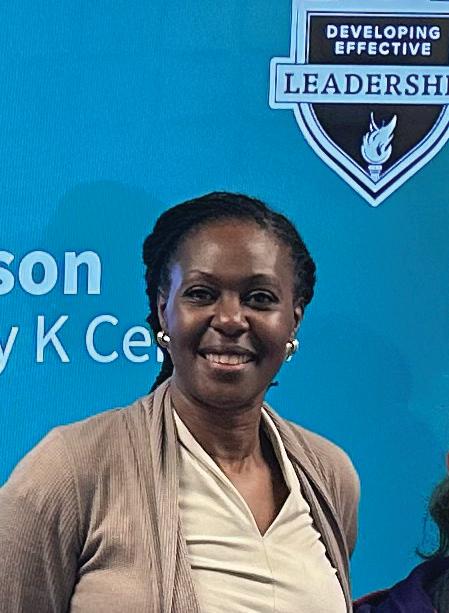

“Nobody’s born a leader,” says Angus Cook ’25, a cross-country team captain who took the course in its debut semester. “And if you aren’t born a leader, then you can obviously become one. It takes some hard work, and it takes some work to discover your own ideals to do so.”
“I want people to follow me not just because I’m the leader by my role,” says Kyngston Gaddy ’25, referring to the leadership teachings of author John C. Maxwell. “I want them to follow me because they actually believe in what I stand for and how I actually go about things.”
Evan Register ’25 knows the feeling. She is Nicholas Register’s daughter, and she invited her dad as a guest speaker to DEL — which, in turn, led to Albright’s awakening about quashing problems right away. Evan Regis-
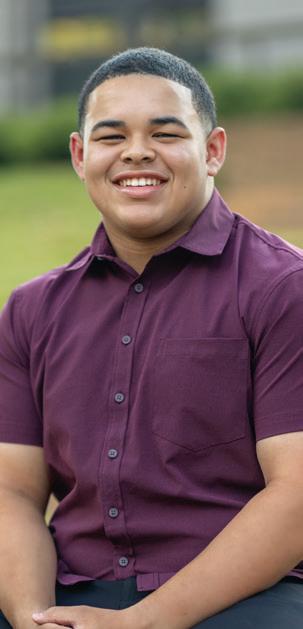
“I want people to follow me not just because I’m the leader by my role, I want them to follow me because they actually believe in what I stand for and how I actually go about things.”
— KYNGSTON GADDY ’25
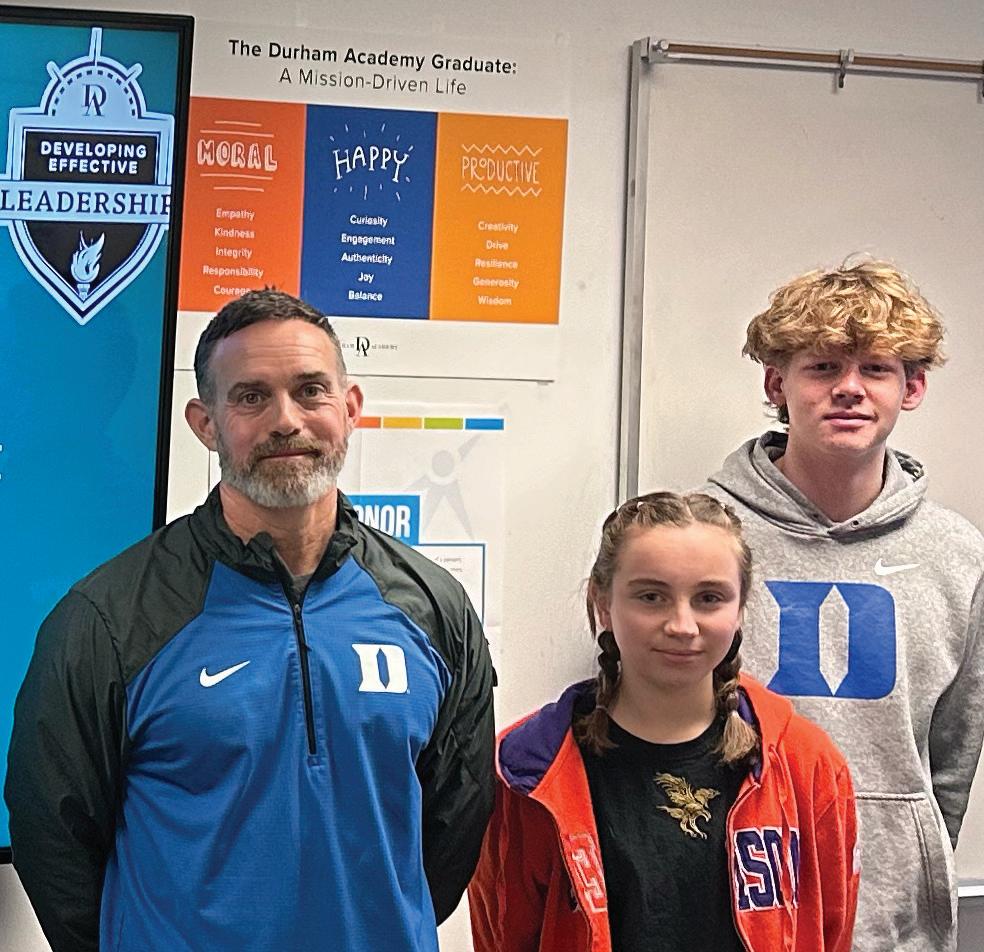
ter is a captain on the cross-country team. She was startled during a winter workout in January when, upon arriving at the track, she discovered that the stretching regimen that she typically orchestrates was being led by a teammate. Register balked at first. She thought about intervening. And then she realized that the standard she had set was being followed by her teammate. “It was kind of a moment where I was like, ‘Wait: I don’t need to be so uptight and worried about this kind of thing. They’re doing the right thing. They’re getting it.’”
But models and paradigms aren’t the only deliverables Gould has in mind for his students. He wants them to identify their “pit crew,” an inner circle of trusted adults. Gould still holds monthly Zoom calls with his college dean from Colgate University. He stays in touch with
coaches from middle school and high school. “That’s my pit crew,” he says.
Albright is in the process of building his. He doesn’t know if he would have enrolled at Alzar without his experience in DEL. Before the course, he didn’t appreciate negative feedback. “Get that out of your head,” Gould told him. There’s no use in being upset about the feedback. Think about it, and use it to turn the situation around — say, when you’re leading a group of dehydrated students through the desert in search of water.
Albright found the strength to jump in the ditch. And DEL showed him the way out.
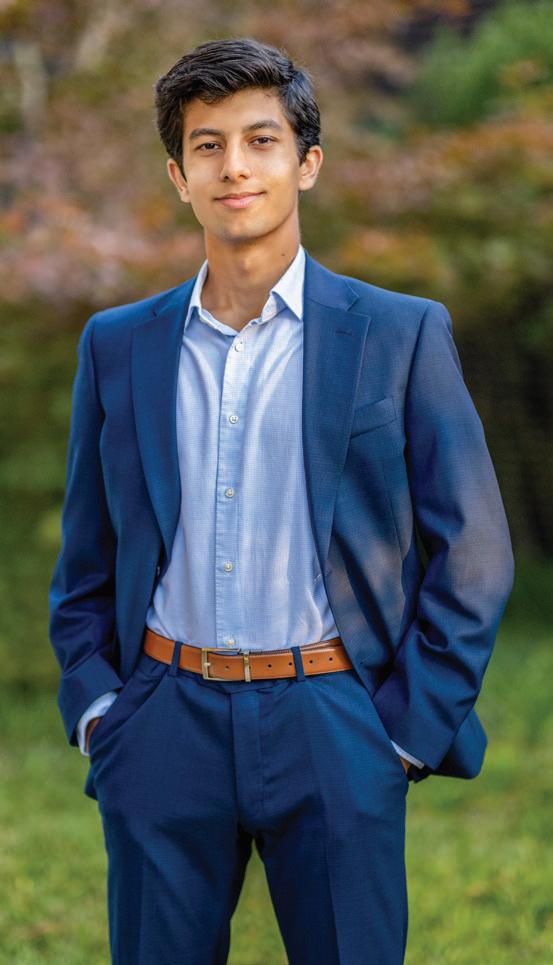
For Aayaz Husain ’25, an Independent Study Turned into a Long-Term Initiative
If you walk into the airy and bright downtown Durham library and mosey over to a small kiosk by the stairs, you’ll find the result of years-long work from Aayaz Husain ’25 — a culmination of public health resources for Durham’s Hispanic community. At the kiosk are COVID-19 tests, masks and pamphlets in Spanish. He marks the effort’s success by the weekly refills and the conversations he has with library patrons interested in the resources.
What began as an independent study for Aayaz to explore two interests — public health and Spanish — has turned into a lasting community commitment. He began his research in 10th grade by approaching Spanish-speaking community members to understand what resources were missing. The pamphlet he designed for his final project features information about referrals, dental health, primary care and mental health providers.
Susannah Greene ’32 Honors Jesús Sánchez in ‘The Week Jr.’
Susannah Greene ’32 wanted to ensure Jesús Sánchez, her advisor and Novice Spanish teacher, got all the recognition he deserves. She did just that by writing to The Week Jr. in October to nominate Sanchez for Teacher of the Week.
“Señor Sánchez is so thoughtful,” Susannah wrote. “He is both my advisor and Spanish teacher. I’m a new student at my school, and he makes me feel so welcome. He creates lots of fun ways for us to learn Spanish, like playing ‘Simón Dice’ (‘Simon Says’). During advisory, he has lots of games and cool fidgets for our hands. Señor Sánchez is a special, kind and amazing teacher. He rocks!”

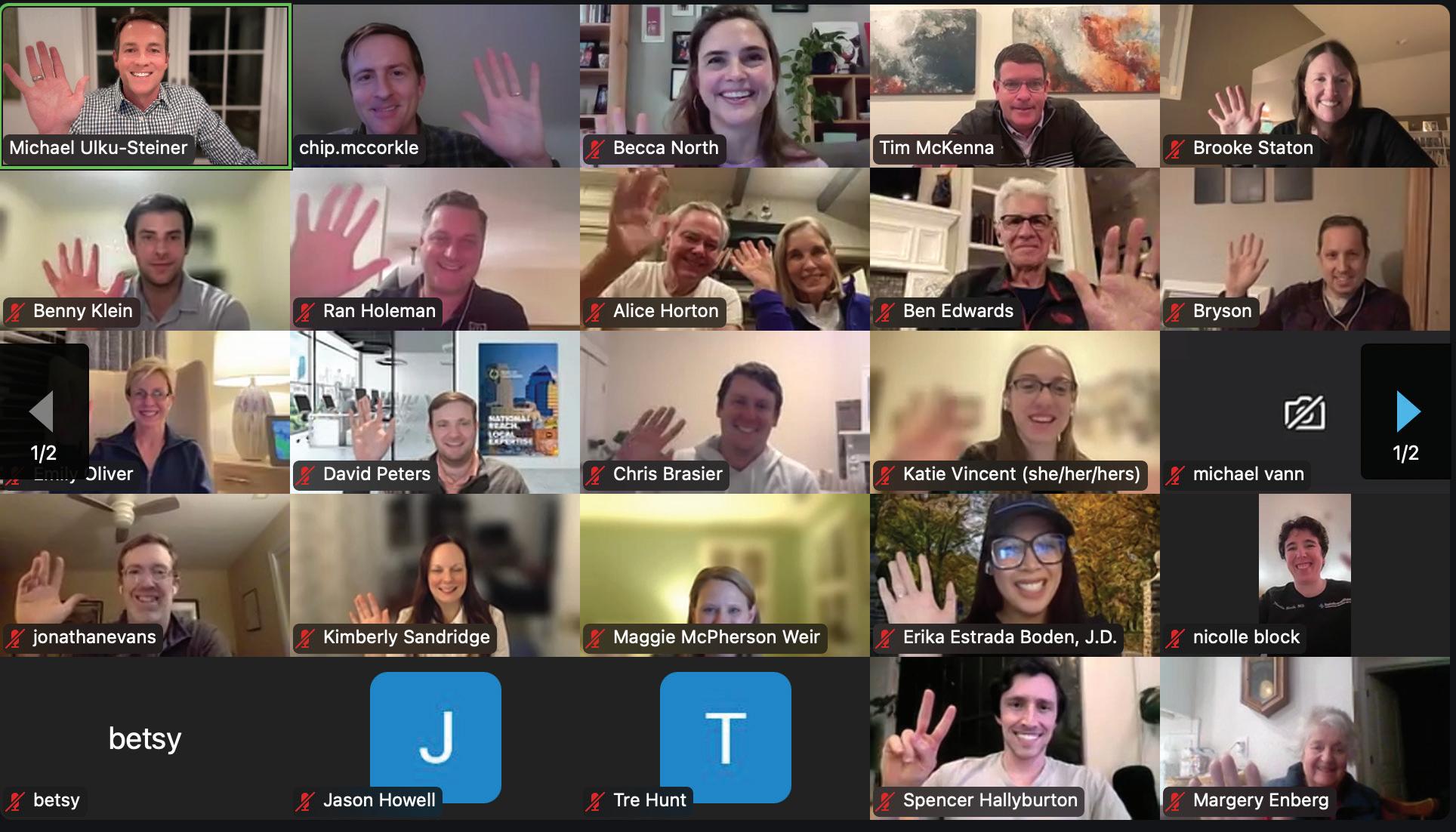
The spring 2025 alumni master class featuring Dr. Becca North ’94 and Michael Ulku-Steiner brought together 45 alumni ranging from the classes of 1980 to 2024. Chip McCorkle ’05 organized and moderated much of the night’s event, during which North and Ulku-Steiner spoke about how they integrate the Durham Academy mission into their everyday lives, whether through happiness in their home life or productivity in their work.
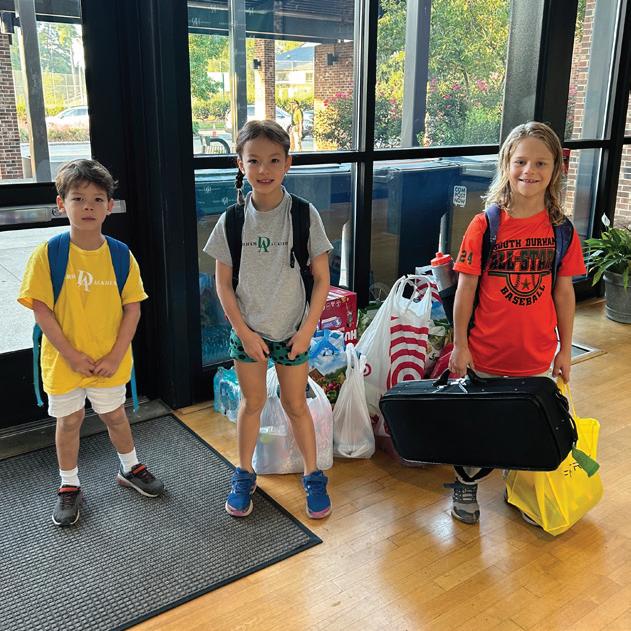
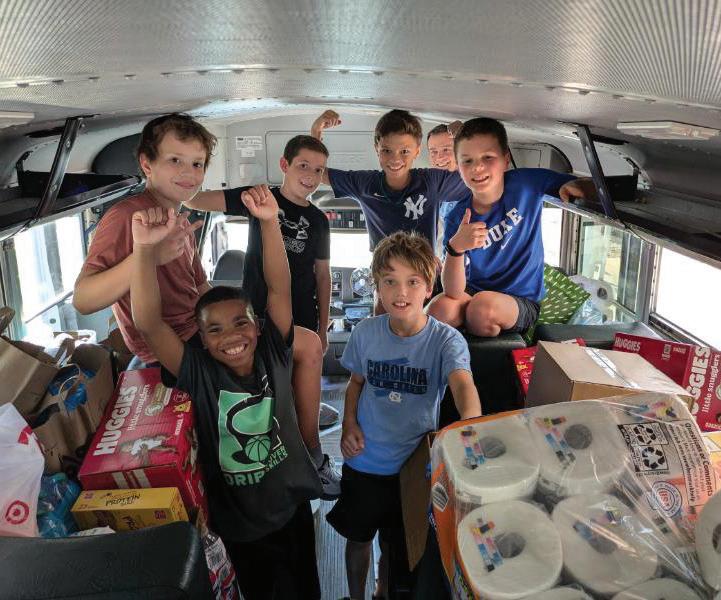
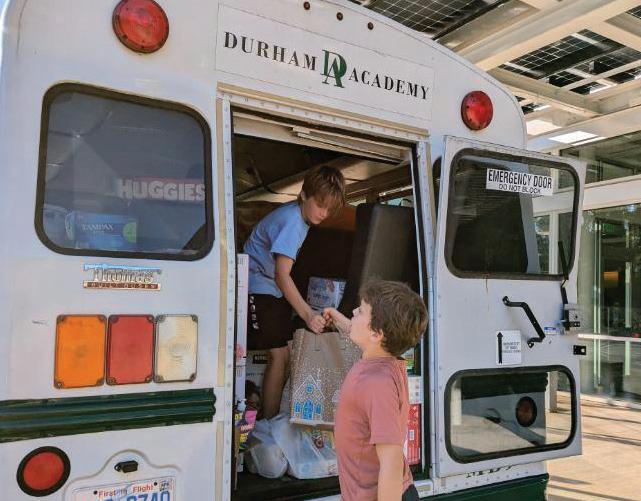
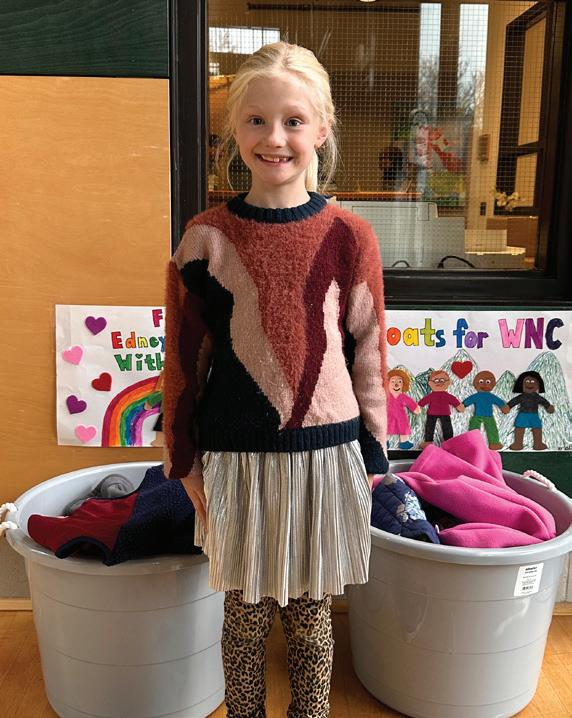
The fall of 2024 saw unprecedented loss in Western North Carolina in the wake of Hurricane Helene. With concern and care in their hearts, Durham Academy students and families took action with coat and supply drives benefiting those impacted. In the days following the destruction, the DA community contributed two busloads of critical supplies.
As the months passed and the cold set in, Kit Weir ’35 organized a coat drive benefiting Edneyville Elementary School and its nearly 500 students in Henderson County. The first grader called on her peers to fill the multiple buckets with fleece and puffers — and they rose to the challenge.
Avery Wilemon ’30, Tripp Casey ’30 and Eva Chen ’30, along with a 12-student task force, also organized a coat drive to help a local community in need. They and fellow seventh graders had read the book When Stars Are Scattered, which highlights the experiences and hardships of child refugees, and heard from Adam Clark, executive director of World Relief Durham, about how the organization helps refugees resettle in Durham. Students asked, “What can we do?” Clark’s response: “Resettled children will need winter coats.” And the students sprung into action.

Kenzie Kim ’26 officially put her mark on downtown Chapel Hill last fall when her mural design was installed on the exterior of Momo’s Master, a Himalayan restaurant on North Columbia Street. The effort was collaborative, with myriad volunteers pitching in for the installation process. The mural project was led by the UNC Asian American Center, which solicited design submissions and hosted a public vote.
Kim’s design draws inspiration from the many sauces essential to her Asian American identity. The final design, retouched by artist Ina Liu, includes rice vinegar, Lao Gan Ma chili sauce, sriracha, chutney and Momo’s Master’s signature sauce.

Conrad Hall ’89, who serves as Cary Academy’s cross-country and track & field coach, was inducted into the North Carolina High School Track & Field and Cross-Country Hall of Fame in February. Hall’s legacy of excellence spans more than two decades, with CA having won eight team state championships and 72 individual state championships under his leadership.
Hall was an accomplished student-athlete at Durham Academy. A five-time individual state champion and a member of seven state championship-winning teams in track and cross-country, he was inducted into the DA Athletic Hall of Fame in 2017.

In October, the Durham Academy Upper School Black Affinity Group welcomed LaQuesa Gaillard ’06 to campus to share about her experiences at DA and beyond, including her passion for Latin dance.
“I had a really sweet time coming back to DA to see the campus and share with DA’s Black Affinity Group,” Gaillard said. “It was so amazing being able to look at the sea of faces who are currently enrolled and know that they will carry on the tradition of DA’s Black excellence. I am grateful for their curiosity, attentiveness and their overall inquisitive energy during my short talk. The invitation was actually a gift that they gave to me, as I appreciated being there and sharing my DA and current life story. I hope that in the spirit of diversity, they were inspired by my journey through DA and beyond. Thank you, DA Upper School Black Affinity Group, for having me!”
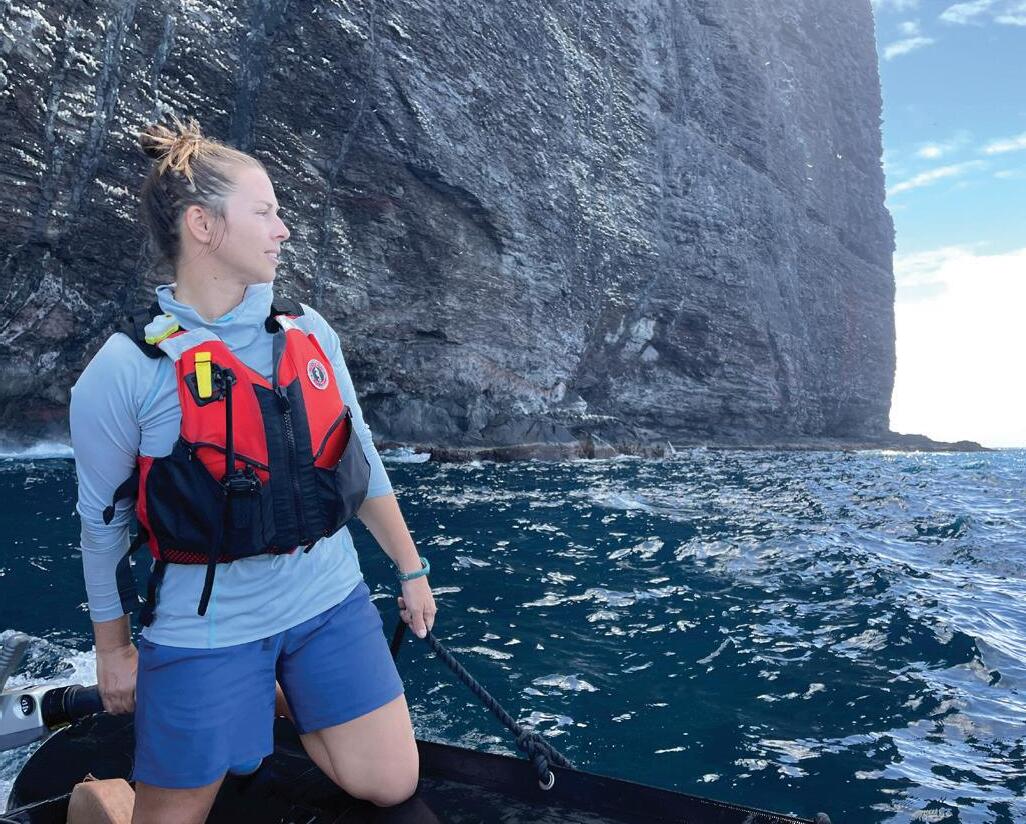
Hope Ronco ’07 made waves when her research was published in a September 2024 issue of Science magazine. She co-authored an article titled “Four decades of Hawaiian monk seal entanglement data reveal the benefits of plastic debris removal” — which provides evidence that the cost and effort of removing plastic pollution does, in fact, help to preserve the endangered Hawaiian monk seal species. Ronco works as a marine biologist with NOAA Fisheries and for the Pacific Islands Fisheries Science Center under the Protected Species Division, supporting Hawaiian monk seal, marine turtle and cetacean research.
Peter Elkins-Williams ’03 was recently named head of Global Partnerships & Corporate Development at The Washington Post He previously held positions at Meta, Atlantic Media, Vox Media and his own advisory firm, EMC Growth Advisors, where he consulted for The Washington Post.
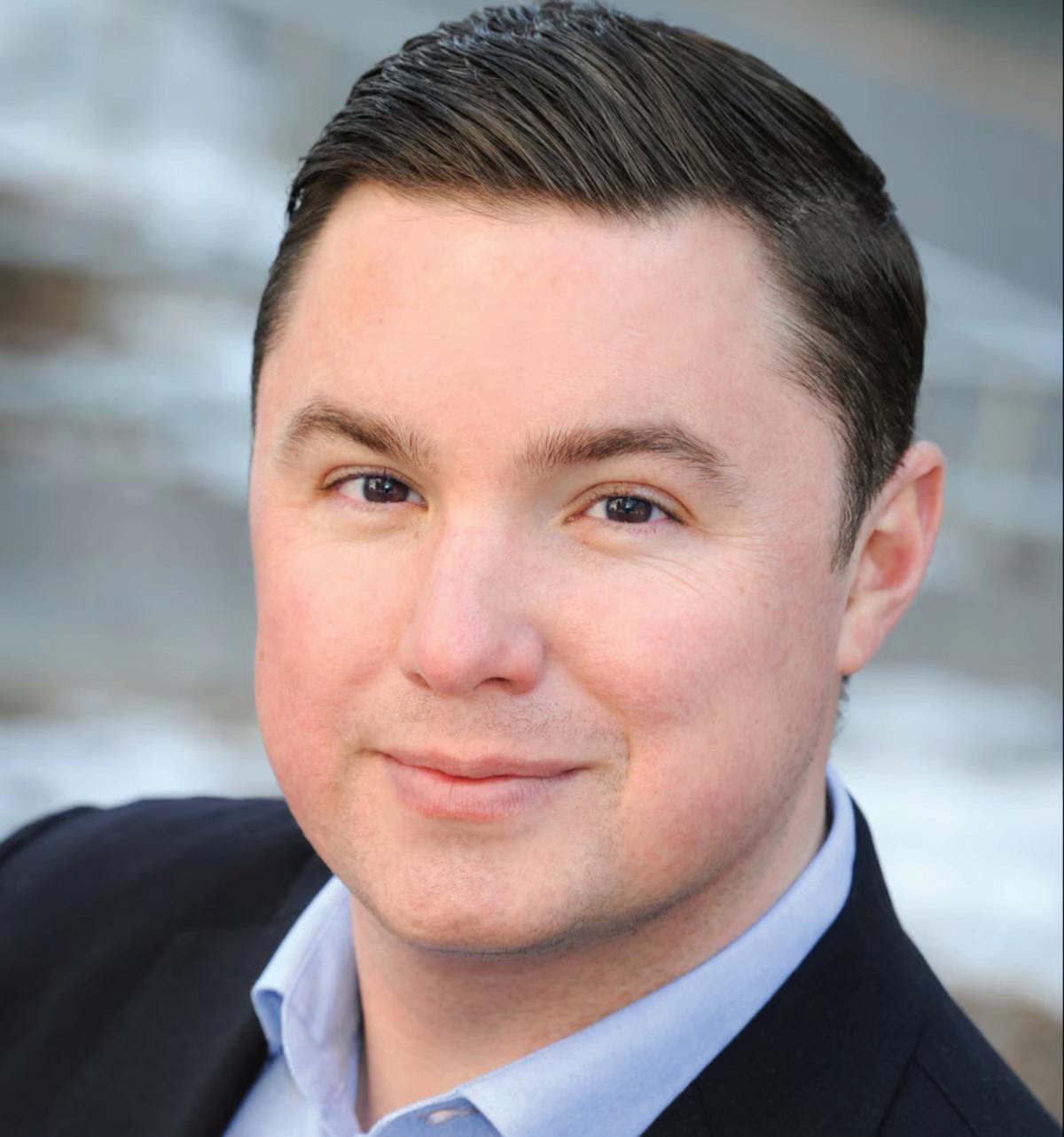
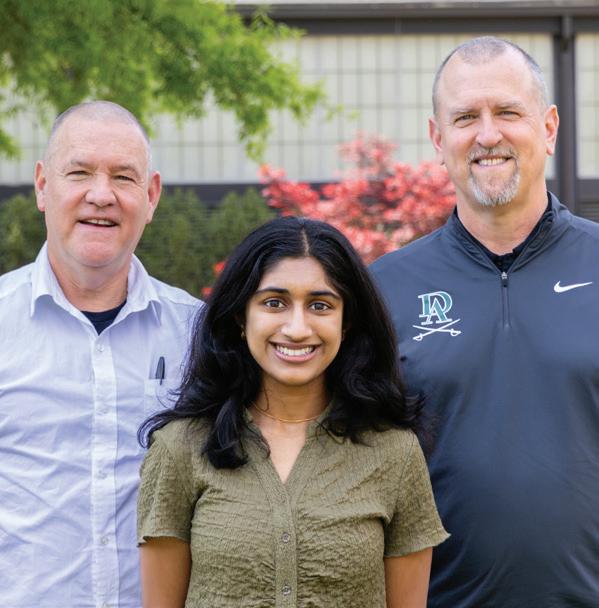
Shreya Rao ’25, Julian Cochran and William Edwards are
Shreya Rao ’25 and Upper School teachers Julian Cochran and William Edwards published an article titled “Correlation between Toe Spread and Toe Hold Pressure: Influence of Flip-Flop Strap Design” in the International Journal of Diabetes Management, which led to an invitation to present as one of the Top 3 abstracts at the Mayo Clinic Wound Symposium in February.
The study references data indicating that 80% of the world’s diabetic population reside in low- and middle-income countries, where sandals and flip-flops are the primary footwear. The research examined the width of toe posts in flip-flop straps and whether the increase in width would alleviate pressure from ulcers.
Check out their findings in the full article at url.da.org/flipflopresearch.
A group of alumni from the Class of 2018 exemplifies the strong relationships formed by Durham Academy students. Solidly bound since their 10th grade year, they have remained close through the ups and downs of young adulthood: staying in touch over thousands of miles during college, weathering a pandemic, and growing alongside one another as they’ve added life experiences. They connect regularly via Zoom calls and yearly cross-country visits. Gathering regularly are Ian Layzer, Alex Charles, Dylan Peter, Scarlett Reade, Austen Dellinger, Jack McCallie, Scott Hallyburton, Thomas Owens and (not pictured) Jeanne Jung
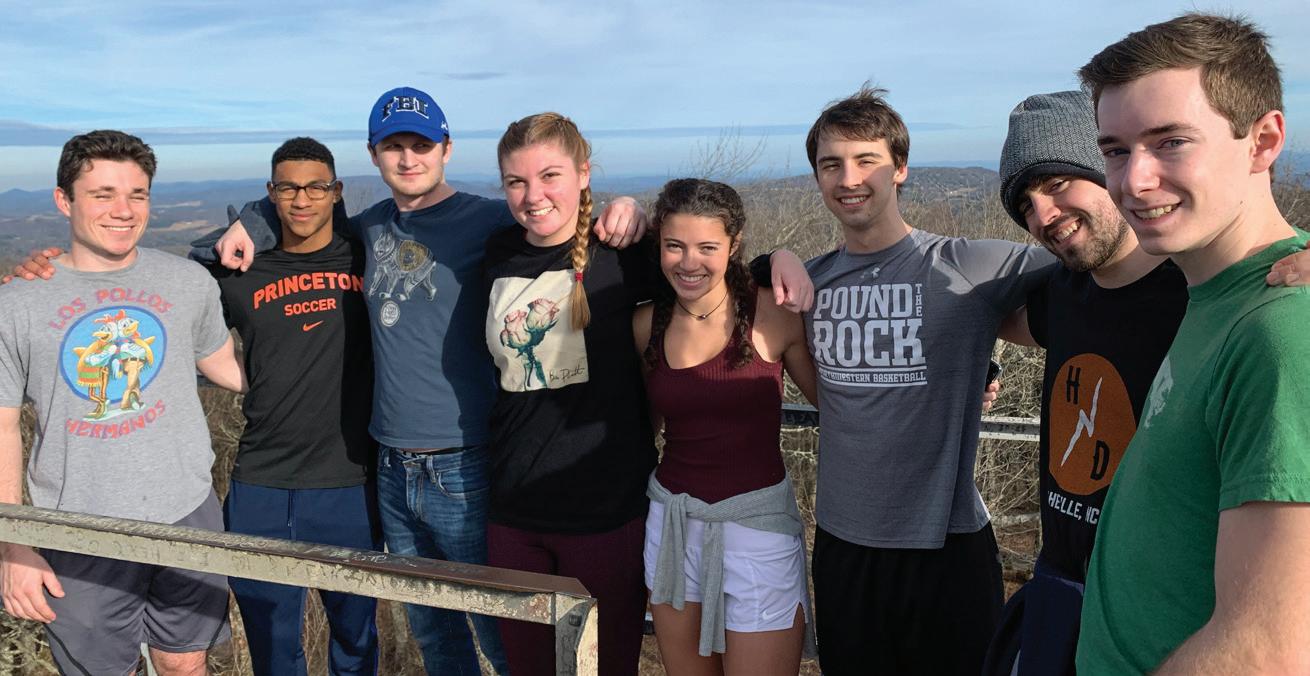

Living and working out of London, Dr. Lauren Jane Barnett ’04 began filming her short horror film, Darner, in November. The film stars Adrienne King, who appeared in Friday the 13th
In other creative pursuits, Barnett’s science fiction novella, Occam’s Dream, was released in February. The story is a blend of sci-fi and psychological mystery that dances around dreams, memories and narratives — and examines whether it’s really possible to control them in order to protect whom you love.
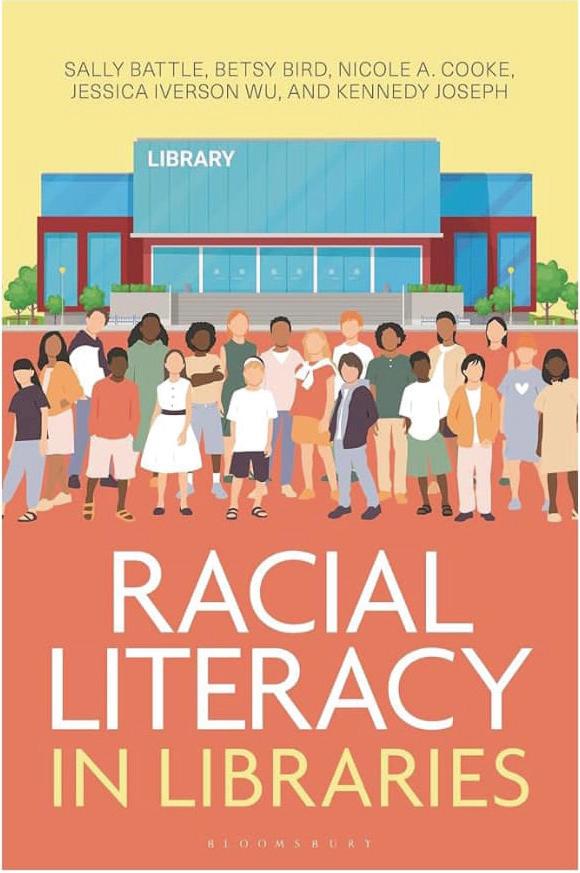
As Preschool/Lower School librarian, Dr. Michelle Rosen’s work typically centers around texts written by others. But she’s also an author in her own right: Work from her dissertation, “Decentering the White Gaze: The Effects of Involving African-American Students in Curricular Decision-Making in an Independent School Library,” will be featured in a new book from Bloomsbury Publishing, Racial Literacy in Libraries. The book is organized into three parts to cover the science and history of race; the importance of equity and access and how to apply it in libraries; and real-life examples of libraries that are encouraging racial literacy through their programming. Check a library shelf near you in February 2026, when the anthology is set to be published.
She’s crafty (see the pipe cleaner constellation) and prepared (hence the “just in case” bandage). Emma scored the duck keychain by jumping and dancing for 35 minutes straight as part of the American Heart Association’s annual Kids Heart Challenge.
By 5’s
A smiley face sticker hints at Emma’s path to multiplication mastery. On this day, the focus was multiplying by five.

Emma’s well-loved backpack tells the story of an active and vibrant student. “She is kind and happy, bubbly and sweet,” says her teacher, Erika Kim. “She loves animals and nature and takes advantage of learning every second she is at school.”

Arnie the Doughnut reached celebrity status at the Lower School this year when it won the PreschoolLower School book election in the fall. Arnie’s impact lives on with sequels and spinoffs, like Bowling Alley — one of no fewer than four books that Emma was reading at the time.
A cat-shaped squish serves as a reminder of Emma’s home life. Her parents are both veterinarians, and she lives on a farm!
From her water bottle and sunglasses, to her lunchbox and outerwear, hues of pink pervade her collection of utilitarian items. A big grin breaks out on Emma’s face when asked why: Pink is her favorite color, of course.
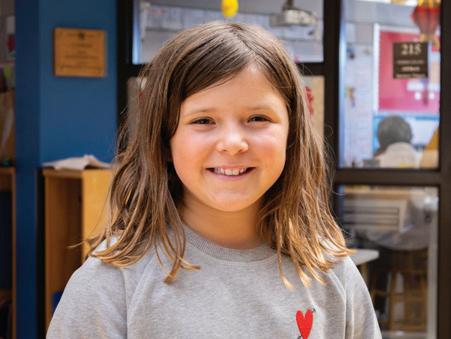
Story and Photography By Kate
Auger
We asked Emma, a student in the “Kim-Possibles” third grade class and a budding bibliophile, to offer us a glimpse of the magic within a Lower School student’s backpack. She confirmed that her favorite color is pink and that she loves horses, but she can’t say where her missing pink glove wound up. She proudly laid out each item, taking care to display her books and mention her awaiting afternoon snack. The evidence laid before us paints a picture of a moral, happy and productive student’s individuality and interests.
By Melody Guyton Butts | Photography by Kate Auger
How to help the baby to sleep through the night? Which remedies actually work to soothe an upset tummy? What’s the best way to defuse a tantrum?
For … well … forever, parents have been able to turn to those who came before them for child-rearing advice. Dad is delighted to pass along the baby-swaddling technique he perfected 30 years ago. Abuela has seen enough children and grandchildren eventually sleep soundly that she can confidently assure that these sleepless nights, too, shall pass. The next-door neighbor is a wealth of wisdom on all things toddler.
And while that traditional advice structure still serves parents well — especially for the decisions and anxieties of the first several years of parenthood — many parents have found that, in these modern times, the advice well runs dry when their kids reach adolescence and thorny issues around technology arise. How do I decide whether or when to give into pleas for a smartphone? … Would a smartwatch or a “dumbphone” be a wise compromise? … Will forbidding social media use lead to fragmented friendships for my child? … Where should we draw the line for video games? … How can I help my child prepare for a world being transformed by generative AI?

As a parent, it’s not hard to feel overwhelmed and under-equipped. In Durham Academy’s 2023–2024 end-of-year family survey, the second-highest area of concern voiced by parents and caregivers was technology management. In previous years’ surveys, tech barely made a blip.
Around the world, the parenting zeitgeist is abuzz with concerns about the impact of technology on adolescents. It’s been five years since the onset of the COVID-19 pandemic kept young people stuck at home and interacting with the world via screens — and screen time remains elevated from pre-pandemic levels. Many parents and educators were alarmed and inspired to act after reading Jonathan Haidt’s 2024 New York Times bestseller The Anxious Generation, which explores the mental health impact of a “phone-based childhood.” The 2025 Netflix miniseries Adolescence — the platform’s third most popular English-language series ever, as of May — imagines a horrific consequence of cyberbullying and the consumption of misogynistic social media content.
In response to the requests for help from families, faculty and staff, Durham Academy offered opportunities this school year for community members to explore research around technol-
For many, the most consequential technology-related decision of adolescence is when to allow children to have their own smartphone.
As Hem Desai, parent of a 10th grader and third grader, sees it, the phone decision is one of the few factors that parents truly have control of when it comes to technology. If a parent were to provide their child with a phone but forbid social media apps, he says, it’s all too easy for the child to bypass that rule by accessing social platforms via the phone’s internet browser. “We have to assume, once a phone is given, it’s a given.”
Desai is part of the “Wait Until 8th” Tech Talk roundtable discussion moderated by Elliott. Wait Until 8th is a national movement that encourages parents to sign an online pledge to delay giving their children smartphones until at least the end of eighth grade. The theory is that if a critical mass of parents makes this commitment, there will be less social pressure for students to have their own smartphone.
In The Anxious Generation, Haidt endorses this idea of delaying smartphone use until high school, as well as delaying social media access until age 16. He posits that smartphones — with nonstop notifications and easy social media access, conveniently sized to fit in one’s pocket — are more distracting and addicting than other electronic devices. Computers and tablets, he says, are more likely to be used as learning tools.
When Prinstein addressed Durham Academy families in January, he was also clear in his suggestion to hold off on smartphones: “Kids don’t need to have a phone as early as they want to have a phone. In fact, there’s no research that shows that kids who don’t get a device suffer any social or academic consequences at all.”

It’s a talk Prinstein walks with his own family; along with parents of his kids’ friends, they’ve pledged to delay giving their children smartphones.
“The number one reason why parents nationally get a phone for their kids is they don’t want to be the only one who doesn’t have a phone,” he said. “So we are all engaging in the process of trying to keep up with one another, while we’re all secretly wishing that no one was giving a phone to their kids. We can change that, just with communication.”
But not all parents feel that way. Some want to make sure that their children can reach them in the event of an emergency or for logistical reasons, or to be able to see their whereabouts. And sometimes, kids are a part of teams or organizations that primarily communicate online, so not having a phone can mean missing out.
“There’s a spectrum of where parents are on this,” Muradi says. “We as a school are meeting people where they are.”
For some families, a middle ground between giving their children smartphones and forbidding mobile devices altogether has been to offer less-connected devices like smartwatches or “dumbphones,” which allow for little more than calling and basic text messaging. As evidenced by the many chairs pulled around the Tech Talk roundtables for dumbphones and phone alternatives, there is robust interest in such options.
At the Wait for 8th roundtable, Anne Costello — parent of three children ranging from first to fifth grades — says she’s been proactive in communicating her thoughts on technology: “The line I give my child is don’t even ask until eighth grade. Like, we’re not even talking about getting one until then. … It has kicked the can down the road. I’ll even hear him tell his friends, ‘Oh, no, my mom said I can’t even ask until eighth.’”

Whether your child already has a smartphone or it’s on the horizon, there are some things you can do to help them use it responsibly.
Learn the rules of the road.
Before the device is put in their hands, have conversations about digital media literacy. “For the first time in the history of the human species, we should not be believing a lot of what we’re seeing anymore,” Prinstein says, referencing AI-generated content. “You don’t have access to the road without knowing how to keep yourself and others safe. And you shouldn’t have access to the internet without knowing how to keep yourself and others safe.”
Success is in the settings.
Prinstein’s research with the Winston Center has found that, on average, teens pick up their phones 100 times per day and use their devices 8.3 hours per day. You can help your child set boundaries by setting up controls for the time of day they can use their device, which apps they can download, with whom they can talk and more.
Power down at night.
Digital devices, and especially social media engagement just before bed, interferes with sleep on multiple fronts, and “the more they have those kinds of disruptions, the smaller their brain grows in adolescence,” Prinstein says. He suggests putting all smartphones in the house (even parents’) out of reach well before bedtime. “How about we all put away the devices at 9 o’ clock? Put them in a basket on top of the refrigerator where no one can reach.”
Keep an eye out for signs of trouble.
Regularly check in with your child on how their technology use is affecting their life. Ask these questions:
• Have you tried to reduce your screen time but can’t?
• Have you gone to extreme measures to retain access?
• Does screen time interfere with your other roles and responsibilities?
By the time Asha Patel’s children reached eighth grade, smartphones had become a necessity. “They were both playing club sports outside of school, so I’d be dropping them off in Chapel Hill somewhere, and not having a way to communicate with them,” she recalls. “That was sort of the beginning. And then the social media requests come pretty quickly. The Band-Aid gets ripped off really quickly.”
Patel, who is co-moderating the Tech Talk “Navigating Social Media” roundtable with fellow parent Rasha Prakash, says she wasn’t too worried about Instagram, as she was already familiar with the platform and felt like she could keep an eye on their activity there. But she held off on granting their Snapchat requests until they were at the Upper School and had proven that they could balance their coursework and activities.
“They’re living in this world, and to help them navigate this world, my husband and I have tried to give them the tools they need — having a lot of conversations about what you put out there stays out there, to always put your best foot forward, to be kind,” she says. “ … Perhaps people think it’s too lenient, but for us, it’s been introducing them to things along the way, building upon it and trusting that they’re making good decisions.”
For Prakash’s 11th grade son, the messaging app Discord has served as a way to connect with members of robotics teams at other schools. They share techniques and updates on their robots, and they sometimes set up in-person hangouts outside the competition arena.
That ability to open doors and foster belonging is one reason that Prinstein says social media is “not all bad.” And, he notes, “It’s not all good.” The key, he says, is engaging with social media with their eyes fully open. That means counteracting the “digital stress” of FOMO (fear of missing out) or worrying about the metrics of a post’s performance, and avoiding mindless scrolling.
That’s in line with a policy that DA Upper School adopted last fall. While students have never been permitted to use personal devices during class, instructional spaces are now “No Phone Zones” in which students deposit their smartphones in designated storage containers as they walk into class. Phone use is allowed during non-instructional times at the Upper School, while Middle Schoolers cannot use phones at all during the school day.
Dr. Lauren Garrett serves as academic leader of the Upper School English Department, which adopted a classroom phone ban in 2023–2024, a full year ahead of the No Phone Zone going into effect campuswide. “We were tired of beginning every class with ‘Put your phones away’ and feeling like we were competing unsuccessfully for our students’ attention,” she says.
In those early weeks of the policy, at least a couple of students acknowledged feeling anxious when physically separating from their phones. For Garrett, that was “a sign that we were doing absolutely the right thing. Now, it’s like clockwork for students. They walk in the classroom, put their phones in the caddy, and chat with their classmates about the reading or their weekend. It gives them a chance to get tuned into their environment and get in the right headspace for learning and engaging.”
In an ideal world, the entire school day would be phone-free, Garrett says, noting that many students pull out their phones the very second that class ends. “But overall I see less of it, and I feel good about the direction we’re heading.”
Colin Kelley ’28 sees the No Phone Zone as striking a balance between setting healthy boundaries and being overly restrictive — “which could make you want to break the rules” or overindulge in technology after school hours.
Kelley, Jeremiah Gibbs ’28 and Sam Padgen ’28 teamed up last year for their eighth grade Durham Challenge project,

which explored the impact of social media and technology on adolescents. They were surprised to find that 20% of Middle Schoolers were spending more than four hours a day on their phone on non-academic activity. That’s four hours after a full day of school, sports practices, homework and other activities — which inevitably cuts into family time and sleeping, Pagden says. “I know that if I’m spending four hours a day on my phone when I get home, that’s certainly going to impact how much I talk to other people during the day and at home.”
Gibbs, Kelley and Padgen also found that their classmates greatly underestimated their phone usage compared with usage data available on their phones. They presented their findings to fourth grade parents in spring 2024, with a recommendation that they join together in delaying smartphones for as long as practical.
“It’s one thing if one parent decides to do it, and then the kid is just like, Oh, I don’t have a phone, but everybody else does, and they’re doing all this stuff on their phone,” Gibbs says. “We were trying to get the whole grade not to do it so no one’s left out.” A year after the Durham Challenge presentation, parents at the Tech Talk event are still talking about the now-ninth graders’ advice, and about how they might get movement behind a parent-led Wait Until 8th pledge.
As Gibbs, Kelley and Padgen see it, a big part of making healthier choices around technology and social media is awareness: being conscious of the negative impacts of overuse and regularly checking in on phone usage data. Kelley knows it’s all too easy to find yourself using your device more than you intended.
“Definitely during that time when I was doing the Durham Challenge and for a while afterward, I pulled back a lot. I was maybe one hour a day. And then after that, it got up a little bit higher,” Kelley says. “But I thought back to why we did this project. Why did I actually put the effort in? And I’ve lowered my screen time by a lot.”
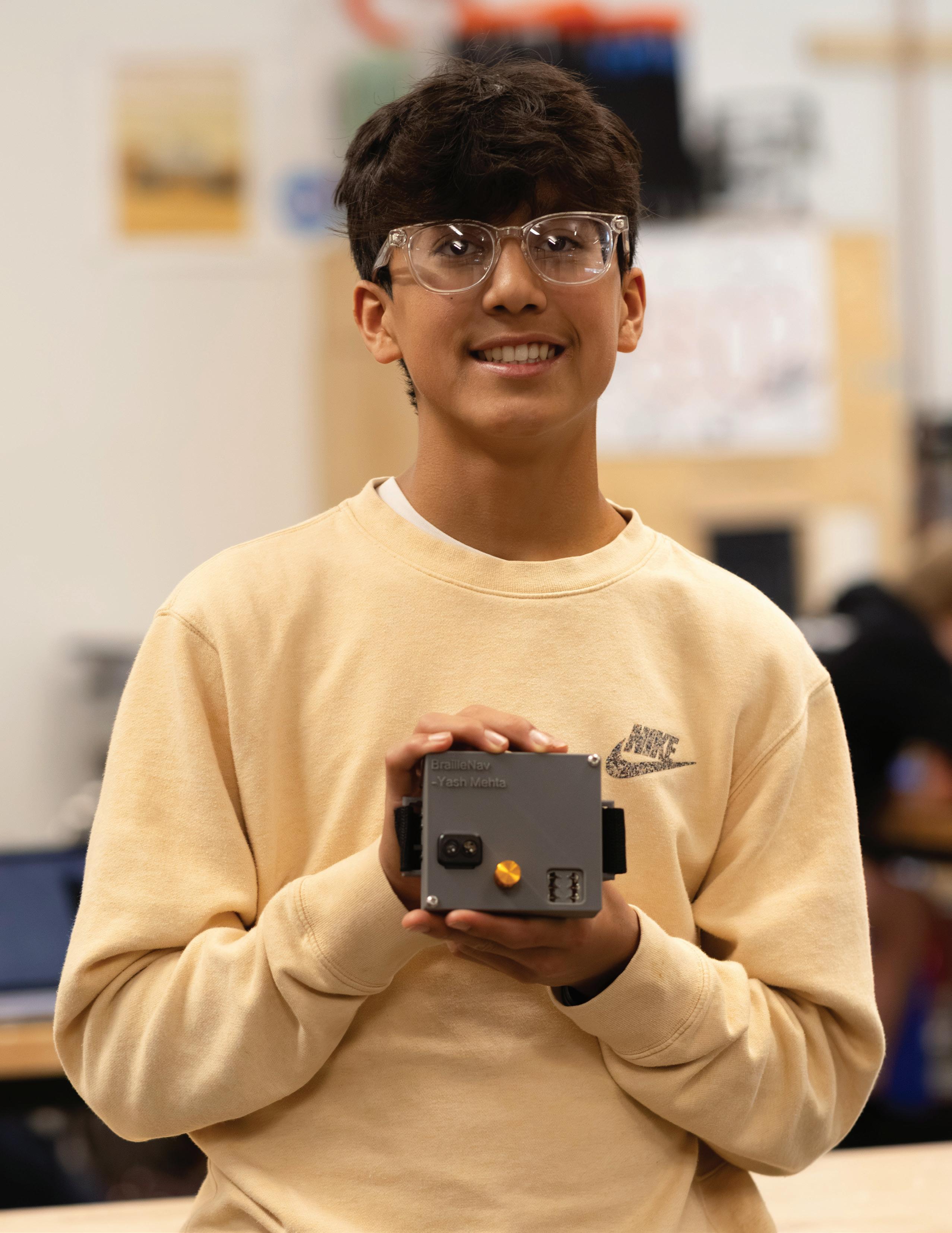
By Melody Guyton Butts
When deconstructed, the elements of each mixed media piece are as lifelike as art can be. The perfectly captured ethereal luminescence of jellyfish. The sublime curl of a sucker-dotted octopus arm. The tenderness of an outstretched human hand. But taken together, these painstakingly realistic elements bewilder the viewer — which was precisely the goal of the seventh and eighth grade artists who created them.
With the aptly titled Flummox assignment, Middle School visual art teacher Fran Savarin challenged her students “to confuse the viewer, to make them go, ‘what’?” The artists started by drawing pages full of vessels, from a blender to a ballet shoe. Savarin then asked them to refine one of those receptacles and imagine it emitting a multitude of unexpected items. Creativity was unleashed: Glazed doughnuts flowed from a spigot, softballs tumbled from a popcorn box, copies of R. J. Palacio’s Wonder sprang from a microwave.
Students were free to create these items using a range of media and techniques — hand-drawing, watercolor, photography — and reproduced them in a variety of sizes before carefully cutting them out and adhering them to backgrounds they had sprayed with vibrant watercolors. Adding to the challenge was that the vessels had to be anchored by another object, rather than seemingly floating in space. Hence, balloons hoisting a SPAM can and a hand reaching onto the page to pour from a pitcher.
“They blew me away. This says a lot about these two classes, which each have both seventh and eighth graders,” said Savarin midway through her final year of teaching before retiring in June. “They work really well together, and they motivate each other. ... They kinda set a new bar.”
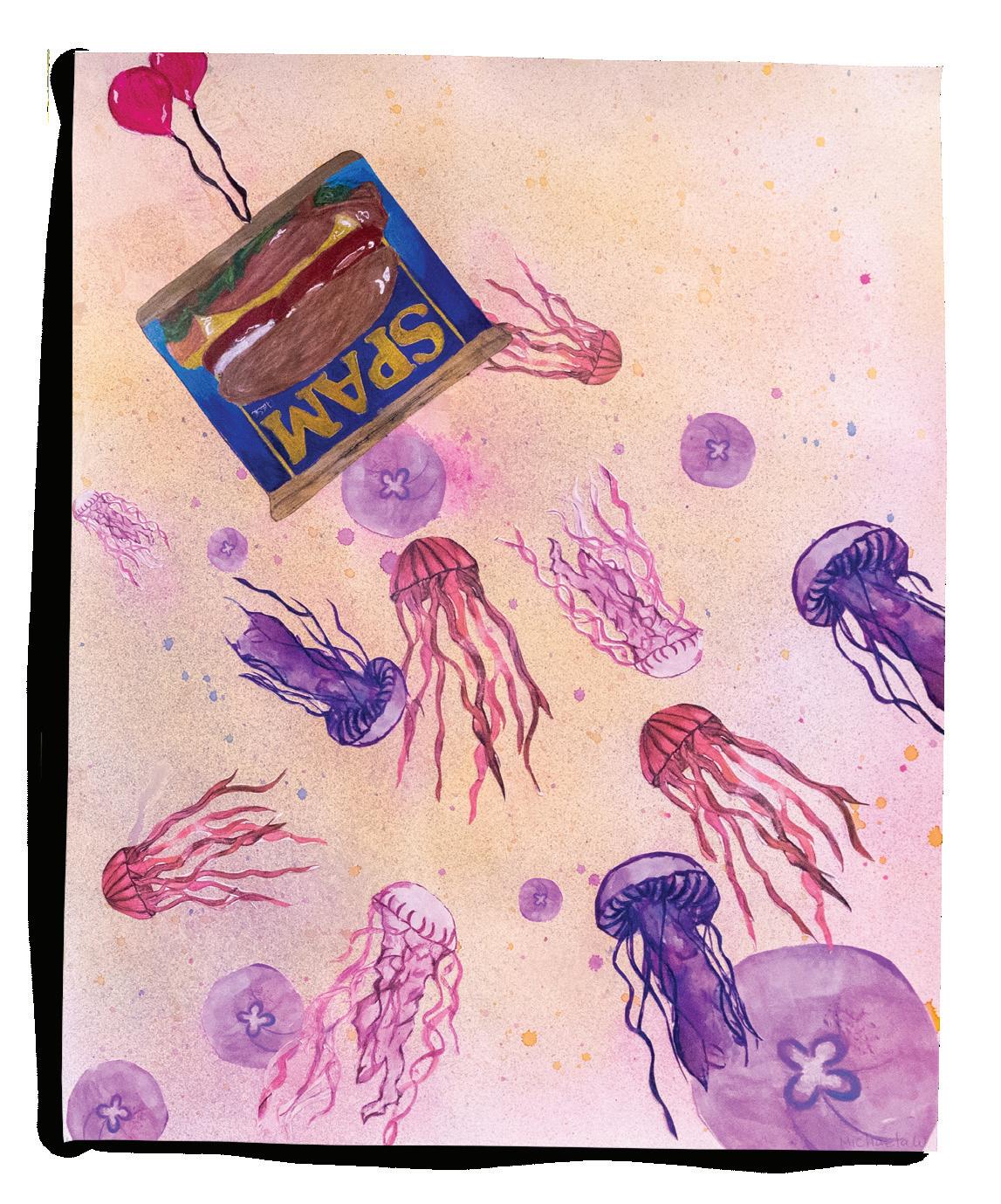
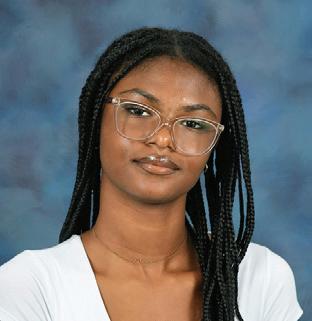
“Jellyfish were one of the first things I started drawing and was good at. … For this project, I wanted to show jellyfish from different angles. The underside is probably the hardest part to draw.”
Michaela Warren ’29


“I liked making the hand. It was a challenge to get the shading right. I messed up on the first one, so I used it for playing around with the watercolor and seeing how things would turn out.”
Jade Zhang ’29
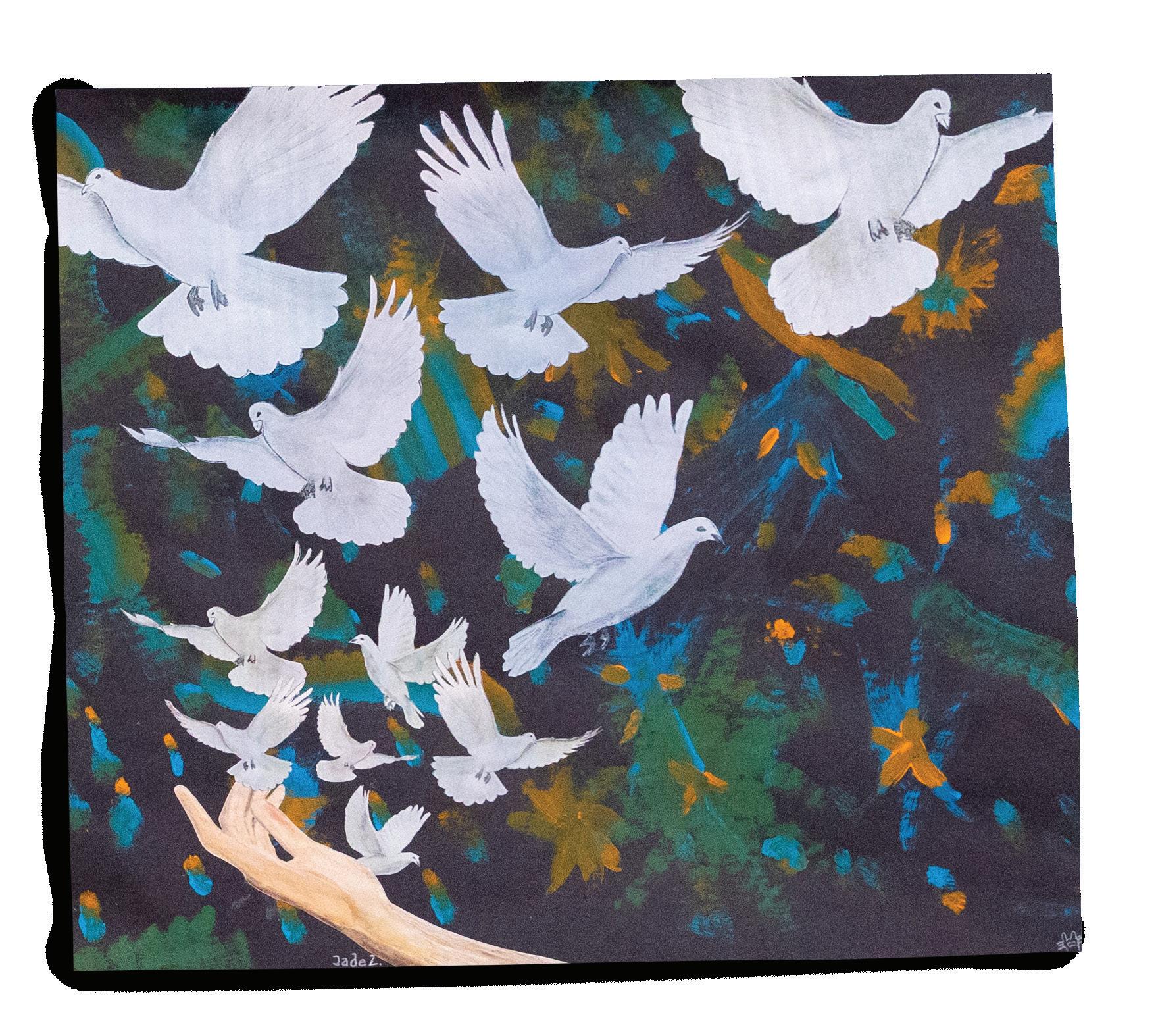
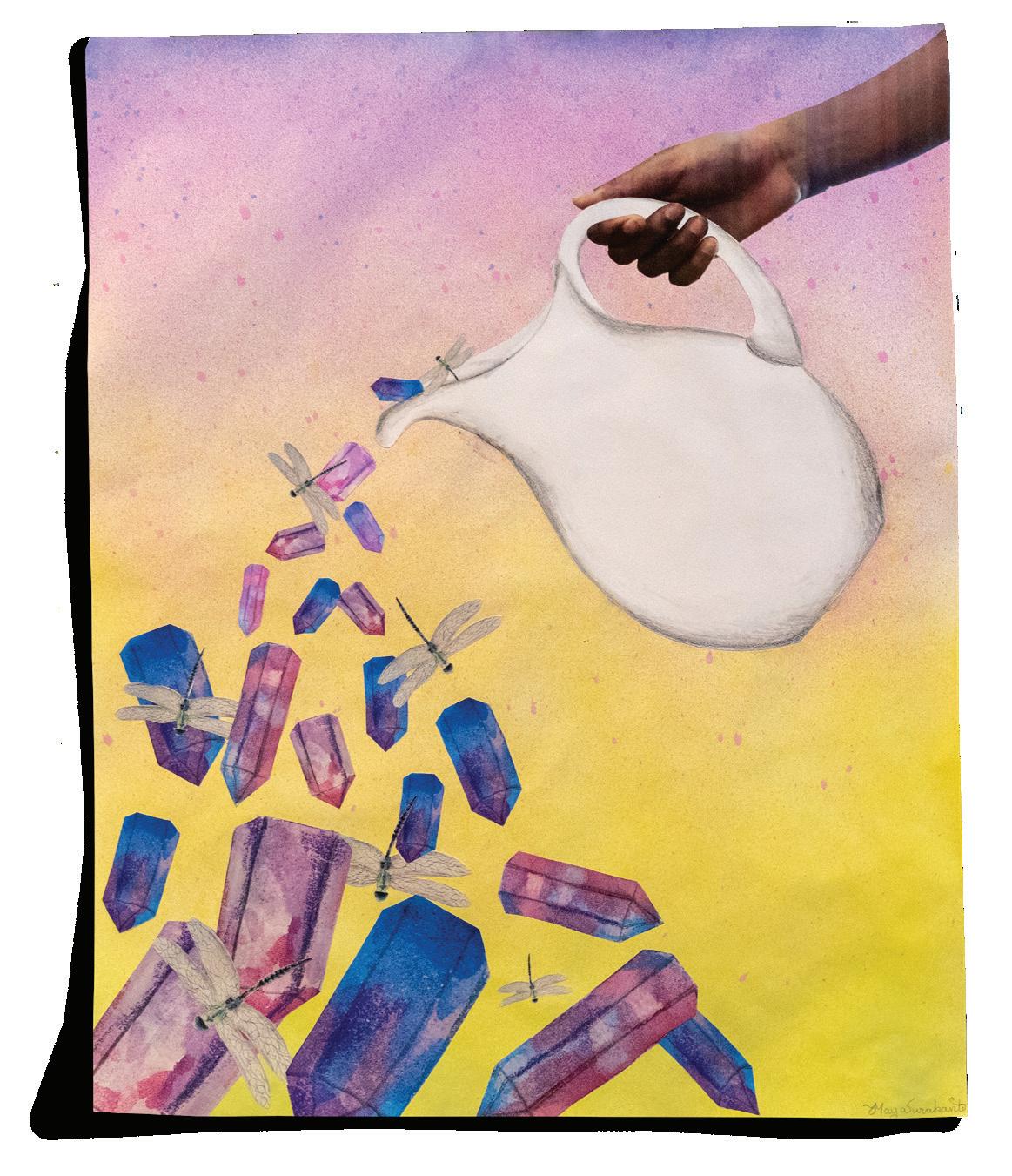

“At the beginning, I was immediately like, ‘Oh, no: This is not supposed to make sense.’ I’m a perfectionist, and I always want my drawings to make sense. … But in the end, I just had a really fun time breaking out of that ‘it needs to be perfect, it needs to make sense’ [mindset]. Ever since, I’ve been trying to do more abstract art in my sketchbook, and I’ve had a really fun time with it.”
Maya Surakanti ’30

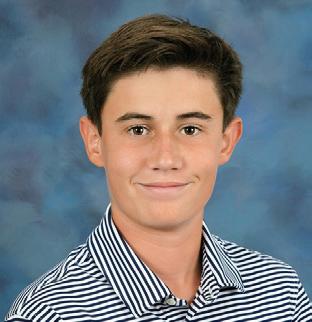
“I watercolored one crab that was as big as my hand. Then I photocopied it at different sizes and used a razor to cut them out. … If you cut off one of the legs, you’d have to start over.”
Graysen Black ’29

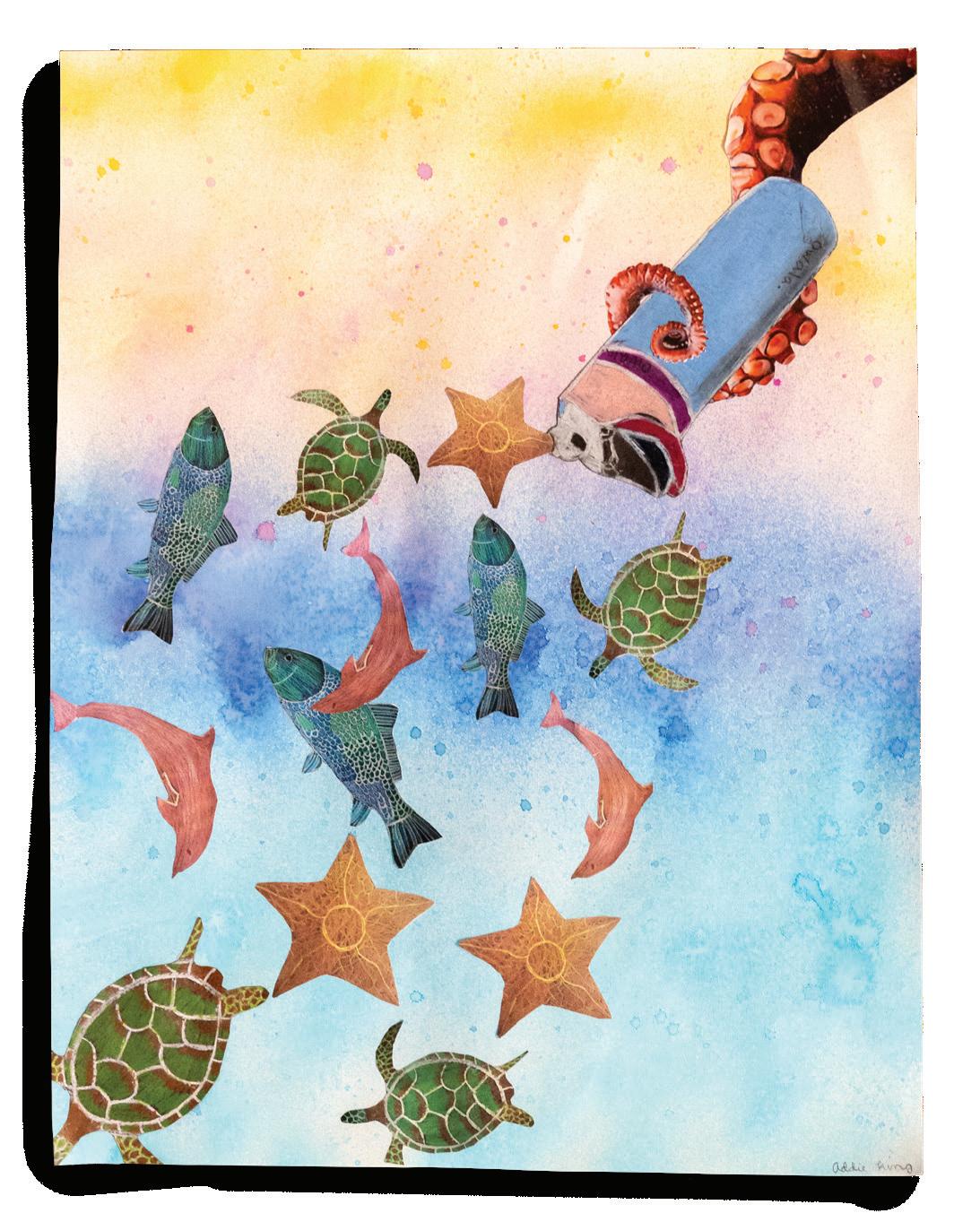
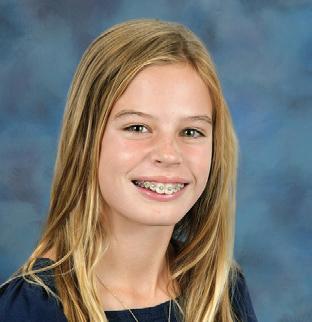
“For this assignment, we had to kinda think outside the box and be creative. And that’s what I’ve been trying to do for each of our new projects — to be creative and do something different from what other people have done.”
Addie King ’30
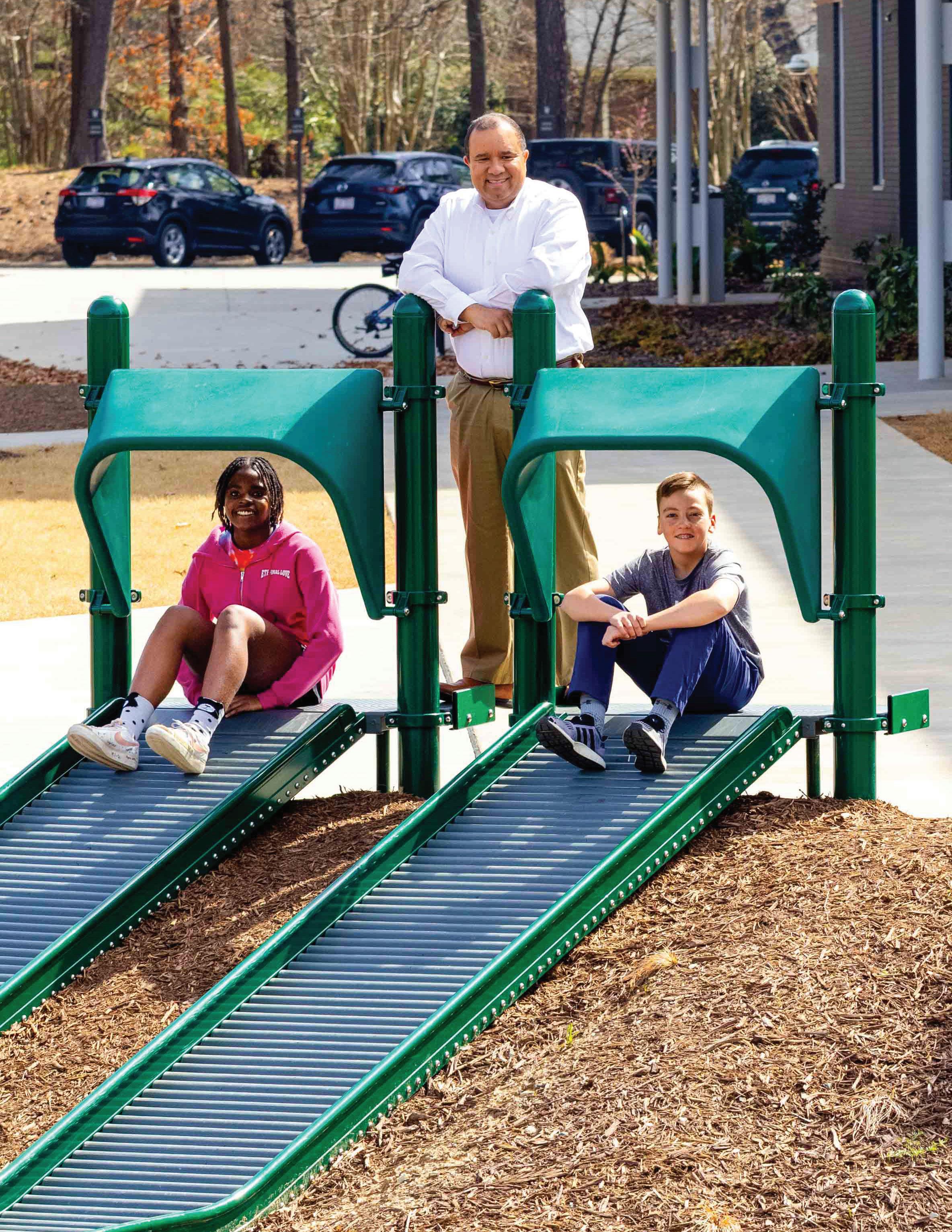
It is little wonder that Jason Mundy — in his now former role as Durham Academy’s director of Diversity, Equity and Engagement — maintained a conspicuous presence at DA Middle School. He split his office hours between the Ridge Road and Academy Road campuses. He frequented the pickleball courts after school and squared off against Middle School faculty. He has volunteered in each of his three years at DA as a chaperone on the sixth grade’s annual Camp Kanata trip. His heart, Mundy learned, was still in middle school — and, as he would learn in time, at DA Middle School.
“It is a campus brimming with excitement, where students are engaged and encouraged to take the lead,” said Mundy, who assumes the role of Middle School director on July 1. He succeeds Jon Meredith, who led the Middle School for 14 years. “None of this is possible without the steadfast guidance of middle school teachers,” Mundy said. “DA Middle School is a collection of superstars setting high bars and helping kids over them.”
This genuine love and care for the Middle School — along with more than a decade of previous experience as a division director — distinguished Mundy in a nationwide search that drew more than 130 applicants and spanned nearly four months. Middle school is, as Mundy said during his interview process, a time of “self-discovery as young people work out who they will become.” It was, too, for Mundy some years ago as a student at Asheville’s A.C. Reynolds Middle School, where his voracious appetite for reading and equally insatiable penchant for kindness — he was named the eighth grade’s “Friendliest” boy in his yearbook’s superlatives — would shape the division director who will soon stroll the halls of the Gateway Center as its director.
To bridge the decades between Mundy’s graduation from eighth grade and the beginning of his tenure as Middle School director, we asked a pair of rising eighth graders — James Moorhead ’30 and Venia Lekavich ’30 — to weigh in on their favorite things as middle schoolers, and to compare them with those of an A.C. Reynolds Rocket from yesteryear.
Favorite Book
Mundy: A Separate Peace by John Knowles
Lekavich: We Deserve Monuments by Jas Hammonds
Moorhead: Unbroken by Laura Hillenbrand
Favorite Movie
Mundy: The Goonies
Lekavich: Hidden Figures
Moorhead: The Bourne Ultimatum
Favorite TV Show
Mundy: Knight Rider starring David Hasselhoff
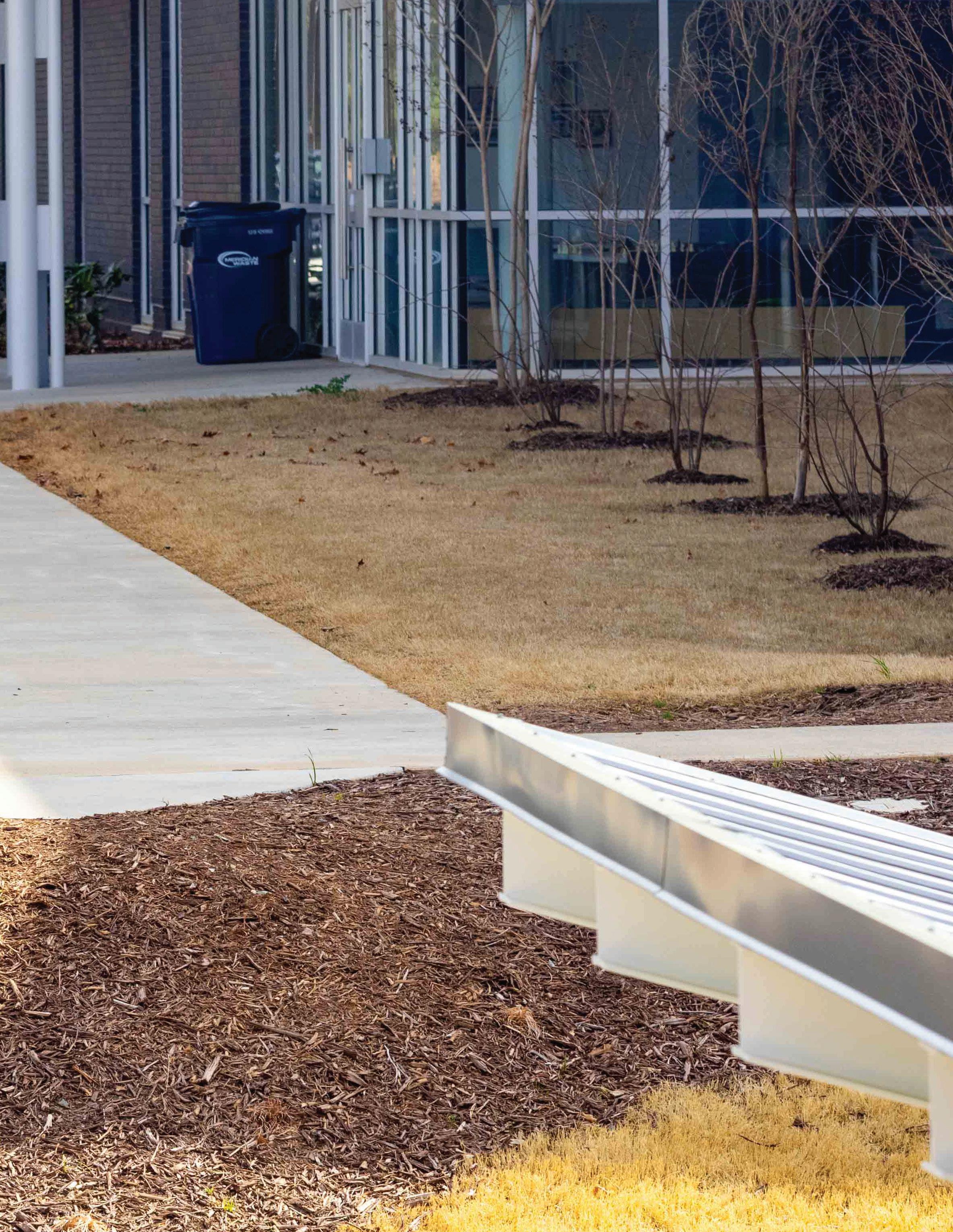
Lekavich: The Amazing World of Gumball
Moorhead: Ted Lasso
Mundy: “Have you heard of ‘The Hoff?’”
Lekavich: (Laughs) “No.”
Mundy: (Laughs) “That was a little sassy of a ‘no’ — a little judgey.”
Favorite Outfit
Mundy: Members Only jacket
Lekavich: Anthropologie jeans with heart outlines; red top; cropped jacket
Moorhead: T-shirt and shorts/pants
Mundy: “This is what I wore basically every day of eighth grade — with a little bit of an afro, believe it or not. Do you think I could have pulled this off?”
Moorhead: “Yep.”
Lekavich: (Smiles, raises her eyebrows, looks sideways)
Mundy: (Laughs) “She’s killing me. She’s killing me over here. She’s laughing about Knight Rider, ‘The Hoff,’ the jacket.”
New Middle School Slang that Mr. Mundy Needs to Know
Lekavich: “Skibidi.”
Mundy: “‘Skibidi?’”
Lekavich: “I don’t really know the definition.”
Moorhead: “That happens with a lot of words.”
Lekavich: “I don’t know what it means. Like: ‘What the skibidi?’ It’s like using ‘like’ sometimes.”
Mundy: “‘Skibidi’ is going to be hard.”
Moorhead: “I’ll go with ‘W’ for ‘win.’”
Mundy: “I found out that when my students in 11th grade are doing badly on something, they say they’re ‘cooked.’”
Moorhead: “Yeah, that’s another one.”
Mundy: “And one of them said they were ‘cooked well done.’”
What Mr. Mundy Needs to Know About DA Middle School
Moorhead: “It’s a special place. There are so many resources — academically and in a lot of other fields like sports.”
Lekavich: “The diversity. People are so open to who you want to be. I think that’s pretty cool.”
What Middle Schoolers Need to Know About Mr. Mundy
Mundy: “I want to bring high standards with the decency to help people get to it. I want to bring loyalty. When students are pulling in for drop-off, I’m gonna be standing out there opening car doors and greeting people. I’m fascinated to see those fifth graders as young kids when they start in middle school. To think you have a hand in the young people that they are when they leave? That’s gonna be fantastic. I hope it’s all of those middle school memories, all 29 years of experience sort of coming to bear in making the Middle School a great experience for those kids and those teachers.”

1,711 pounds of waste diverted from landfills via composting each month on average
installed in the new Upper School Elder Oak Commons (at the corner of Pickett and Ridge Roads) by students of all ages, faculty, staff and parents
92,000 kwh/year expected reduction in electrical consumption thanks to new LED lighting in the Preschool and Lower School
entering the Preschool/Lower School campus daily (baseline for carpool effort, as established by Upper School engineering students)
6 hours of student-organized programming — from breakout sessions to Zoom conversations with Taiwanese students — at the third annual Sustain-In
Durham Academy’s commitment to protecting our natural world is visible in all segments of our community. You can see it in the kindergartners who eagerly pass along composting tips to their parents; in the families who have volunteered to remove invasive plant species from neighboring Sandy Creek; in the teachers incorporating sustainability into their curricula; and in the trustees who in December 2023 endorsed sustainability as a top-level priority, supporting an ambitious set of goals sought by adult and student leaders.
Those goals are at the center of DA’s new Sustainability Action Plan, which includes metrics, initiatives and timelines. Much of the early work has been in establishing baselines — labor-intensive work that is itself cause for celebration — and the 2024–2025 school year also brought a number of tangible, quantifiable successes.
• Educate for sustainability at every level and in every subject
• Reduce greenhouse gas emissions by 25%
• Increase biodiversity of campuses by at least two acres
Explore the full Sustainability Action Plan at da.org/sustainability.
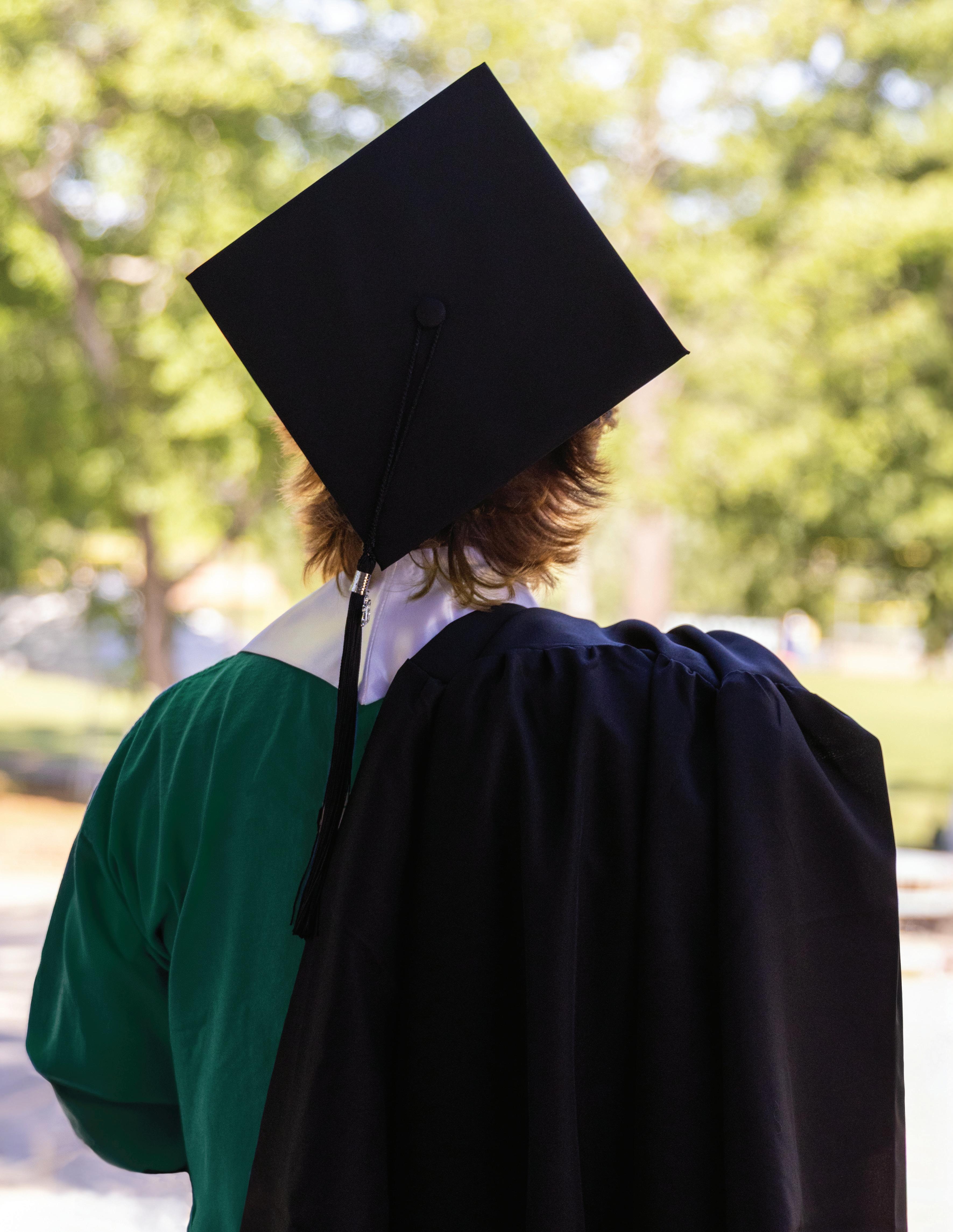
Photography By Black Mountain Expeditions, DA Marketing & Communications, Evan Pike Photography & Upper School Faculty Members
The world is already feeling the impact of Durham Academy’s Class of 2025. Among the 115 seniors are award-winning writers. A music composer and a sports commentator. Tutors who have inspired light-bulb moments for young readers. Nationally competitive debaters. Student-athletes who have mounted incredible comebacks, and those who are state champions. And just as important, these newest DA alumni are known for being supportive friends, enthusiastic encouragers and courageous leaders. World, let us introduce you to the Durham Academy Class of 2025.

We are not perfect — but we are present. And being present has never meant just showing up physically. It’s meant showing up emotionally, mentally, for each other and for ourselves. It’s meant helping someone with a college essay not because you had time, but because you believe in their story. It’s meant whispering encouragement before a speech or cheering a little too loudly during a match or a game.
“It’s meant planning Taste of the World together, coordinating our spirit week themes. It’s meant grieving together, laughing together and — sometimes most powerfully — just sitting quietly beside one another, when there were no words that needed to be said.”
Joel Tapper Commencement Welcome
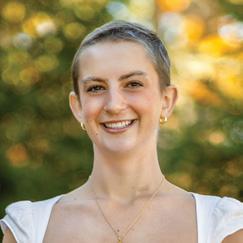

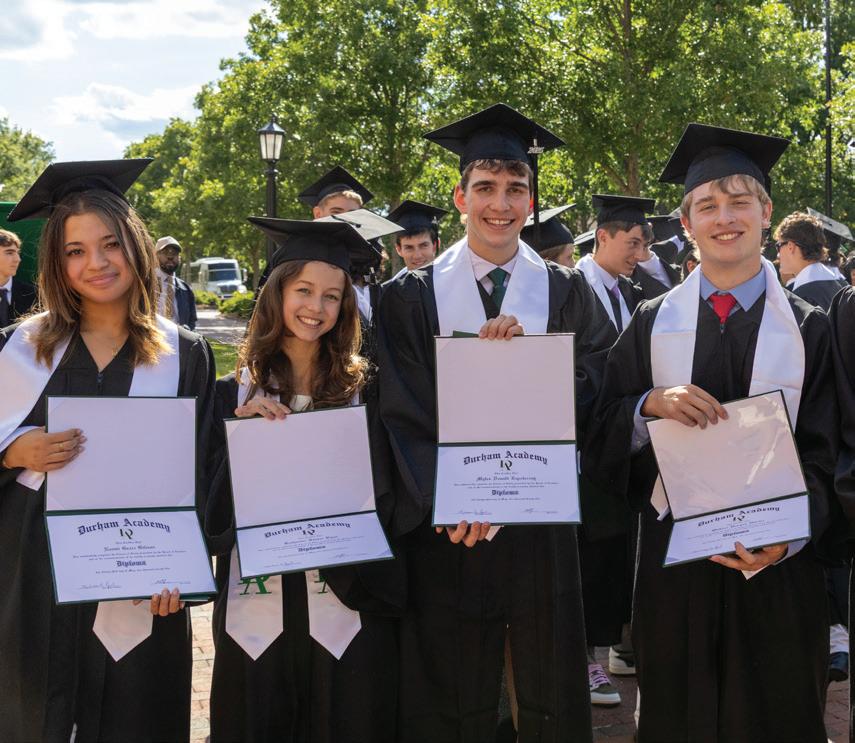

“One of the most amazing adults on campus is Dr. Cindy Moore! She was kind enough to put up with my friends and me in middle school hanging out and eating lunch in her office every single day. During the pandemic, it was so nice to have an adult on campus that we could talk to about anything and always know she would be there for us. Even since leaving the Middle School, Dr. Moore has been a figure in the DA community that I always know I can count on, even just for a hug sometimes.”
Kendall Turner
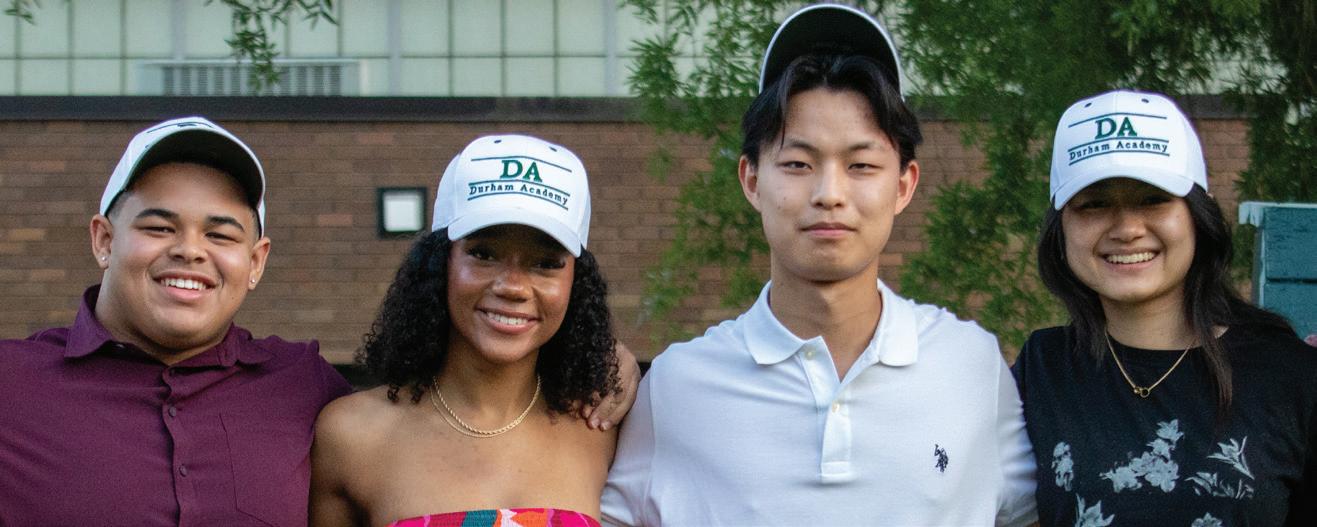

“For me, DA was like a second home — the faculty treated me as though I was their own child and would constantly check in on me to make sure I was doing well.”
Eva
Crowley

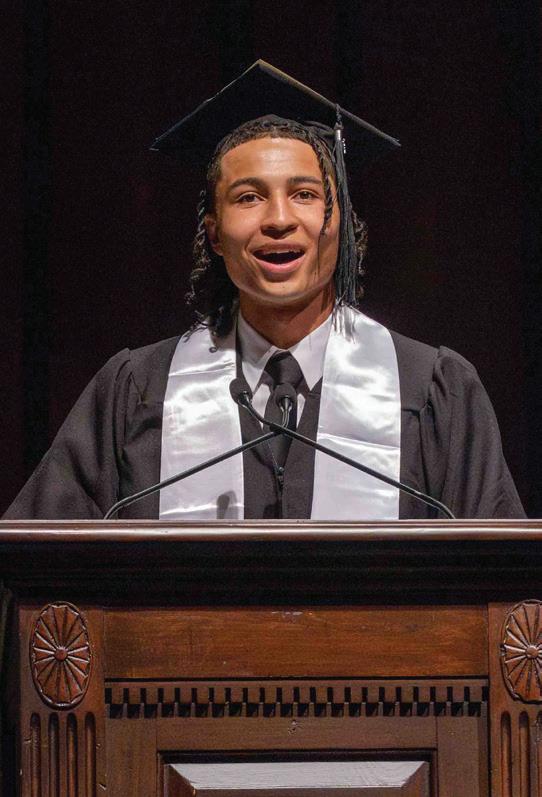
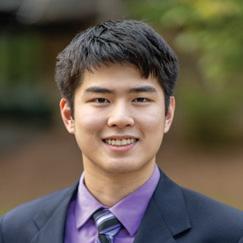
“Above all, be open-minded. A lot will change during high school, and you likely won’t come out the other end of it as the same person. With that in mind, try new things! You never know what the next big thing you’ll love to do will be.”
Oliver Guan

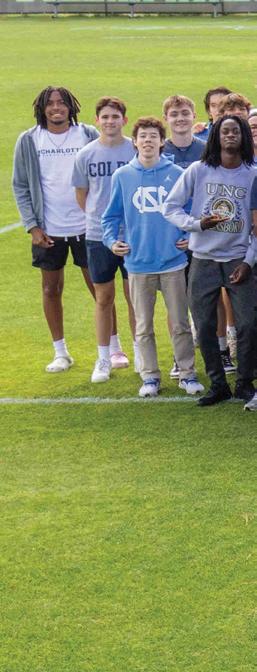



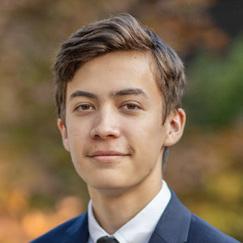
“One unique experience at DA I had was [Cavalier] Capstones, specifically, my trip to Iceland. Having the opportunity to visit a breathtaking country like Iceland, especially with some of my closest friends, was an amazing experience.”
Marcus Vermeulen
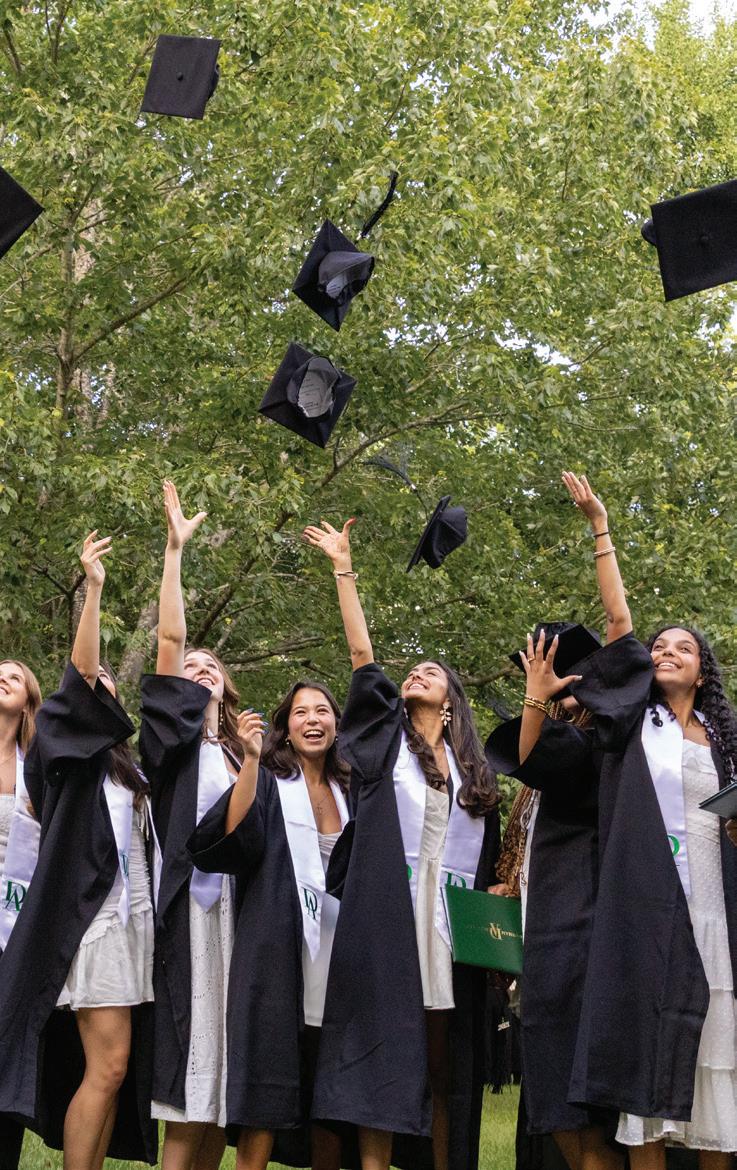
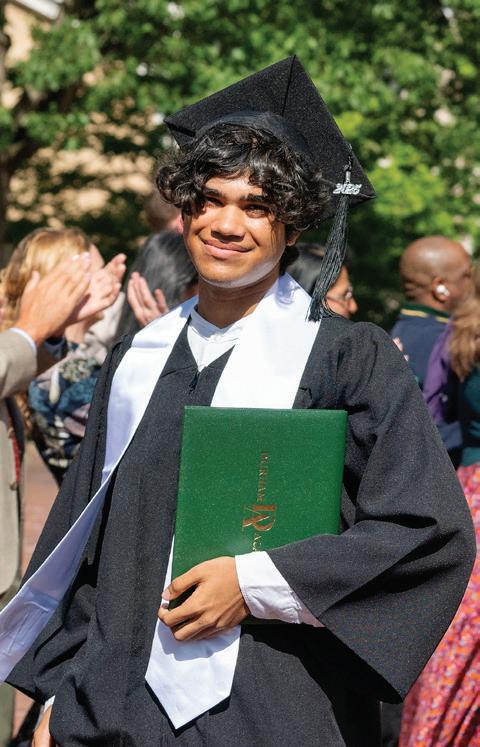

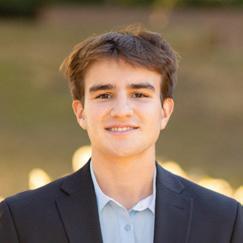
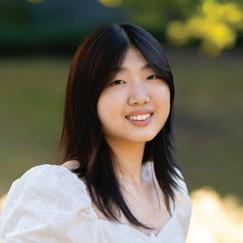
“Kelly Teagarden [’04] has uplifted me in ways I can’t even begin to explain; I feel empowered to reach as far as I do and build unexpected connections thanks to her encouragement.”
Lexie Chen

“I first met Mr. [William] Edwards when I tried out for the JV tennis team when I was in seventh grade. I did not make the team but Coach Edwards told me to keep trying. The next year, I still did not make the team, and he kept telling me to never give up. He pushed me to become the man I am today. I made the JV team freshman year of high school, and I have played on varsity ever since. In the classroom, Mr. Edwards treated me with incredible kindness, and taught anatomy class with much joy. He made my time at DA great.”
Sarp Erden
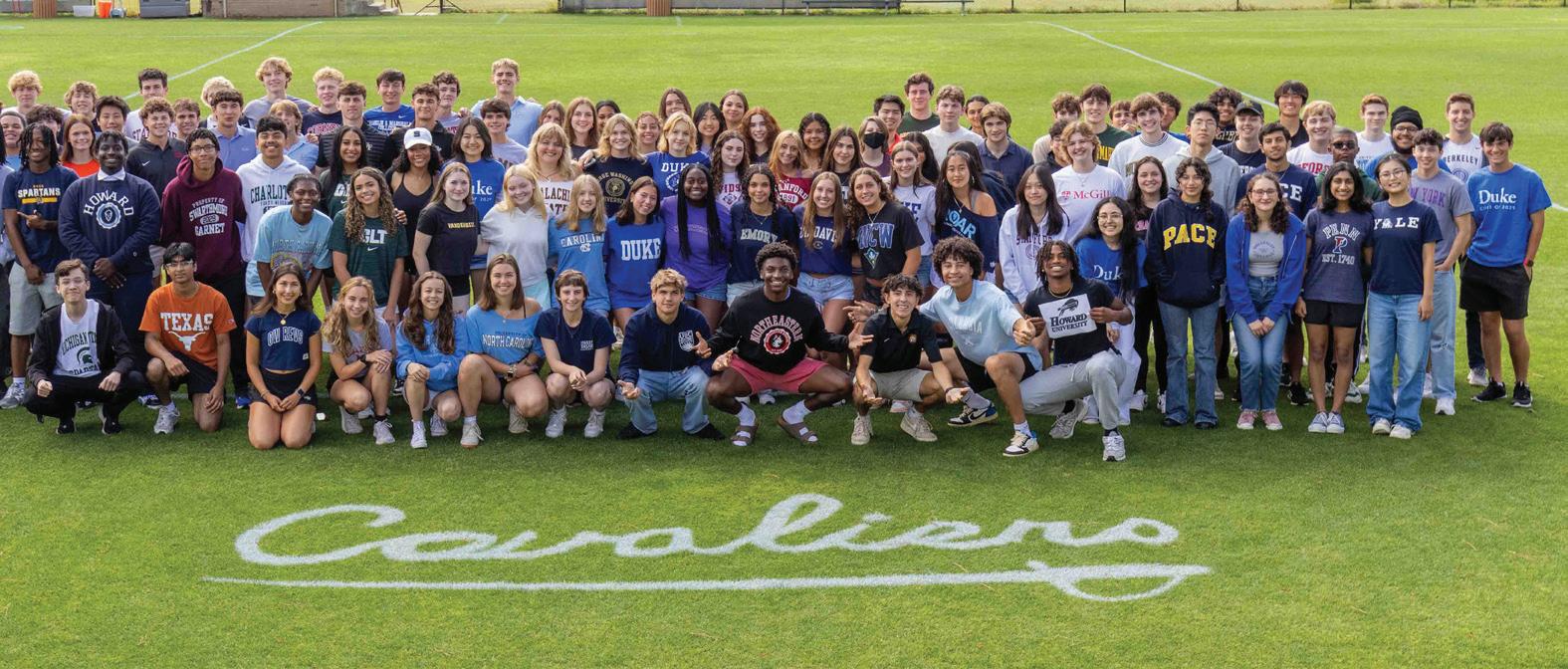
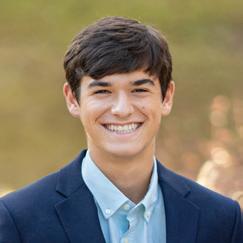
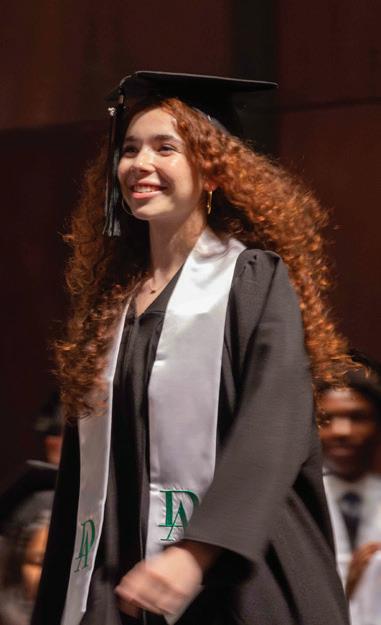
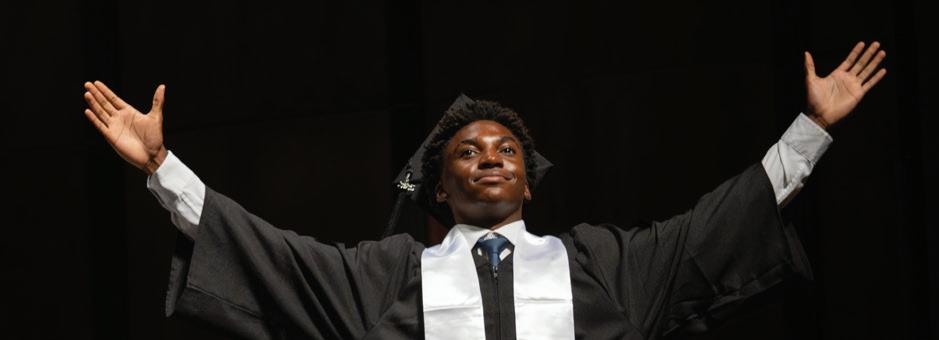

“Not only has DA set me up for success by providing opportunities for me to pursue and putting systems in place to help me thrive, it has also allowed me to connect with a ton of amazing people. I couldn’t imagine my life without DA.”
Luis Pastor-Valverde

“I’m so grateful to say I have been at DA since the first grade, and throughout the entirety of my time here, I can confidently say this school has treated me with love and like a family.”
Troy White


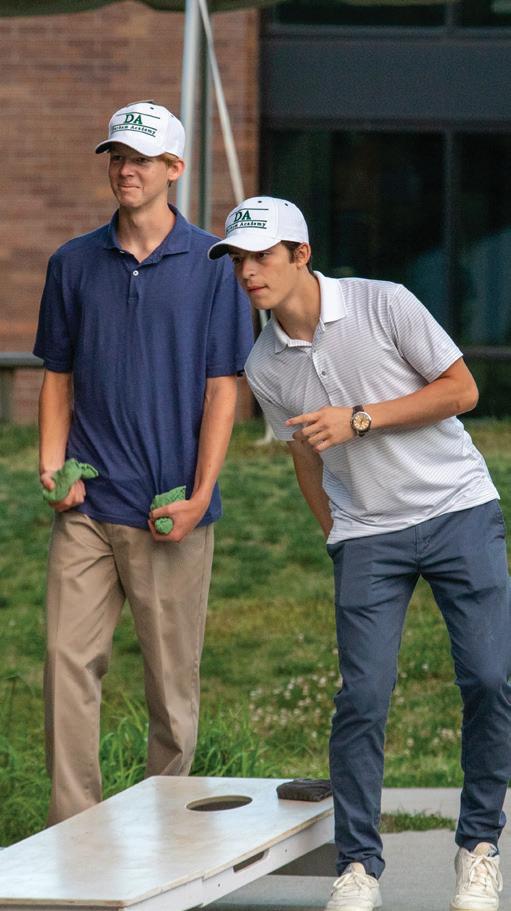
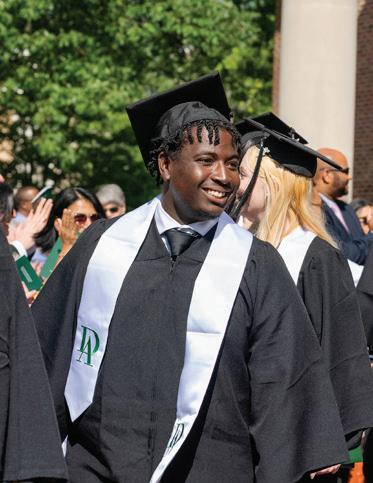
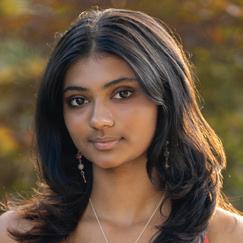
“Embrace challenging classes, even the ones you might dread in the moment. Some of the courses I struggled the most in ended up teaching me the most and are now the ones I look back on most positively.”
Asha Kumar
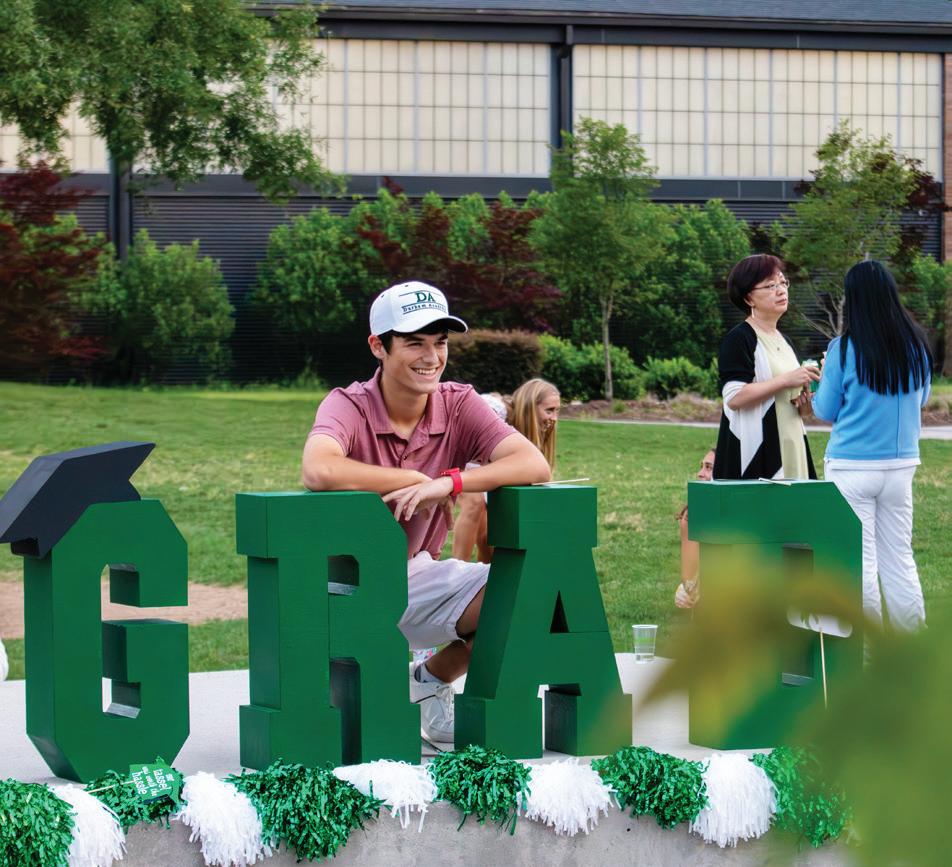
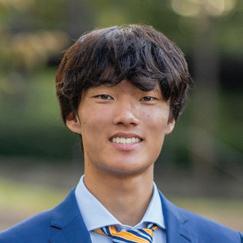
“Ms. [Debbie] Suggs was my first grade teacher, and I will forever be an FFGE [Fabulous First Grade Explorer]. She made every day incredibly fun with the positivity and love she brought to class, and I will never forget her impact.”
Andrew Lim
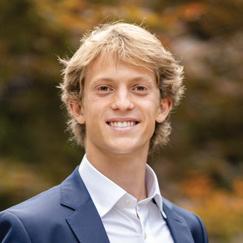
“I have been at Durham Academy my entire life. Ever since pre-k, I’ve forged unforgettable memories with friends I will know for the rest of my days. DA is my community, and I wouldn’t be the same person without the countless memories and people who helped get me to where I am today.”
Merritt Schulz
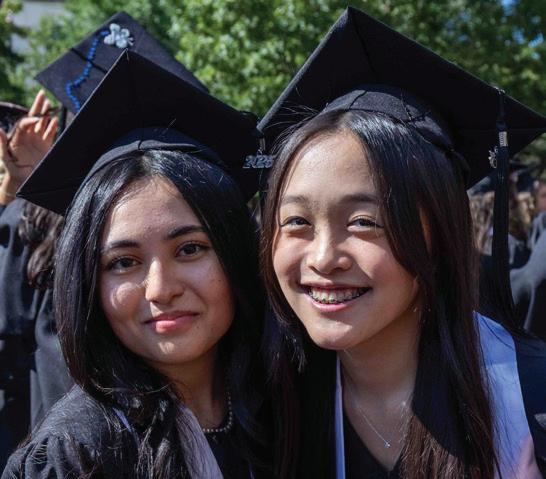
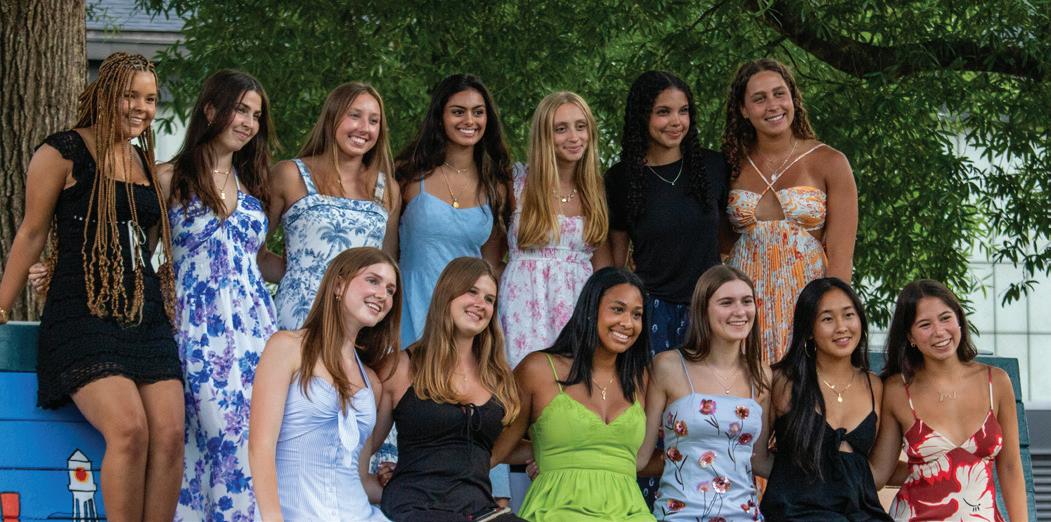
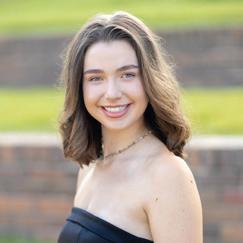
“We built the softball team up from the ground. My seventh grade year, we almost didn’t have a team, but now we are ending our regular season 8–8 and with a full, strong team.”
Whitney Wiles
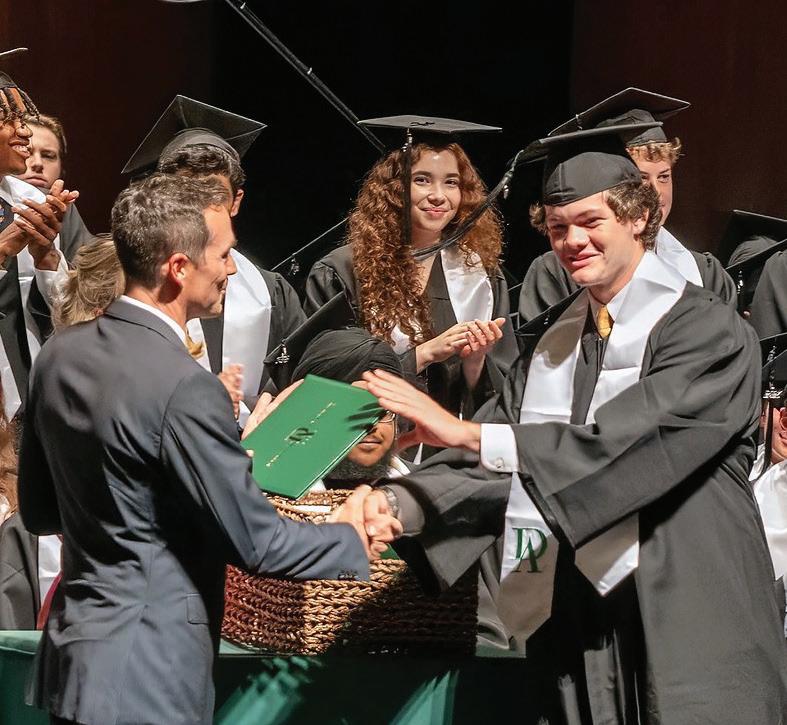


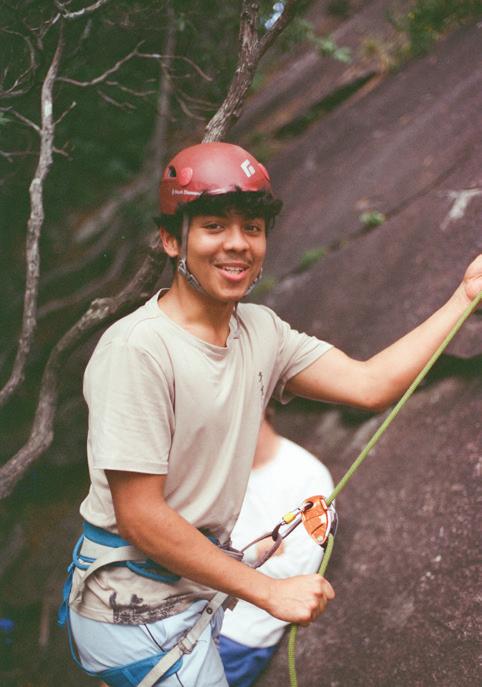


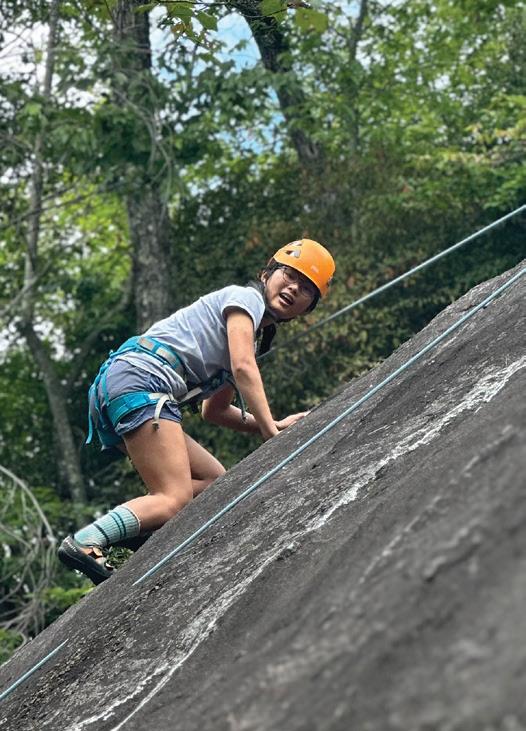
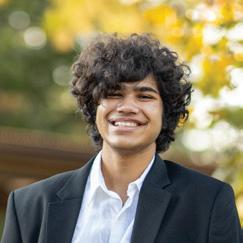

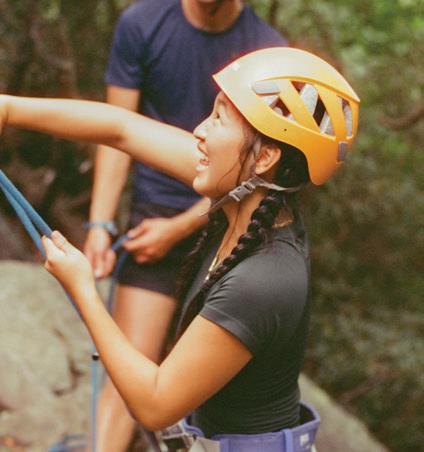
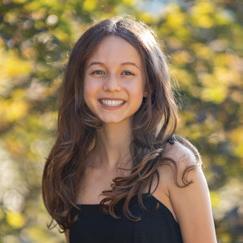
“Mrs. [Paula] Marr has had a huge impact on my experience at DA. … Through MUN [Model UN] and her inspiring classes, I’ve developed skills in public speaking, collaboration and leadership. Her mentorship has played a big role in my decision to pursue global studies at UNC!”
Kate Ryan
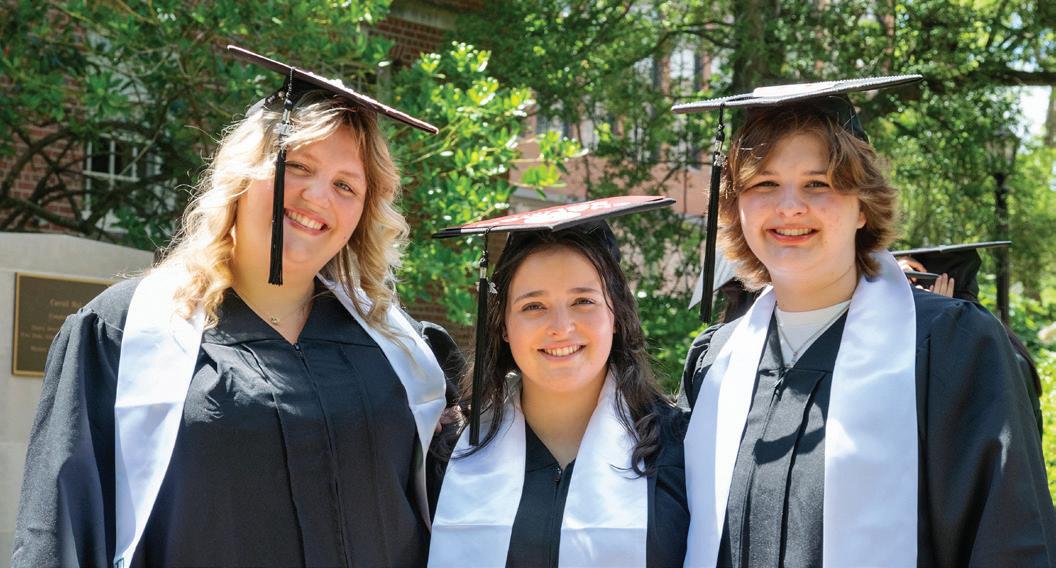
“It’s been amazing to meet so many driven, accomplished people who are taught by driven, accomplished teachers. Wouldn’t trade it for anything.”
Aneesh Patkar

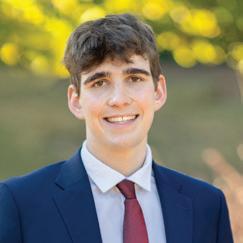
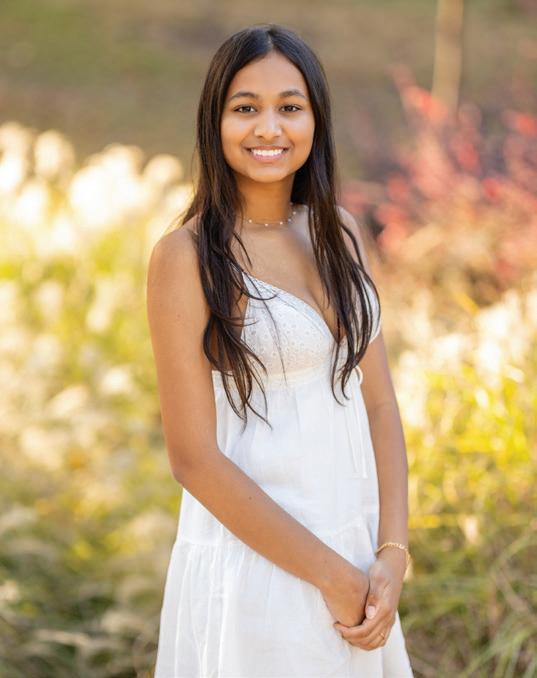

“What’s incredible about DA is how there is an emphasis on becoming a moral, happy and productive person, rather than just focusing on academics and being a good student. DA has prepared me for the next phase of my life and beyond, giving me not only the brain, but also the real-world skills — leadership, communication, public speaking, effective writing and much more — that I need to succeed.”
Myles Zapotoczny
While our time at DA converged together, each of our lives after high school will surely be uncertain. I don’t know what I’ll study, or even what city I’ll end up in. While I don’t know who I’ll become, I know the names of many whom I will strive to be like. I want to bring out authenticity like Mr. [Adam] Cluff, help others find their voice like my debate coach Jacob Palmer [’20], motivate others to look at life’s mathematical intricacies like Dr. [Aleks] Kaplon-Schilis in statistics, just be willing to give a helping hand like my brother, and be like many other people who have many other inspiring stories I’ve grown from thus far.”
Priya Aggarwal Commencement Address
Watch a video of the full commencement ceremony at da.org/commencement.
Explore profiles for each member of the Class of 2025 at da.org/graduation.

Appalachian State University
Auburn University
Barnard College
Bates College
Bennington College
Boston College
Boston University
Brown University
Case Western Reserve University
Chapman University
Colby College
Colorado College
Columbia University
Cornell University
Davidson College
Denison University
Duke University
Emory University
Fordham University
Franklin & Marshall College
George Mason University
George Washington University
Georgetown University
Howard University
Indiana University (Bloomington)
McGill University
Michigan State University
New York University
North Carolina State University
Northeastern University
Northwestern University
Pace University (New York City)
Pomona College
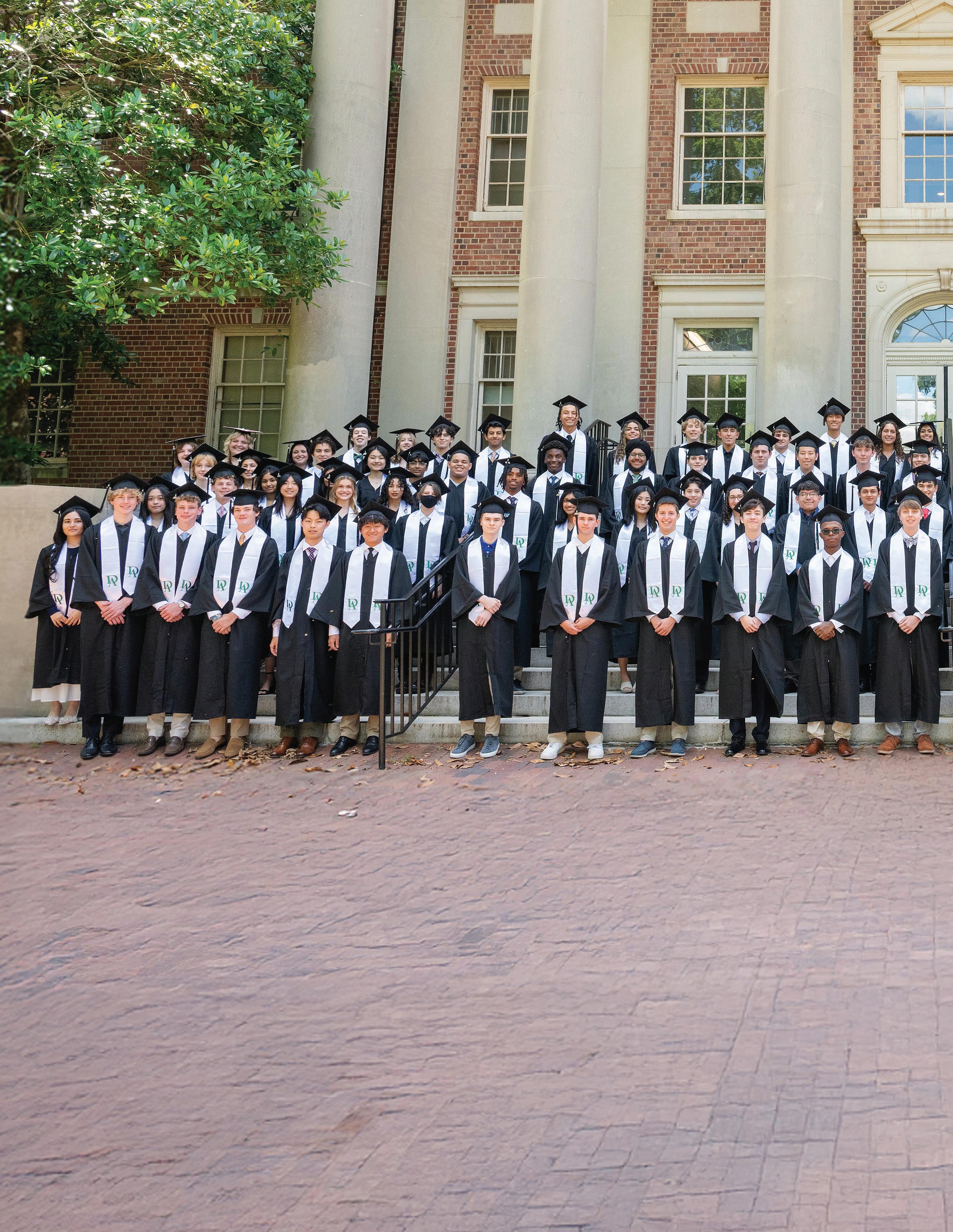
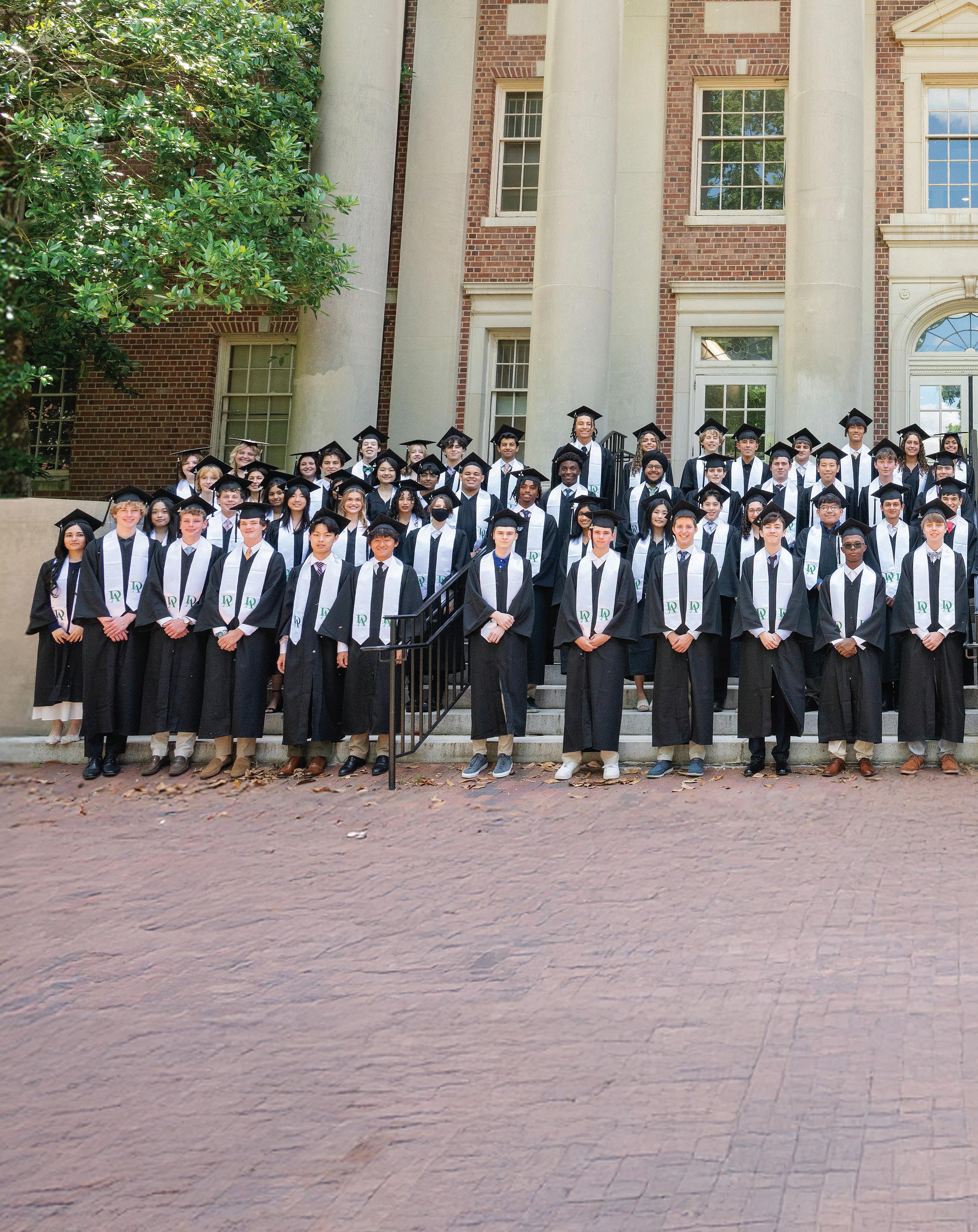
Purdue University (Main Campus)
Rice University
Santa Clara University
Smith College
Stanford University
Swarthmore College
Sweet Briar College
The University of Texas at Austin
University of British Columbia
University of California (Berkeley)
University of California (Davis)
University of Colorado Boulder
University of Georgia
University of Illinois at Urbana-Champaign
University of Miami
University of North Carolina at Chapel Hill
University of North Carolina at Charlotte
University of North Carolina at Greensboro
University of North Carolina Wilmington
University of Notre Dame
University of Pennsylvania
University of South Carolina
Vanderbilt University
Virginia Military Institute
Wake Forest University
Washington University in St. Louis
Wellesley College
William & Mary
Yale University
List includes Class of 2025 college decisions as of June 4.
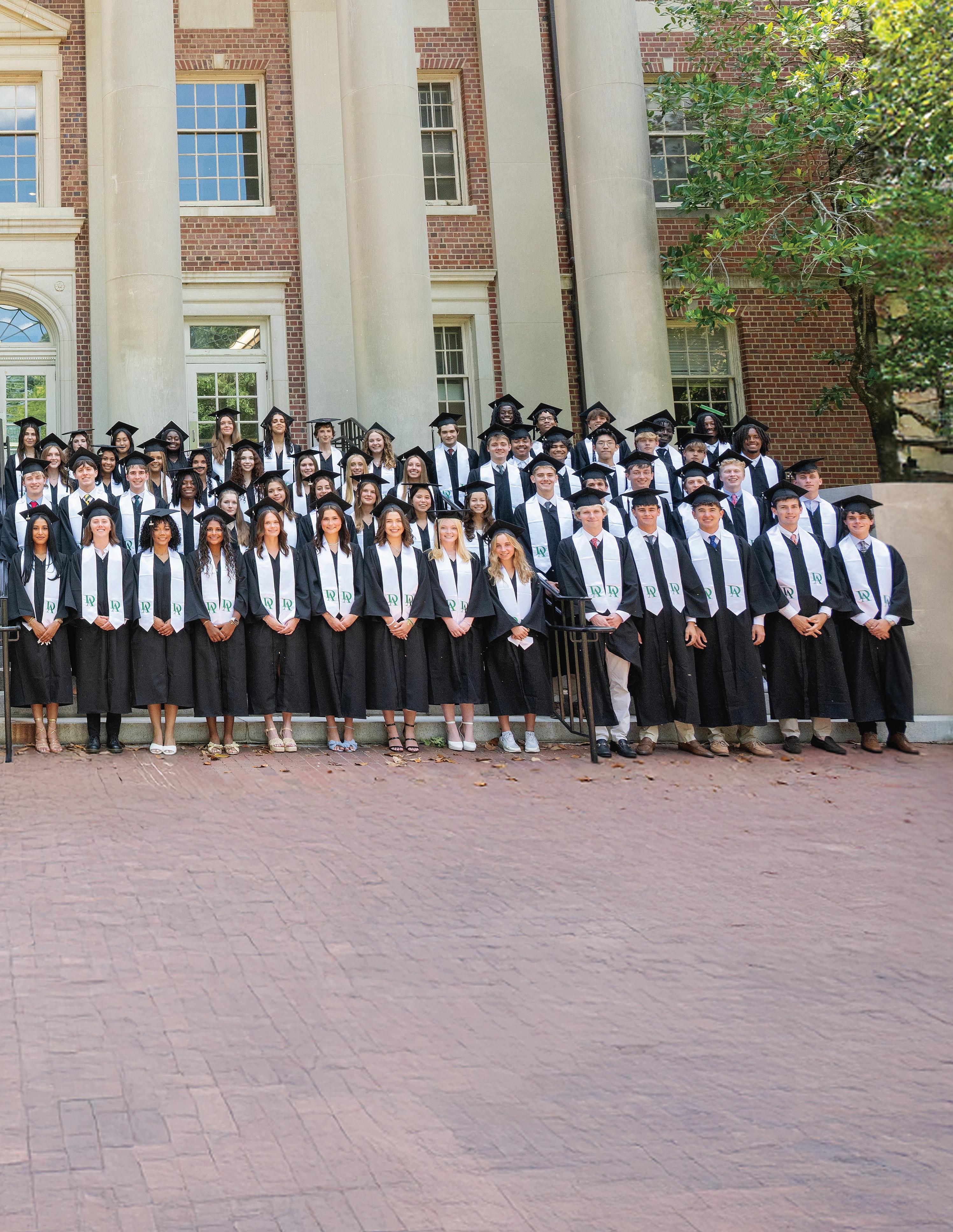
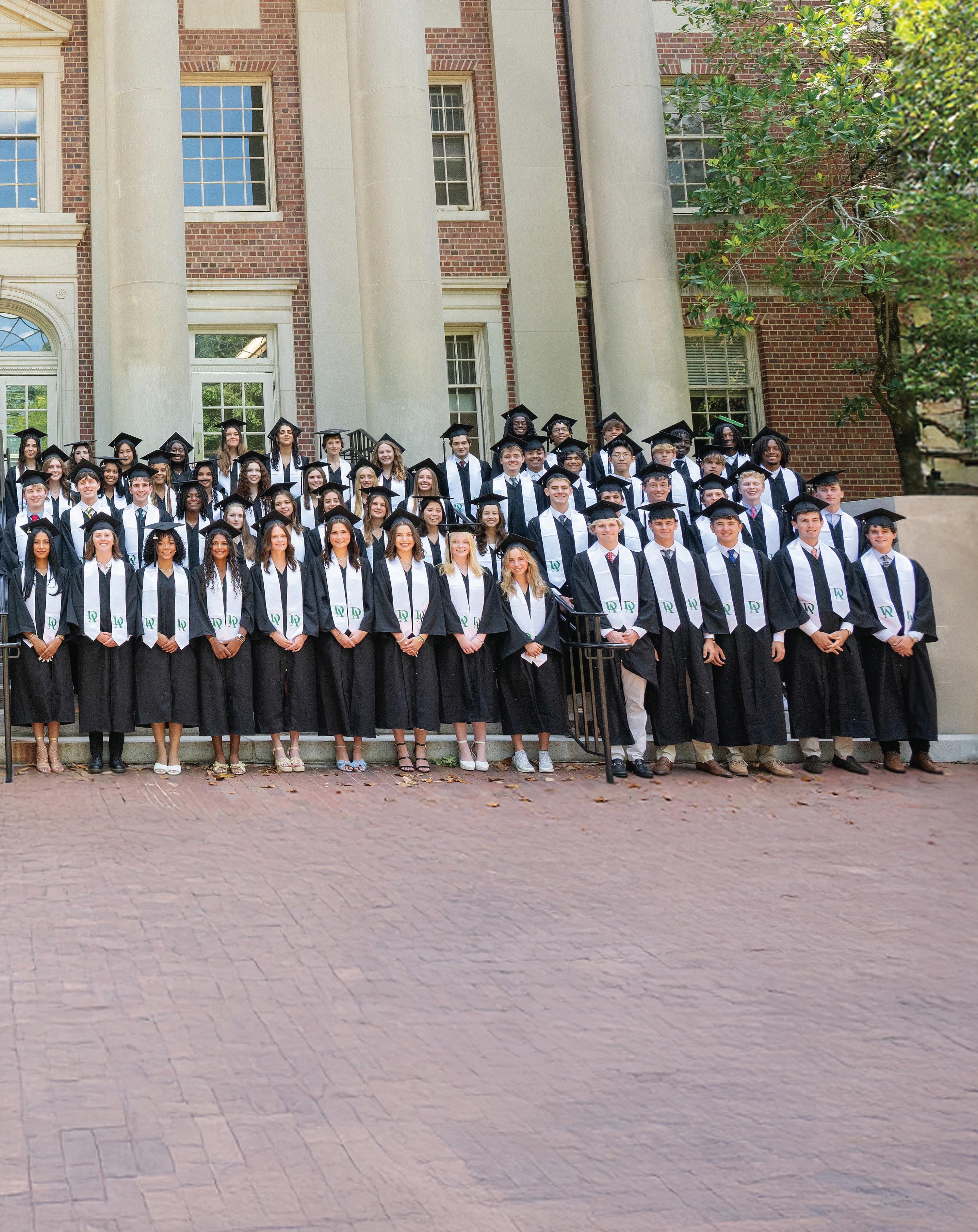
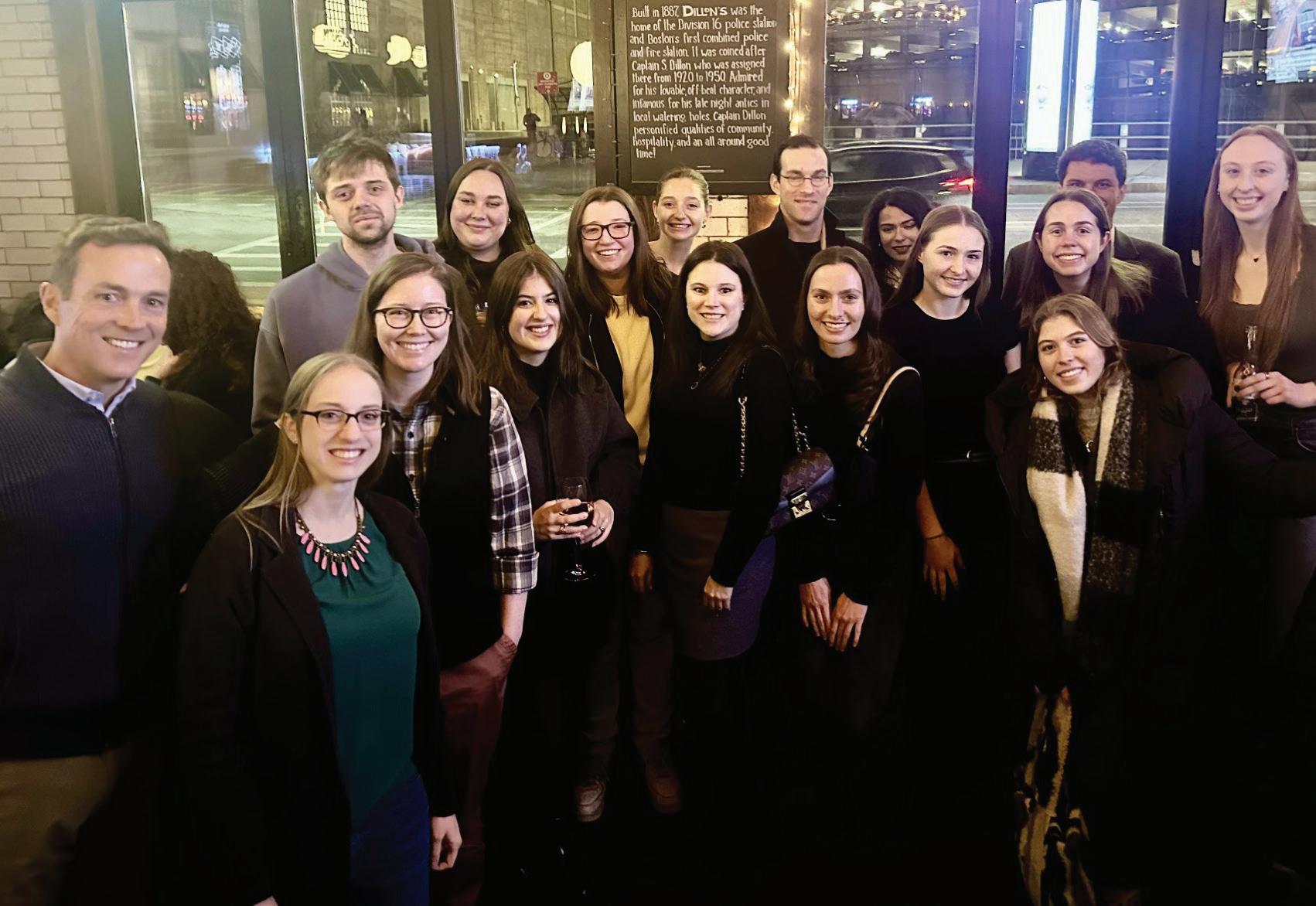
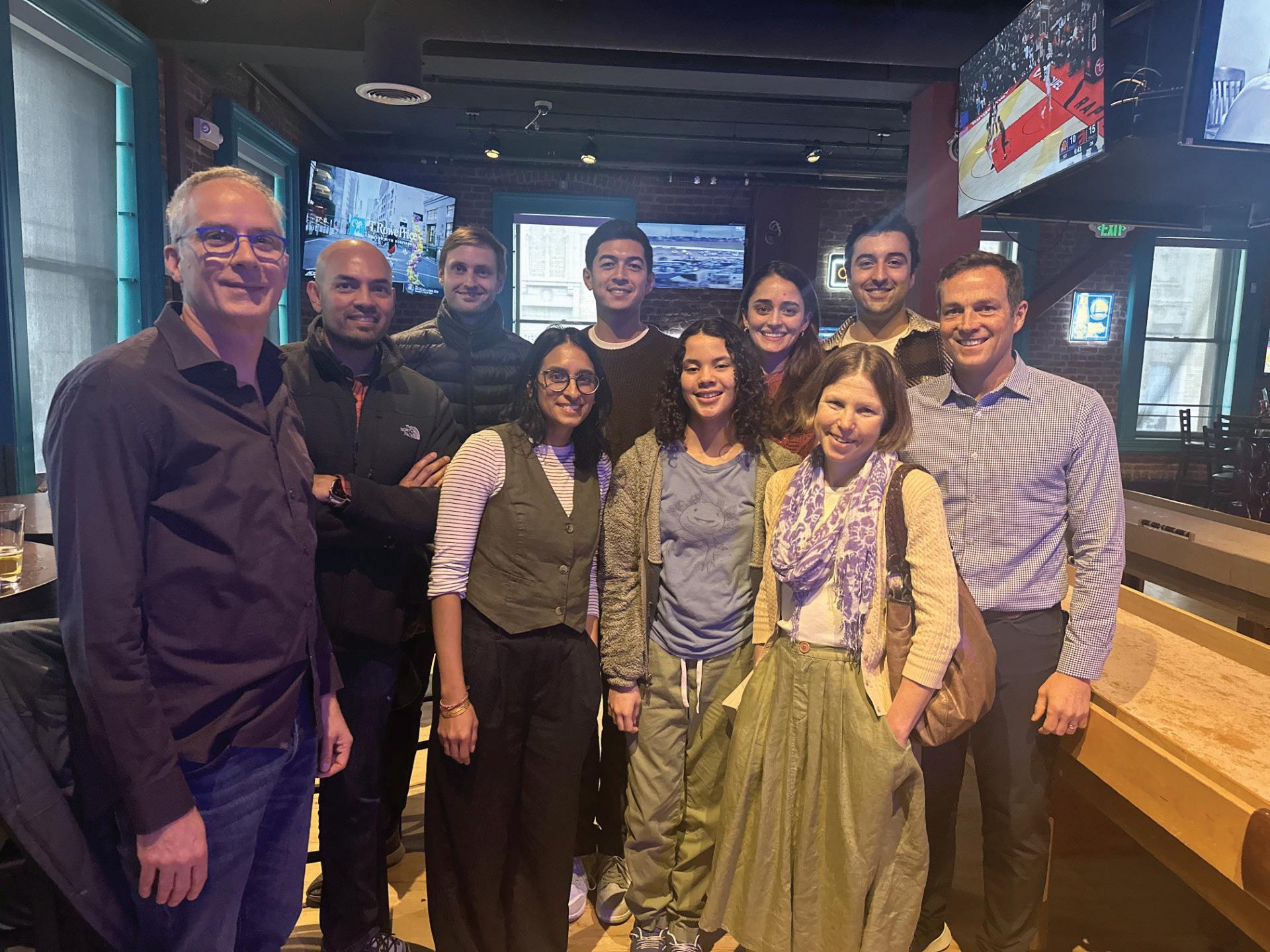
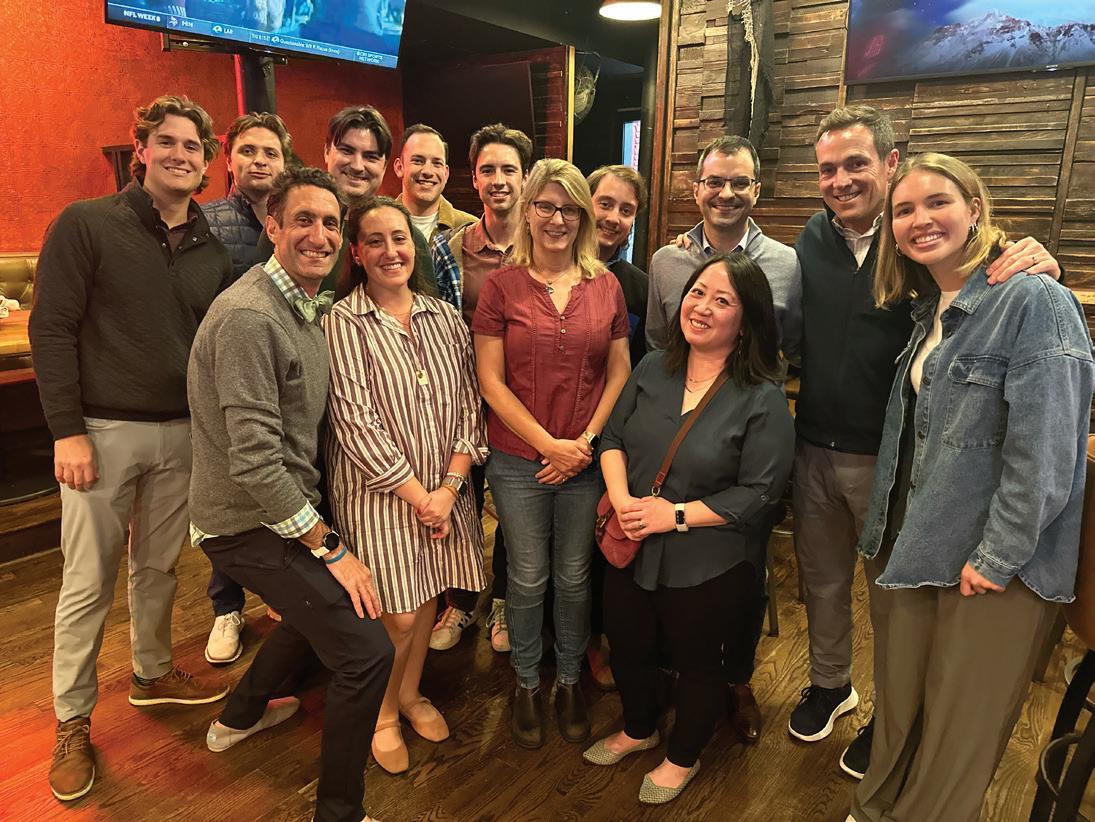
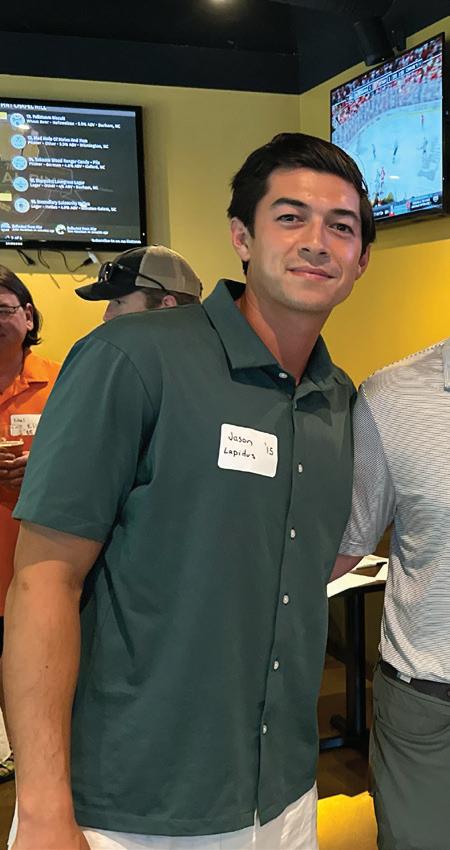

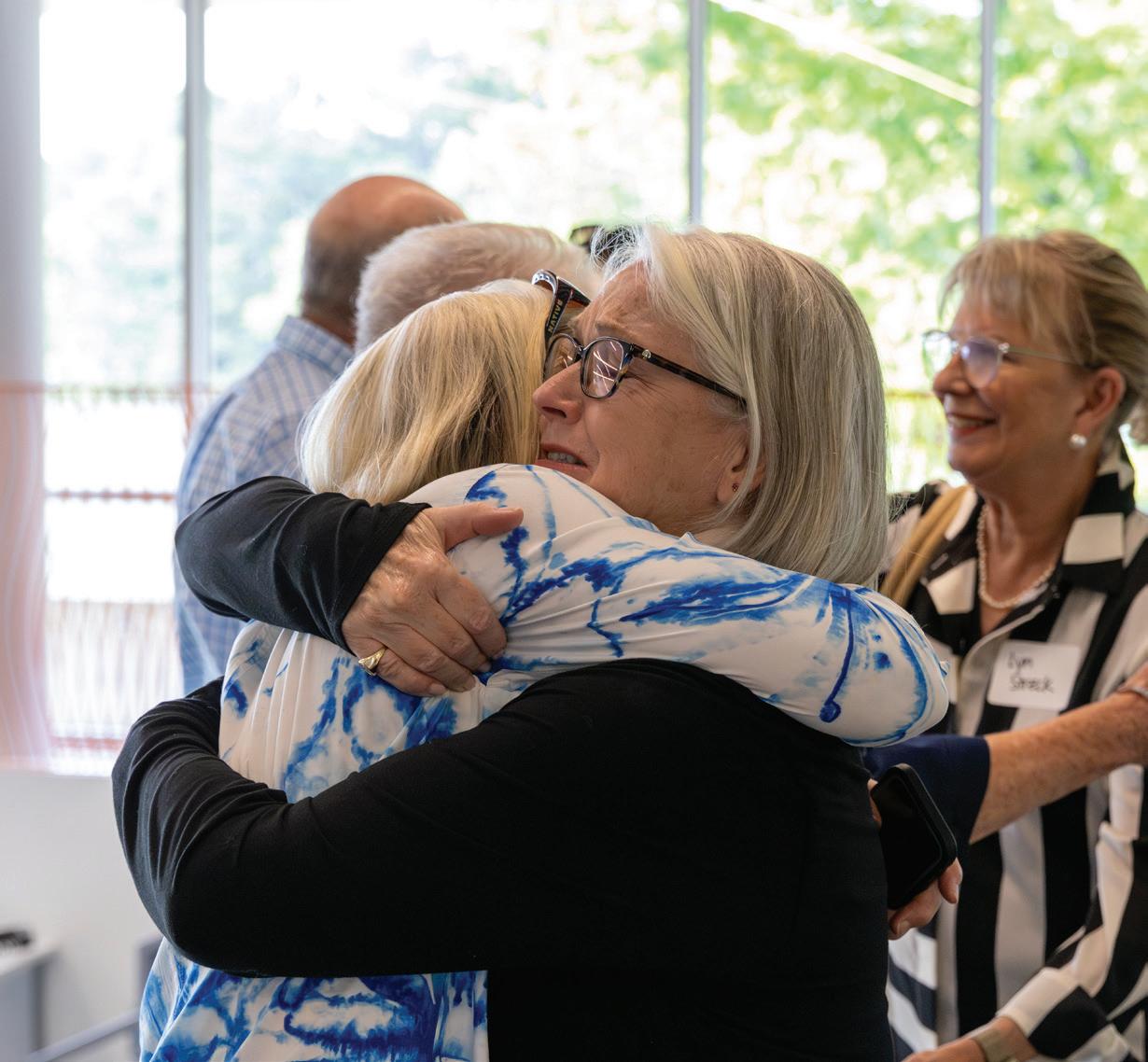


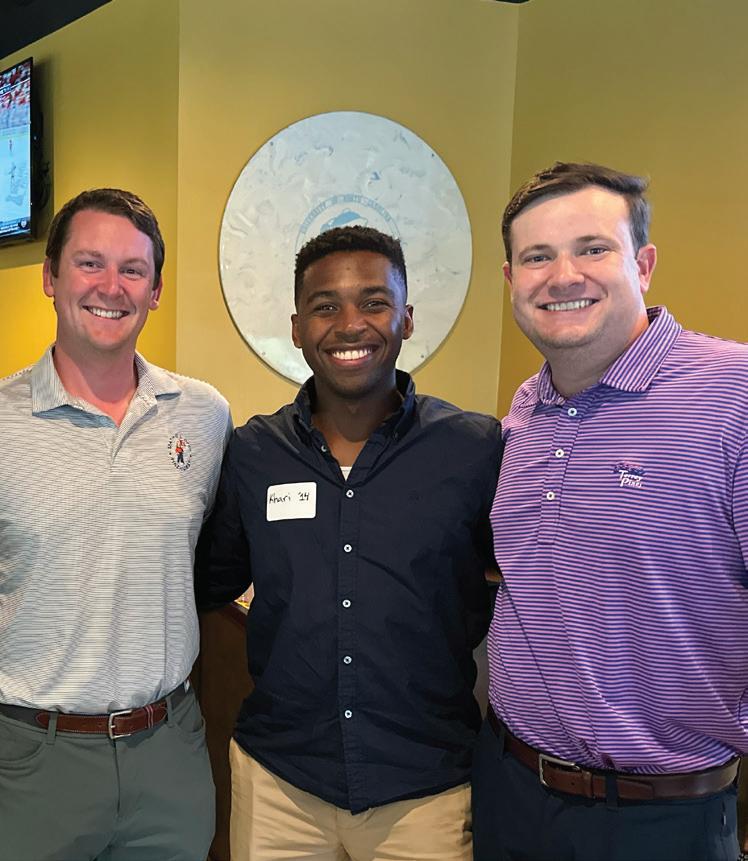
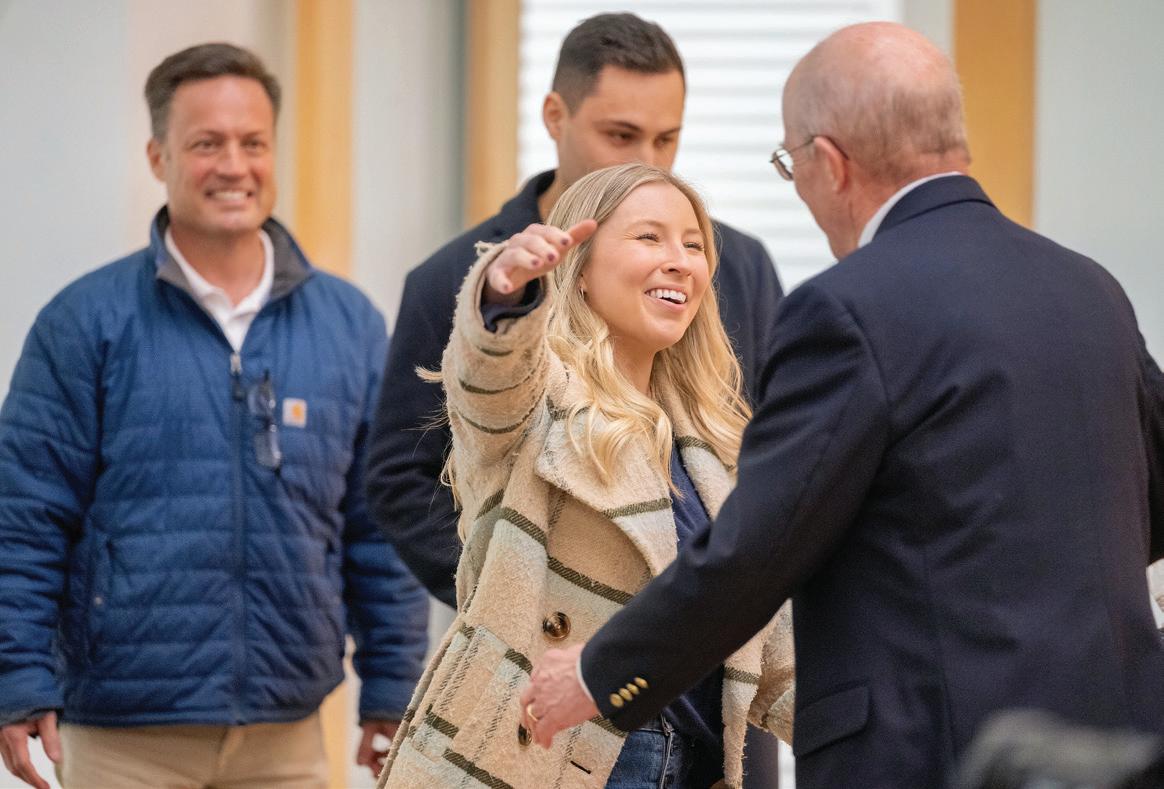
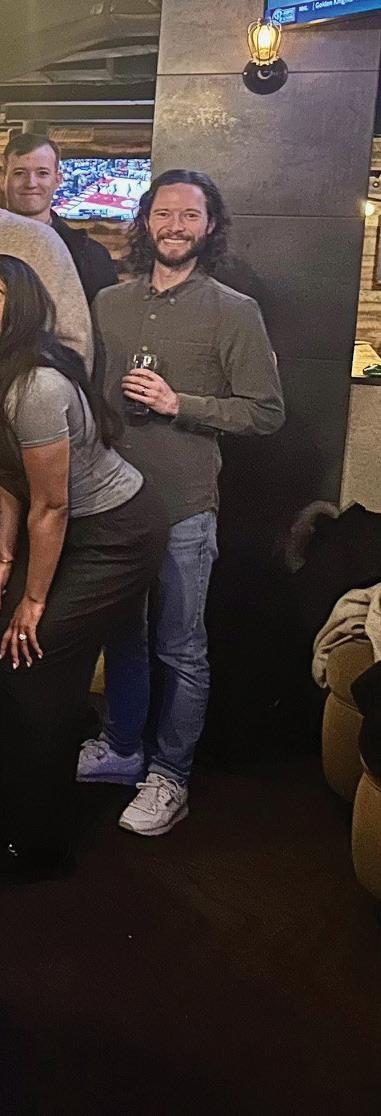
1. Fall alumni social in Boston
2. Chicago alumni social in October
3. Triangle-area business networking event in Chapel Hill
4. Bay Area alumni social in February
5. 30 Alumni turned out for our Washington, D.C., social in January
6 Current and former faculty gathered with alumni at the Athletic Hall of Fame Induction in December
7. Spring Alumni Reception honoring Steve and Teresa Engebretsen and Brooke Hartley Moy ’07
8. Members of the Class of 1979 at their 45-year reunion party
As Summer 2025 arrives, I find myself reflecting on the past year with deep gratitude for the opportunity to serve as your Durham Academy Alumni Board President.
Over the past year, I’ve witnessed firsthand the remarkable strength of our alumni community. Alumni from across generations have reconnected with one another, supported current students, and given back to DA in meaningful ways.
One of the most rewarding aspects of this role has been seeing how deeply invested our alumni remain in the school’s continued success. Whether mentoring students, participating in career panels, or returning to campus for special events, the DA alumni network is an invaluable resource for both past and present Cavaliers.
Your commitment to staying involved and giving back speaks volumes about the enduring impact of a DA education. I encourage you to stay connected and continue to find meaningful ways to support our community. Durham Academy is more than just a school — it’s a lifelong community.
This year, we continued new traditions like the alumni master class. This latest installment featured Head of School Michael Ulku-Steiner and Dr. Becca North ’94 leading a thought-provoking discussion on the relationship between mission and happiness, inspired by Michael’s popular Upper School course The Mission-Driven Life
We also saw increased alumni participation in Giving Day, reflecting our shared commitment to ensuring DA remains a place of excellence for future generations. Thank you to everyone who gave their time, talents, and resources to DA. Your generosity sustains scholarships, faculty development, campus improvements and so much more.
The strength of DA lies in its people, and it’s been truly inspiring to see how our alumni continue to support and uplift the school we all love.
As we look ahead, I’m excited to build on this momentum. The Alumni Board remains committed to fostering connections across generations, creating meaningful engagement opportunities and ensuring every alum feels a lasting sense of belonging to our DA family.
I look forward to all that we’ll accomplish together in the coming year and to seeing many of you on campus or at alumni events soon.
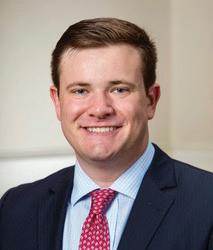

David Peters ’13 Alumni Board President
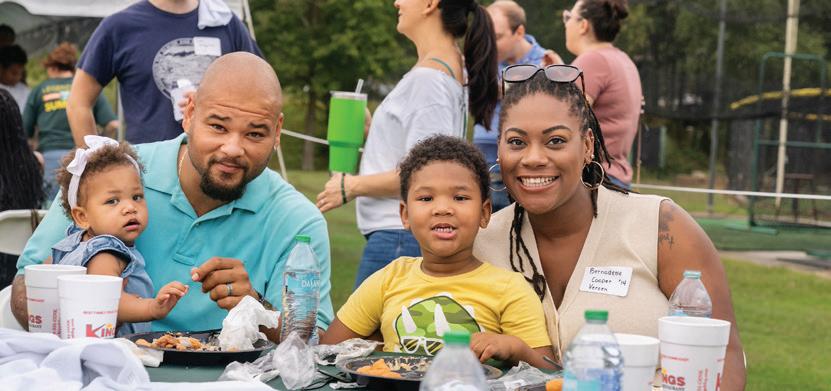


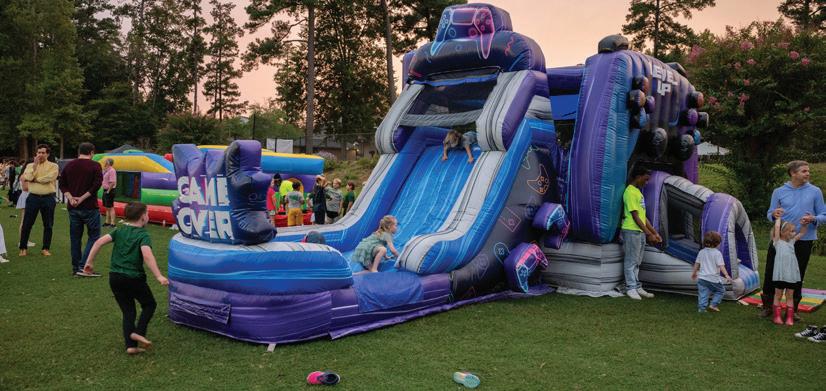
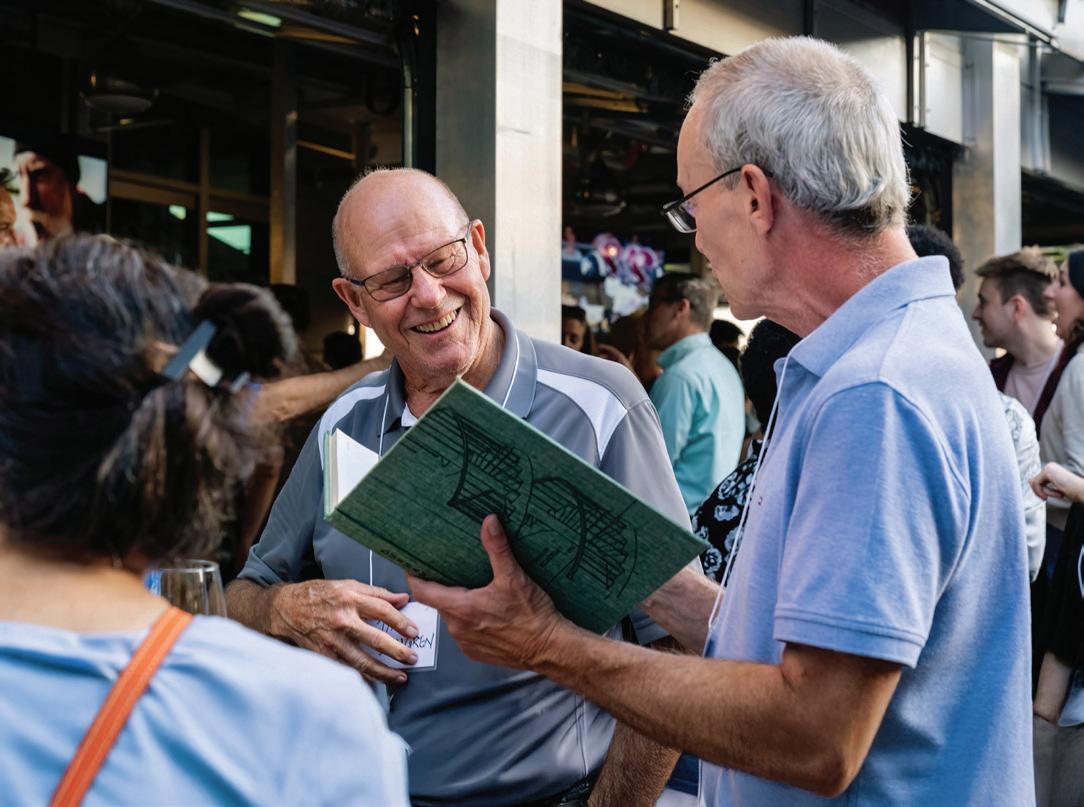
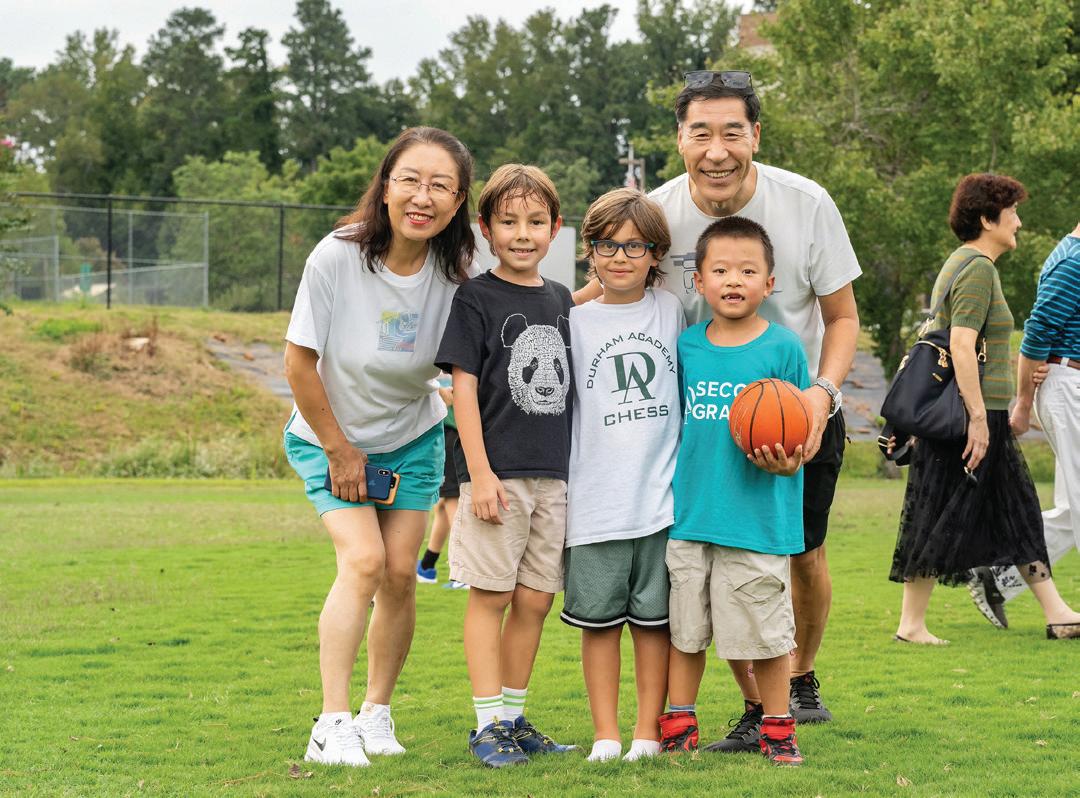
There’s something for the whole family at Homecoming 2025! Get your green and white gear ready and join other DA families, friends, teachers and alumni as we celebrate.
FRIDAY, SEPT. 26
Food trucks, bounce houses, music, alumni social and varsity athletics contests


SATURDAY, SEPT. 27
Reunion party for alumni of classes ending in 0s and 5s
Alumni: Visit da.org/homecoming for details and to register for alumni-specific events.
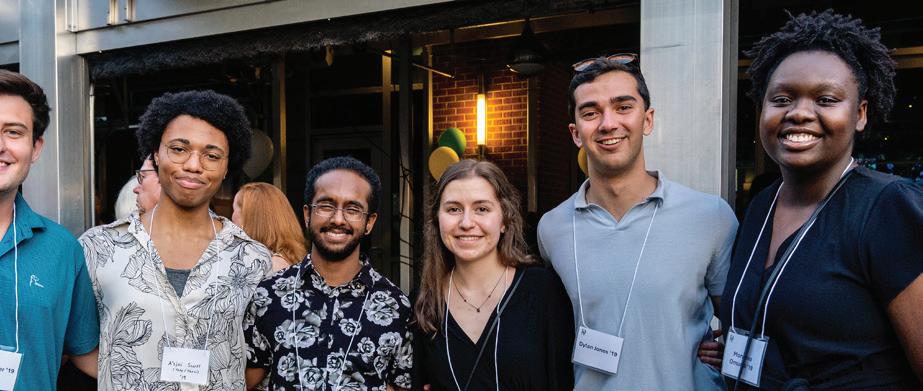

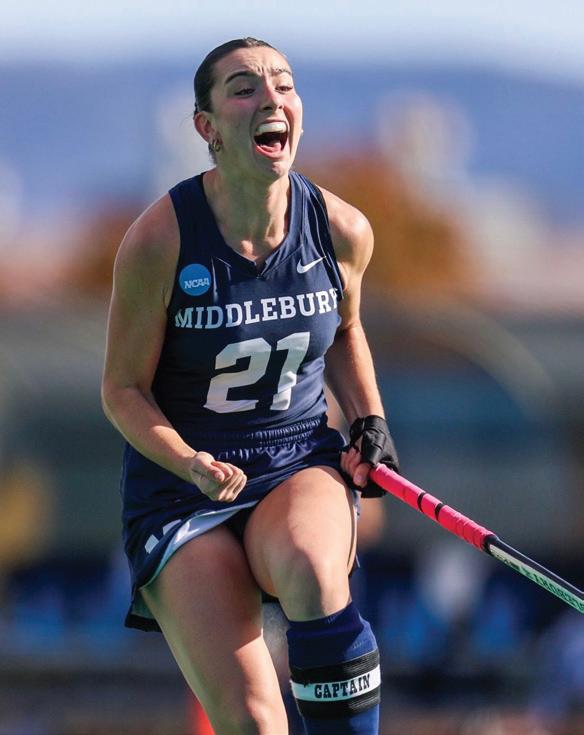
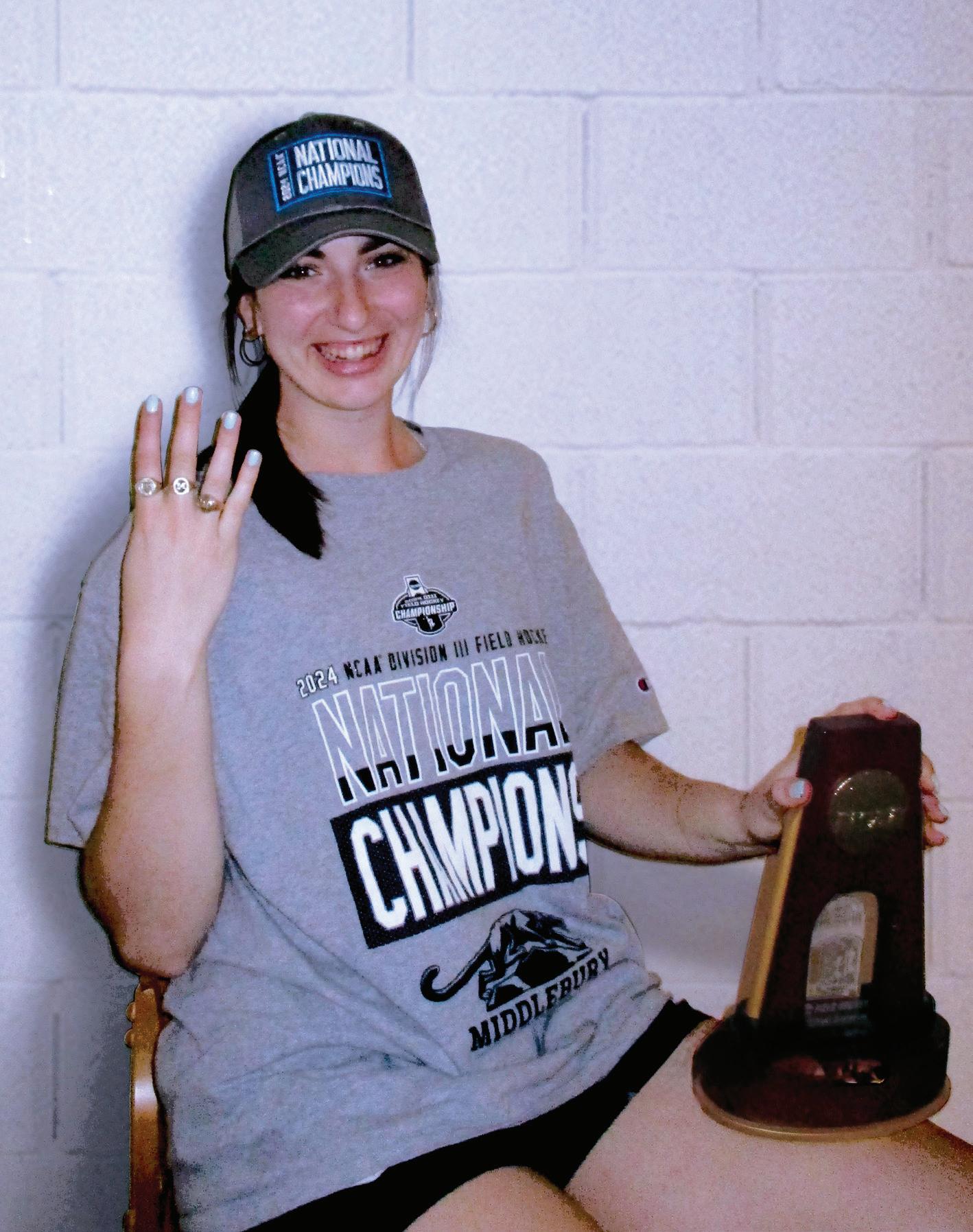
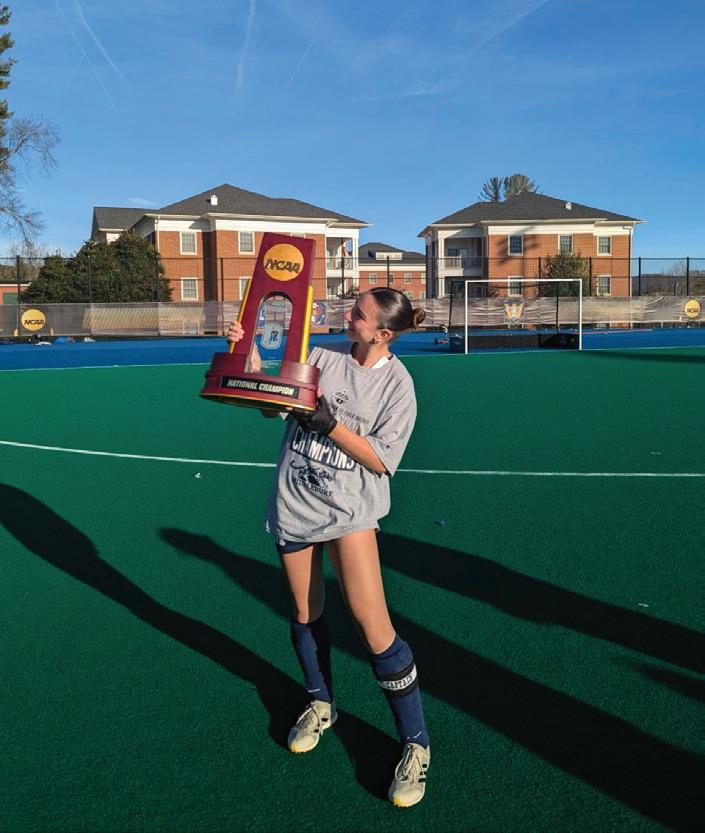
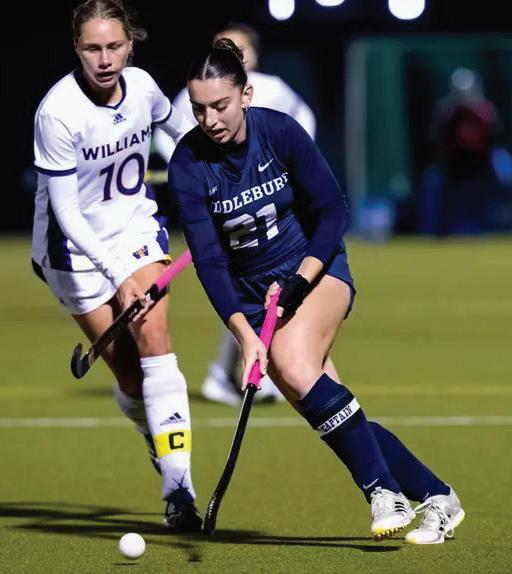
BY KATHERINE LANTZY ’21
The field hockey superlatives for Middlebury College midfielder Katherine Lantzy ’21 are staggering. She started 65 consecutive games during her final three seasons with Division III’s most dominant field hockey program. Her four national championships with Middlebury from 2021 to 2024 — amid a run of seven straight titles for the Panthers — are the most for a Durham Academy alum at the collegiate level. Her program has, as Lantzy writes, changed the game in NCAA athletics — and made a (Green) mountain of lifelong memories together along the way.
I can perfectly remember my first season of field hockey at Durham Academy: dazzle cloth uniforms, duct tape holding together the hem of my skirt, pregame dance parties to One Direction’s newest (and last) album, and 30 middle school girls excited to chase an undefeated season.
Now, 10 years, 10 teams, four NCAA championships and a lifetime of memories later, I am left feeling nothing but gratitude for all that field hockey has gifted me and how it serendipitously led me to Middlebury College — a community that I will forever call home.
During my time at Middlebury, the fall has become synonymous with sanctuary. Under the beautiful landscape of Vermont’s Green Mountains and the vibrant hues of the changing foliage, field hockey season guarantees me three months of team dinners, time with my best friends, silliness, hard work, constant laughter and goal celebrations. I can think of no greater privilege than getting to live day-to-day life with the people you love most.
Like most collegiate athletes, my teammates and I have spent our years at Middlebury learn-
ing from our mistakes, growing up and having fun playing the sport we love. But we are aware that our experience has not been typical. Every morning, we get up and go about our days knowing that we are making waves in NCAA athletics. Led by Coach Katharine DeLorenzo, Middlebury Field Hockey owns the longest active NCAA title streak regardless of sport, gender or division — winning our seventh consecutive championship last November. My senior class of players graduated with an overall record of 84–3, two undefeated seasons, three New England Small College Athletic Conference (NESCAC) titles, four
NCAA Championships and a deep appreciation for the people — our families, coaches, trainers and alumni — who have paved the way for us.
So, 10 years, 10 teams, and four NCAA championships later, what am I left with? Success? Sure, that is part of it. But I would argue that the feeling is better described as satisfaction: satisfaction in achieving what we set out to do, satisfaction in leading well and satisfaction in knowing that we
are changing the landscape of Division III field hockey for the better. It is an immense source of pride to represent my college and to be surrounded by trailblazing women. I will absolutely carry Middlebury Field Hockey — and all that it represents — with me for the rest of my life.
In full-circle fashion, I won my last national championship on the exact field in Lexington, Virginia, where my coach won her first for Middlebury in
Katherine Lantzy’s college experience was far more than the sum of her national championships. Here are — in her own words — nine glimpses into Lantzy’s life at Middlebury College, where she and her teammates pursued on-field excellence and sustained off-field fellowship.
The best part about preseason is experiencing Vermont in the summer! Team swimming hole days forever and always!
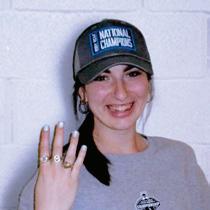
Our coach lovingly opens her home and farm to us whenever we want to visit! Trips to see the baby goats and her goofy dog, Howard, will always be my favorites!
2015. It was the most intense feeling to sit in the locker room where that team had once prepared to play in the same game nine years ago — the same year I played my very first game in my old taped-together uniform. I could feel their nerves, their excitement and their love for one another pulsing through the space. But most of all, I thought of my younger self. I thought of her genuine love for this game and for her dreams. At that moment, I knew she would be proud.
Peter Kohn Field (top middle) is not only home to Middlebury Field Hockey, but also to the best sunsets, amazing mountain moments and rainbows!
Katherine Lantzy Field Hockey Student-Athlete • Go Panthers • Go Cavs
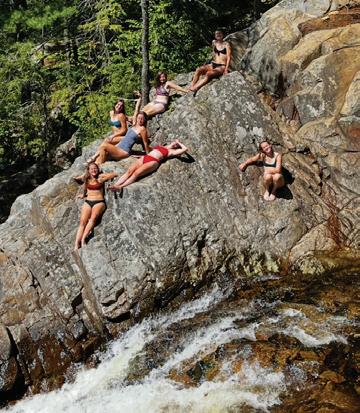
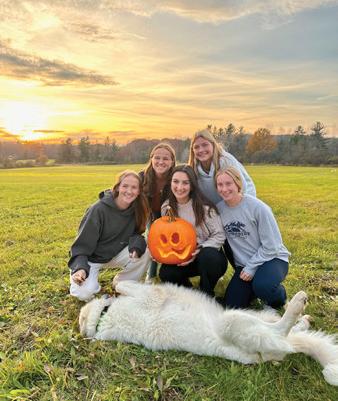
We love supporting other teams and soaking in the Green Mountain views (middle) when we have a free afternoon in the fall!

I studied abroad in Buenos Aires last spring. This is me at the famous salt flats in Jujuy!



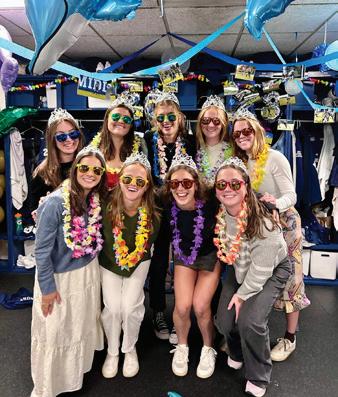
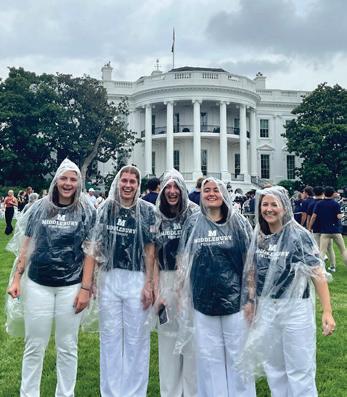
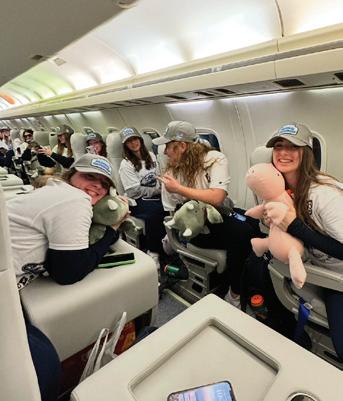
Senior Day was the most special day ever! The underclassmen decorated the locker room and made us feel so special!
Middlebury Field Hockey received an invitation to the White House National Champions Celebration last summer, where we heard from Vice President Kamala Harris on the day she became the presumptive Democratic presidential nominee. History in the making!
After the 2023 national championship, we got to fly home from Virginia on a private jet with our newly acquired weighted dinosaur throw pillows from Target! So much fun!
Post-national championship celebration tradition: watching the sunrise on the field with the trophy!

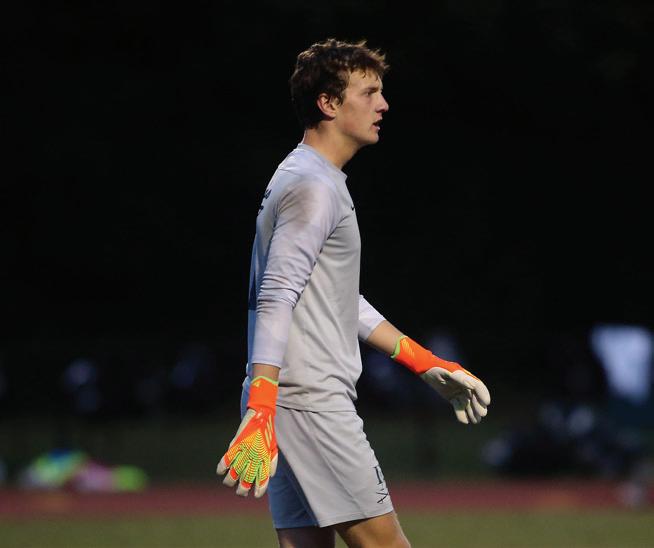
“It’s really cool. There are times I’m in the car with my Jordan friends and we’ll joke about the rivalry, but I still get to say: ‘Yeah, we beat you guys.’ And I didn’t win: As a whole school, we beat you guys. There’s a spark there. There’s an automatic conversation between DA and Jordan students just because of the overlap that has now been created and solidified with the rivalry.”
Shy Williams ’25 Girls Basketball
Separated by four miles, united by one goal: Earn bragging rights at the end of the year from the rival down the road.
Durham Academy and C.E. Jordan High School have long considered each other on-field adversaries. But the Cavaliers and Falcons have never had a singular competition to settle the score — until last fall, when they began competing in the inaugural Garrett Road Rivalry. The yearlong series featured the 20 athletics events in which DA and Jordan both field teams. The winning school in each event earned one point toward a running total that encompassed the fall, winter and spring seasons.
The title belongs, at least for the coming year, to the Cavaliers, who topped Jordan, 10.5–7.5, in the rivalry’s first installment. (Inclement weather forced the cancellation of the girls soccer and boys tennis matchups.) DA earned points in six of the seven fall events, and the Cavs formally clinched the first-ever title with a March 6 win in girls lacrosse. But a rivalry transcends box scores. Just ask a few of the more than 300 DA student-athletes who had the chance to represent their school for the first time in this competition.
“When you win against Jordan, it’s humongous. You’re playing for points in the rivalry. You’re playing to represent your school. We’re all hyping each other up athlete to athlete — and even students who don’t necessarily play a sport are hyping up the athletes. I love the culture. I loved hearing announcements at Morning Meeting about who was winning. It became a pretty big deal on campus. I want to keep that same energy alive for years to come.”
Jack Kelley ’26 Boys Soccer
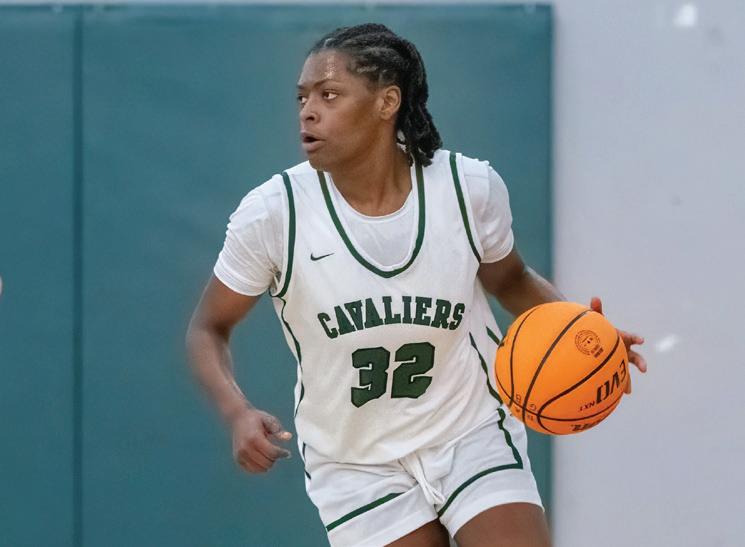
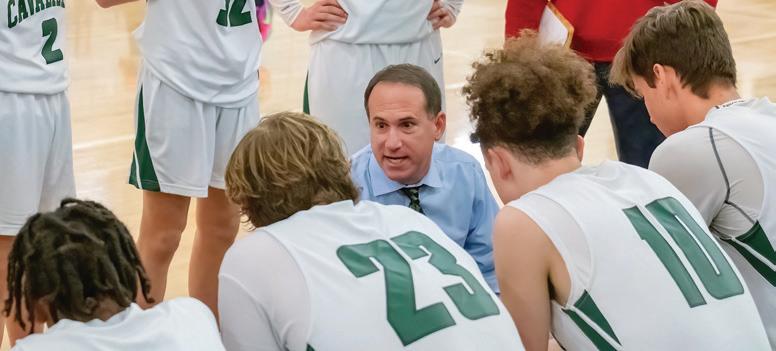

“It was very apparent that we had a lot more students and people showing out for the Jordan games. I think in the future, now that students know more about the Garrett Road Rivalry, I think the games are going to become an even bigger deal.”
Rachel Scott ’26 Girls Lacrosse
“I couldn’t be prouder of our student-athletes for capturing the inaugural Garrett Road Rivalry title. This new competition gave extra meaning to our always-competitive contests with the Jordan Falcons. When Jordan Athletic Director Joe Sharrow and I agreed on this idea, we knew that both sets of student-athletes would jump at this opportunity. I think this year’s competition had everything we could have asked for, and we look forward to continuing this rivalry for years to come.”
Andy Pogach Director of Athletics
Pole vaulter Ali Laros ’25 and golfer Jenna Kim ’27 share a pair of decorated commonalities: They’ve each won consecutive individual state titles, and they’ve won them all for Durham Academy.
By
Dylan Howlett
They came to their sports by way of their families. Jenna Kim ’27 was around 6 years old when her mom, a golf aficionado, placed a club in her hands. Ali Laros ’25 was around 15 years old when her uncles, impressed by their niece’s athleticism in gymnastics, suggested she try the pole vault. Years of hard work — often unseen, often unheard — would render those conversations rather fateful.
Kim won her first individual state championship in girls golf as an eighth grader. She won again the following year, in 2023, and again this past fall, in 2024, as DA girls golf captured three consecutive state team titles. Laros won her first individual state championship in the pole vault only nine months after she first took on the event — one of track and field’s most daunting and dangerous. She won a second straight state title in 2024 and she will compete in the pole vault for UNC-Wilmington beginning this fall.
The journey there — one filled with early mornings, creeping self-doubt, dwindling free time in the face of striving for something more — can only be understood, really, by a fellow repeat state champion. So Kim and Laros sat down earlier this spring to answer the same questions posed to a pair of defending champs: each wielding radically different implements, but both with an abiding respect for all that it took for the other to reach the peak of their sport.
The following conversation has been lightly edited for brevity and clarity.
At what point did you realize you were good enough to win a state title?
Kim: “I started getting invited to the U.S. Kids Golf World Championships when I was 7. Then I started to rank higher and higher every year. And then I started to win more tournaments when I was 10 and 11. I got way more into it.”
Laros: “As soon as I hit 10’6” about halfway through my sophomore year. I had based my chances off of all the other athletes who I knew were in our conference. As soon as I hit that height, I knew I could win.”
Did your mindset change at all when you were trying to defend your state title?
Kim: “It definitely just increased my confidence. When I won my first time in eighth grade, I was playing against a lot of juniors and seniors. I just got that confidence that I could compete with them all.”

“Have I ever pole vaulted? Nope. Could I imagine winning a state championship in the pole vault? Nope.”
— JENNA KIM ’27


“Could I see myself winning a state championship in golf? No, I could not. I have a video of me at a driving range, and I accidentally let go of the club. It went farther than the ball.”
— ALI LAROS ’25
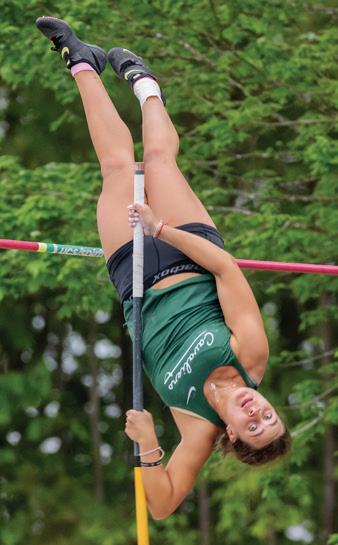
Laros: “It was more about just staying focused the whole time. Before my first championship, I had a friend, Danica McCarron, who started competing for Cary Academy. She had been vaulting for a year already, but she was still figuring it out, so I knew that I had a chance. The year after that, we were pretty much neck and neck. She was six inches lower than I was going into the state championships, but you never know with pole vault who’s going to do well or not.”
What’s your biggest superstition in your sport?
Kim: “I used to have a lot when I was younger, but I kind of realized they were all fake. There was a certain color of hats that I could only wear, a certain ball mark that I could use. But now, I have the same routine for every single putt. I wipe my putter face clean while I’m behind the ball. Even if the face isn’t wet or there isn’t grass on it, I still touch the center of the putter face.”
Laros: “I have these pink UGG slippers that I bought a year or two ago. I wear them every practice, every meet. They’re my good luck slippers.”
What’s your favorite part of your sport?
Kim: “The experiences I’ve been able to have while I’ve been competitive are just unmatched. I was able to go to all these different courses — including Augusta National Golf Club for the Drive, Chip & Putt competition. I’ve been able to play these amazing courses and meet some really talented people. It’s been really fun. Obviously, it doesn’t go my way all the time. Sometimes I lose, or I win, or I’m super mediocre. But I feel like the experiences that come with it are hard to get without playing golf.”
Laros: “I like how you can always get better. You can always improve. There’s always something to work on. Even though I’ve made it to college, I can still get better and still definitely jump higher.”
What’s it like to win a state championship for Durham Academy?
Kim: “It definitely means a lot. The girls golf team has been really competitive and really good. It’s just a great experience to be able to play with all these amazing people and with the support from all of our teachers here. It’s amazing.”
Laros: “It’s pretty amazing. I know that Julianna Hallyburton ’22 won individual state titles in 2021 and 2022. It’s kind of just keeping that legacy going for DA.”
What do you think of Ali’s achievements as a back-to-back state champion pole vaulter — and what of Jenna’s achievements as a back-to-back-toback state champion golfer?
Kim: “It’s super impressive. I don’t know much about pole vaulting, but it seems really difficult. I also don’t know how competitive track and field is, but it seems like it would be a really hard thing to achieve. That’s really impressive.”
Laros: “I think it’s amazing. Wasn’t she a middle schooler beating all the high schoolers? That’s absurd. It’s actually insane. She’s amazing. To hear that Jenna is two, three years younger than all of us? That’s insane.”
STUDENT-ATHLETES
Participating in Grades 7–12 641
Multi-Sport Varsity Athletes
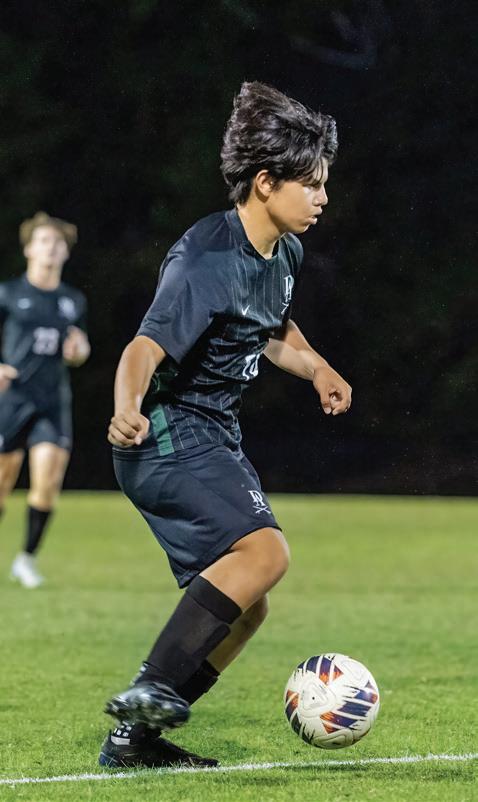
All-Conference Student-Athletes

The 2024–2025 athletics year was an extremely successful one for the Cavaliers, with increased participation numbers at the Middle School level, numerous community-building home athletics events and a long list of accolades and conference titles. I continue to be proud of the depth and breadth of our programs, as 15 of our 20 varsity teams earned Wells Fargo Cup points for finishing in the top 8 in the final state standings. Almost half (9 of 20) of our teams won their conference championships, and the girls golf team took home its third straight state title. While these facts and figures certainly showcase our success on the field, there are so many more individual stories of success from our Middle School, JV and varsity student-athletes that emphasize the importance of scholastic athletics.
– ANDY POGACH, DIRECTOR OF ATHLETICS

9 TISAC CHAMPIONSHIPS
Girls Cross-Country, Girls Golf, Girls Lacrosse, Girls Soccer, Girls Tennis, Boys Golf, Boys Lacrosse, Boys Soccer, Boys Tennis
1 ST TIME in over 20 years
4 TH STRAIGHT GIRLS TISAC PRESTIGE CUP recognizing conference success across all sports
PLAYED IN A DA-HOSTED STATE CHAMPIONSHIP
Boys Lacrosse A CAVALIERS TEAM
REGULAR-SEASON ATHLETICS COMPETITIONS
Varsity, Junior Varsity and Middle School
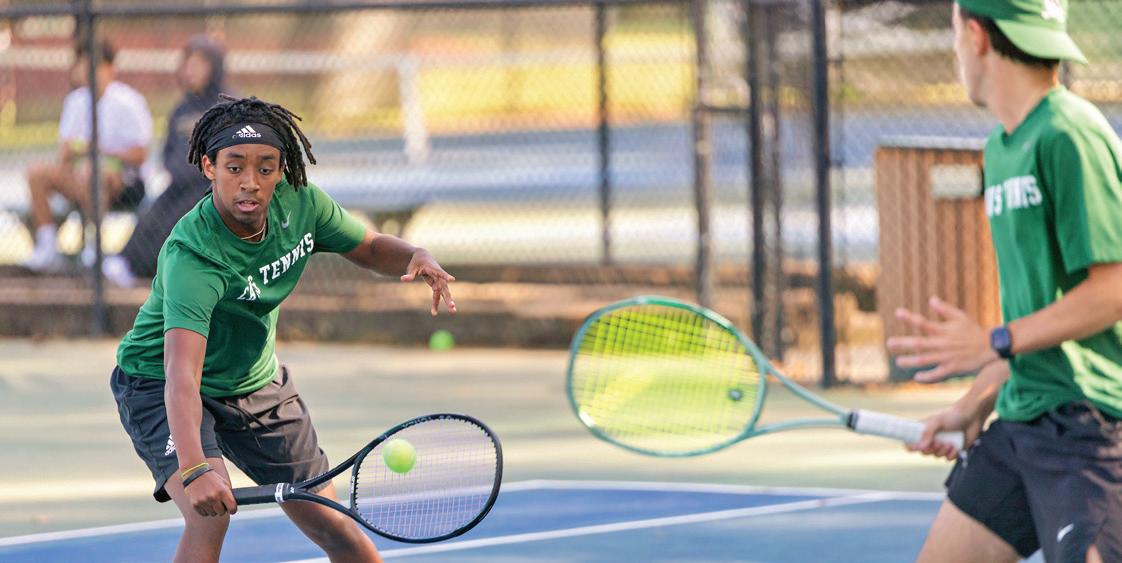
FOURTH PLACE
4A WELLS FARGO CUP recognizing statewide success across all sports
Tyler Barritt – William & Mary, Swimming
Jet Bilsborrow – Colorado College, Tennis
Amare Burrus – Columbia, Baseball
Angus Cook – Colby, Cross-Country
Eva Crowley– Sweet Briar, Riding
Quin Frasher – Franklin & Marshall, Basketball
Bennett Harris – Davidson, Swimming
Will Hunter – Denison, Soccer
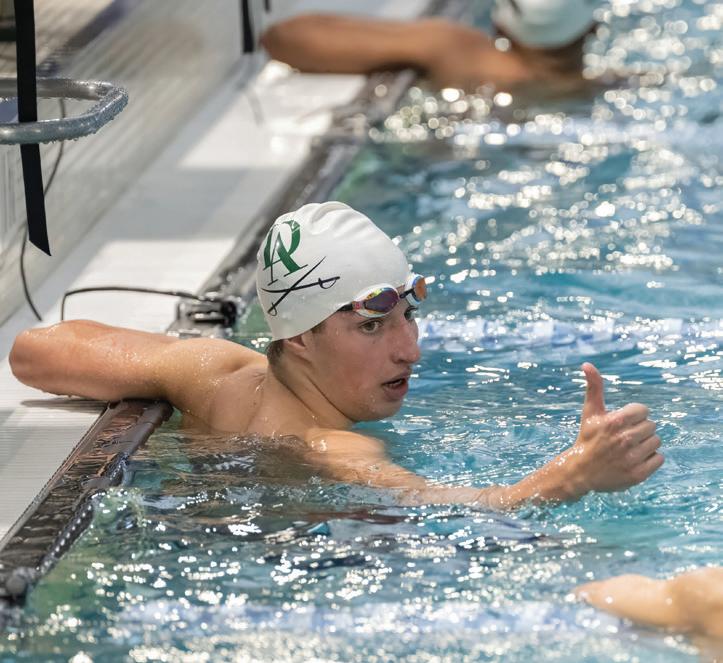
Stephanie Krieger – Smith, Rowing
Ali Laros – UNC-Wilmington, Track & Field
Selena Pappas – UC-Davis, Gymnastics
Ian Platts-Mills – UC-Berkeley, Swimming
Saia Rampersaud – Indiana, Golf
Evan Register – Bates, Cross-Country
James Saunders – Swarthmore, Track & Field
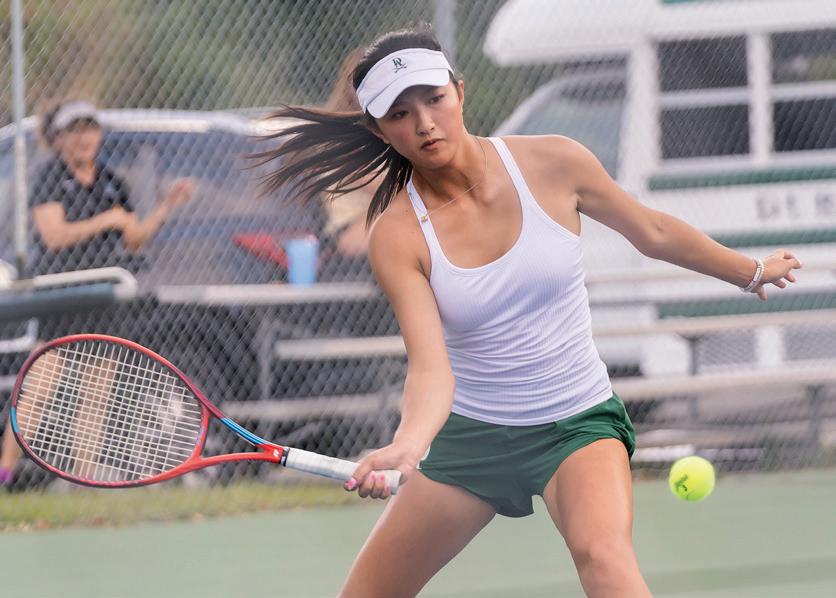
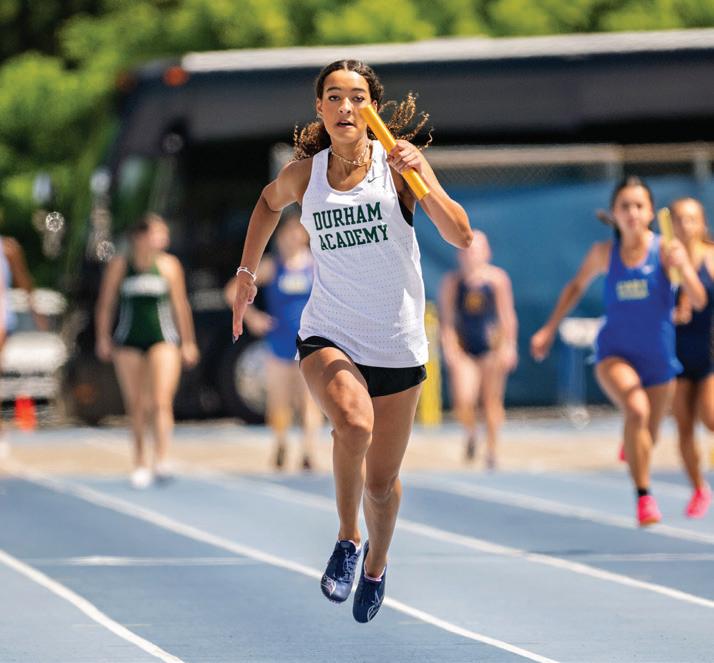
Jenna Kim ’27 (Golf) and Ian Platts-Mills ’25 (Swimming)
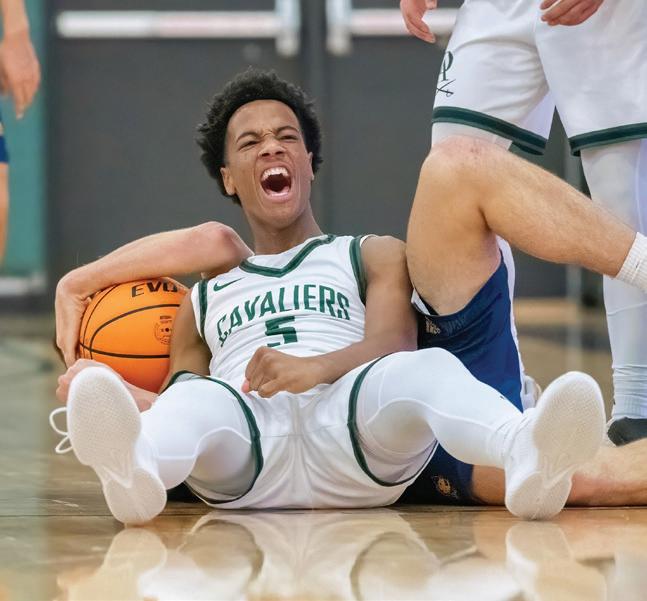

Jet Bilsborrow ’25 Boys Tennis
Camden Hughes ’26
Boys Lacrosse
Jenna Kim ’27 Girls Golf
Anna Morris ’26
Girls Soccer
Ian Platts-Mills ’25
Boys Swimming
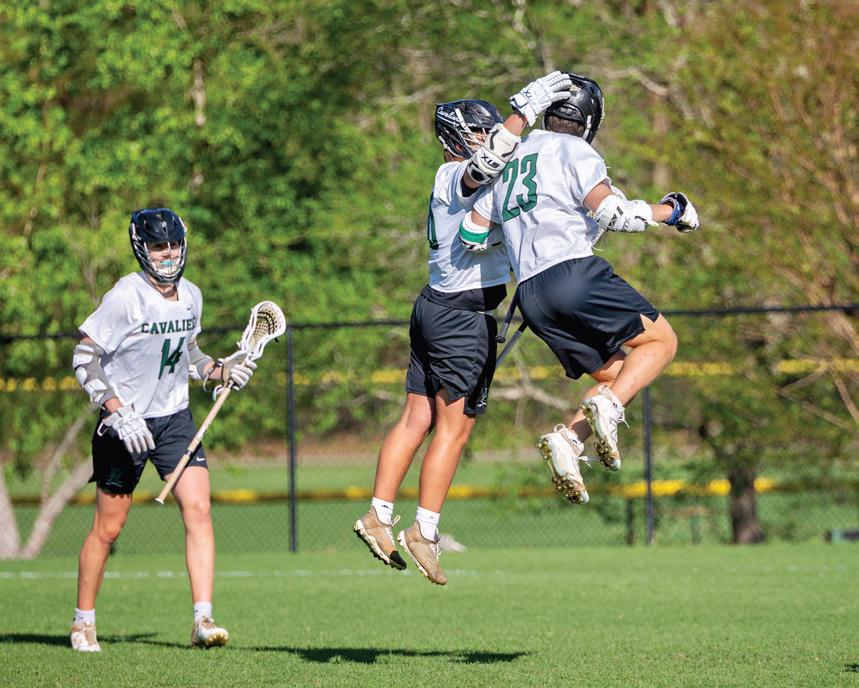

By Dylan Howlett

Tyler Carpenter ’18 has become one of the world’s best lacrosse players at his position. It is no accident.

You might have missed him if you hadn’t thought to look. But he’s there, in the dwindling sunlight on a deserted campus: a man in a white T-shirt and athletic shorts bounding across the Durham Academy lacrosse field, the rectangle of green turf where he once played and now coaches. It is a late afternoon in late March. The field has long since emptied itself of the current players who remind the man so much of his DA teammates — and forever friends — from years gone by. Yet he remains after the team’s Wednesday practice, alone and anonymous, to run. Hard. Maybe it’s the smell of wet grass, an amorphous scent he has cherished ever since he joined his older brother, CJ, at the early-season scrimmages their dad, Sam, oversaw as a high school head coach. Maybe it’s his almost physiological affinity for spring, when an internal alarm tells him that it’s time, as he puts it, to crave some contact. His sprint slows to a walk as he raises his arms and clasps his hands atop his head, the whites of his AirPods glinting in the waning sunlight, his shoulders rising and falling with every deep breath. Maybe Tyler Carpenter ’18 is here because he knows no other way. Maybe he’s here because he’s been overlooked most of his life.
Couldn’t be. His mom, Jolene Nagel, says Tyler and CJ held lacrosse sticks from the moment they could clench them. The first position Tyler plays is goalkeeper, if for no other reason than CJ needs a target while he whistles shots toward the cage. Tyler sees it differently, at least in his youth league. He gets the ball in his crease, runs
the length of the field and scores five goals in a game, as a 10-year-old goalkeeper, against boys who are two or three years older. His league, at last, institutes a rule: Make a minimum of three passes to score. Tyler is so furious he nearly cries. Isn’t that the point? he thinks. To do whatever you can to help your team win?
Five years pass, and the offensively minded goalie is now an offensively minded long stick midfielder on the DA varsity boys lacrosse team. One of Tyler’s assistant coaches is Marcus Holman, the three-time UNC All-America and 10-time professional all-star. “Yeah,” Holman says to Tyler’s teammates. “This guy is different.” When Tyler is a senior, a sixth grader travels to Durham to see his older brother’s Georgetown Prep lacrosse team play DA. The boy can’t take his eyes off No. 5 in green and white. The sixth grader, the future Duke lacrosse player Mac Christmas, says to himself: I’m going to be like that guy. No. 5 from DA. Tyler Carpenter. DA lacrosse parents are no less gobsmacked. It’s all over the face of Kevin Sullivan, whose postgame chats with his son, Owen Sullivan ’17, are exercises in bewilderment. “Holy hell,” Kevin says of Tyler. “He’s seven steps ahead of anyone on the field.” Years later, one of Tyler’s DA teammates, Drew Hantzmon ’18, will bump into a stranger at a Chapel Hill establishment. Hantzmon learns the man’s son played lacrosse at Charlotte Latin School against DA. “You know,” the man says. “That long pole guy — No. 5 — was the best I’ve ever seen.”
“I think people kind of assume it was easy,” says DA varsity boys lacrosse head coach Jon Lantzy, and you could be forgiven if you assumed as much: because in 2024, after two All-America selections at DA, and after being named the best defenseman in his region during a postgraduate year in New England, and after making an All-America second team at Duke and the third team thrice, Tyler Carpenter is named the
Premier Lacrosse League’s long stick midfielder of the year in his first professional season. He is one of the best players in the world at his position. “He’s the best LSM I’ve ever watched,” Owen Sullivan ’17 says. He is one of the most accomplished athletes at the professional level that DA has ever produced.
And yet: “That journey through high school wasn’t easy,” Lantzy says. “His path to where he is wasn’t easy.” Carpenter was one of the last players to be selected in the 2024 PLL Draft. He wasn’t the first LSM to be selected. “He had the self-belief and confidence to know who he was and what he could do,” Lantzy says. “He felt, ‘If you just give me the opportunity, then you know you won’t regret it.’”
So he is here, on this field seven years after he graduated from DA, doing shuttle runs and savoring the brisk springtime air, because there are more opportunities he wants. But Tyler Carpenter isn’t alone on this field. At least not in spirit.
“When I think of myself as a DA lacrosse player,” he says, “I think of those people who were with me.”
Mom and Dad have always been with him. Both are athletes: Jolene was a standout volleyball player at Edinboro University in Pennsylvania, while Sam starred in lacrosse at Middlebury College before playing professionally in Denver. They meet at Cornell University, where Jolene coached volleyball and Sam coached lacrosse. He went on to serve as a U.S. U-19 assistant coach, and Jolene — the head coach of Duke volleyball since 1999 — became one of only nine active Division I volleyball coaches with 700 career wins. Then they have two young boys whose lacrosse sticks never leave
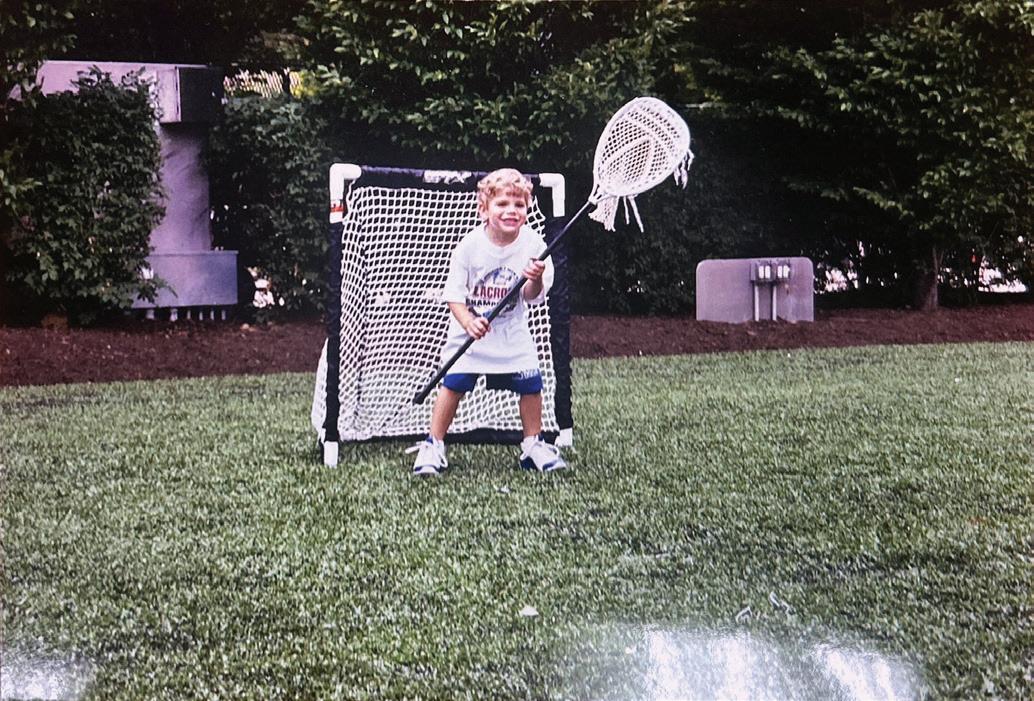
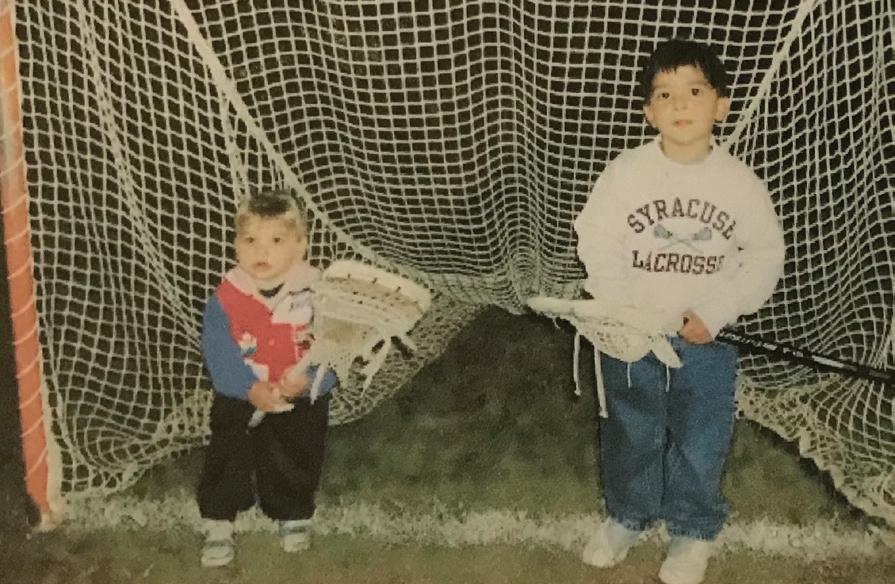
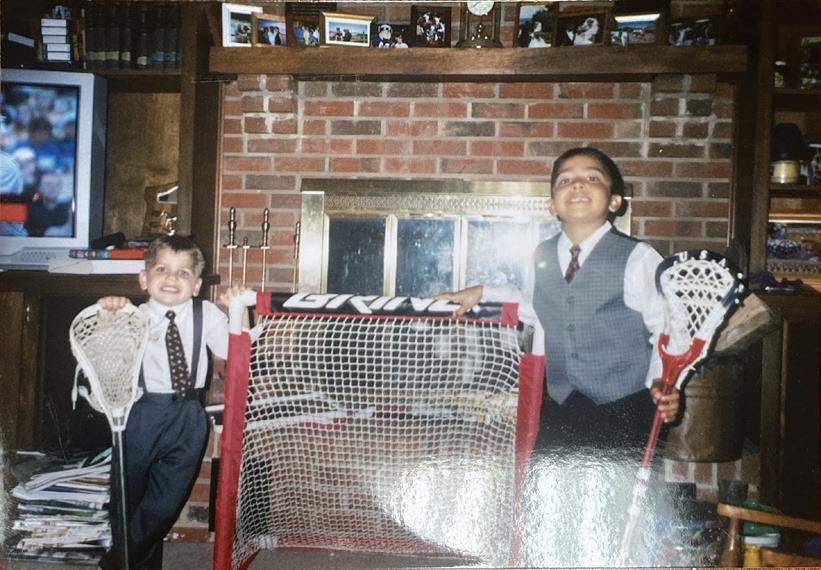
their grip. OK, Sam and Jolene think. Maybe we should get them a goal.
CJ remembers when it arrives on Christmas Day. He’s around 6 years old, Tyler around 3. If you were to make your way to the Carpenter family home in the American Village neighborhood of Durham, and peer down the long narrow driveway that bisects a thicket of towering pines, you couldn’t miss it. “It’s the most beat-up goal you’ll ever see in your life,” says Jacob Harpe ’18, one of Tyler’s DA teammates. Sam eventually stencils and paints a regulation crease onto the concrete, and they add to the left of the goal a lacrosse wall, a spring-loaded backstop for practicing passing. The brothers go out on their own, without any prompting from Sam or Jolene, and they play for hours, the tennis balls clanging off the metal frames of the lacrosse wall goal, careening into the adjoining yard. One stray ball crashes through the neighbor’s window. Jolene doesn’t learn about that until years later.
They play, too, in the Carpenter living room, with mini sticks and mini goals, with Hannah Montana or The Suite Life of Zack & Cody on TV in the background. They shatter a glass globe affixed to the ceiling fan; Jolene and Sam don’t bother replacing it until the boys leave for college. The stakes are almost always the same: first to 10 goals or first to 10 saves. CJ the shooter, Tyler the goalkeeper. Rarely do they make it to 10, CJ says, because the games devolve into a volcanic argument. The same goes for any session of Madden on their PlayStation 2. Tyler inevitably trails by a couple of touchdowns after the first quarter and bursts into tears. “It’s so hard to beat ‘Big Bro,’ you know?” Tyler says.
Tyler is also the little brother of his neighborhood, where he tags along with CJ as they play lacrosse with older kids. That includes Janet and Maggie Pressler, whose father, Mike, was head coach of the Duke men’s lacrosse team at that time, with Lantzy as his assistant. Tyler and CJ grow up around Pressler’s Duke pro-
gram, attending practices and camps. Mike now serves as Tyler’s head coach on his PLL team, the New York Atlas. But Janet and Maggie are unsparing when they play against a more diminutive Tyler. “He got the crap beat out of him by the older kids,” says Jolene, laughing. He will eventually garner the nickname “Hoover” for his almost peerless ability to scoop up ground balls. It is forged, Jolene thinks, on his childhood street.
“He always kind of had a chip on his shoulder where he said, ‘Doesn’t matter,’” CJ says. “‘I’m still going to make an impact. I’m still going to work and be just as good as the other guys.’ I think Tyler’s really taken that with him all throughout his life. It’s kind of never mattered to him who was bigger, faster, stronger: He was going to outwork you, and he was going to outsmart you, and he was going to figure it out on his own.”
Lantzy has known Tyler since he was that tiny goalkeeper, clad in Duke gloves and a Duke helmet, slicing his way through the entire opposing team. Lantzy knows what he has, what DA has, when Tyler arrives at DA as a sixth grader. “You’re going to be the best player at DA,” Lantzy tells Tyler, “if you want it.” A long stick midfielder is responsible, primarily, for defending the opposing team’s best player. Tyler once matches up in a club game against a player who is committed to UNC-Chapel Hill. The player tries a spin move. Tyler swats the bot tom of the player’s stick, sends it flying out of his hands and takes the ball. But his stick skills are so staggering, and his lacrosse IQ so adroit, that Lantzy draws up offensive plays with Tyler as the focal point. “Tyler’s senior season was one of the five greatest performances I’ve ever seen by a high school player,” Lantzy says. Ty ler never leaves the field during DA’s confer ence championship game against Ravenscroft School. He scores five goals, including the win ner in double overtime.
Tyler plays his older brother just once in high school, as a ninth grader when CJ is a senior at Riverside High School, where CJ will, by year’s end, earn All-State honors. It’s an early-season game in a cold, torrential rain. Tyler scores the go-ahead goal with about two minutes left. They still talk about it to this day, CJ says. Tyler still gives him grief. That’s what happens when Little Bro finally beats Big Bro.
When his Hillandale Elementary School teachers ask what he wants to be when he grows up, Tyler says the Duke mascot. Jolene makes him a blue cape and finds a smaller head in a Duke equipment room. One day Tyler runs onto the floor at Cameron Indoor Stadium as a miniature version of the Blue Devil during a women’s basketball game, and he reprises his role at a few of Jolene’s volleyball games. He plays one-on-one with Kyrie Irving in the summer of 2011, months before the point guard’s rookie season in the NBA. He is the easiest member of the Carpenter family to shop for until Christmas 2024, when he declares a 24-year-old man needs something to wear other than Duke apparel. As a boy he looks up to Jolene’s players, and the lacrosse stars who roam the field at Koskinen Stadium. He knows he’ll become one of them. By the time Tyler is a DA sophomore, CJ plays on the men’s lacrosse team there. Sam works in the admissions office there. Jolene coaches there. He, too, must be there. He must play lacrosse at Duke University.

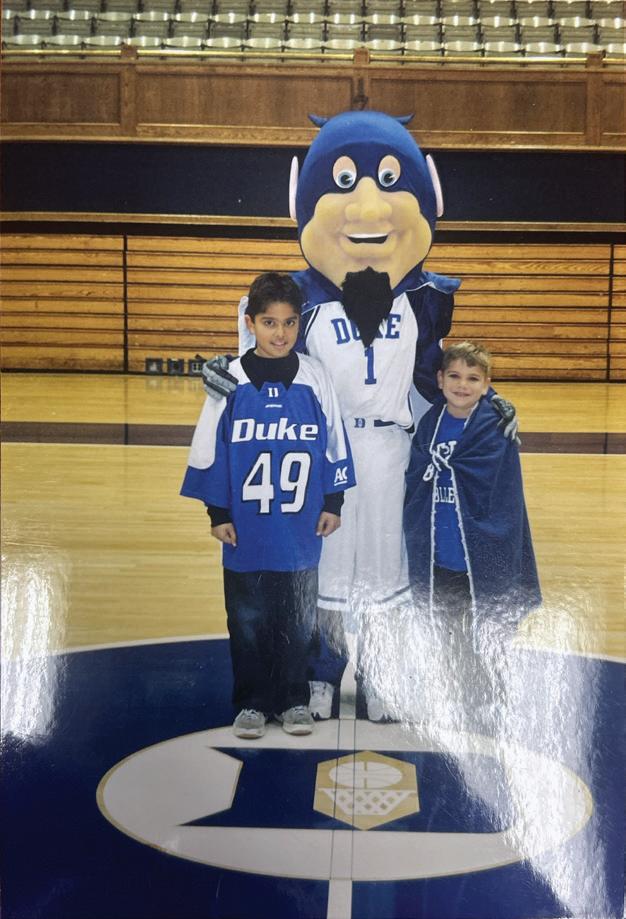
Tyler has slogged uphill as a lacrosse player from North Carolina, a relative afterthought amid the throngs of tantalizing prospects from the sport’s hotbeds on Long Island, in Maryland, and across Greater Philadelphia. He attends national tournaments and sees teams from those places with scouts and college coaches swarming their side of the field; his team’s sideline would only have, at most, two. He’s 5’10” and 180 pounds, far from the more imposing prototype of an ACC lacrosse player. It nags Tyler. There’s always someone out there better than I am. I’m gonna run into him. He’s somehow gonna be the final

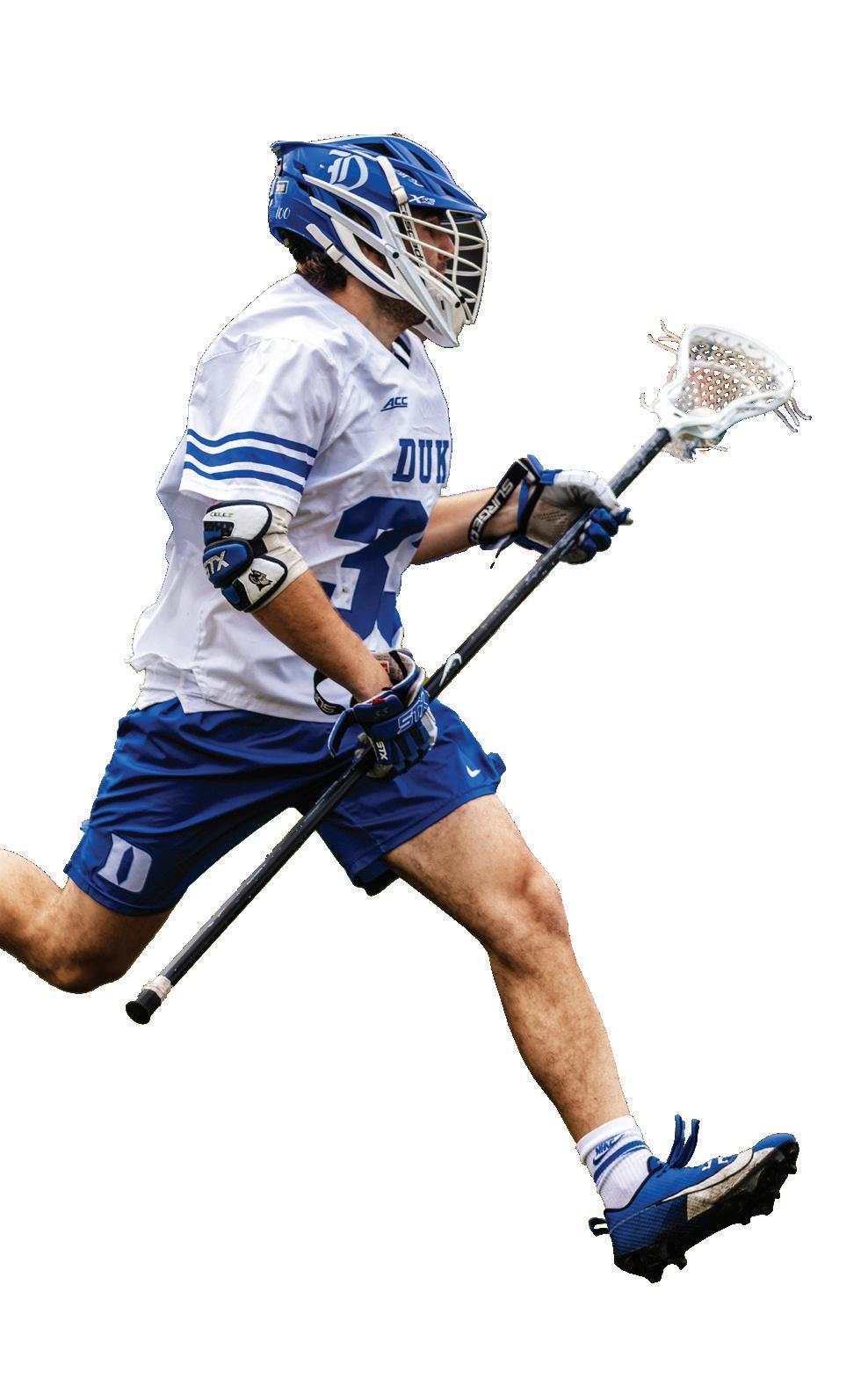
bottles up those final bosses defensively and outshines them offensively. He is too good, too dominant, to dismiss as a Triangle-area lacrosse player punching above his weight. He is, it turns out, the final boss.
Tyler makes a verbal commitment to Duke. It doesn’t last. His grades dip below the university’s academic thresholds, and he doesn’t receive an offer. He is crushed.
CJ looks at his younger brother and senses it: the searing disappointment, the faltering dreams. He doesn’t drift from Tyler. This brings them even closer. “He just means everything to me,” Tyler says. CJ knows from playing in the lacrosse program how special Duke is. How it’s the only place for his younger brother. How Tyler can’t bail, not now, not with the fading possibility of playing lacrosse together for the first time since Sam coached their team when they were 7 and 4. CJ starts having Tyler around the program, around the guys. Tyler becomes closer with the lacrosse players. He also has offers from other schools that will take him the moment he graduates from Durham Academy. But they’re not Duke. I’m not gonna throw away my lifelong dream for getting to college a year earlier, Tyler thinks.
So he takes a post-graduate year at Salisbury School, nestled in the northwest crook of Connecticut. The town of Salisbury’s population is 4,194. The school is all boys, the dress code shirt and tie, the weather cold as hell. The school is also a chance. I know what my one goal here is, Tyler says to himself, and I’m not gonna screw up this last opportunity to get to Duke. He becomes the New England West I Defenseman of the Year and leads Salisbury to an undefeated regular season. He gets more visibility, more respect. He gets to Duke. “Being able to play against that heightened and enhanced competition at Salisbury,” says Shaffer Woody ’18, Tyler’s DA teammate who played collegiately at Syracuse, “may have been a blessing in disguise for him.”
So, too, is CJ redshirting one year due to injury. That and Tyler’s post-grad year ensures they overlap for one year at Duke. It coincides with the outbreak of the COVID-19 pandemic, and they play only eight games before the season gets canceled. They make the most of it. They run together through the tunnel and line up beside each other before games. CJ looks up during warmups and sees Tyler out there, and suddenly he has the strongest memory of being here, in this stadium, as brothers, going to games and watching players who felt like titans. Now they’re doing it themselves. Sam is walk ing into Koskinen Stadium one afternoon before a game when the undergraduate studies director in the Duke Department of Sociology stops him. She has to talk to Tyler Carpenter’s dad about his youngest son. How dedicated he’s been with his senior project, she says. How inquisitive. Tyler makes the All-ACC Academic Team three years, the ACC Academic Honor Roll four. He reaches two Final Fours and one national championship game. He doesn’t throw away his lifelong dream.
“If I could do it 10 times over,” he says, “I’d do it.”
says. “I can never repay them.” They don’t see it that way. “He deserves it more than anybody I’ve ever met,” Hantzmon says. “He deserves everything that’s come to him.”
He is, in many ways, still the same kid who, his Hillandale Elementary teachers told Jolene, would see a classmate struggling and sidle up next to them, seeing how he could help. In that senior-year conference championship when Tyler scores the winning goal, Hantzmon struggles. His teammates rib him on the bus ride home, but Tyler offers reassurance. It’s one of those games, he says. “He’s unapologetically himself,” says Finn Moylan ’18, another longtime DA teammate, “and he has never tried to be anyone else.” Tyler will go to an upscale restaurant and order chicken tenders. He will, for hours at a time, sit on the couch with friends and watch sports. He doesn’t say “no” to plans unless he already has some. “There are people that have off days,” Moylan says. “There are people that will be in bad moods. Tyler’s not one of them.”
He becomes the driving force behind the DA boys lacrosse team’s “One and Done Program,” in which varsity basketball players join the team as a defensive midfielder for their final DA athletics season. Every Friday after
He’s never done it alone. His friends celebrate his obsession with the game he loves. During their DA playing days, Tyler sends a text every Saturday around 7 a.m. to the same handful of guys. Let’s go shoot. Let’s go play. They head to Chipotle after a few hours of training, and Moe’s or Smoothie King after a weekday prac tice. “They were never too busy for me,” Tyler
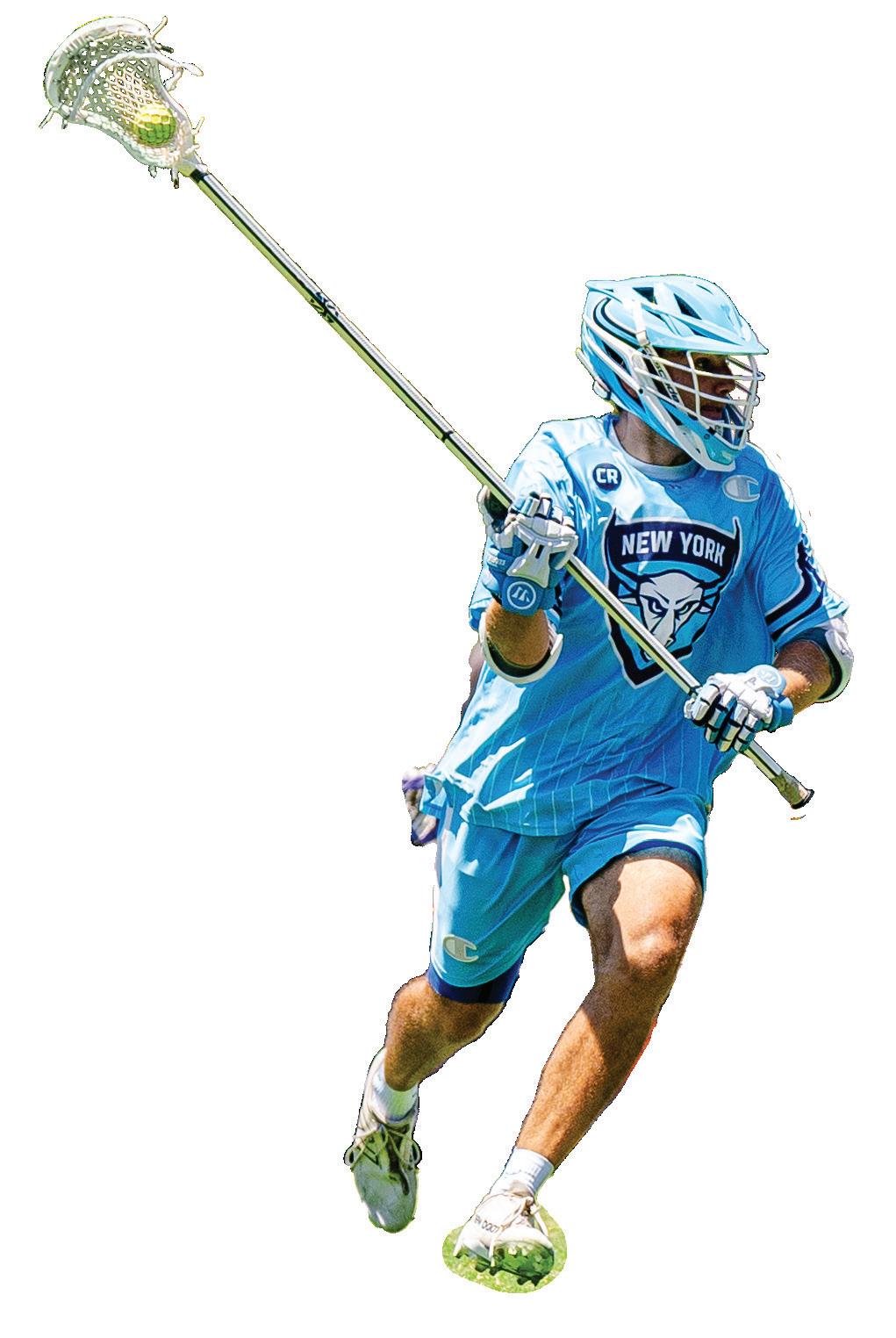

kids. Less than a decade later, in March 2025, Tyler flies to Japan with a team of PLL All-Stars to play some exhibition games, but mostly to visit schools and spread the joy of lacrosse.
Now he is also — in between his work as Duke’s coordinator of Name, Image and Likeness (NIL) partnerships and operations — a professional in the game. His second season with New York Atlas started in May and will stretch nearly four months. On a typical weekday, he’ll head to Duke’s weight room around 6 a.m., lift weights, come home and cook eggs before showering and heading back to work, always remembering to throw his lacrosse stick in the car. He works a full day and heads out to the lacrosse field once Duke has wrapped up its practice, and he shoots and does conditioning for up to an hour and a half. He attends film sessions every Tuesday and Thursday for the Atlas. He’ll arrive Friday morning for a Saturday game. He’ll have a team lunch. A team practice. A shower and another team meal. A walkthrough the next morning, then breakfast, then a pregame meal. And then it’s playing the game he loves, at the highest level.
Jolene will attend a recruiting trip at a convention center and steal glances at her second device, which carries the ESPN+ feed of Tyler’s games. Lantzy and Moylan will, perhaps, don the No. 5 Atlas jerseys they both own. A group chat of about 14 DA friends — half former basketball players, half former lacrosse players — will light up if Tyler does something noteworthy, as he does on June 2, 2024, when he scores his first career goal in his second career game. Someone sends the highlight, and Woody shakes his head. Are you kidding me? Then he laughs. “I don’t even know if I’m surprised anymore,” Woody says. “He does it in high school. He does it in college. I mean, come on: He’s going to do it in PLL.”
It couldn’t have happened, Tyler says, without his friends. “I really can’t stress enough,” he says, “how much they helped me become the player that I’ve become.” He wants more to happen, still: to make the U.S. national team for the 2027 World Championships, to crack the American roster for the 2028 Los Angeles Olympics, when lacrosse returns to the Olympic program for the first time since 1908. And why not?
“I think I’ve learned from Tyler that there’s no dream big enough, right?” says CJ Carpenter, who’s now a lacrosse coach and assistant dean of students at Georgetown Preparatory School.

“Everything that we talked about growing up, everything that he’s ever talked about, he’s done it.
That includes having served as an assistant coach, alongside Woody, with the DA lacrosse program this spring, when the Cavs reached the state championship game. “All I could think about the whole year,” Tyler says, “was how similar a group to this year’s team I had while playing here. I told Coach Lantzy that the names and faces might change, but the characters are all the same.” Cooper Coene ’27, an attack on the team, gives up his jersey number before his sophomore season for the chance to wear something else. “I chose 5,” Coene says, “because of the legacy it has, and the standard I want to set for myself.”
Legacy? It was, and is, the last thing on Tyler’s mind. He was just a high school kid getting excited for games against Ravenscroft and Providence Day School, savoring the hours spent with friends, not thinking for a moment what his career, his life, would become. He loses the last game of his DA career in the first round of the playoffs. The players gather together afterward. Most are, as Lantzy says, bawling. A few share some words. Tyler is the last to speak. He will never take the field again as a Cavalier. He looks up at his teammates, his helmet still on, and makes eye contact with the guys who will return next year. Don’t you dare not try like we tried this year, Lantzy recalls Tyler saying, because you might end up feeling like we feel right now. Working hard, Tyler remembers adding, doesn’t promise anything. Someone tells him after Duke loses the 2023 national championship game that this — the real possibility of agonizing defeat — is the life athletes choose. Lantzy has said similar, that sports are not like classes where you can fail a test and hide it from view. Everyone can see the scoreboard.
“I think of that every time I put myself on the field now,” Tyler says. “Everyone knows I want to win. I’m not going out there to not win. Put your heart on your sleeve and show what matters to you.
“That means a lot to me right now. I really want to make this 2027 [World Championship] USA team. And so I think about that a lot: I’m letting people know that matters to me. If I make it, sweet. But if I don’t, it’s sports. Just because I work hard doesn’t mean it’s guaranteed.”
So he does sprints, on this empty Durham Academy field that was once the sandbox of triumphs and friendships, in the name of sweat and devotion that, he knows, might not mean anything in the end. And yet it means everything.
Maybe he’s here because, even if you tried, you can’t overlook him anymore. Maybe he’s here because this matters to him.
Maybe he’s here because there’s no dream too big.

By Jordan Adair
Over the last 15 or so years, Jordan Adair, who retired from DA in 2024 after 29 years of teaching Upper School English and art history, has met up with dozens of former students over lunch or coffee. It’s a chance for them to catch up and reminisce — and later, via Adair’s beloved Facebook posts, to connect alumni with one another.
Getting together is like old home week. We talk about funny things from the past when I taught them, about how I’m doing, and most importantly about what they’ve been up to since I last saw them or taught them. When I was teaching, these lunches were a great break from the stresses of the job and a reminder of how lucky I was to be a teacher. Now that I’m retired, seeing these students is a reminder of one of the greatest dividends of teaching — the relationships you can foster that grow as the years pass. We laugh a lot, talk seriously about life and marvel at the journey they have taken.
I’ve learned life lessons from these students and that they are amazing people. They care deeply for others and have an expansive world view. They are smart, adventurous, compassionate, curious and incredibly successful. They have gone into a diverse range of professions, from medicine and teaching to technology and the military.
FEBRUARY 21, 2025
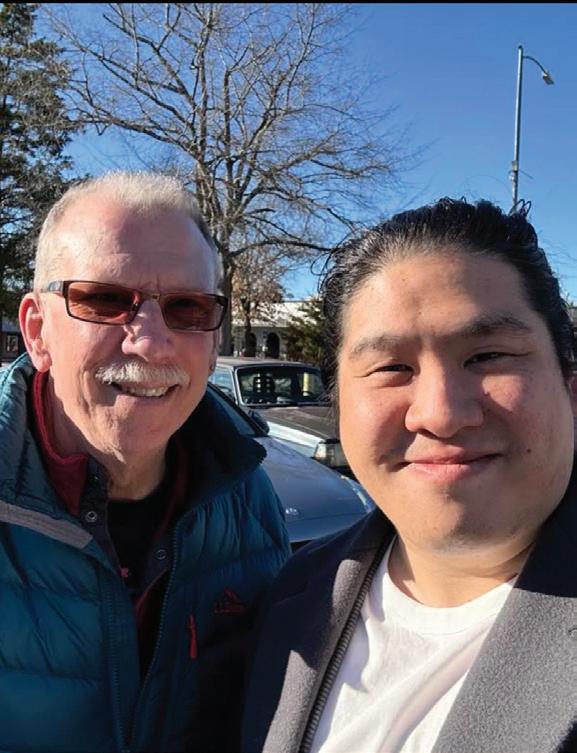
Had coffee this afternoon with professional musician and former student Terry Hsieh [’07]. Terry lives and works in Taipei, Taiwan — and is currently touring with the singer-songwriter David Lao — where he plays keyboards and trumpet. He has traveled a long and at times tough toad to get to this amazing place, playing to sold-out stadiums and soon to embark on a world tour. He’s also about to release his fourth album and is producing albums for two young and promising musicians. Keep on growing, Terry!
I realize that I am one of many adults who have helped them grow into the extraordinary people they have become. I am proud of who they are, and keeping in touch this way has allowed me to witness this growth.
JUNE 17, 2021
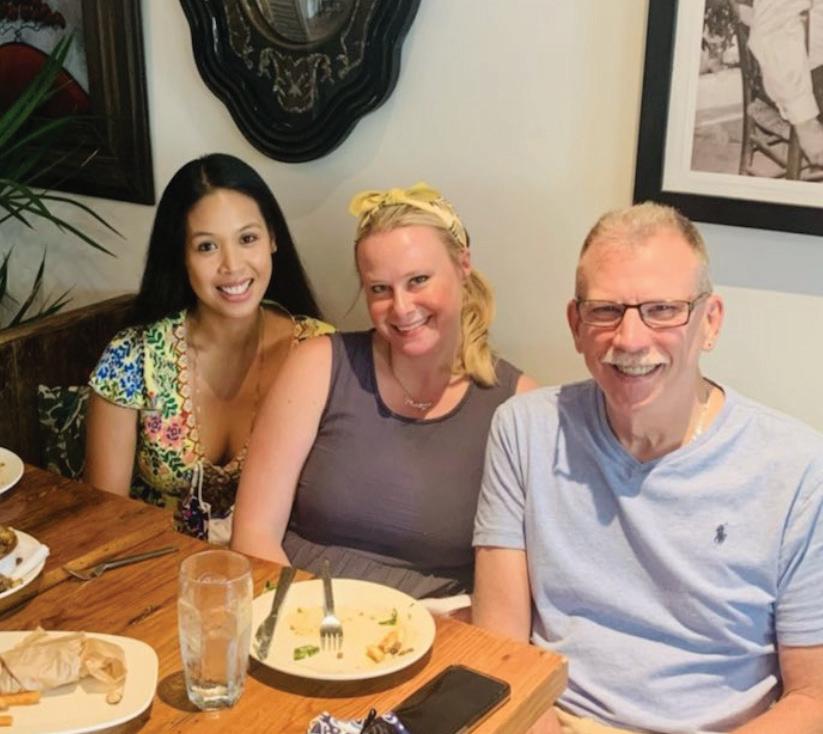
So good to see Molly Prentis Richey [’99] and Erika Estrada Boden [’99] for lunch at Kipos in Chapel Hill! They were two of the first students I taught at Durham Academy when I arrived in 1995. Molly is working in education here in North Carolina, and Erika is an entertainment lawyer in Miami. Sharing some old memories from our days together at DA and hearing more about their jobs and families was a beautiful way to spend part of this day!
OCTOBER 23, 2024
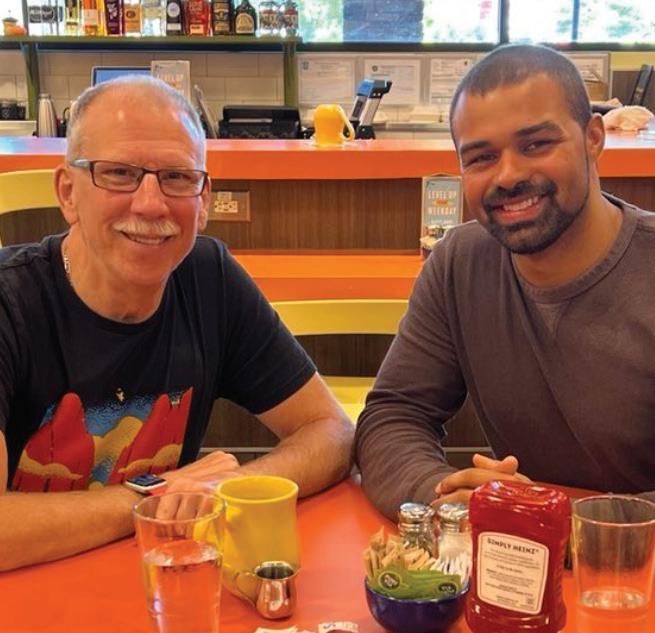
Had brunch today at Snooze in Chapel Hill with former student and actor/ dancer extraordinaire
Isaac Uhlenberg [’08]. It’s been a few years since we last got together, but he’s living in Los Angeles and making his way in films and dance gigs. He’s a class act and an extraordinarily good man. Check out his moves on YouTube! So good to see you, Isaac!
AUGUST 27, 2024
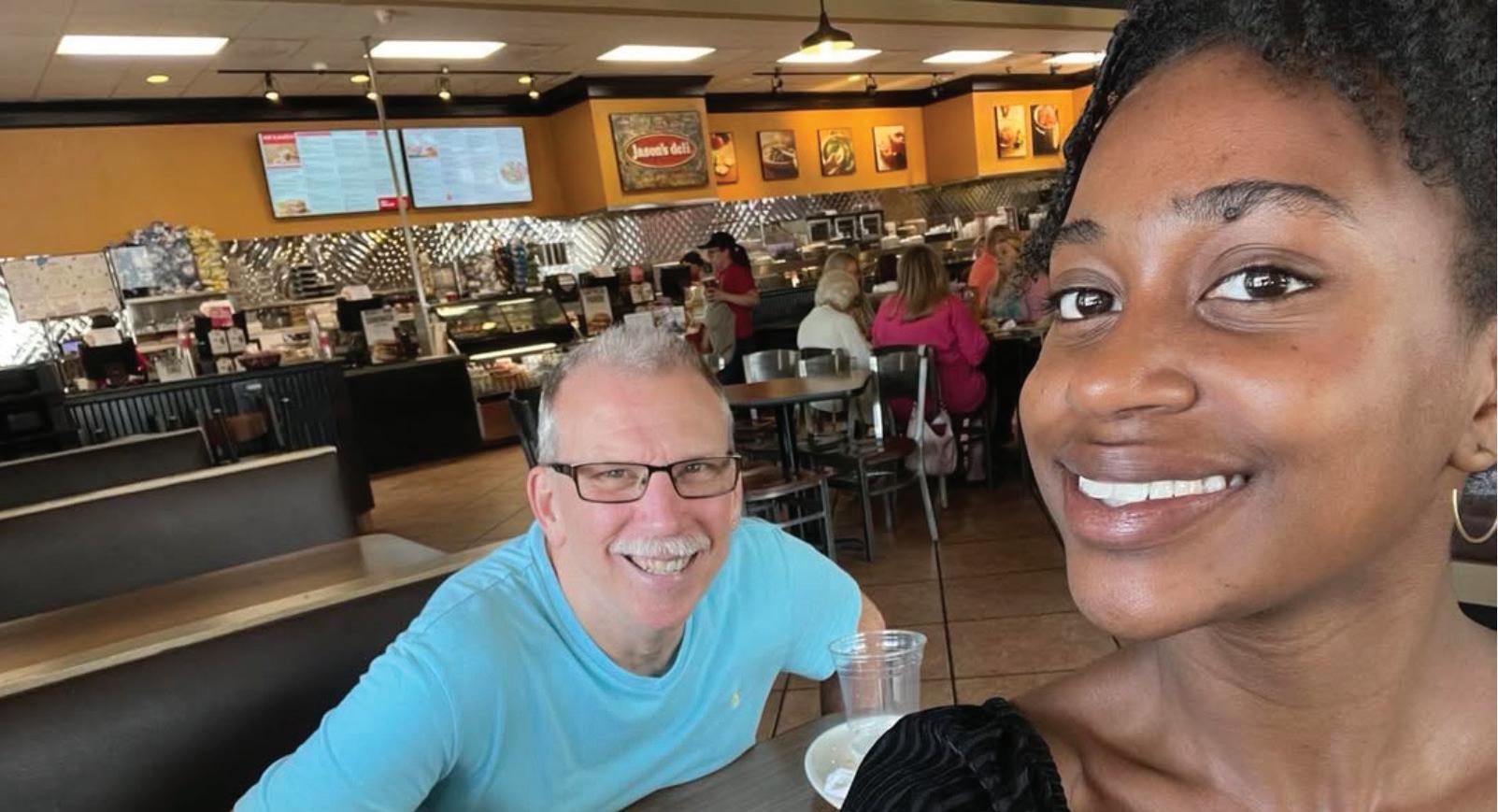
Amani Diallo [’23] is in town, and we grabbed lunch at Jason’s Deli today, where she gave me a recap of her first year at Brown. She is a former student, and I advised her in an independent study during her senior year. She made an incredible short film based on interviews with some of her fellow students that surely foreshadows some amazing possibilities for the future. She is a deeply thoughtful and morally aware young woman who is making the most of her life! So good to catch up!
DECEMBER 22, 2021
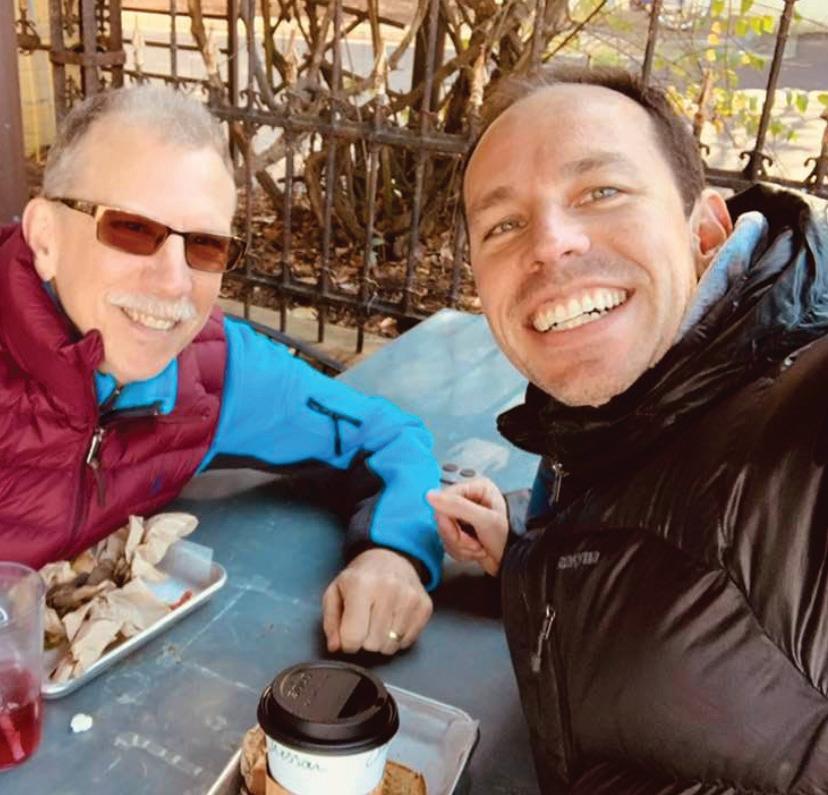
So happy to see former student and advisee Win Chesson [’02] today for lunch at The Root Cellar in Chapel Hill! Though we have been in touch over the years, this is the first time in a long while since we’ve gotten together. He and his partner, Audie, are in town for the holidays before heading to the West Coast for the winter and spring. After four years with Goldman Sachs, Win has started his own practice as a personal coach, covering both lifestyle issues and financial planning. Life is indeed good for them both.
APRIL 13, 2024
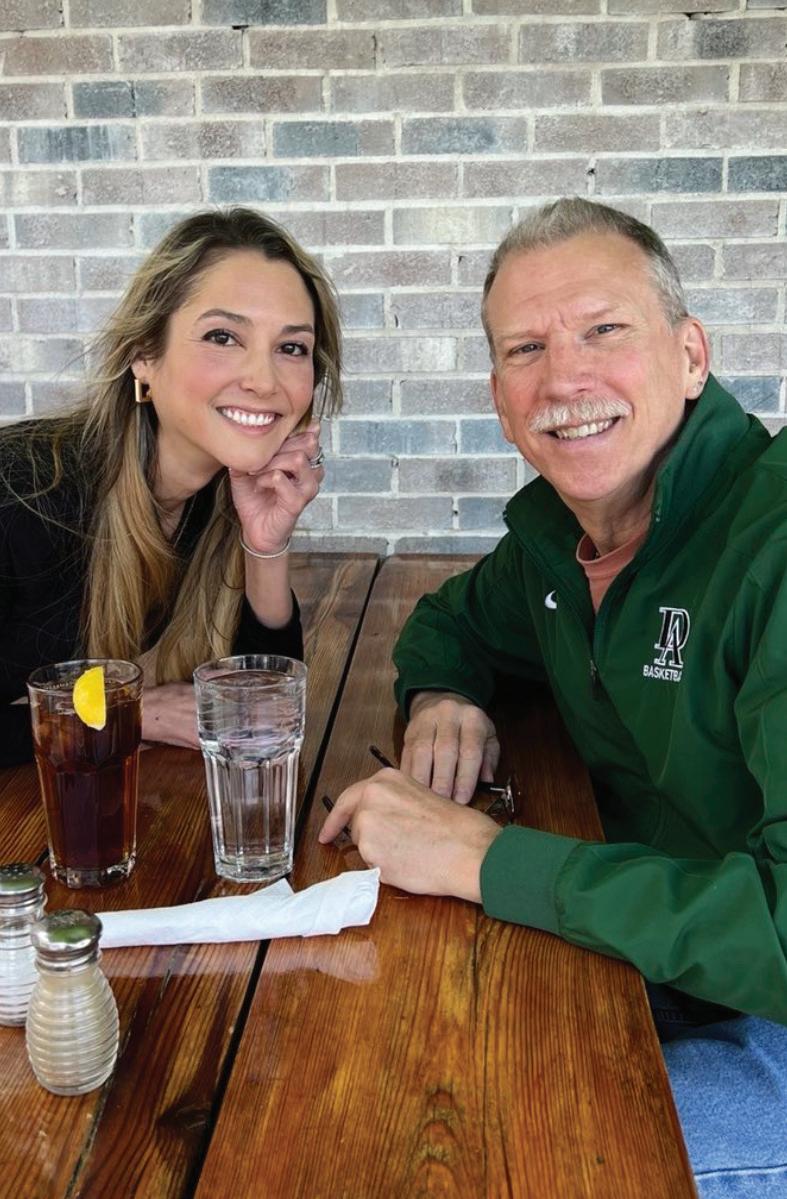
It’s been many years since I last saw Julianna Szabolcs [’12], but she was one of my earliest art history students at DA! She is back in town for the weekend, and we got lunch at The Refectory in Durham. Julianna is a practicing substance abuse counselor, as well as a licensed mental health counselor working primarily with at-risk teenagers in the Washington, D.C., area. My respect for her is boundless for a whole host of reasons, but the work she does is even more remarkable given just how vital it is in this day and age. So good to see you, Julianna, and to hear firsthand about the important work you are doing. Thanks for reaching out and for the wonderful card you wrote. Keep up the good work and stay in touch!

If you’ve ever found yourself awed by the boundless opportunities for Durham Academy students, or amazed by the soaring excellence of DA teachers, or wowed by the ceaseless innovations emerging from Ridge and Academy roads, then the source of your wonder has been the Durham Academy Fund — the enduring answer to the question, “What makes the everyday magic of DA possible?”
What enables the incomparable experiential learning provided by Cavalier Capstones, Senior Challenge and class trips? The DA Fund. How does DA make itself more affordable and accessible with financial aid awards? The DA Fund. From where do coordinators of our Diversity, Equity and Engagement initiatives; the students and faculty on our speech and debate team and on our DARC SIDE robotics team; or the dreamers and believers who operate our Innovation Journey Fund draw the resources to help their visions become reality? You guessed it: It’s the DA Fund.
If the DA Fund is the foundation of our school’s operating budget, then Durham Academy Giving Day is the bedrock. Each spring, parents, alumni, faculty, staff, grandparents and friends join together to support the DA Fund. The financial contributions — no matter the amount — represent an endorsement of DA’s present and future. It is an expression of love for, and faith in, the DA community, as well as the people and students who make it so inimitable.
We invite you to express that same love and faith on March 24, 2026 — next year’s Giving Day — a meaningful opportunity to sustain the everyday magic of DA. Come be part of our enduring answer. Come be part of the DA Fund.
1,095 donors supported DA Giving Day 2025, collectively contributing $474,446!
8.6% increase in ALUMNI Giving Day support
$60,000 in DONOR challenges
213
FACULTY & STAFF made Giving Day gifts
$281,613 raised from CURRENT PARENTS
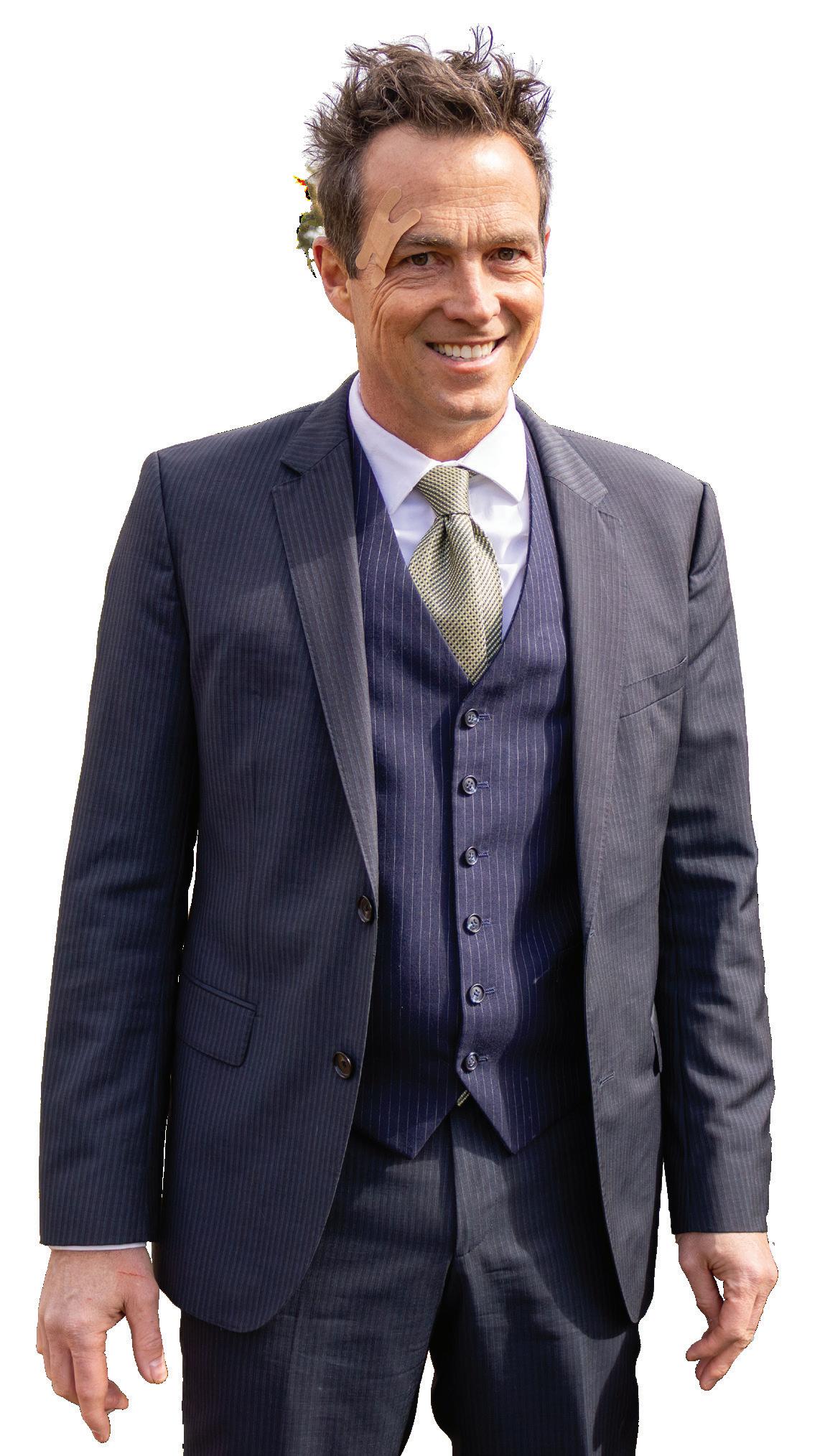
56.4% of CURRENT PARENTS supported Giving Day 99 FIRST-TIME DONORS supported Giving Day
32 states plus D.C. with international support from NORWAY, CHINA, THE UK, FRANCE, CANADA + BOSNIA-HERZEGOVINA
What do 3D printers, stage spotlights, forehead bandages and mischief have in common? That’s right — they were all spotted in this year’s DA Giving Day video series.
For 24 hours in March, the typically calm, organized and attentive Michael Ulku-Steiner was replaced as head of school by an uncanny lookalike — “Mischief Mike.” Mischief Mike (inspired by the “Mayhem” character of Allstate Insurance commercials) spent the day sneaking around to emphasize the significance of the insurance provided by the Durham Academy Fund: Without it, the things that make Durham Academy so extraordinary can fall apart. After making mischief on each of DA’s campuses (and even on the Hope Valley Country Club golf course with DA’s state champion girls golf team), Mischief Mike found himself in a support group of fellow DA Fund/insurance spokespeople, seeking help to secure support for the future of the school.
The six-episode video series surpassed 33,000 views on Instagram — drawing laughs from Cavaliers near and far, and drawing attention to the importance of the DA Fund to the life of the school.
See the Mischief Mike director’s cut at url.da.org/MischiefMike.
The Giving Day ‘Mischief Mike’ series reached 18,276 unique accounts on social media.
FRONT
Story and Photography by Kate Auger

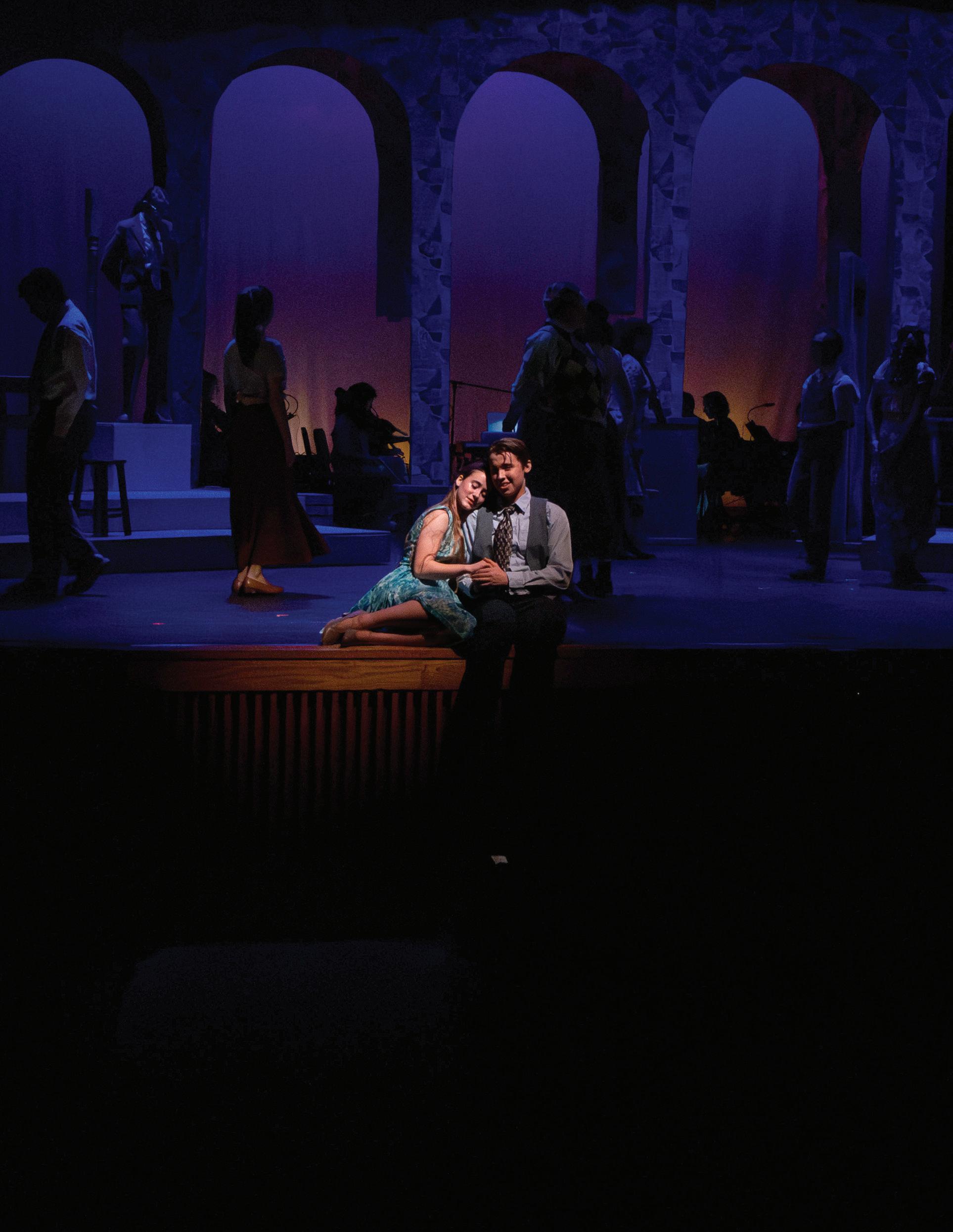
Sophie Williamson ’27 and Conor Hernandez ’26 brought Bright Star characters Alice Murphy and Jimmy Ray Dobbs to life with tender, quiet moments, and the ensemble’s bright energy complemented the sometimes melancholy tale. The production earned 2025 DPAC Rising Star Award finalist nods for Best Ensemble and Best Student Orchestra.
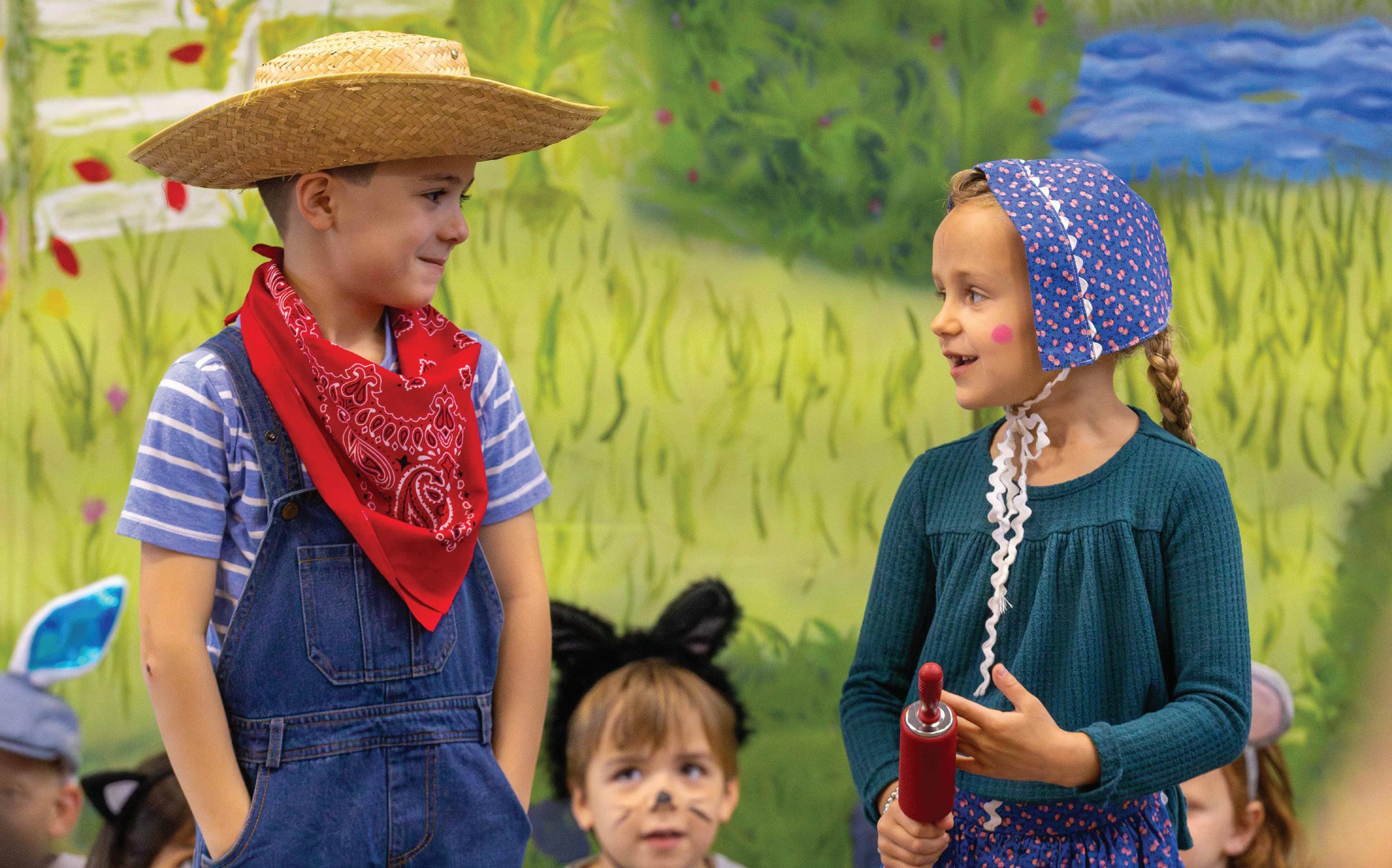
Nervous steps gave way to huge smiles as each student got their moment in the spotlight in the Owl Class kindergarten play. Where no bunnies were allowed, bunnies still seemed to go in this
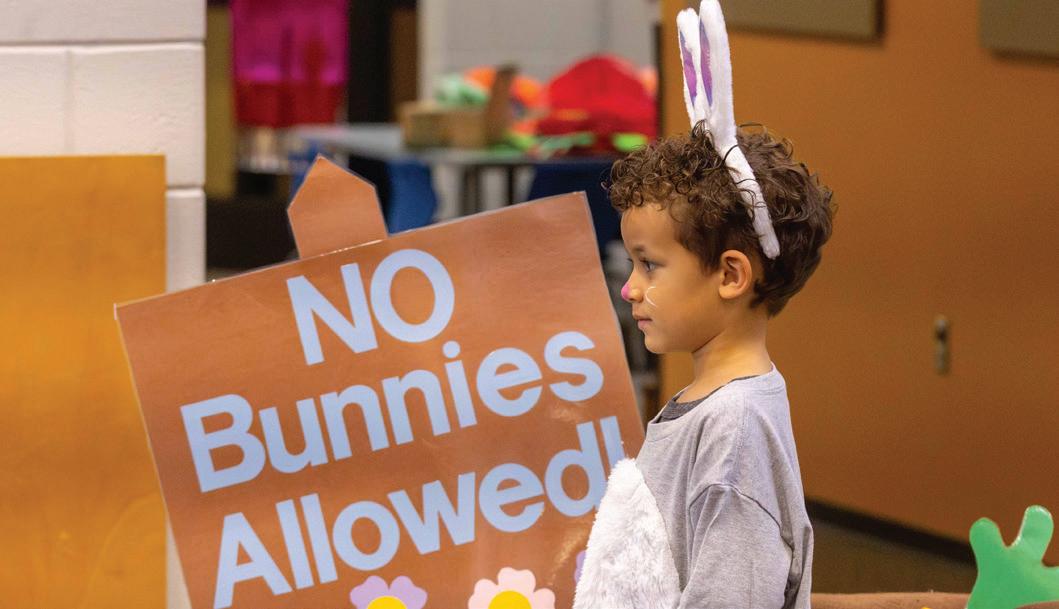
Stage markings, swirling dancers, a spotlight’s warmth and the harmony of a musical ensemble: This is the stage at Durham Academy, home to little dreams and big productions.
Big productions like Bright Star at the Upper School. The musical, set in 1920s and 1940s North Carolina, follows a budding romance between a literary editor and a young soldier who has recently returned home from World War II. The production included an on-stage instrumental ensemble, massive set pieces and complex choreography that were the result of months of practice and preparation.
The Middle School’s Project Humanity charts the rise of ancient societies, modern-day politics and environmental challenges awaiting future generations. Students led all aspects of the production — from writing the script, to designing the set, to costuming classmates — to create an immersive theatrical experience.
Lower Schoolers explored a familiar theme rooted in history, but with a fresh twist on time travel. This year’s fourth grade play, The Dueling Kingdoms — also written by students in collaboration with theatre teacher Elizabeth SouthMiller — centers on a group of travelers in search of education for all and unity of divided peoples. Mystical gates bring the group to the future, where they are guided by Dr. Martin Luther King Jr. to meet fellow heroes of history, including Jackie Robinson, Alice Paul and Malala Yousafzai. The travelers witness such pivotal moments in Civil Rights Movement history as the Greensboro sit-in and Rosa Parks’ arrest.
While the Preschool Great Room may offer a smaller stage, the lessons learned by budding thespians are just as powerful here. Every pre-kindergarten and kindergarten class puts on a play each year, with each student memorizing their very own speaking part. Through the experience of staging the plays — typically based on beloved picture books — DA’s youngest students learn just how capable they are, and they carry that confidence to even bigger, brighter stages at DA and beyond.
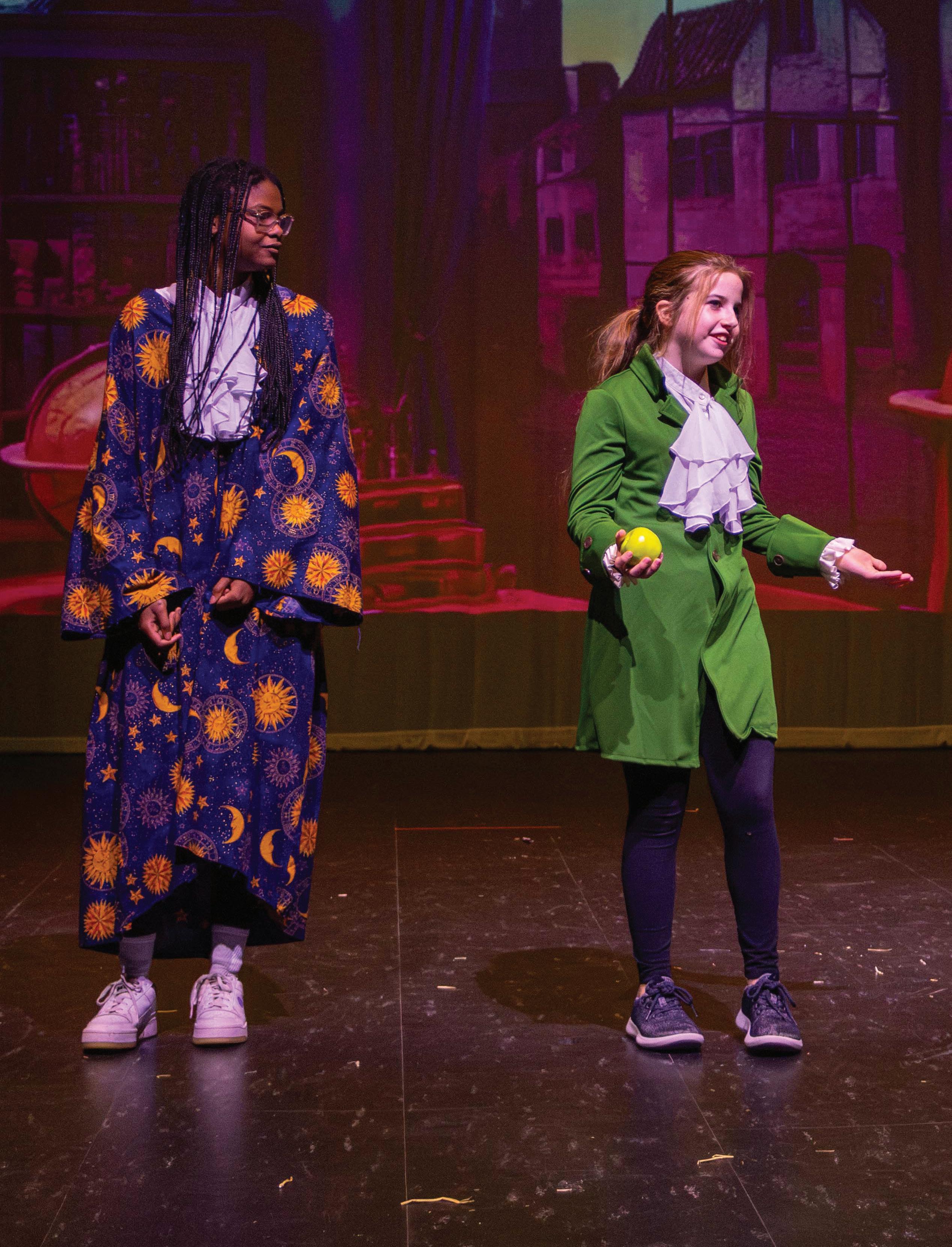
In Project Humanity, Middle Schoolers presented a theatrical debate over science and society, from ancient philosophers arguing the Earth’s place in the cosmos to a speculative future shaped by neural chips and augmented reality. The student-written production was a commentary on capitalism, politics and their effect on the environment.

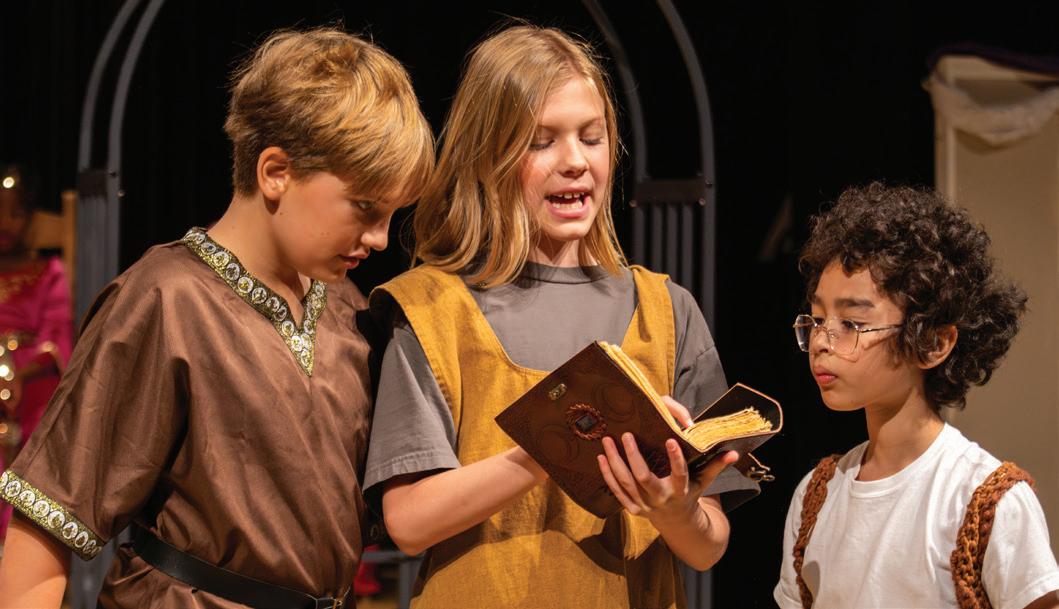
In The Dueling Kingdoms, a long-lost diary reveals why the kingdoms are divided: a bitter feud between royal siblings over who deserved credit for inventing time travel gates. Over the course of the time travelers’ quest to return home and unite the kingdoms, they learn to fight for education, justice and equality.
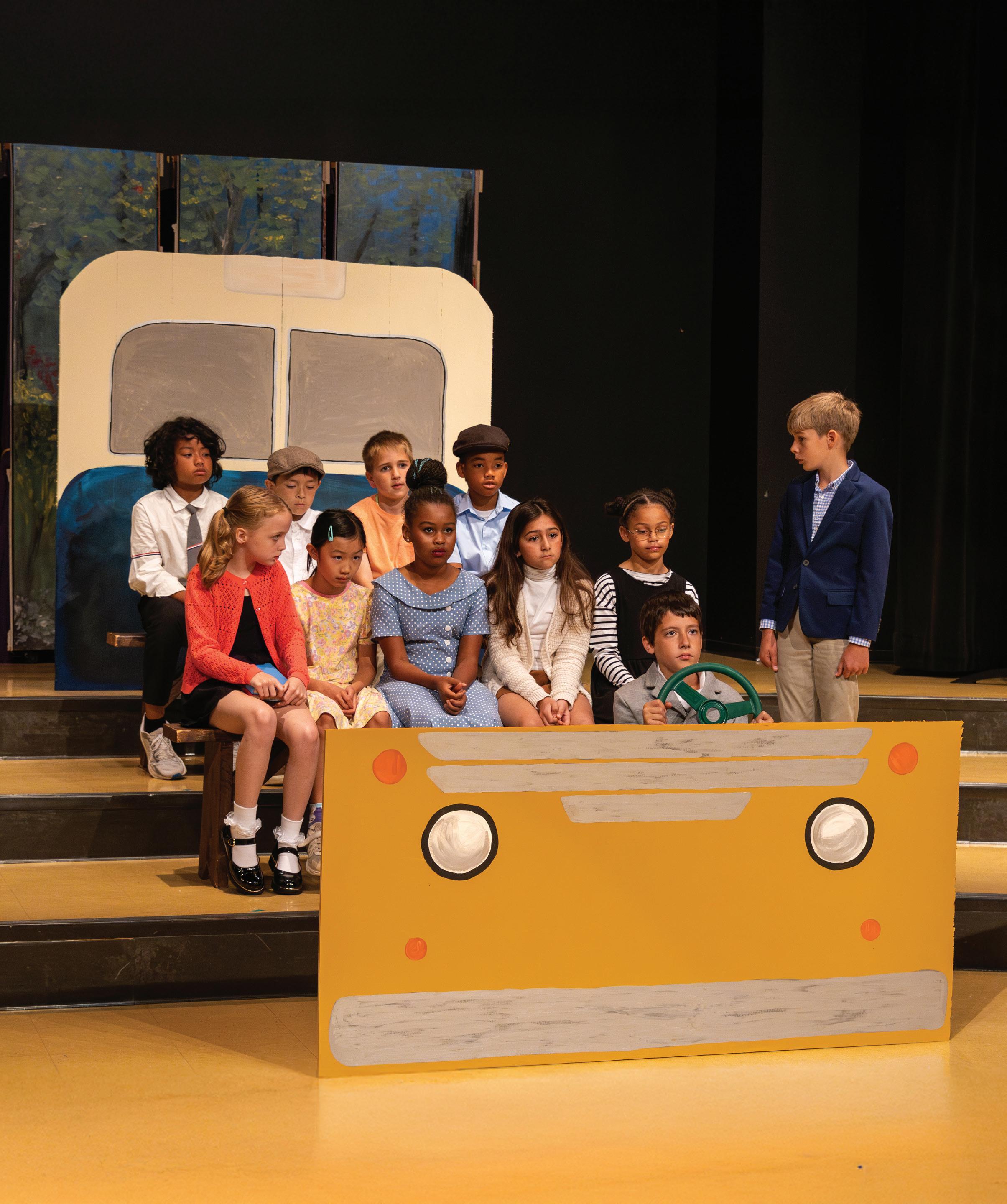
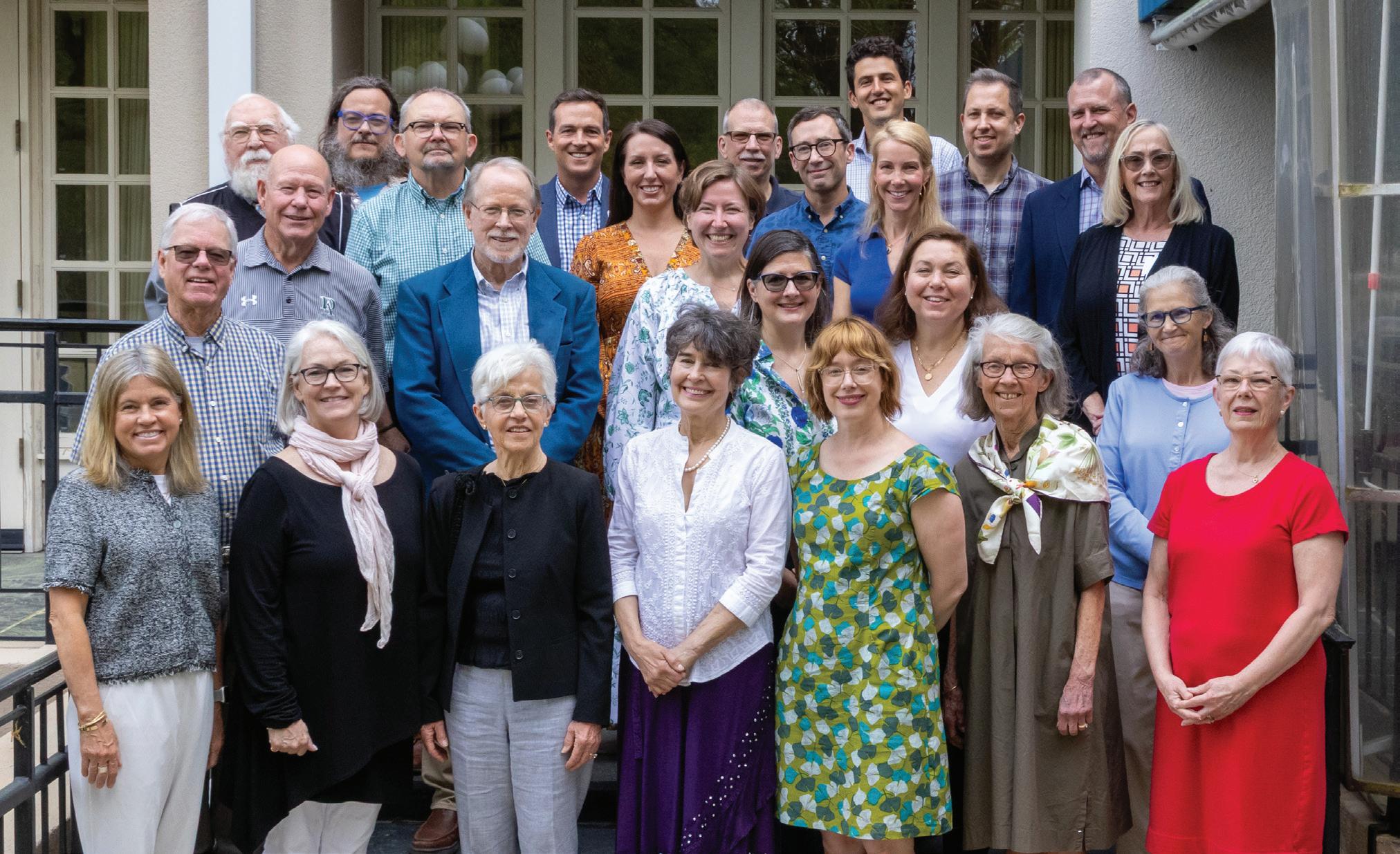
By Sarah Graham Motsinger ’00, Director of Operations and Stewardship
With love for Durham Academy and appreciation for its faculty, Brenda and Keith Brodie made an initial gift in December 1986 to establish an endowment fund to support faculty sabbaticals. Keith (former president of Duke University) and Brenda were both former members of Durham Academy’s Board of Trustees, and they possessed a unique understanding of the value that a sabbatical program would bring to DA. Even today, such programs are relatively rare at independent schools. Thanks to the Brodies’ ongoing support, the fund continued to grow, and in 1995 it was officially named the Brenda B. Brodie Faculty Sabbatical Endowment Fund. Since its inception, 44 faculty members have been awarded this extraordinary opportunity, supported by the income that the fund generates each year.
In April, 19 faculty sabbatical recipients gathered for a special luncheon honoring the Brodie family. While Keith passed away in 2016, the gathering was attended by Brenda and their chil-
dren Melissa Brodie Hanenberger ’88, Cameron Brodie ’90, Tyler Brodie ’92 and Bryson Brodie ’96. It was a meaningful moment of connection and gratitude, as teachers shared personal stories about how their sabbatical experiences had enriched their teaching, deepened their passions and contributed to their growth, both professionally and personally. Their stories were powerful reminders of the lasting impact of the Brodies’ generosity and deep belief in the importance of sabbatical opportunities for faculty. Whether pursuing an advanced degree, engaging in a professional development experience or embarking on a journey of personal growth, they believe that nurturing the development of educators is essential to building and sustaining an excellent school.
Durham Academy remains deeply grateful to the Brodie family and their commitment to education, professional growth and our school.
By Ben Michelman, Middle School Community Engagement Coordinator and Language Arts Teacher
I’ve been at a school every semester since I was 5. This really started to sink in on the first day of my Durham Academy faculty sabbatical in January. It was 8:30 a.m., the house was silent (I have two young kids, so I couldn’t remember the last time I had been home alone in a quiet house), and a realization started to sink in: I need to fill the next six months in meaningful ways.
My sabbatical proposal indicated that I would be volunteering every day to build new relationships and strengthen existing ones with community organizations. These connections would ideally result in new student projects that would enhance class curricula. But still, I felt the weight of silence and open time as I sat in this kitchen on this Monday morning. Space and time were the things that I had been yearning for, and here they were … I didn’t know what to do with myself! So I dug through my closet for a journal — the last entry was from 2019. I wrote my feelings, my hopes and dreams for the next months of my life. I could feel the anxiety leaving my chest… and then the phone rang. It was Mrs. Collie, one of my son Sammy’s pre-kindergarten teachers at DA. Sammy had fallen and split his head open on a desk. He needed to be picked up immediately and brought to urgent care.
Sammy was fine! And that was the last time I’ve felt the nerves. But I haven’t fallen into a routine, either. The nerves have turned into consistent excitement at the beginning of almost every day. Each day feels open to possibility like never before. I’d like to describe some of my activities so far…
• I’ve folded clothing donations at A Note in the Pocket and learned about this fantastic organization, just around the corner from DA, which I didn’t know of three months ago.
• I’ve folded our own family’s laundry as soon as it comes out of the dryer.
• I’ve planted trees on Elizabeth Avenue with Keep Durham Beautiful and 100 11- and 12-year-olds.
• I’ve set up an old-school darkroom in my basement and have been shooting, developing and scanning film. It reeks down there of developer and fixer.
• I’ve driven a group of DA eighth graders to a community refrigerator as they ideate and revise their Durham Challenge project.
• I’ve looked up at the stars at the Morehead Planetarium as 40 pre-k students ooh and ah, as I chaperoned my kid’s field trip.
• I’ve read novels at a rate that I haven’t read novels in a long time.
• I’ve exchanged smiles of recognition from a young family that just emigrated from Japan. I met them on Tuesday at Urban Ministries, and the next afternoon I loaded a box of food into their car at the Iglesia Emanuel food pantry a few miles down the road.
• I drove to a poetry conference outside of Philadelphia with a friend I haven’t seen since college. We wrote about our kids. I listened to the roar of Eagles fans as they cheered a playoff victory in an old Irish bar.
• I’ve taken care of my niece when she’s home sick.
• I’ve jumped out of my skin at the cawing of a raven at Piedmont Wildlife Center, as I worked to coordinate a service learning project for next year’s sixth graders as they read Carl Hiaasen’s book “Squirm.” If it works out, the kids will be scrubbing the splattered excrement of large birds of prey from their enclosures.
• I’ve brought my own kids on my regular Meals on Wheels route, and now my clients are disappointed when it’s just me.
• I’ve seen food banks lose fresh food donations. I’ve seen organizations like Farmer Foodshare and Church World Service struggling to provide services due to lost funding.
• I’ve seen the little flags of El Salvador and Panama and Colombia and Nicaragua and the Dominican Republic that hang from the rearview mirrors of cars disappear over the weeks as they drive through the Iglesia Emanuel parking lot to get fresh food.
• I’ve spent more time with my parents.
• I’ve stayed in shape.
• I’ve admired a retired lawyer who volunteers daily at Urban Ministries and sits with clients for long stretches trying to work through their challenges and connect them with available resources. The man has repeated this Maya Angelou quotation to me almost every time I see him. He says, “Have I told you the Maya Angelou quote?” And before I can tell him yes, every time we’ve seen each other, he says, “It’s something like this: ‘People will forget what you said or did, but people will never forget how you made them feel.’” And every time I hear it, it resonates.
Almost all of these things wouldn’t have happened if I wasn’t granted this incredible opportunity. I cannot imagine these experiences won’t make me a better teacher and community engagement coordinator. Thank you so much to DA, Michael Ulku-Steiner, Kristen Klein and the Brodie family for making this possible.
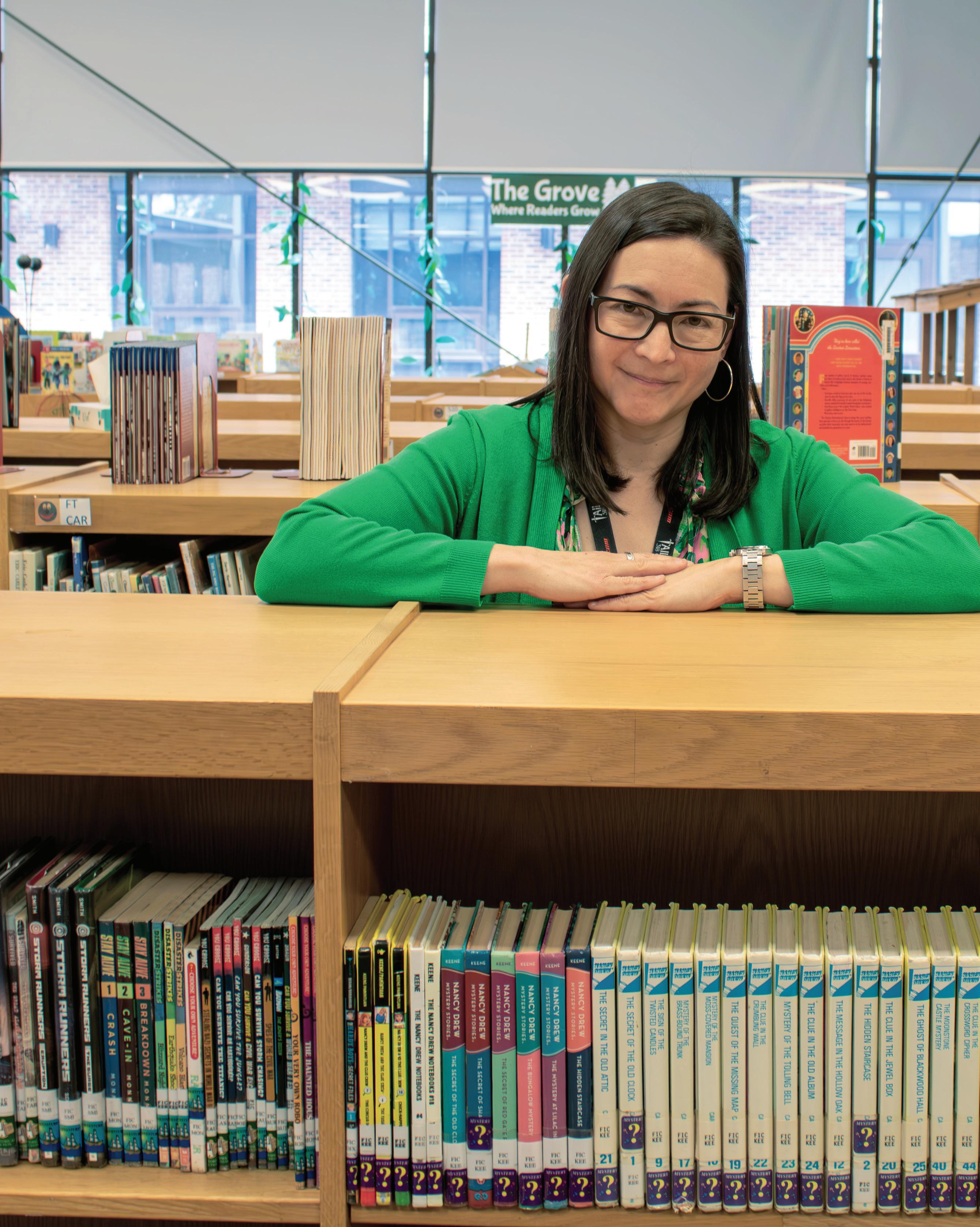

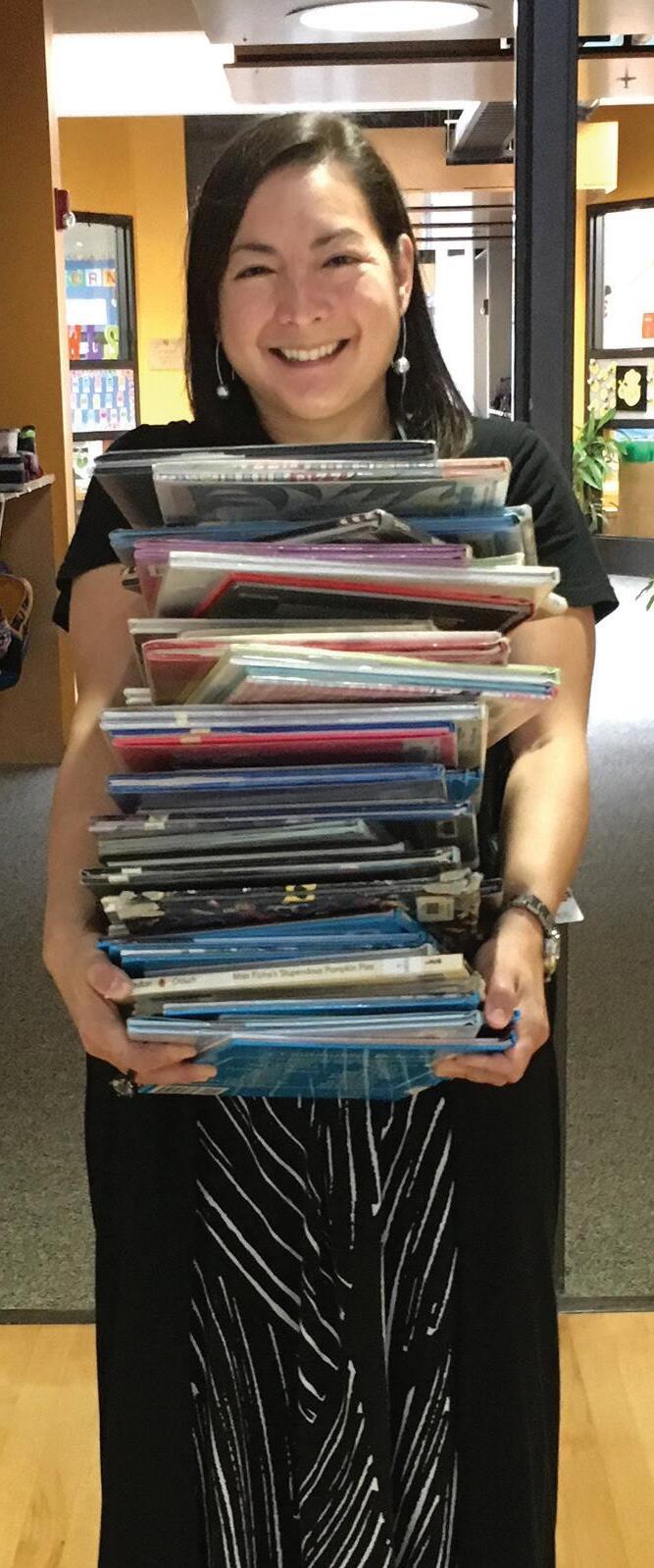
Letizia Haynie’s 13 Years as the Preschool and Lower School’s Assistant Librarian Have Been Music to Her Ears
by Dylan Howlett
Every day in the Durham Academy Preschool and Lower School Library, there is an exuberant huddle. You can’t miss it. Take 20 short-legged paces from the library’s main doors, keep a straight line past the first stack of bookcases and head toward the desk tucked in the back corner. There’s an orbit of six kids around Letizia Haynie, the assistant librarian for the past 13 years. They clamor for her to place a hold. They ask if their favorite titles have become available. They inquire about a book they haven’t yet seen in the library, which prompts Haynie to scribble the title on a sticky note and hand it to Dr. Michelle Rosen, the head librarian. “It is exceptionally exciting to read a book,” Haynie says. “I think a lot of our kids do feel that way.”
That excitement could happen anywhere. When she was a Los Angeles-area middle school student, Haynie would pass her 90-minute bus rides by reading The Lord of the Rings and The Hobbit until she arrived at her home near the Hollywood Bowl. It allowed her, she says, to start building an inner life. She hopes the same for DA students. The library is as much a home for her daily clamorers as it is for the kid who needs a quiet space at lunch. Haynie thinks of those students often. It is little surprise that when she eats lunch with faculty members, she will carry the conversation with questions about her colleagues — their students, their families, their lives.
Then there’s Preschool Storytime, when Haynie reads aloud each week to every pre-kindergarten and kindergarten class. It is such a fixture that Haynie sustained the tradition during the COVID-19 pandemic, recording herself from the third-floor bonus room in her Durham home. DA parents would comment on social media posts that storytime was the highlight of their child’s day. It is, still, for many students. Haynie prefers stories with an irreverent bent — Walter the Farting Dog and Billy’s Booger are among her favorites — and infuses her lively readings with humorous voices. Her gift for performance is unsurprising for a classically trained pianist who graduated from Oberlin College with a Bachelor of Music and from the Eastman School of Music with a master’s degree.
Haynie hits — and reads — all of the right notes.
“She is such a gifted human being,” Rosen says.
“I tell the kids every year that I pride myself on being a very animated, great storyteller,” says kindergarten teacher Lori Hanks. “But Ms. Haynie is No. 1.”
“She brings an awesome book, and she gets them excited about it,” says kindergarten teacher Sloan Nuernberger. “All the kids will say, ‘Can I have that one?’
“And she’ll say, ‘Well, you can come to the library and check it out.’”
Literature wasn’t the first art form that made Haynie feel home. It was the piano. “It almost feels like an extension of myself,” she says. She would sit in front of a toy keyboard, listen to a piece of music and pick at the keys. Her dad, Robert, was a mosaic tile setter who still competes in cycling races at 89, and her mom, Terumi, was a translator and word processor who now dedicates her time to oil painting. Their daughter’s affinity for the piano was, perhaps, preordained: They share their family name, Paganini, with the great Italian composer and violinist Niccolò Paganini.
Haynie had her first lessons as a 6-year-old and would eventually enroll at a performing arts school in Los Angeles. It’s where she met Dr. Louise Lepley. “I wish I could talk to her now and say, ‘You changed my life,’” Haynie says. Lepley taught her how to practice with a metronome, and how to boost her technical proficiency. She pushed for Haynie to apply to
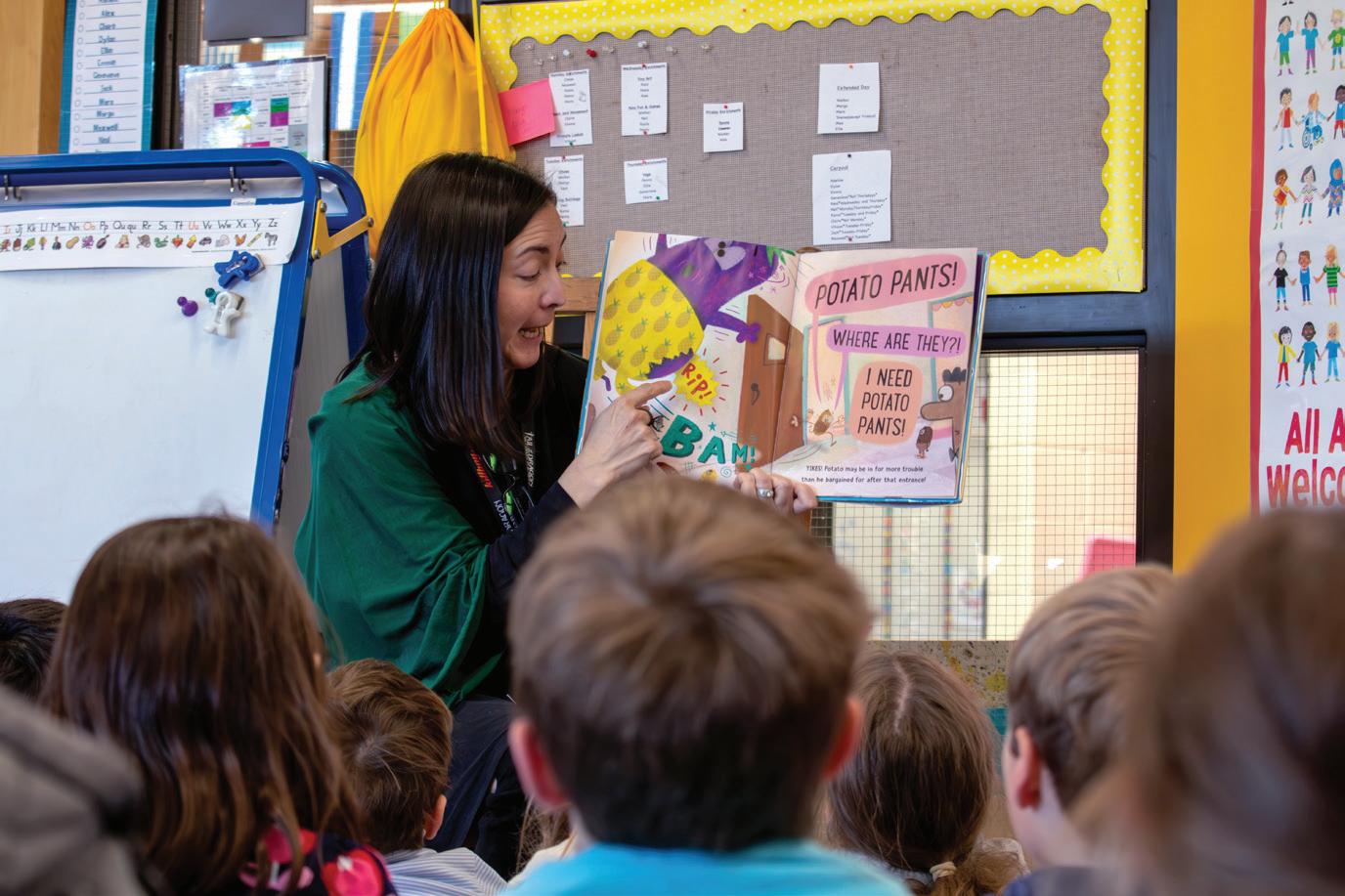
Oberlin, where first years are rarely selected for performances. Haynie performed at an honors recital during her first semester.
After Haynie’s two years at Eastman, she knew most of her friends wanted to get their doctorates. Haynie couldn’t do it. She was worn out after practicing every day for 18 years. She took a series of communications jobs — the American Symphony Orchestra League, the Curtis Institute of Music — that kept Haynie connected to music. Then her husband, Brent, took a tech job in the Triangle. That’s how the Haynies found Durham Academy. Their oldest, Michiko Haynie ’19, enrolled in pre-k. Letizia served as a parent volunteer when she wasn’t at home with her son, Calder Haynie ’22. She would walk through the doors of the Preschool and Lower School, awash in natural light and vibrant col-
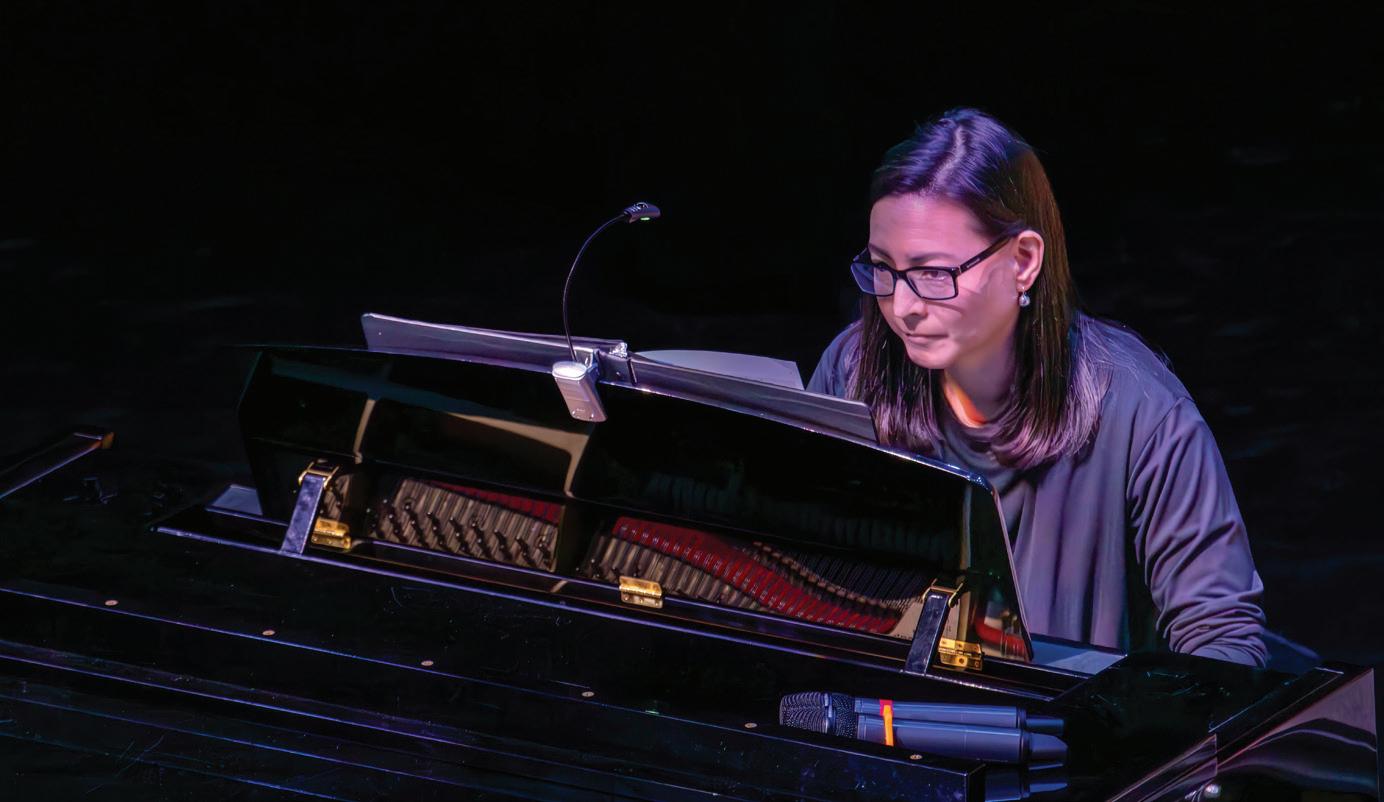
ors, and felt at home. “I didn’t want to leave,” she says. So she didn’t.
Haynie would serve as a third grade teaching assistant for four years before the assistant librarian’s position opened. Rosen knew there couldn’t possibly be a better applicant for the job than the former communications professional and voracious reader. Lower School teachers have boards outside their classrooms that show the books they’re reading; Haynie switches hers almost every other day. Hanks will recommend a title to Haynie; she’ll pick it up and, within days, mark it as “Read” on Goodreads. Haynie reads every new book that comes to the library so she can be ready when a student inquires about their next great read. “She reads circles around me,” Rosen says, laughing.
That extension of herself — the piano — has always remained. She is the Preschool and Middle School’s accompanist for divisional performances, and she also accompanies amateur singers outside of DA. It’s all about the right notes, both in concert and in the library. The huddles around her desk are one of the job’s crescendos.
“I’ve always loved books, and I’ve always loved kids,” Haynie says. “But it turns out I love kids so much more than I already thought.”
She pauses, searching with the thoughtfulness that Dr. Lepley, and her colleagues, and her students have admired for so long.
“They’re open books,” she says, smiling.

STEAM by Design Lead Learner Garlic farming
“I grew up on a farm, so working in the dirt has always been something I have enjoyed. When I managed the Carrboro Farmers’ Market, I learned from a vendor how they grew, harvested and cured the garlic they sold. I was intrigued, as garlic seemed exotic, and I imagined it would be hard to grow. Turns out, I was completely wrong, as it is very easy to grow, harvest and cure. I have been growing garlic since 1998 on my farm in Efland. My garlic farming is my superpower; the taste and quality of the garlic I grow have spoiled me for any store-bought versions. My garlic story and farming keep me connected to my roots and help me balance my digital and analog lives.”
Durham Academy faculty and staff are known for their dedication to students — but the creativity and ingenuity that shows up in their instruction extends well beyond the school day. Beekeeping and hiking. Photography and fitness training. Crafting intricate woodworking projects and decorating delectable cookies. Whether they’re trying something new or working toward mastery of a longtime activity, these hobbies reflect many of the values that DA educators strive to cultivate in their students: from joy and creativity, to courage and authenticity.
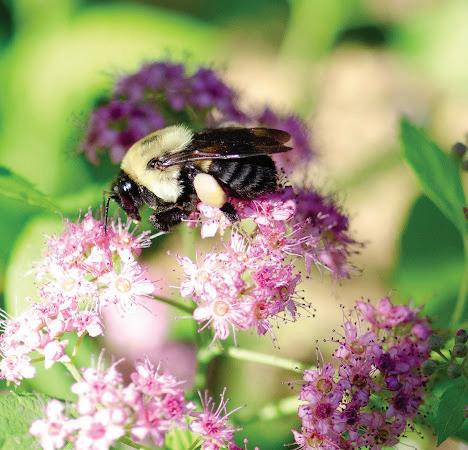


Kristen Klein Associate Head of School Nature photography
“Since I met my husband 15 years ago, I have spent a ton of time outside hiking and biking. To capture those adventures, I initially took photos with my smartphone. About five years ago, thanks to the suggestion of a good friend who is a professional photographer, I graduated to DSLR photography. I purchased one of her older cameras, took a few ‘lessons’ from her and started shooting. I love photography because I learn something new every time I take the camera with me. I started as a total novice, so I still face regular challenges with light and focus. And I’ve had to learn how to edit as well, which continues to be a steep learning curve. Working with my camera slows me down and helps me focus on small details like the pattern on a fern — details I would miss on any other day.”
Erika Greene
Upper School Math and Computer Science Teacher, Varsity Volleyball Coach
Group fitness training
“I first started working out at Burn Boot Camp in fall 2020. After playing college volleyball, working out alone never had the same energy as working out with the entire team. I didn’t know how badly I was missing the motivation and community of group fitness until I started at Burn. I quickly became reenthused with my workouts and healthy lifestyle. I was asked to become one of the trainers at the gym shortly after joining, and I’ve worked at gyms in both Minnesota and North Carolina. Other than teaching and coaching volleyball, I spend most of my time either working out or training others. I enjoy teaching others how to prioritize their health and well-being, both physically and mentally — choose yourself for 45 minutes a day. I try to live my life by that as well; I work out or train at the gym each morning so I am energized and ready to teach and coach. It definitely makes the 3:40 a.m. alarm worth it!”
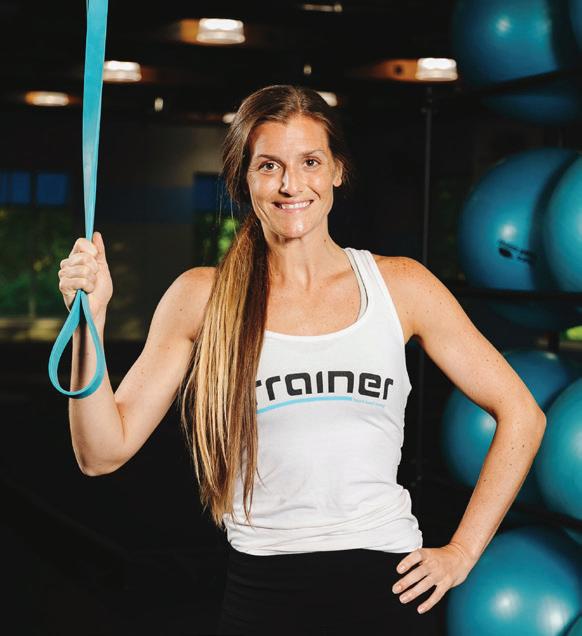
Julian Cochran
Upper School Computer Science Teacher, Lead Class Advisor Class of 2028, Varsity Boys Soccer Coach
Thru hiking/long-distance backpacking
“I started thru hiking in 2015 to celebrate a five-year post-cancer diagnosis, completing the 75-mile Foothills Trail along the North Carolina-South Carolina border, close to where I grew up. As a former Boy Scout and NOLS student at Davidson College, I’m an experienced backpacker, and I began annual summer trips on the Appalachian Trail. To mark my 10+-year cancer-free milestone, I completed the entire AT in 2021 while on sabbatical, covering 2,200 miles from Georgia to Maine in five and a half months. Since then, I have hiked the 486-mile Colorado Trail (2023) and attempted the Long Trail in Vermont (2024). In 2025, I’ll tackle a section of the Continental Divide Trail from the Montana-Canada border southward. Thru hiking has become my passion, teaching me about my capabilities and providing spiritual grounding through its simplicity. Despite the physical challenges of 20+-mile days, it has given me an invaluable perspective on life, faith and who and what truly matters to me.”

Kindergarten Teacher
Dance
“I have been dancing since I was 3 years old! My parents were exhausted with my dancing and singing around the house — I particularly enjoyed reenacting Mary Martin’s version of Peter Pan — and quickly enrolled me in dance lessons. Dance was, and continues to be, an escape into another world. When I am moving and listening to the melody or lyrics of a song, I am transported somewhere else. The beauty in dance is in the expression of the story and the confidence-building, and I fell more in love with this as I began teaching dance to others. I have especially fallen in love with teaching dance fitness and with choreographing for community theater productions. Recently, I have loved taking dance classes again! Durham has some amazing dance classes for adults that I would highly recommend — even if you don’t think so, everyone has their inner dancer!”


Chip Lupa Fourth Grade Teacher
Woodworking

Sarwat Husain
Third Grade Teaching Assistant
Cookie decorating
“I once complimented a DA parent who made gorgeous cookies — and she told me I could make them, too. I laughed at the time, but she sent over her icing recipe, piping bags and one of her insanely delicious cookies. I had to give it a shot. I made my first batch of badly decorated Halloween cookies for my first grade class in 2018. It was hard work, took a long time and they turned out nothing like the pictures, but I remember having a lot of fun making them. I continued to practice, learning a new skill and becoming good at it. I love art and baking — cookie decorating is a perfect combination of the two, and I can do it from the comfort of my kitchen. Life is sweeter when you have things you enjoy doing. Having a hobby like this has been good for my soul and a sweet thing to do for others when you can share it with them.”

“I’ve always enjoyed working with my hands and making things. The seeds for woodworking were planted at an early age by my grandmother, who was an art teacher. My sister and I spent weeks at a time with her in the summer — playing outside, and crafting and creating when we were inside. In graduate school, my aunt gave me my grandfather’s antique hand plane. This really piqued my interest, and I started dabbling with some small woodworking projects. I got more into it when my girls were little, but I only had time to work on things occasionally. By 2021, my girls were fairly independent, and I had a little more time to be creative. I bought a few used tools and took over a bay of my garage. When I can, I try to get out to my little workshop and make different things. I love the challenges and intense focus that each project brings, and I really enjoy learning something new with each creation.”


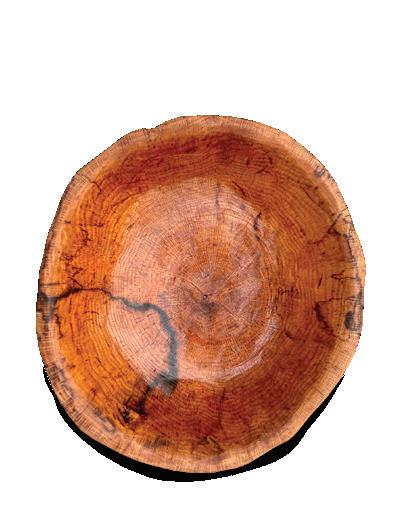
Libby Lang ’89
Second Grade Teacher
Needlepoint

“My mother and grandmother are both needlepointers. When I was a young girl, they took me to my first needlepoint store in Columbia, South Carolina. My mother used to take me to stores to “sit and stitch” with other stitchers. My grandparents’ and parents’ homes are filled with their creations: pillows, brick covers, picture frames, stools, bell pulls, eyeglass cases and more ornaments than I can count. I needlepointed my first pillow — a turtle — when I was 9. When I was in middle school, I was in [DA Middle School French teacher] Teresa Engebretsen’s “Cross Stitch Club.” I have fond memories of sitting with my friends stitching and hanging out. I made cross-stitch ornaments for my teachers and family. I still have a few special ones that I hang on my Christmas tree. Needlepointing is a very constructive, therapeutic hobby that provides fairly immediate gratification (depending on the size of the project). Stitchers see their talents in their work. Needlepointing is detail-oriented, which fits my personality. I can stitch for hours when my schedule allows — it brings me joy!”


Tina Bessias ’78 Sustainability Coordinator
Beekeeping
“I went into beekeeping thinking it would be about bees. It is, of course, but it’s just as much about nature and community. Beekeeping makes me look closely at flowers to see who is pollinating them. It makes me care about the interaction of weather and the seasonal bloom. Are the red maples too early for foragers this year? If it rains during the poplar bloom, we won’t get much honey. Beekeepers routinely share knowledge and materials and generally help each other out. We enjoy educating the public, too. Sometimes that’s in a classroom or festival setting, and sometimes it’s impromptu, especially if a swarm of bees lands in an inconvenient place. That’s when someone calls for help, and we get to show up and reassure the neighbors as we coax the bees into our box: These bees are scouting locations to set up a new colony, and we can give them a good, safe spot.”
David Chandler
Upper School Fabrication Lab Technician/DARC SIDE Robotics Mentor
Landscape and wildlife
photography
“During high school, I discovered a passion for photography, which began with a simple camera. I was fascinated not only with capturing a good shot, but also with the entire process of developing film and printing photographs in a darkroom. This enthusiasm carried into college, where I contributed photos to the yearbook. As life grew busier with a young family, I shifted to capturing family moments and vacations. When my wife, Judy, started coaching field hockey at Durham Academy, I started photographing her team, again using film. [First grade teacher] Debbie Suggs suggested that I transition to digital photography, rekindling my love for the craft. Upon retiring, I dedicated significant time to mastering techniques including composition and editing. Traveling to various locations provided me with diverse and captivating subjects to photograph. Additionally, I learned to fly a drone, earned an FAA license and incorporated aerial perspectives into my portfolio. Photography has been both a technical challenge and an artistic outlet for me, offering the stimulation I needed after retiring. It keeps me learning and evolving.”




‘When
Andrés Galindo believes a caring community is the secret to enduring happiness. That is, in part, why he wanted to join DA as the school’s new DEE director.
By Dylan Howlett
He would rise at the same time every morning to make his bed. He would then prepare breakfast and his school lunch, and he would find time in the morning or afternoon to switch the family’s laundry or fold clothes. Andrés Galindo was 8 years old. “When he sees a need,” his wife, Julia, says now, “he wants to fill that need.” That’s what happens when you have to grow up fast, as Galindo did in San Carlos, Colombia, some 45 miles east as the crow flies from Medellín. It was the 1980s, and cartels and drug-related violence were everywhere. Galindo remembers getting mugged as a kid. A bullet once pierced one of the windows in his house. His parents moved Galindo and his sister to a safer neighborhood, a new school. He met a handful of teachers at Colegio Padre Manyanet in Medellín who gave him a sense of belonging, of comfort. One day, he thought, I want to be able to do this for other kids.
First, he had to do it for himself. Galindo knew — during that impressionable time when kids
are keenly aware of how they compare to their peers — that he was one of only a few children in his neighborhood who wouldn’t get the latest pair of Nikes for Christmas. That spurred him to get a job when he was 16. He graduated from high school and enrolled in business school, taking accounting and calculus, microeconomics and macroeconomics. Galindo was working full time and going to school full time. He was running out of money to pay rent, buy groceries, attend classes. He returned home late one night and found only butter in his refrigerator, only saltines in his pantry. He couldn’t continue like this. So Galindo dropped out, and he came to the United States.
He worked seven days a week in greater Boston: at a car wash every weekday, at a McDonald’s every weeknight, at a restaurant on weekends. In between, he tried putting his two and a half years of Colombian business school expertise toward an entrepreneurial pursuit; it didn’t work out. After eight years of undocu-
mented status, Galindo obtained his Social Security card and work permit. He got a job with the catering company that staffed the cafeteria at the Harvard Graduate School of Education. He borrowed English-language cassette tapes from the library and listened to them during his commutes on the T, Boston’s labyrinthine light rail and subway system. He picked up more idioms — and punchlines — from Friends and his favorite character, Chandler Bing. His language improved so swiftly that the catering company asked Galindo to work the register, then become a manager. A human resources employee at HGSE mentioned one day that there was an opening for a staff assistant’s position in the Office of Student Affairs. He would get the job and spend the next 15 years at Harvard — mentoring, counseling and supporting first-generation college students, Hispanic students, Black students, LGBTQ+ students, undocumented students. He was able, at last, to do this for other kids.
“He’s an excellent listener, and it comes out in one-on-one conversations,” says Julia Galindo, an academic writing and executive function coach who met Andrés while she was teaching and pursuing her doctorate at Harvard. “He’s not one to jump in and say, ‘I am the expert. I know exactly what you do.’ I think he’s really good at listening and creating a space for a student to express their concerns. He’s very validating. If he hears a student talk about a concern that they have, I think he’s able to receive that in a way that they feel it was a useful exchange, and it actually deepened their understanding — or maybe just made them feel a little bit lighter because they unburdened themselves to someone.”
And now he’ll get to be that someone for Durham Academy students. Galindo was named DA’s director of Diversity, Equity and Engagement in an early April announcement from Head of School Michael Ulku-Steiner. Galindo assumes the role from Jason Mundy, who has occupied the DEE director’s role since 2022 and oversaw the launch of the school’s threeyear DEE action plan. (Mundy will become the Middle School’s new director on July 1. See page 24.) The Galindos and their two daughters moved to North Carolina in June; their oldest, Isabel, will join DA’s third grade class in the fall, and their youngest, Abby, is 3.
“At the end of the day, I said to myself, ‘What is my heart and soul telling me?’” said Galindo,
who emerged as DA’s favorite from a field of more than 110 applicants and a national search that stretched four months. “I want to go and explore these new adventures, and I want to do it at DA. Everything that I read — about the community and people’s sense of belonging — made me say, ‘Yes.’ To me, that’s the biggest piece: to be part of a caring community. This is a no-brainer for me.”
In his scant free time as a Harvard administrator and father of two, Galindo would mentor Cambridge-area Colombian immigrants who were applying to college. He is, Julia says, the Galindo Family planner extraordinaire, spearheading trips to state parks and beaches, pizza nights and movie outings, and spirited games of “Uno!” and “Taco Cat Goat Cheese Pizza.” He is an avid outdoorsman who can’t wait to frequent the Triangle’s mountain biking trails and rock-climbing gyms.
“Everything,” Galindo says of his move to DA and to Durham, “has felt like it was meant to be.”
The DA community feels exactly the same way. Here are three things to know about Galindo, including his proudest contributions at Harvard, his abiding fidelity to DEE work and why he chose DA.
The following conversation has been lightly edited for brevity.
His work at Harvard featured successful efforts to ensure graduate students felt seen, heard and supported.
Galindo: “There are a couple of things that I always think about — the biggest being the creation of university-wide graduation ceremonies for Black students, Latinx students and LGBTQ students. The ceremonies kind of started to take off, and the university realized that they needed to centralize those. When I attended the ceremonies, students would hug me and thank me, and they would bring their parents over to me and say, ‘He made this happen.’ I didn’t even know this was going to have such an impact. So that was very touching.
“The other thing that I feel good about is organizing the first university-wide organization for undocumented graduate students. As someone who was previously undocumented, that was very close to my heart. I always felt
it’s great that Harvard doesn’t discriminate based on whether you’re documented or not. But once you’re here, it’s very challenging. Undergrads have tons of different supports in place. I always thought that we needed to at least provide graduate students with some kind of support. I met with a bunch of lawyers, and one of them was an immigration lawyer, and so he really took an interest in it. And then we launched the student organization.”
He believes DEE work is inseparable from a Moral, Happy and Productive trajectory.
“I keep telling people that we have to make the business case for DEE now. The way I think about it — especially for children — is the earlier they are exposed to different ways of thinking, ideology, identity, the better they’re going to do. And that’s not just for the rest of their middle school, high school experience, but also when they go to college and they really hit that universe of diversity, the better prepared they’re going to be once they graduate. They’ll know that if they want to implement a successful initiative, they need to meet a community where they are. If they’re exposed to that early on in life, it’s not something that they’re going to have to learn as adults: It’s something that’s already going to be embedded in their minds that people have differences and unique identities. It’s just going to be natural.
“I think about what’s going to prepare them to be successful, not just socially and not just academically, but also professionally and as a member of society. It’s about making their communities better and understanding the people that surround them better. If I meet somebody who’s very thoughtful, who is aware of others, I’m going to want to be around this person, go into business with them, be their client, hire them. It’s a skill. Maybe I’m biased, but I think it’s a skill that is far more important than, say, learning how to code. Understanding human behavior, being empathetic: That’s a skill that the earlier you start working that muscle, the stronger you’re going to be in the long run.”
And he can’t wait to do this work at DA.
“This is serendipity. Everything is happening the way it’s supposed to. I’ve mentioned many times to folks my reaction when I first read the DA mission statement about preparing students for moral, happy, productive lives — and happiness came up in a bunch of different places. What do I want for my daughters? To make sure they’re happy, right? When I would work with students at Harvard, I would always ask them: ‘What’s going to make you happy?’
“A place and a school that cares about children’s happiness? We’re on the same page. That’s what I’m all about, too.”
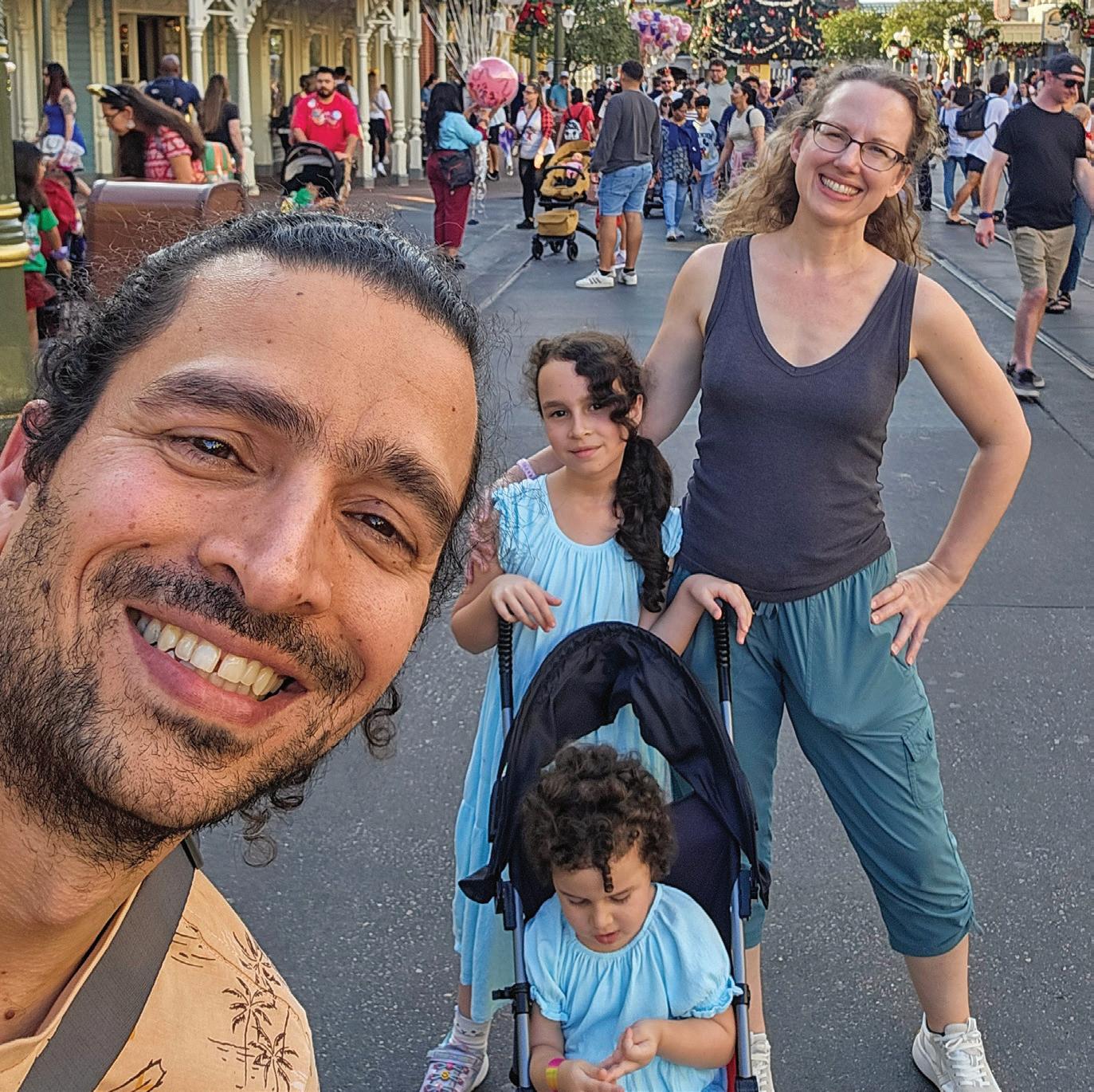
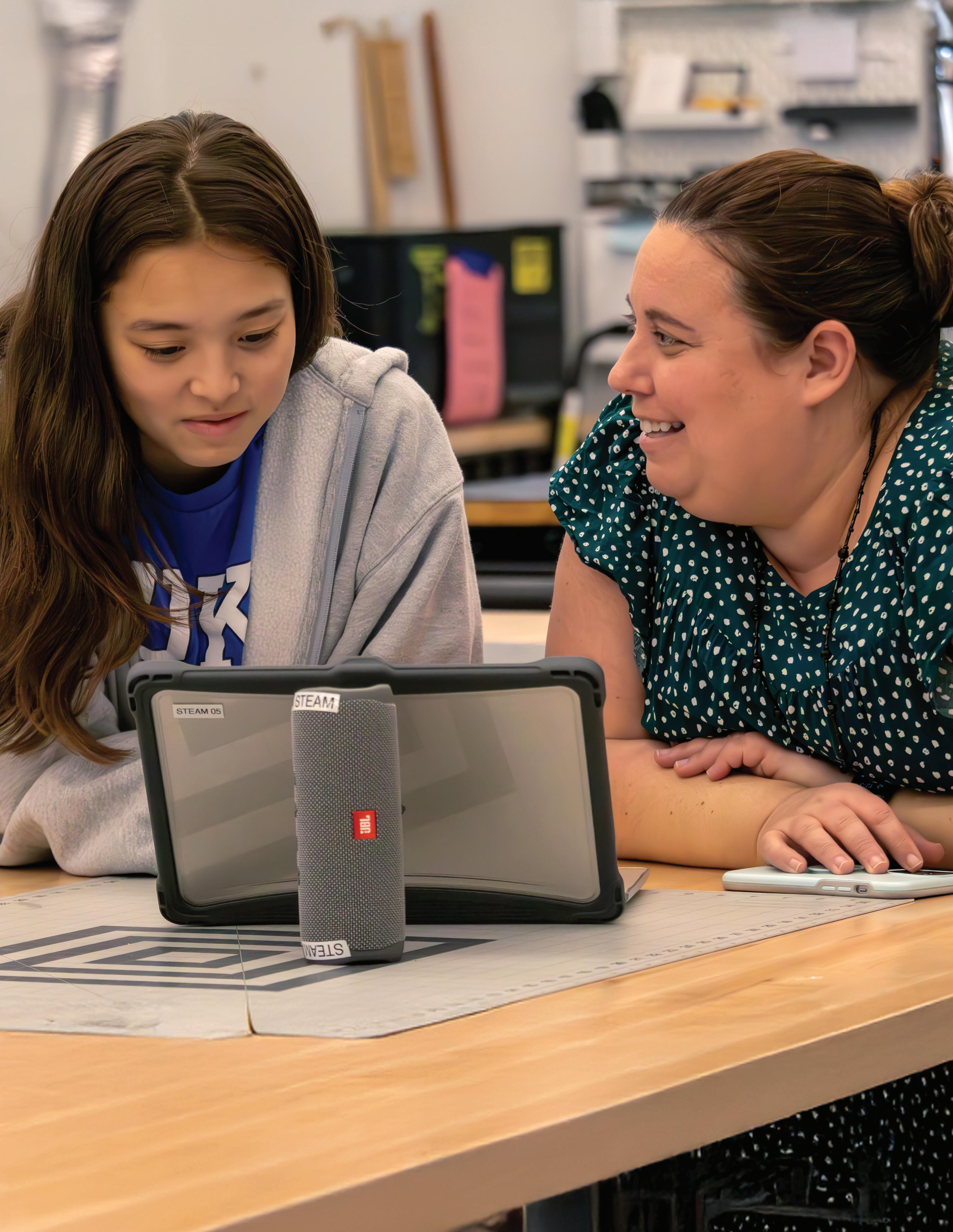
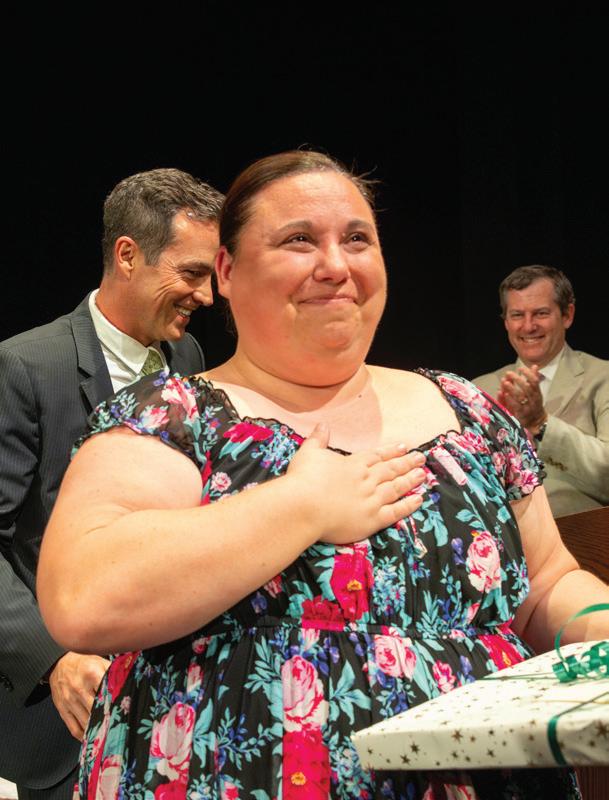
In 1988, the Durham Academy Board of Trustees established the F. Robertson Hershey Distinguished Faculty Award in recognition of former Headmaster Rob Hershey’s decade of dedication to faculty excellence. Since that time, 37 teachers have been recognized for their extraordinary talents and contributions. These teachers represent the best in teaching at Durham Academy by:
• Inspiring enthusiasm in the classroom and encouraging academic aspiration
• Demonstrating sensitivity to the academic and personal needs of the individual student
• Encouraging and supporting the efforts of colleagues
• Promoting the cooperation of a broad spectrum of the Durham Academy community
• Contributing to school life outside the classroom
View a list of all Hershey Award recipients at www.da.org/hersheyaward.
By Laci McDonald, Upper School Dean of Students & Dan ce Teacher
Since joining Durham Academy as a Middle School science teacher in 2015, Melissa Mack has ventured into a number of roles and accepted untold challenges and responsibilities — wearing each new hat with enthusiasm and dedication. She has taught social studies, language arts, STEAM (Science, Technology, Engineering, Art and Math) and computer science classes, as well as advised Middle School Student Government. Now serving as the Academy Road campus’ digital learning coordinator and an instructor of a popular robotics After-School Enrichment class, Melissa inspires students to embrace innovation — and nurtures creative thinkers with joy and an abundance of confidence in their potential.
Melissa’s meticulous approach to curriculum design parallels that of her passion for weekend hiking excursions. She believes it is OK to take a wrong turn, to stumble down a path that leads to more questions than answers — and to explore or create a new path altogether. When students arrive in her office feeling frustrated or confused, they invariably leave feeling heard, supported and equipped with practical strategies to tackle whatever challenges might arise. Each lesson has clear purpose and direction, with thoughtful scaffolding and commitment to meeting the needs of all learners. Her student-centered philosophy cultivates classroom experiences that inspire curiosity, foster intellectual growth and build confidence in her students. Among Ms. Mack’s many positive attributes is her “kindness, even when the inevitable hijinks happen,” says an eighth grade STEAM student, who marvels at her ability to build enthusiasm while keeping students focused.
Unwaveringly supportive of colleagues, students and families, Melissa has helped create a more collaborative and nurturing environment throughout the Middle School. She led the charge in collecting personal anecdotes and memories to celebrate retiring faculty, demonstrating her appreciation for those who have shaped our school before and alongside her. As Middle School digital learning coordinator, she embraced change and supported a forward-thinking approach to problem-solving while guiding the school through its transition to Competency Based Learning.
Colleagues describe Melissa as a visionary thinker whose contributions have strengthened the entire DA community. As Middle School social studies teacher Mike Harris puts it, “It is remarkable how dedicated she is to our school’s mission and, even more, to our vision of ‘aspiring, iterating and innovating.’ Durham Academy would not be where we are today without Melissa Mack.”
Veteran STEAM teacher Karl Schaefer adds: “She is thoughtful in her design and details for training, which often means spending hours creating resources to help us understand how the systems work.” Melissa’s leadership in conducting virtual learning sessions and creating detailed step-by-step written and visual instructions has been invaluable in helping families manage and access Toddle, the online learning model that the Middle School began using in the fall of 2024. Her practice of sending students personalized reminders about how and where to access their specific questions through Toddle exemplifies her extraordinary commitment to student success. Melissa didn’t just embrace the Middle School’s path for change: She created the maps for the community to navigate the new and sometimes rough terrain.
Simply put, Melissa is known for her kindness, patience and “find a way” approach. She creates a supportive environment where students feel challenged, valued and empowered to take risks and venture down unexpected trails. She is loved by students, parents and colleagues alike, and she embodies the spirit of this award through her exemplary teaching, generous colleagueship and dedicated service to the Durham Academy community. It is an honor to celebrate the 2025 F. Robertson Hershey Distinguished Faculty Award winner: Melissa Mack.
Editor’s note: Laci McDonald was the 2024 recipient of the F. Robertson Hershey Distinguished Faculty Award for Excellence in Teaching. The Hershey Award was presented to Mack in May 2025 at Middle School Closing Exercises.


If you had asked me two years ago if I thought I would take a gap year before college, I would’ve said that sounds like the dumbest idea ever. Why would I take a year off of school? What would I do? Wouldn’t I just forget everything I had worked so hard to learn? But here I am two years later, about to start my first year at Middlebury College — and it is the best decision I’ve ever made.,
The end of my junior year at the Upper School was rough. I felt exhausted. The schedule I had planned for my senior year had me taking nearly all Advanced (ADV) or AP courses and seven classes during my second semester. It was at the end of my junior year when my mom once again floated the idea of taking a gap year. She had already brought it up at the beginning of the year when I had mentioned feeling nervous about not knowing what I wanted to do in college or where I wanted to even go. At the time I brushed it off, worrying that I would be behind everyone else and forget everything that I’d already learned. But when she brought it back up at the end of junior year, it started to feel really appealing. By the beginning of senior year, when the pressure was mounting on applying to schools, it officially became my plan and I began to look forward to the year. I also noticed, however, that I seemed to be the only student wanting to take a gap year. I struggled to find DA alumni who had taken one, and by the time graduation rolled around, I was the only student in the whole class with that plan.
At first, I wasn’t really sure what I wanted to do for my gap year. Nonetheless, I began to brainstorm. There was a lodge where I’d stayed in Scotland that took volunteers for work stays, so I reached out to them to begin my planning. I thought about what my goals were for the year: I wanted to do different things, I wanted to travel, I wanted to explore different fields and I wanted to recharge. With these goals in mind, I began forming the rest of my year.
Since I have family in Germany (and I’m in the process of claiming German citizenship), I decided it was a fitting place to begin the fall; I took German lessons for five weeks while staying with my family. I then traveled to a small city with a large refugee population where I volunteered for four weeks teaching English to refugees in the city. I returned home for the holidays, and in January I ran my first marathon. I wanted to test out the medical field, so in February I spent a month in Wilmington earning my EMT certification. After that, I began working around the neighborhood to save up money for the summer. Having some structure was definitely helpful, but I also really enjoyed getting to make plans as I went.
Me holding my EMT certificate

A view of Mallaig, a town I traveled to in Scotland
JUNE–JULY 2024
Doune Knoydart, Scotland (work stay)
AUGUST–SEPTEMBER 2024
Training for and racing at USA Cycling Gravel National Championship
SEPTEMBER–NOVEMBER 2024
German lessons in Cologne, Germany, plus weekend trips to Amsterdam and Paris
NOVEMBER–DECEMBER 2024
Teaching English in Halle (Saale) with The Excellence Center in Europe, plus weekend trip to Berlin and Vienna
JANUARY 2025
runDisney World Marathon Dopey Challenge 4 days, 4 races, 48.6 miles
FEBRUARY–MARCH 2025
EMT certification at National Center for Outdoor & Adventure Education Wilmington
MARCH–MAY 2025
Working, biking and family time
JUNE–JULY 2025
Return to The Excellence Center and Scotland

at Doune in Scotland
The 'Shed' where I lived while I was doing my work stay. Just a small kitchen, a bathroom and two bedrooms.




1. Always bring a backup map. When I left to begin my work-stay at the UK’s most remote lodge, I never expected to end up stranded on the side of a mountain in the Scottish wilderness with nobody around for miles. I will never forget the feeling of dread when I reached into my pocket for my phone only to feel it missing. I learned the first lesson of my gap year as I stumbled down the side of the mountain to meet Scotland Wilderness Rescue after 10 hours, 11 miles and 6,000 feet of climbing.
2. English is hard. For four weeks, I was in a town in Germany called Halle: teaching English. It didn’t seem that hard at first. English is my first language and I was in the Teaching Literacy program at DA. But when I sat down for the first time with my student, a young Ukrainian woman, I was terrified. After a week, I realized that my role was not merely teaching a language: My role was helping my student connect with people and the world.
3. “Schienenersatzverkehr.”
As someone who used to leave home as late as possible to make it to class, I wasn’t prepared for the whirlwind that was European public transport. I quickly got used to leaving two hours before my German class was supposed to begin, making the walk to the U-Bahn, changing trains and — if I was lucky — getting to class with 15 minutes to spare. It was then I learned one of the most important German words: Schienenersatzverkehr, or “rail replacement services.”
4. What it’s like working in the American healthcare system. I learned a lot during my four days of clinicals as part of my EMT training. My time working 911 taught me about the importance of slowing down even in the most intense scenarios. My time doing patient transport helped me better understand the hardships that people face relying on others in their day-to-day life, and it helped me gain a greater understanding of my privilege as a young, fit and healthy person with regular access to good healthcare. Finally, my time in the ER was an interesting window into the functions of our healthcare system and how important it is to have reliable people on your team when things get overwhelming.
5. Sticky toffee pudding is perhaps the most delicious thing I will ever eat.
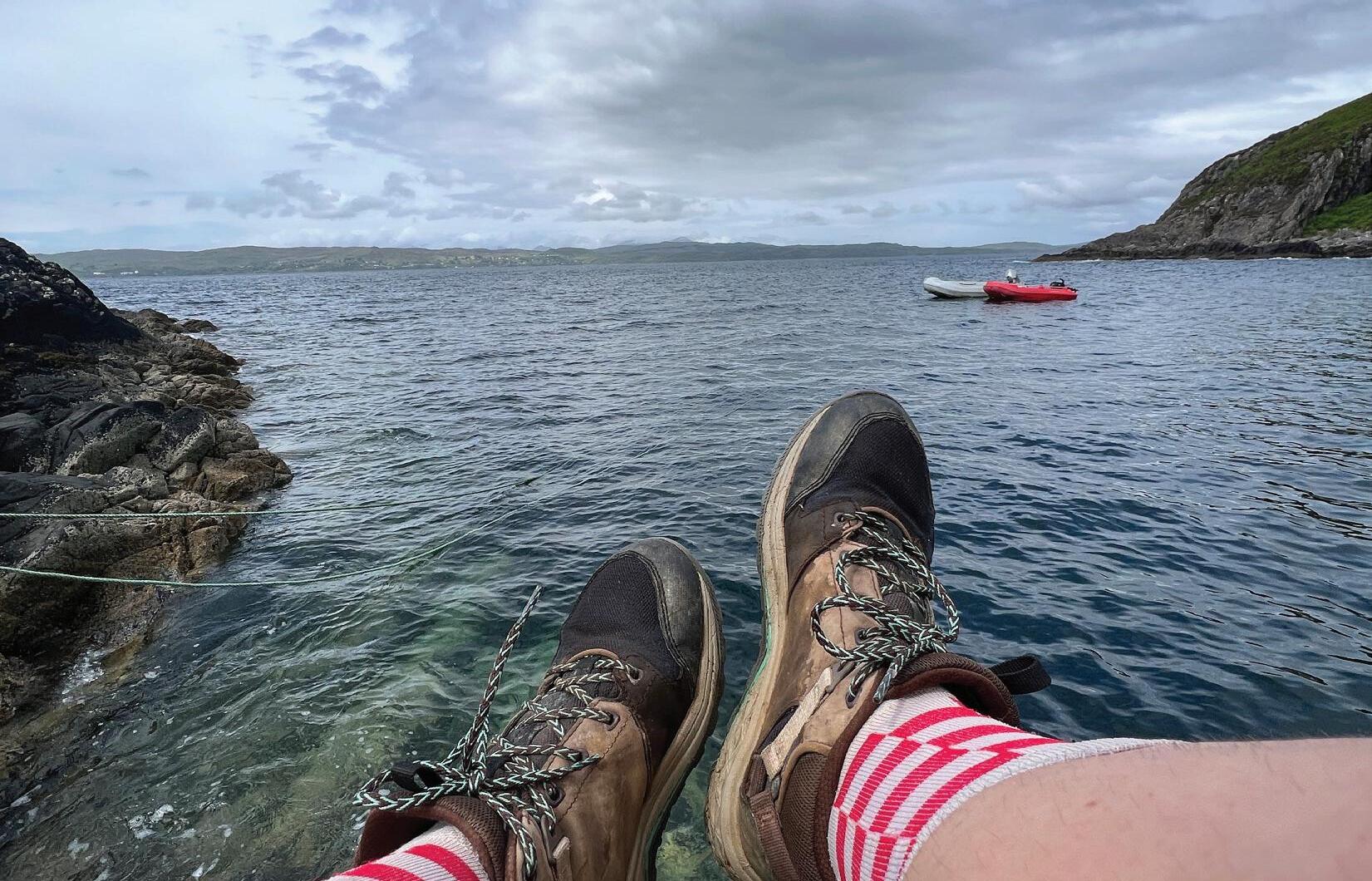
Sitting on the dock, waiting to unload the next round of guests at Doune

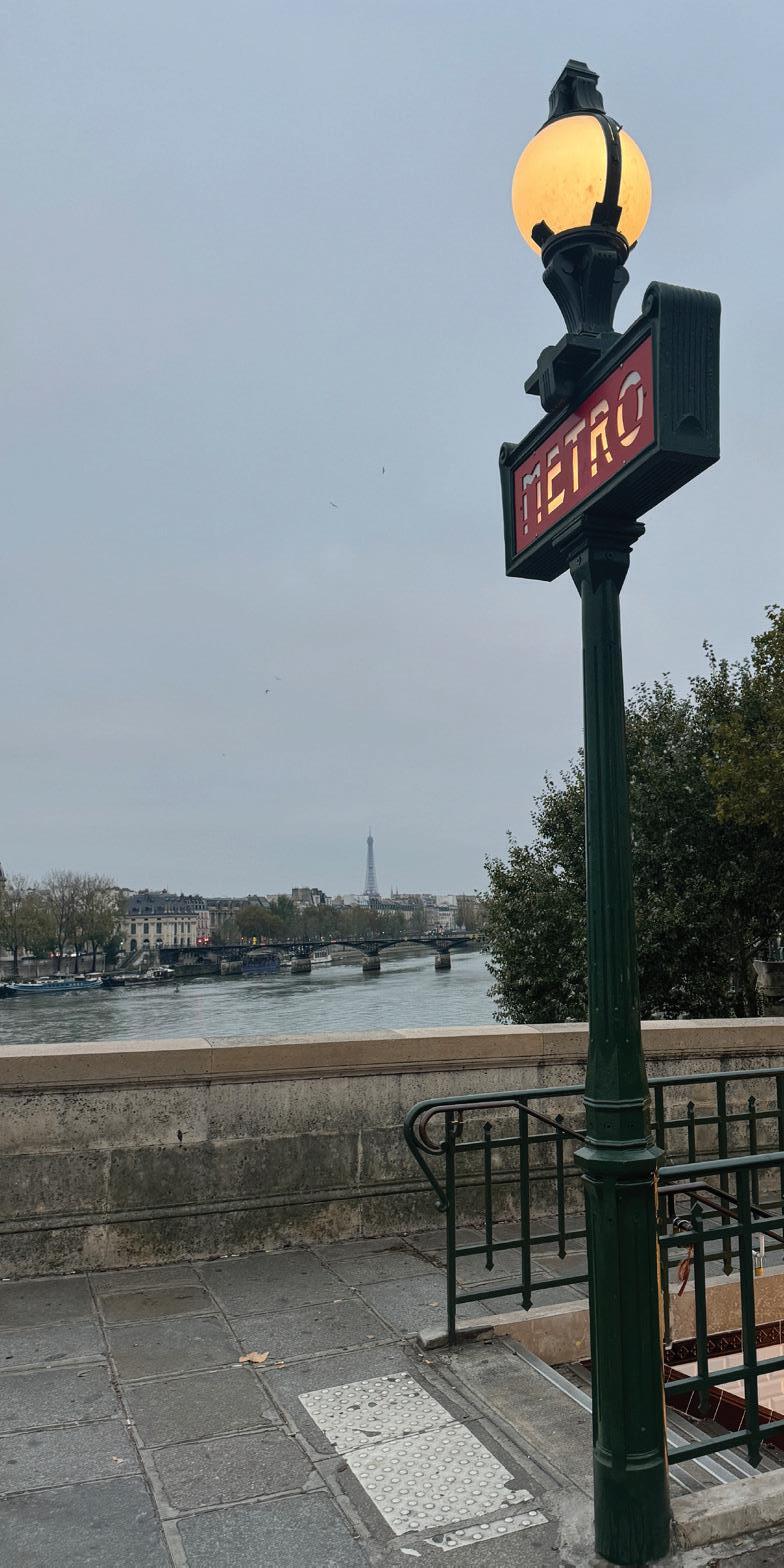


Disney Marathon Dopey Challenge: I dressed as Linguini from Ratatouille (my mom was Remy), and I ran 10K with a baguette.

While visiting my friend at the Paris School of Arts, I ran a half marathon "tour" of the city.
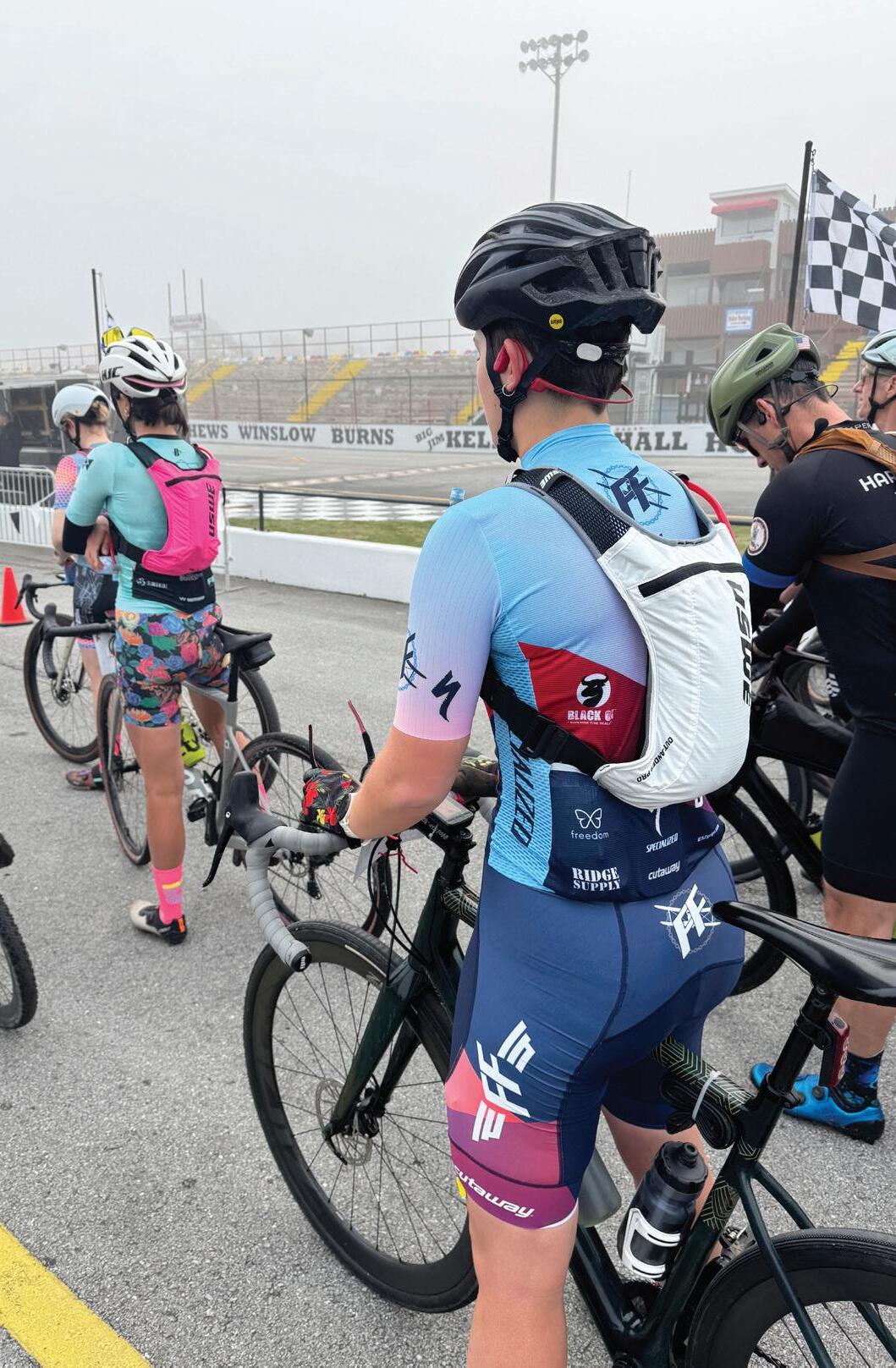
My first bike race of the 2025 season, 100 miles in Croatan National Forest

Taking a gap year was hands-down the best decision I could have made. After working hard for the past four years of high school, it was a much-needed break to reset myself and my brain for school. I definitely think it also prepared me for college. Things like living alone in another country, managing a budget, meeting new people and making new friends are all skills that I think will really help me succeed in college. My gap year also gave me time to get more excited about Middlebury, something that I previously was a little nervous about. The idea of living so far away in rural Vermont became more and more appealing as I had new experiences and met new people. I realized how much I love getting out in the world.
I think a gap year is something that everyone should take at some point in their life — whether it’s between high school and college, undergrad and grad school, or college and the working world. The thing people need to remember is that you’re not falling behind, and you’re not gonna forget anything important. As long as you’re doing things that make you happy, giving your brain and body the rest they need, and getting yourself out into the world, a gap year can be the best decision you ever make.

Photography By Kate Auger
At the 2025 Spring Alumni Reception, the Durham Academy Alumni Board honored a trio of individuals who have helped shape the future for multitudes. For Brooke Hartley Moy ’07 — recipient of the Distinguished Alumni Award — that means blazing a path as a woman in AI leadership. For Steve and Teresa Engebretsen — recipients of the Faculty and Staff Legacy Award — that has meant igniting fires of curiosity and determination in thousands of young people over the course of more than four decades spent teaching, coaching and leading at DA.
Hartley Moy is the CEO and co-founder of Infactory, an AI fact-checking platform for businesses and developers that depend on accuracy. She is a seasoned leader in business development and strategic partnerships with a career that spans pivotal roles at Google, Slack, Humane and other tech giants.
Hartley Moy holds an M.B.A. from Duke University’s Fuqua School of Business, earned on a full-merit scholarship for women leaders. At Infactory, her leadership is instrumental in steering the company’s strategic direction. Hartley Moy’s groundbreaking foray into AI — particularly as a woman in leadership — has been featured in news platforms including Fortune, CNBC and Inc
Hartley Moy’s perspective is much sought after. In less than a year’s time after founding Infactory in June 2024, she gave a keynote presentation at the prestigious Web Summit in Lisbon, presented at the UC Berkeley Hackathon and was one of just 10 AI founders — out of more than 700 applications — selected to give an on-stage pitch at the renowned TechCrunch Disrupt AI event.
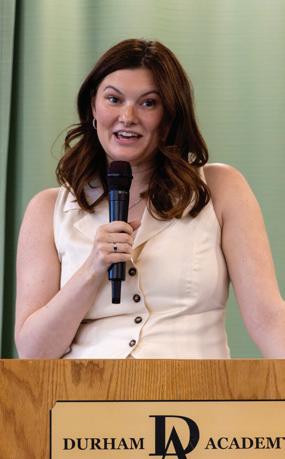
“Unlike history, I was not winning any math awards. … Later on, fueled by DA’s ‘embrace the difficult’ ethos, I chose to focus on finance in business school — something that is highly quantitative, that is not in my normal skill set — because DA taught me that struggling with something doesn’t diminish its value. Sometimes, the struggle is the point. … The hard thing about hard things is that they’re worth doing. Durham Academy taught me not just how to do them, but why they matter.”
“The Engebretsens,” as they are so affectionately known by generations of students and colleagues, have devoted a combined 88 years of service to Durham Academy. This dedication stems from the many roles they have held over the last five decades at the school — among them, as athletic director and Middle School French teacher — but their commitment to the Durham Academy
family extends far beyond these official roles. The parents of two alumni — Jake ‘06 and Grant ‘11 — the Engebretsens are part of the fabric of Durham Academy for countless students, families and alumni.
Steve Engebretsen, who joined the faculty in 1981, served as DA’s director of athletics from 1991–2019 and coached varsity boys basketball for 14 years and varsity softball for 11 years. He also taught physical education in the Lower, Middle and Upper School divisions and served as assistant athletic director and an Upper School advisor over the course of his 43-year career at DA. His accolades include NC Soccer Coaches Association Athletic Director of the Year in 2013; US Lacrosse North Carolina High School Man of the Year in 2014; DA Athletic Hall of Fame inductee in 2015; the NCISAA Chuck Carter Athletic Director Award in 2018; and being the namesake of DA’s Steve Engebretsen Athletic Leadership Award, which was created in 2019.

“I feel honored and proud that Teresa and I are being recognized together. We’ve invested a lot in Durham Academy, but we’ve received a lot in return. … My message to those who teach or coach here now is to invest in our school fully — like, really invest. It’ll get back to you. Invest in your colleagues, appreciate the connections with some amazing families, and learn about the people who began weaving this great school together many decades ago, making DA the place where you are now.”
Teresa Engebretsen taught French at DA Middle School beginning in 1980 until her retirement this year. During that time, she also served as academic leader for the Middle School world languages department; as a seventh and eighth grade advisor; as seventh grade team leader; as Middle School registrar; as a JV and varsity softball coach; and developer of the Phenomenon of Language class for new DA Middle School students. Teresa coordinated the seventh grade trip to Washington, D.C., for many years and — perhaps most famously — led annual student trips to France beginning in 1987. She was honored with DA’s Hershey Distinguished Faculty Award in 2013.

“I’m often asked why I stayed at DA for so long, and for me, it comes down to the people in this room and the relationships I have formed with you. … Durham Academy took me in as a 22-year-old and made me into a teacher, advisor and mentor. I love this place. It’s more than these beautiful buildings. It’s a thriving community. It’s a family.”
Visit da.org/alumniawards to learn more about the awards and recipients, to view a video of the awards ceremony, and to submit nominations.
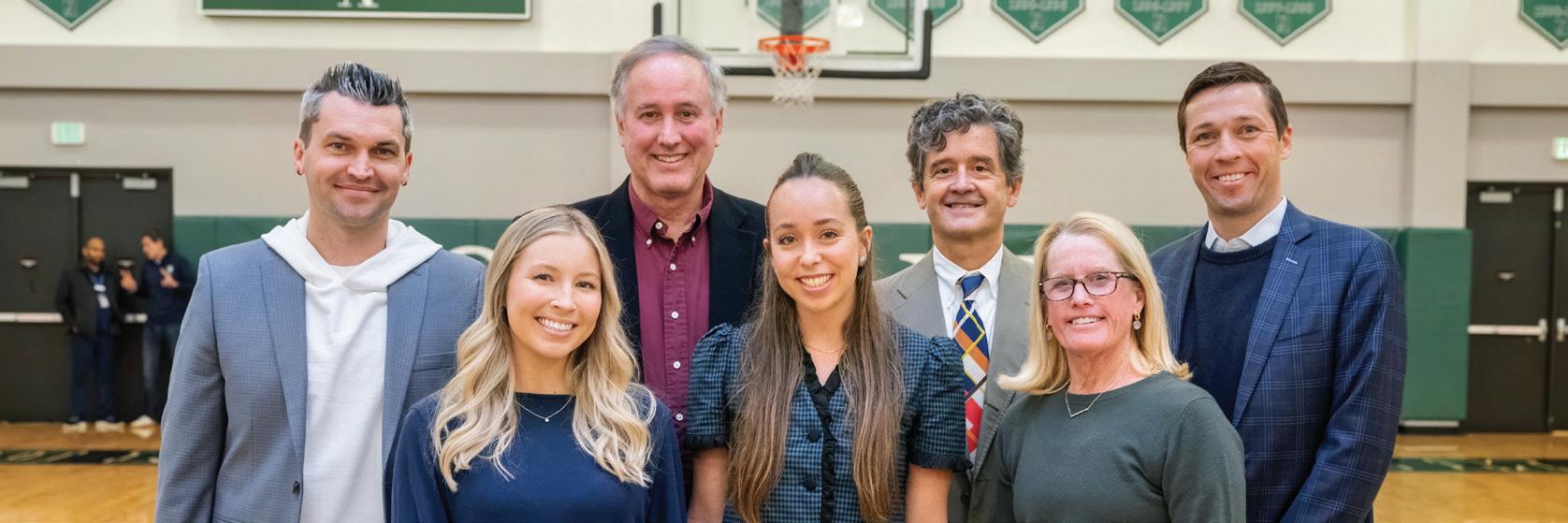
The Durham Academy Athletic Hall of Fame inducted its sixth class of honorees — representing alumni student-athletes, coaches and administrators — on Dec. 13, 2024. A celebration at halftime of the varsity boys basketball game in Kirby Gym was followed by a ceremony and reception in Smith Hall.
Established in 2013, the Durham Academy Athletic Hall of Fame comprises alumni athletes, coaches, administrators and supporters who were particularly outstanding in a specific sport or who helped to ad-
vance athletics at DA. The group now stands at 45 members, with a new class inducted every other year.
Pictured above from left: Jake Engebretsen ’06; Jordan Barry ’15; Tim Johnston ’79 (representing the late Bob Johnston); Eliza Dekker ’15; Paul Maxwell ’82; Susan Ellis; and Bryce Mueller ’04. Not pictured: Johnny Seivold ’99.
Learn more about these legends of DA athletics and suggest future members at da.org/hof.

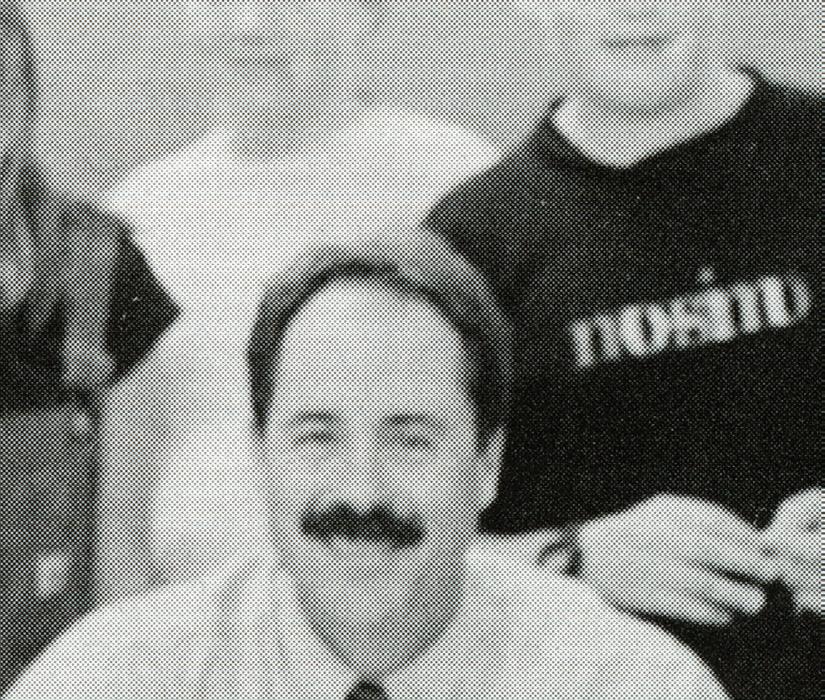
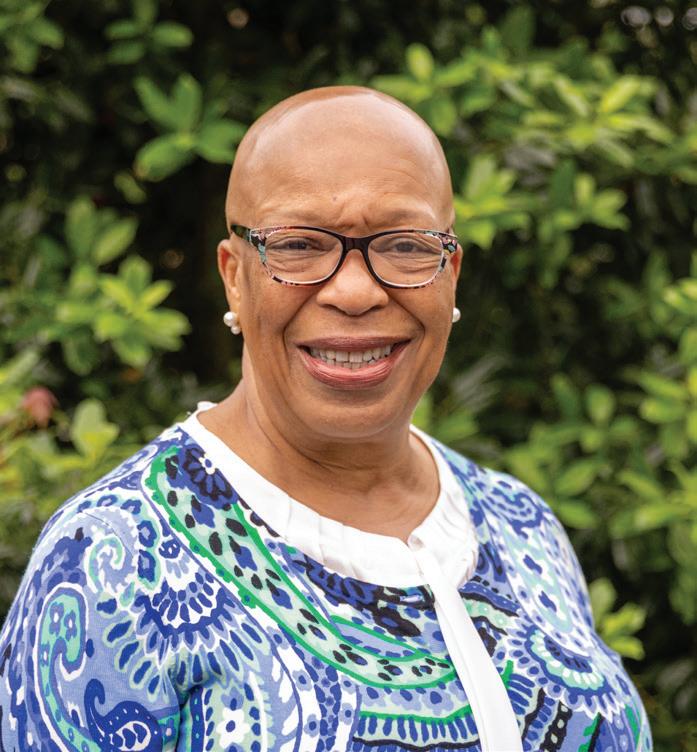
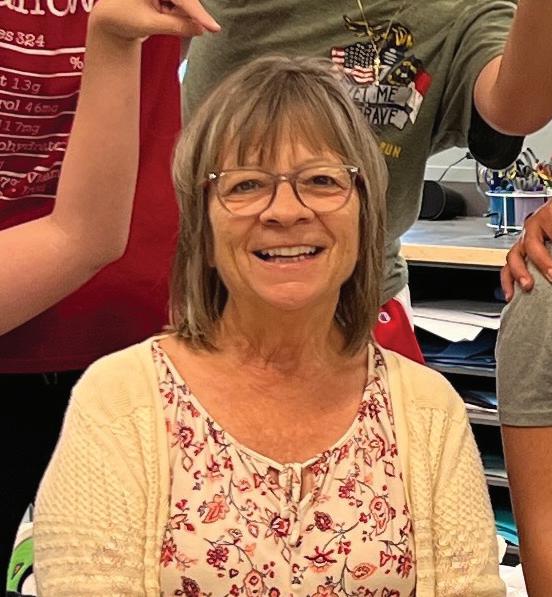
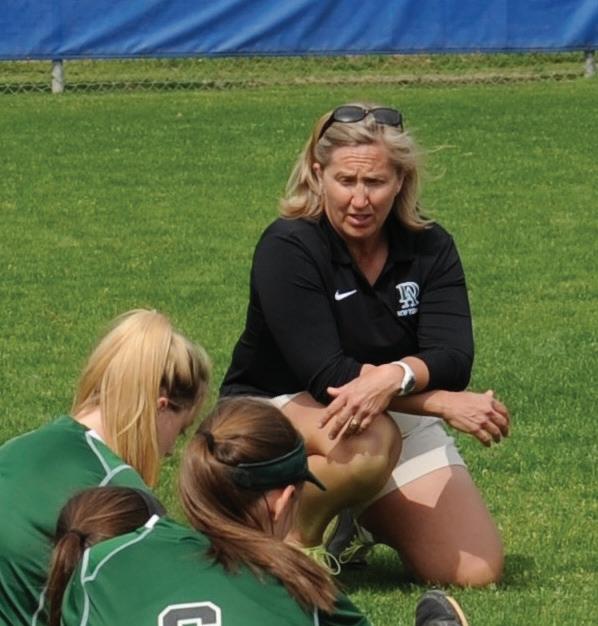
Those saying goodbye have devoted a cumulative 231 years of service to DA.
TERESA ENGEBRETSEN
45 years - Middle School French Teacher / Former Varsity Softball Assistant Coach
ROBERT WILSON
35 years - Middle School Math Teacher / Former Middle School Dean of Students
WILLETHA BARNETTE
31 years - Business Office Special Projects Manager / Former Philanthropy Gifts Administrator and Assistant to the Head of School
FRAN SAVARIN
29 years - Middle School Art Teacher / Former Lower School Art Teacher
HEIDI KEARNAN
14 years - Middle School Physical Education Teacher / Former Varsity Volleyball and Softball Coach
JON MEREDITH
14 years - Middle School Director
ELLEN BROWN
9 years - Middle School Theatre Teacher
STEPHANIE POLLARD
9 years - Middle School Math Teacher/Former Third Grade Teacher
CATHERINE HAYWARD
7 years - Middle School Latin and STEAM Teacher
JANET ZDON
7 years - Lower School Learning Support Coach / Former Second and Third Grade Teaching Assistant
KATIE MCENROE
5 years - Dean of College Counseling / Gender Equity Committee Chair Former Varsity Field Hockey Coach and Varsity Girls Lacrosse Assistant Coach
ANNE ANDREWS
4 years - Enrollment Management Administrative Assistant
ASHLEE BAILEY
4 years - Kindergarten Teaching Assistant / Preschool DEE Coordinator
PAUL EDGHILL
4 years - Upper School Technical Theatre Teacher and Director
FORREST HINTON
4 years - Upper School Math Teacher/Upper School Mathematics Academic Leader
MEGAN FILTER
3 years - First Grade Teaching Assistant / Varsity Girls Lacrosse Assistant Coach
TIFFANY LIM
2 years - Upper School Math Teacher / Varsity Girls Golf Assistant Coach
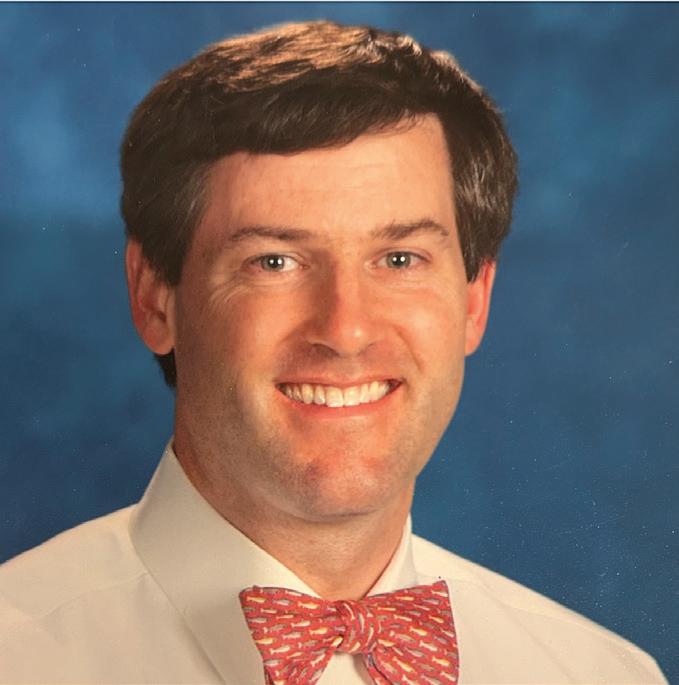
ELEANOR MEREDITH
2 years - Second Grade Teaching Assistant
JOANNE WEISS-VANCE
2 years - Second Grade Teaching Assistant
JANE WINCH
1 year - Second Grade Teaching Assistant
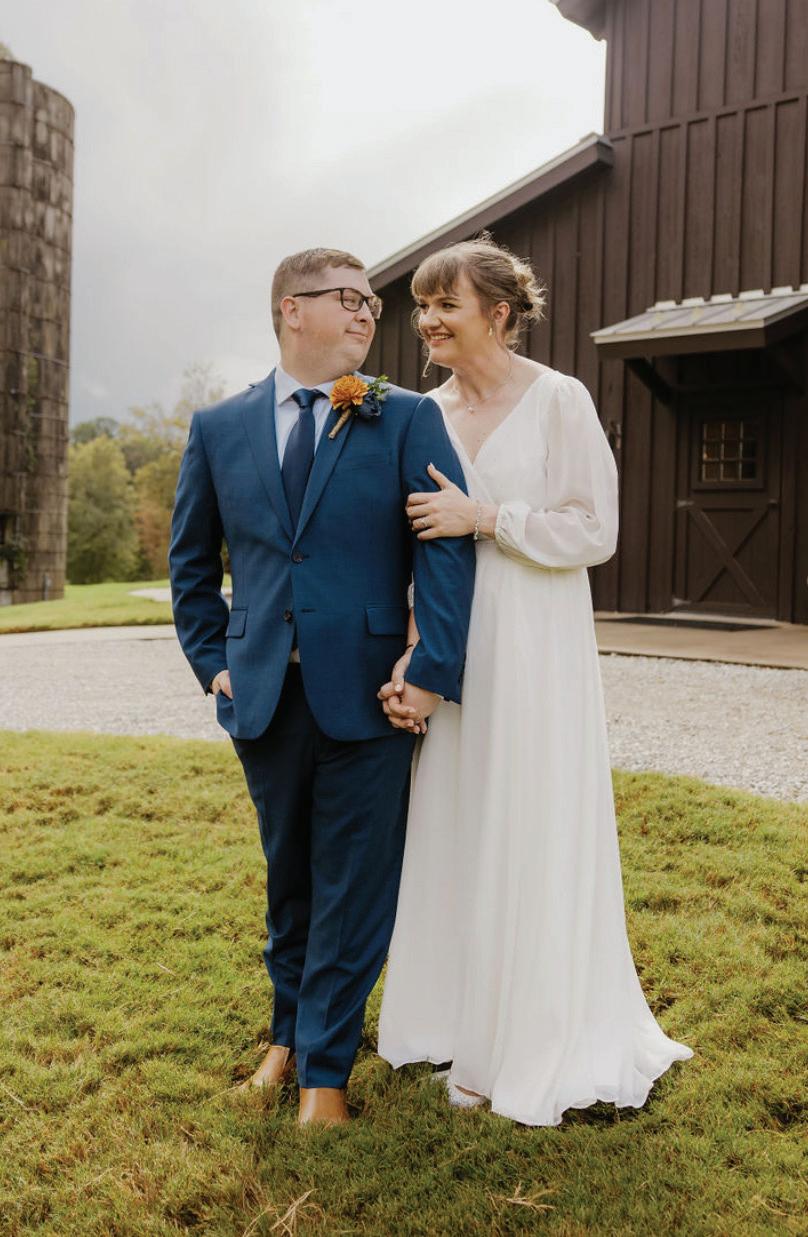
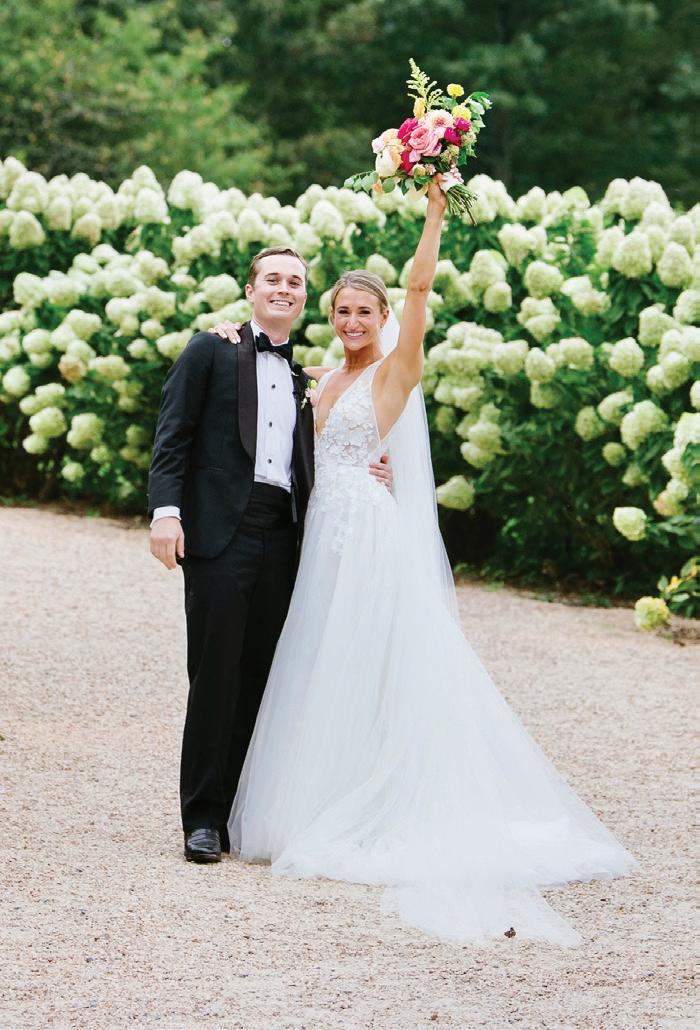

1. Rachel Mauchline & Thomas Truluck Assistant Director of Speech and Debate & Middle School Speech and Debate Teacher Sept. 1, 2024 | Bono, Arizona
2. Emma Myers ’15 & Hamlet Newsom Aug. 31, 2024 | Charlottesville, Virginia
3. Amanda Kim Bangera ’13 Daughter: Amara Mina
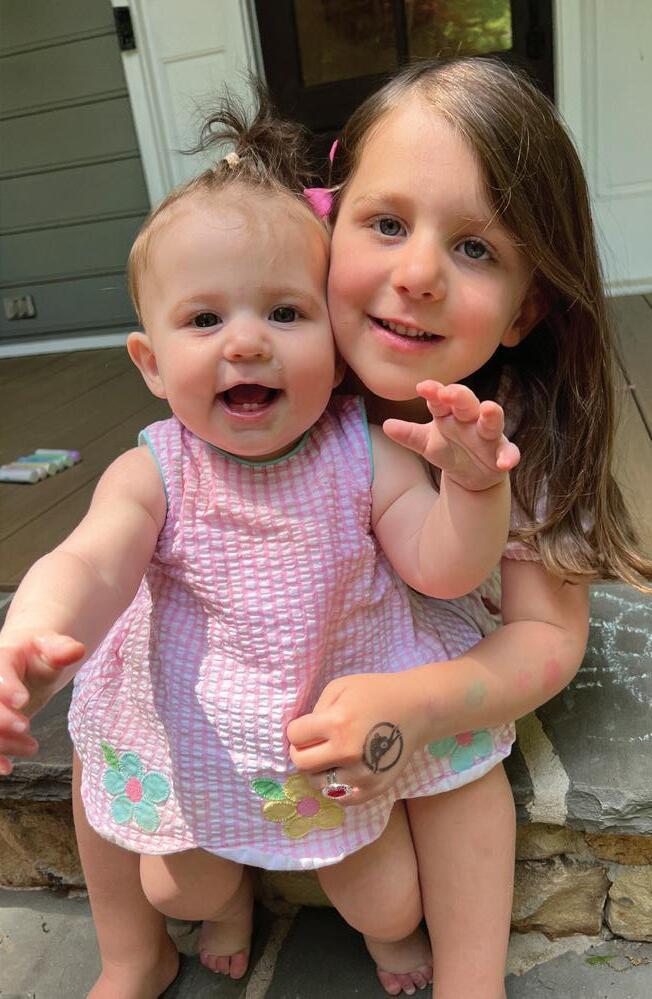
4. Annie Giarla Carr ’12 Daughter: Rosie Pictured with big sister, Cammie
5. Emma Kaplan Peterson ’14 & Ryan Peterson ’14 Son: Finley
6. Katherine Spruill Upper School Assistant Librarian & English Teacher Daughter: Rosemary


David Peters ’13
President
Chip McCorkle ’05
Vice President
Mark Alkins ’20
Erika Estrada Boden ’99
Chris Brasier ’13
Rob Bressler ’03
Rachel Croughwell Cocchiaro ’02
Anna Bland Costello ’07
Raguell Couch ’21
Elise Hartley ’10
Becca North ’94
Marco Reyes ’10
Irene Pappas Rudnick ’05
David Sailer ’11
Grant Sutton ’11
Maggie McPherson Weir ’01
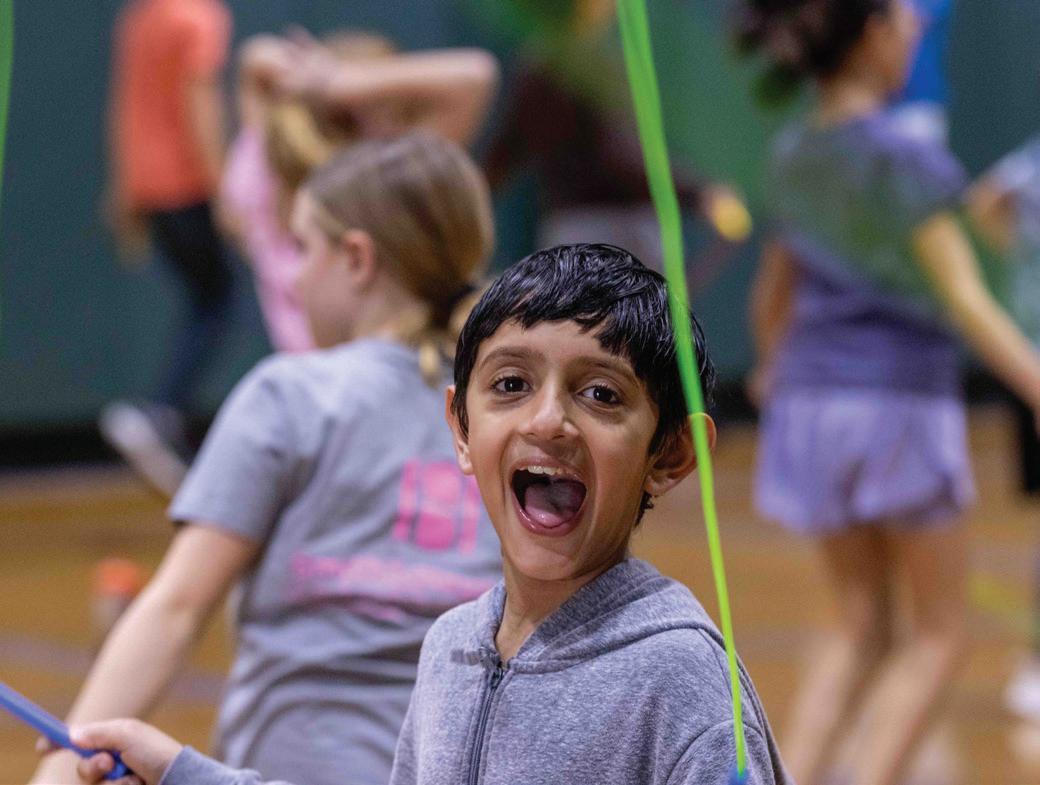

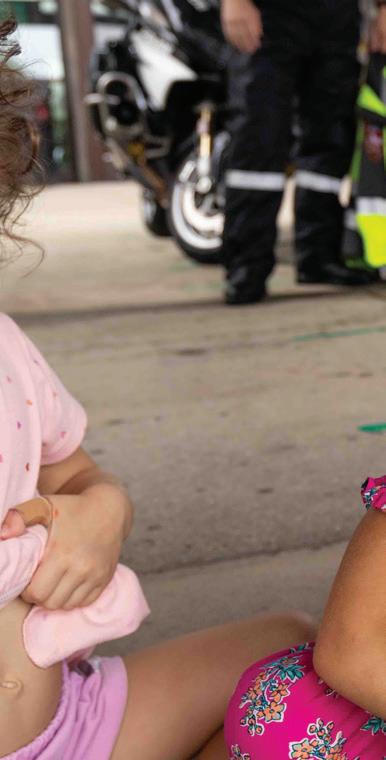
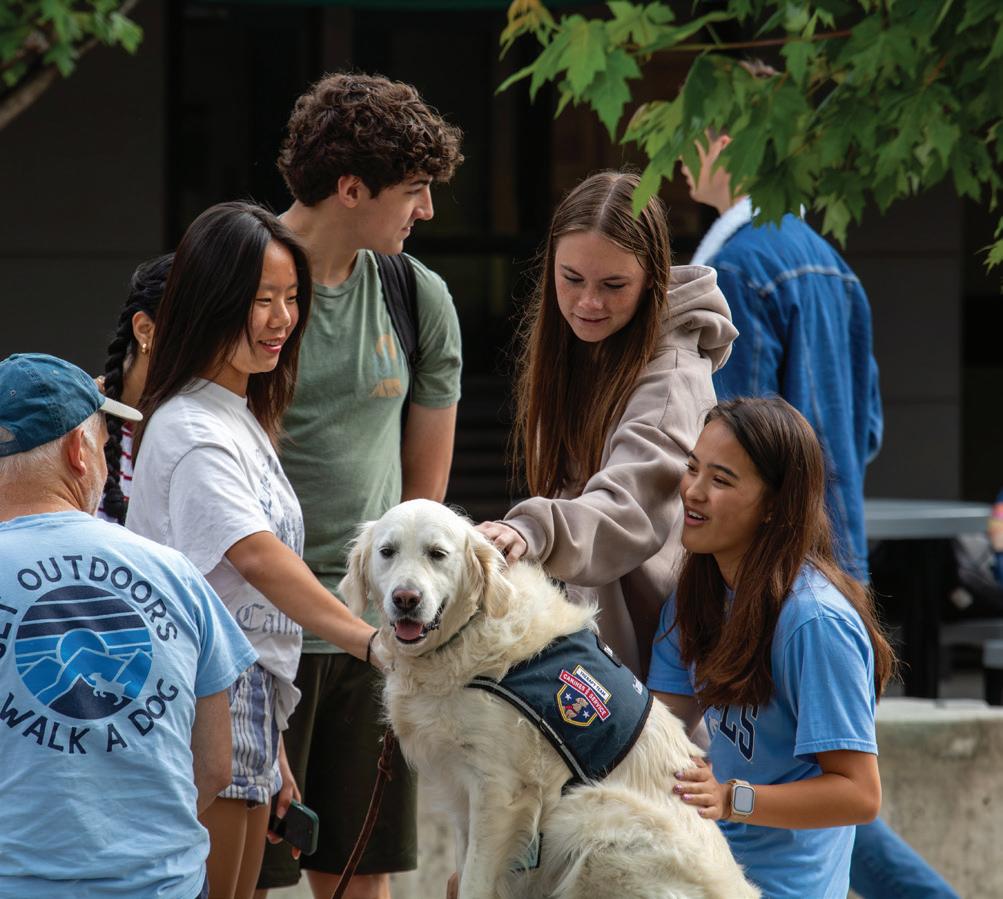
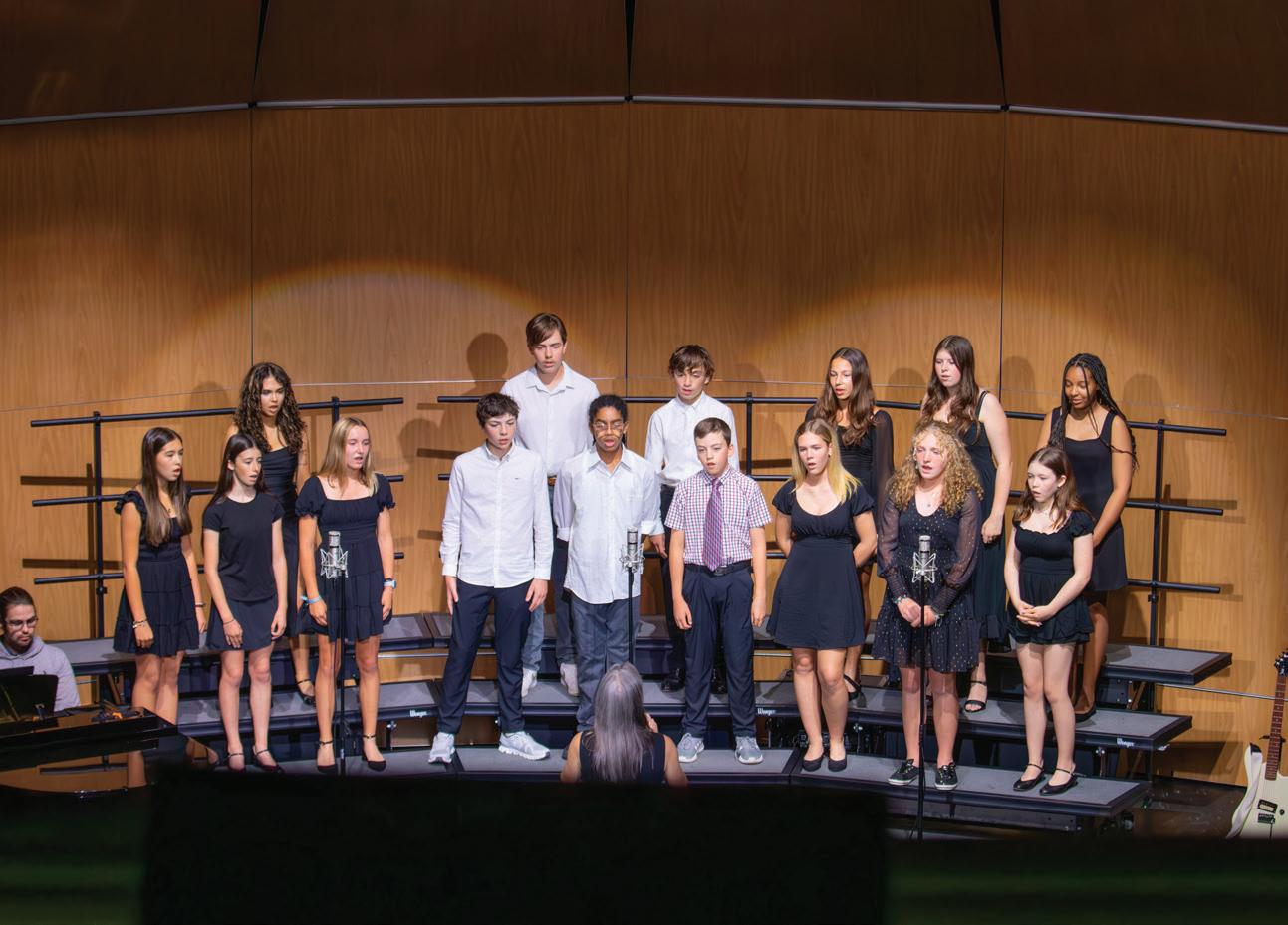
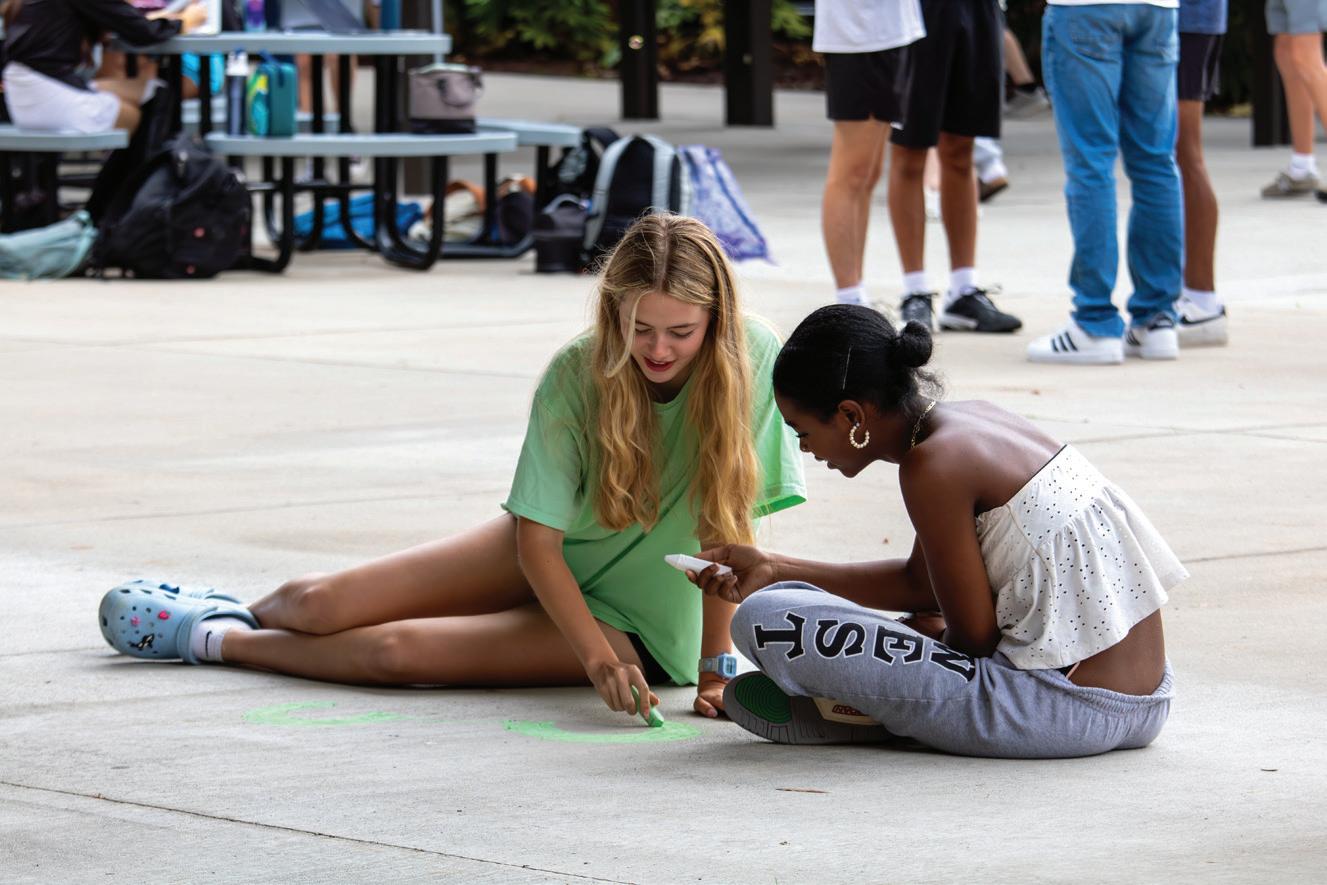
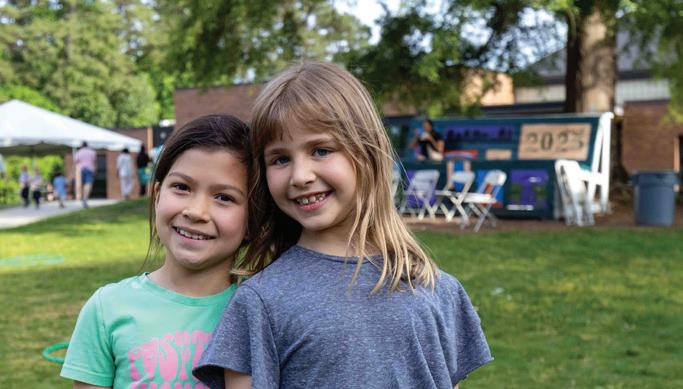


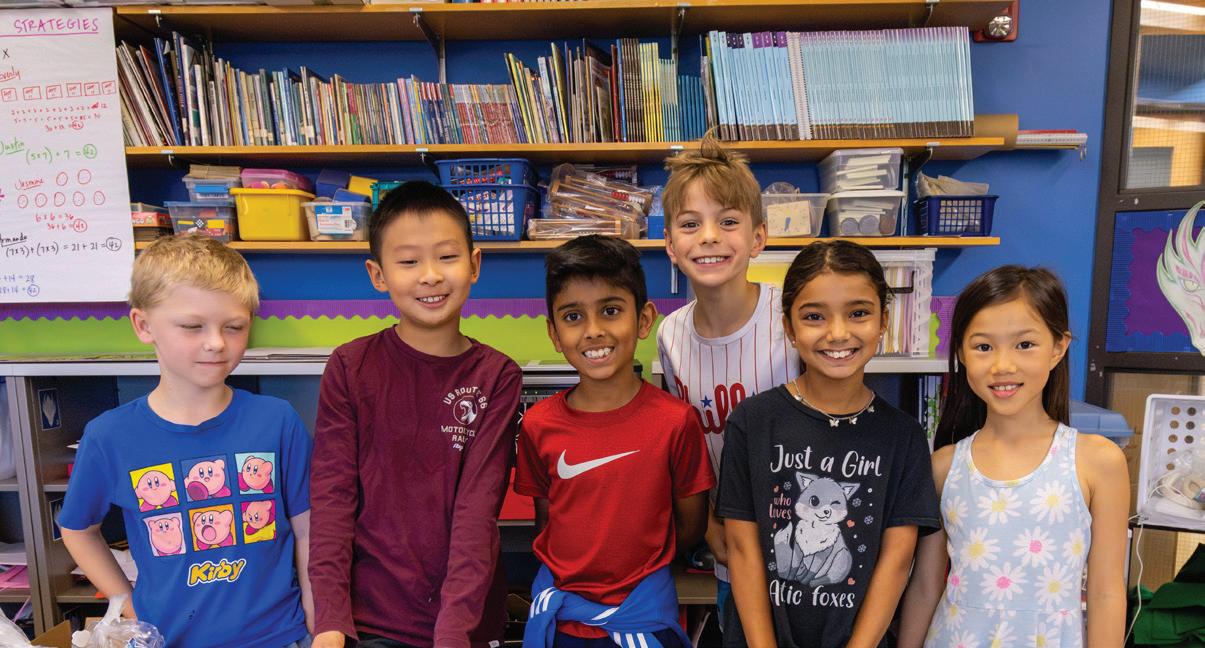
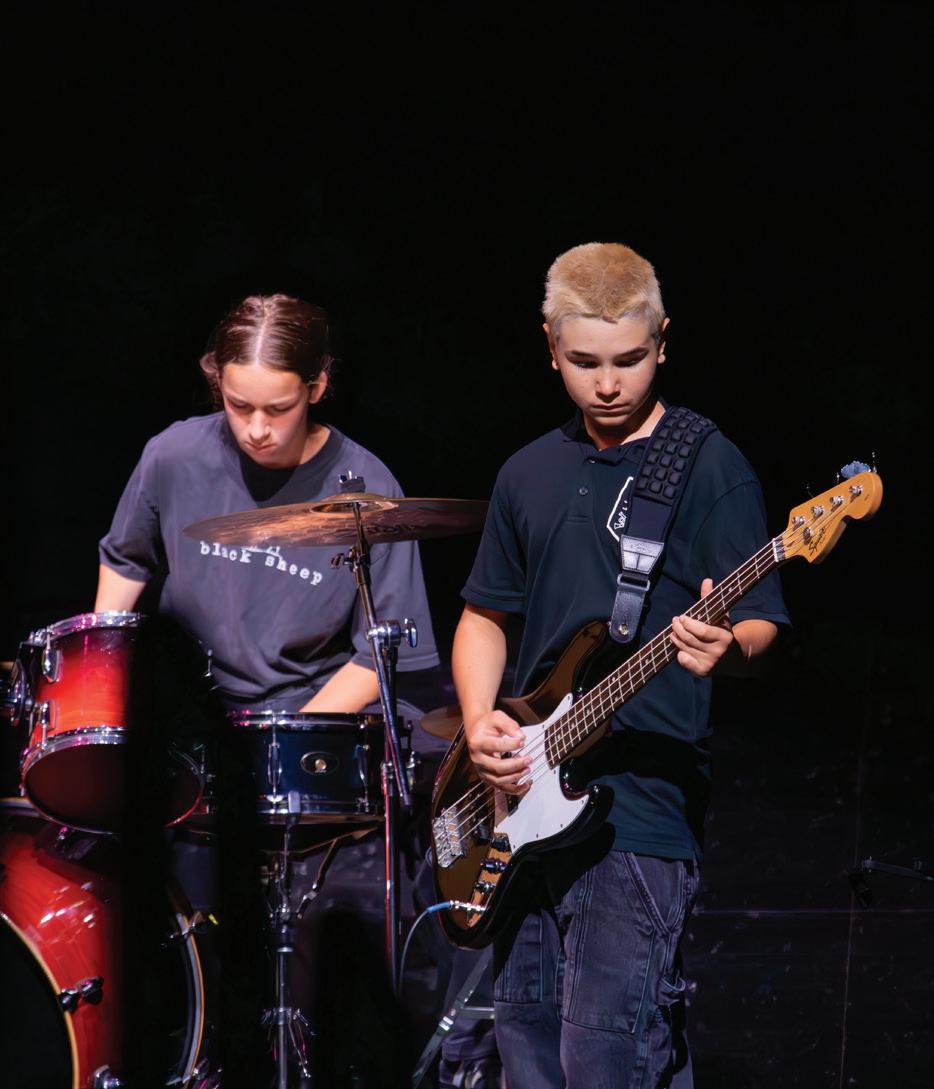

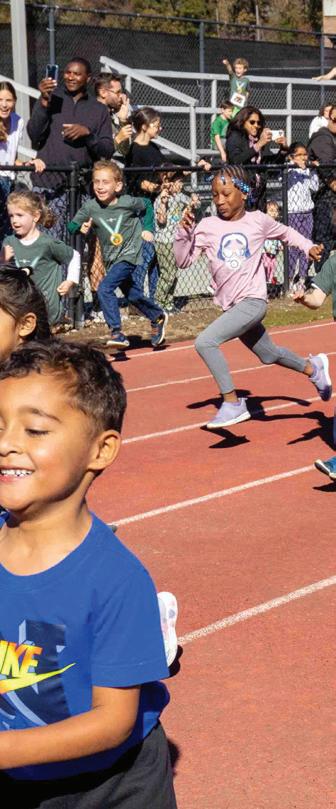

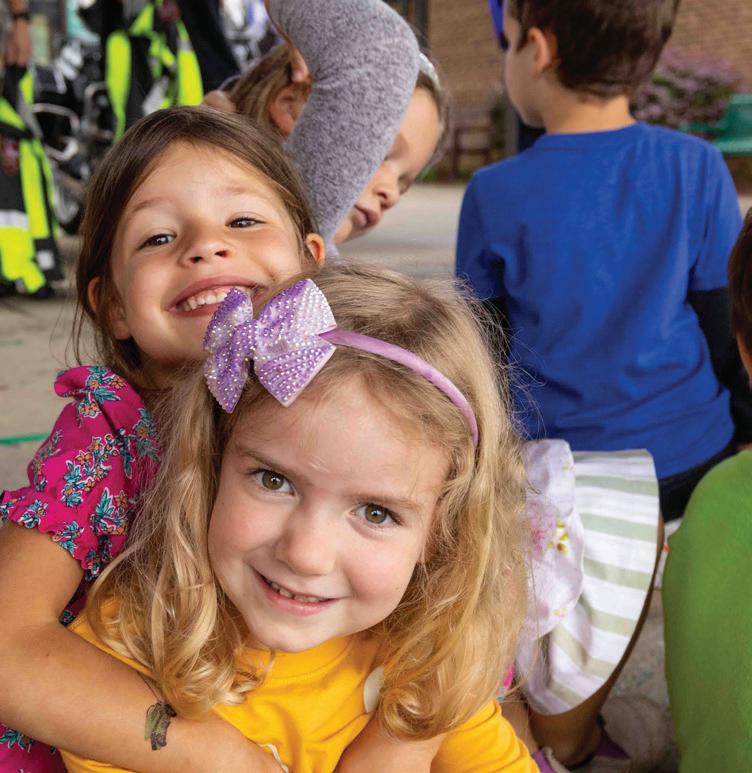
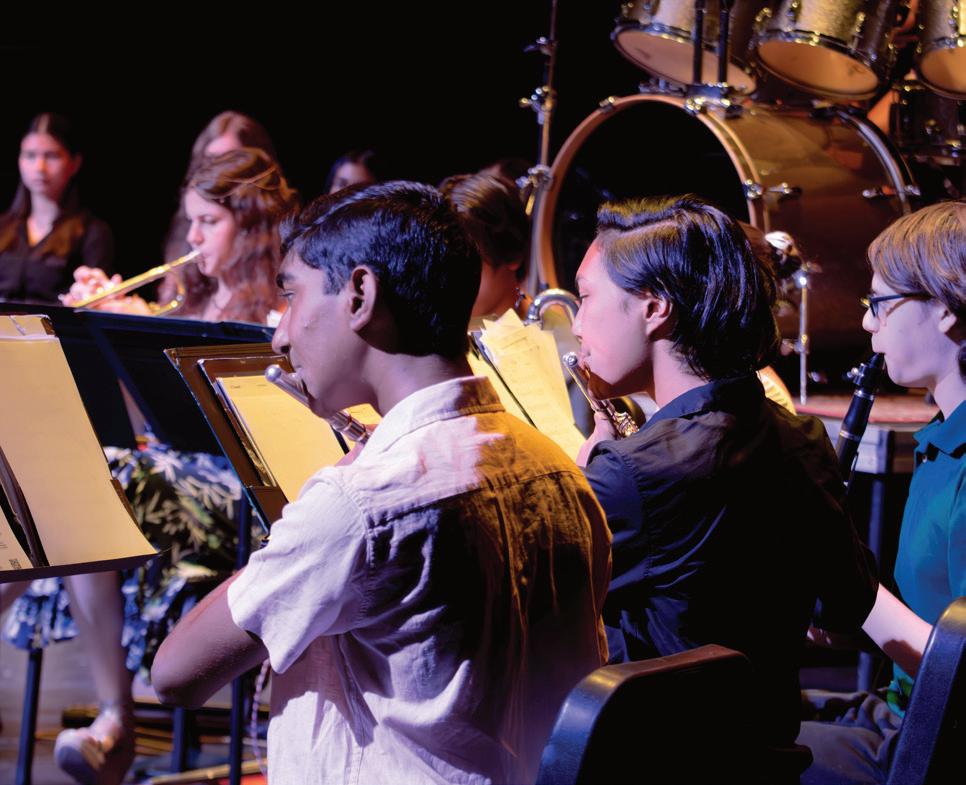

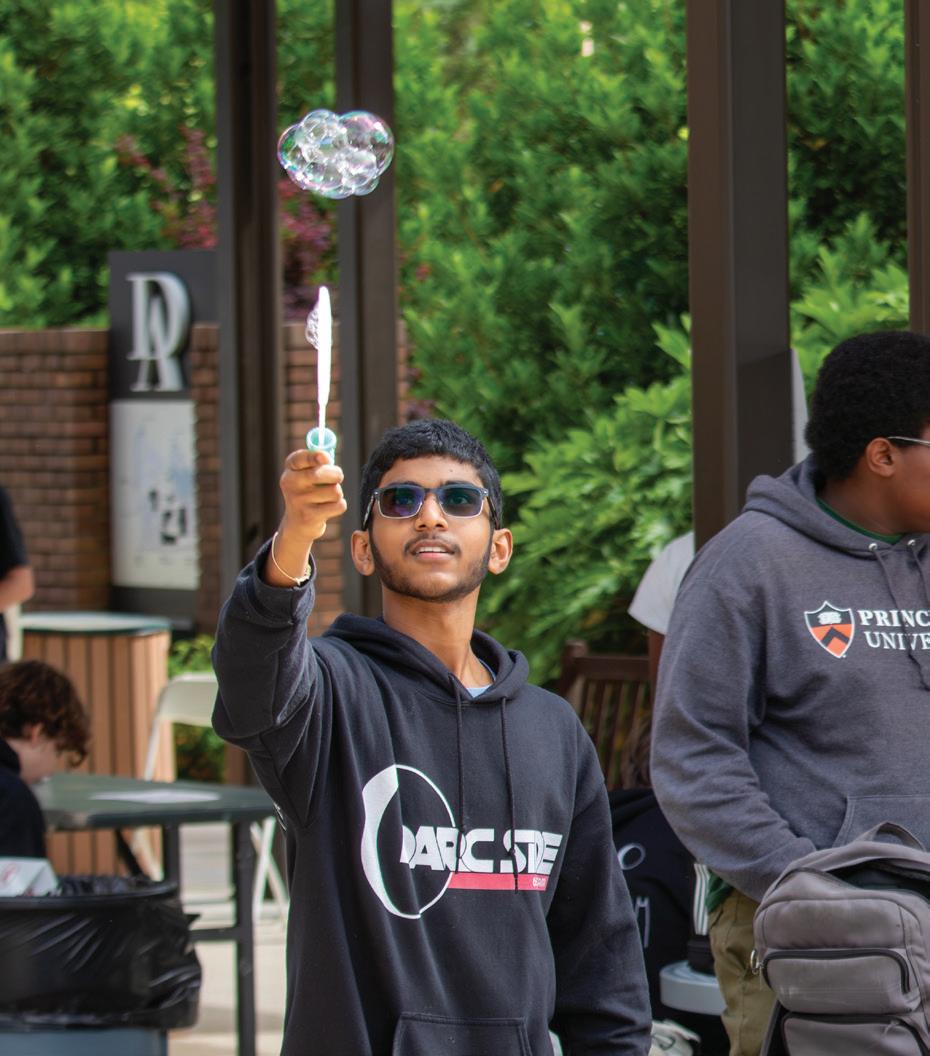

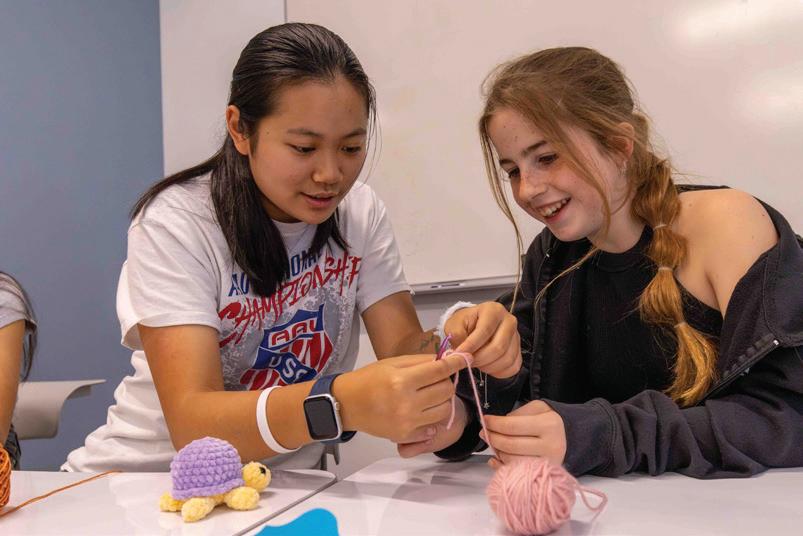
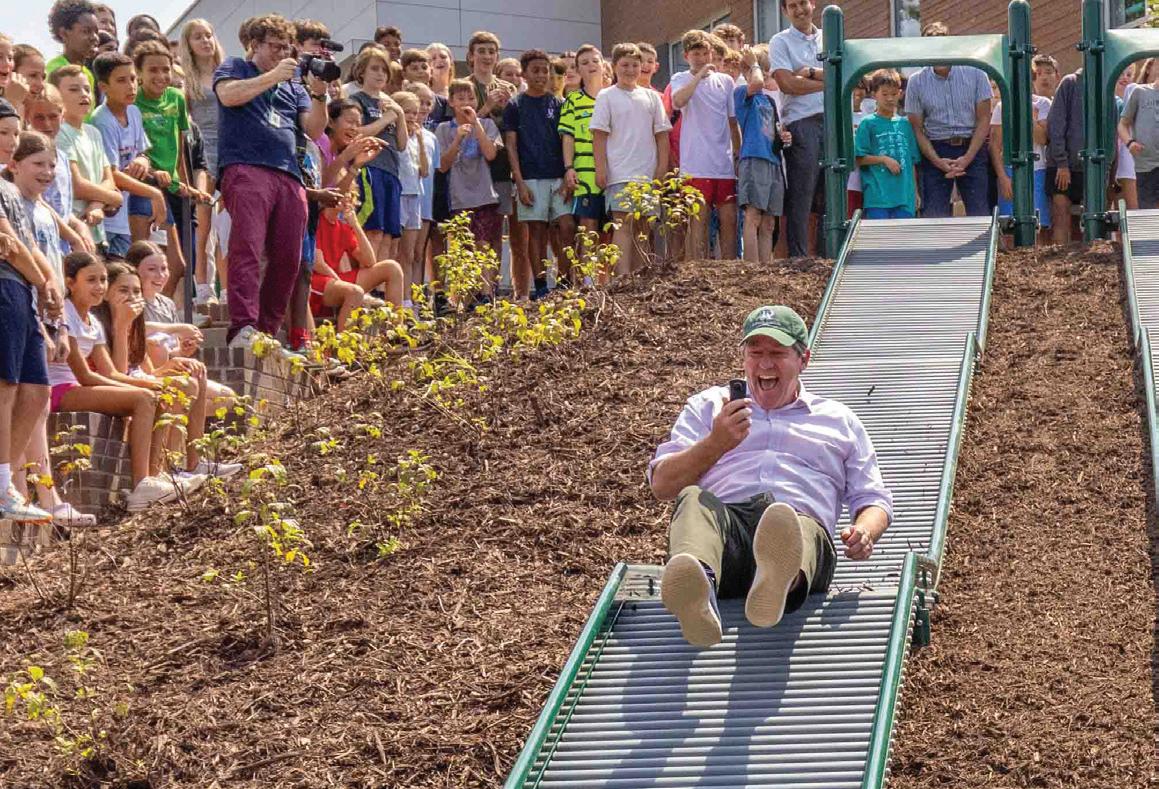
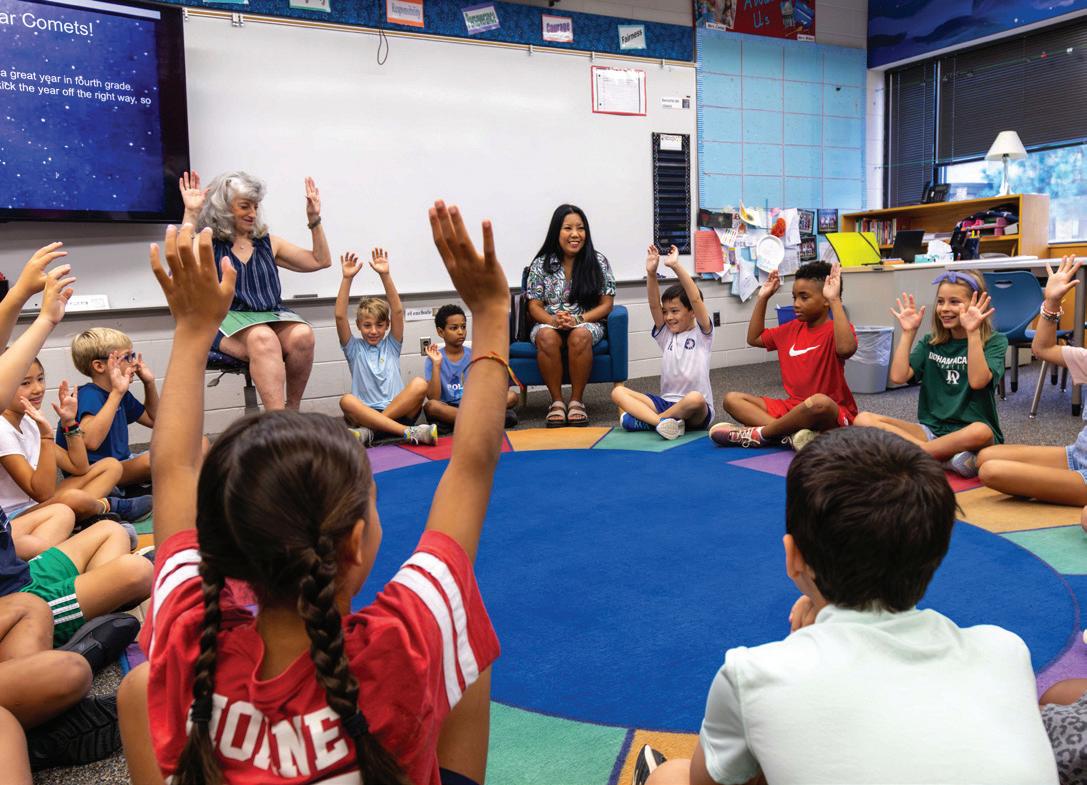


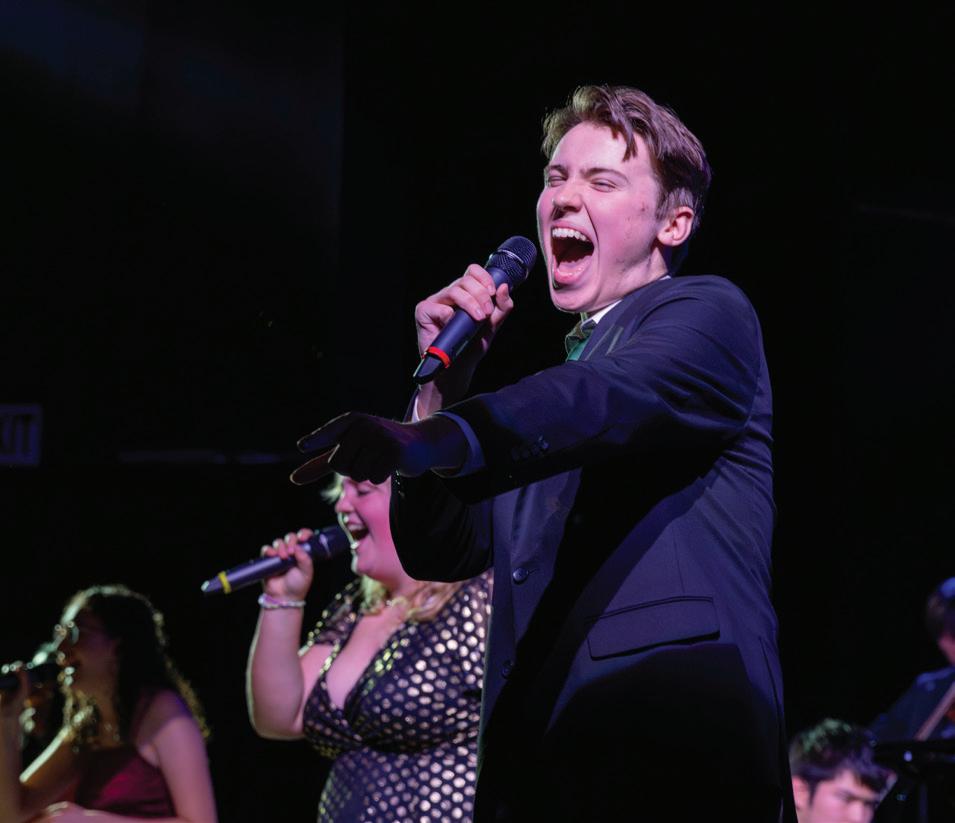
Lauren Powell, ex officio
• 2025–2026 DA Family Association President
• Former Product Development Director, Spoonflower
• Former DAFA Lower School Representative
• Lower and Middle School Parent
Dr. Julius Wilder
• Associate Professor of Gastroenterology, Associate Professor of Sociology and Member in the Duke Clinical Research Institute, Duke University School of Medicine
• Vice Chair of Culture, Engagement, and Community, Duke Department of Medicine
• Vice Chief of Culture, Engagement, and Community, Duke Division of Gastroenterology
• Co-Director for the Duke Community Engagement Research Initiative
• DA Diversity, Equity and Engagement Committee
• Lower and Middle School Parent
Anna Wilson
• Executive in Residence, Duke University’s Pratt School of Engineering

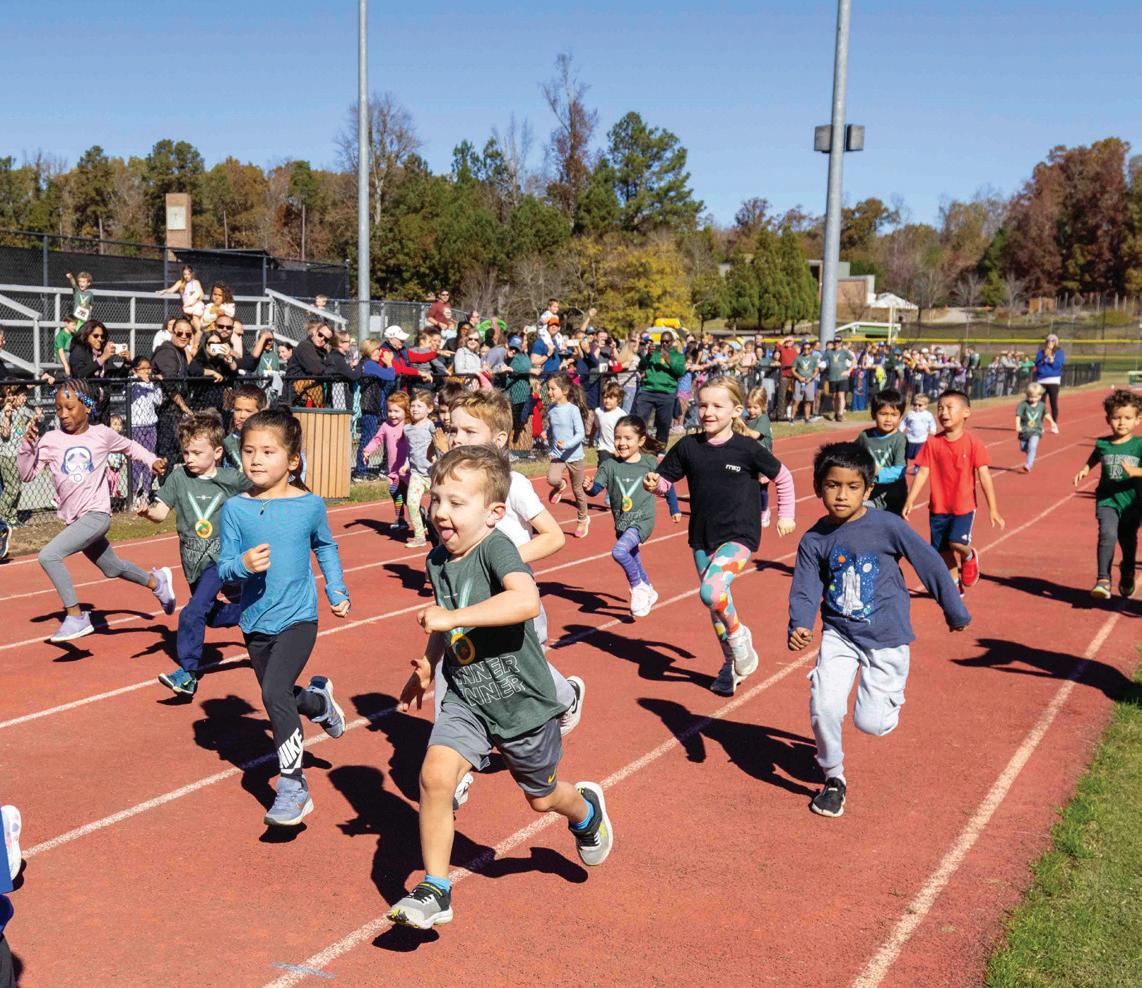
• Adjunct Assistant Professor, Duke University’s Christensen Family Center for Innovation
• Former Director of Global Talent Management, DoorDash
• Former Senior Director of Strategy, Pandora
• Former Senior Director of Strategy, Google
• Nonprofit founder
• DA Diversity, Equity and Engagement Committee
• Lower School Parent
Learn about each member of the DA Board of Trustees at da.org/leadership.
3601 Ridge Road
Durham, NC 27705-5599

Upper Schoolers embarked on adventures near and far with Cavalier Capstones in May, from an expedition to assist continued hurricane recovery efforts in Western North Carolina, to an archaeology experience in Tuscany, to local explorations of woodworking and Durham’s history of social justice. Photographed here is Grand Teton National Park, where students visited the Colter Bay and Jenny Lake visitors centers — hubs for exhibits like “Made by Hand,” featuring works by Indigenous artists, and the Crandall Studio, an historic photography studio that highlights the role of art in the conservation of the Teton Range.